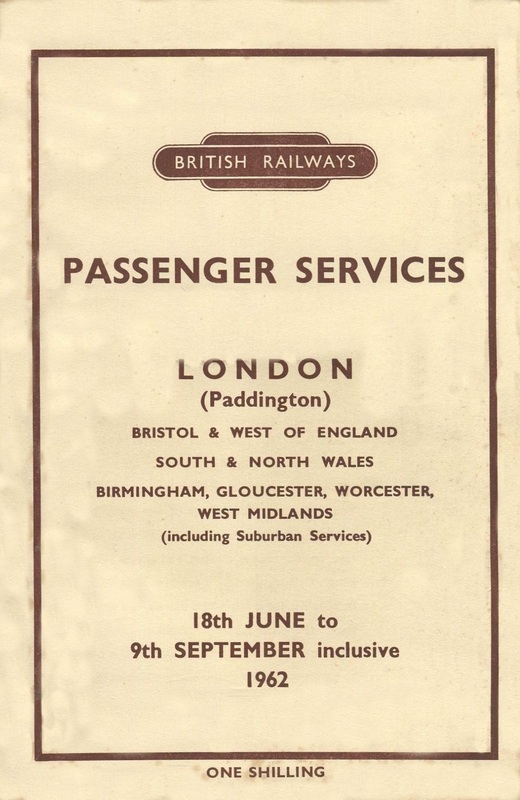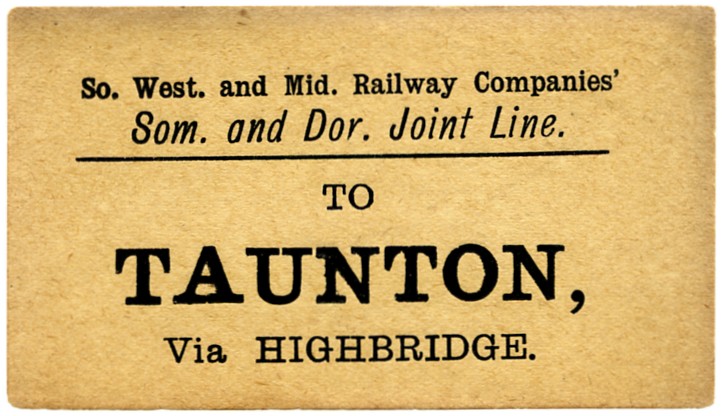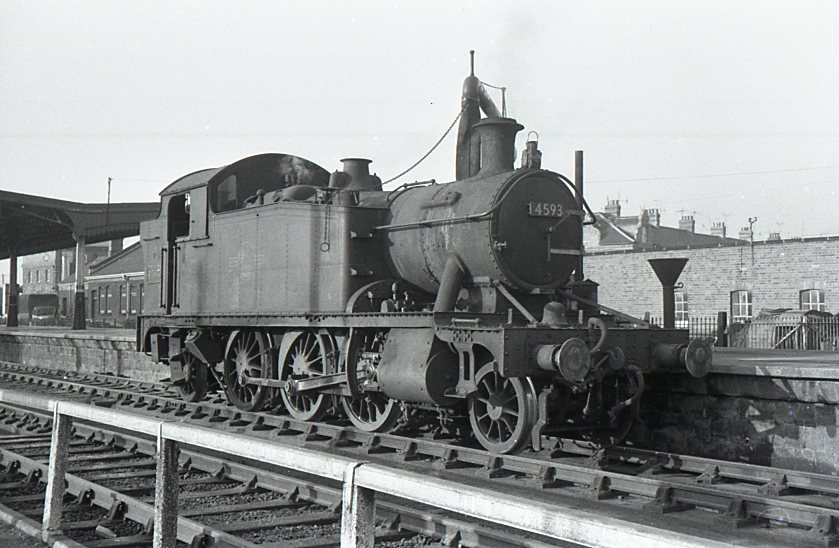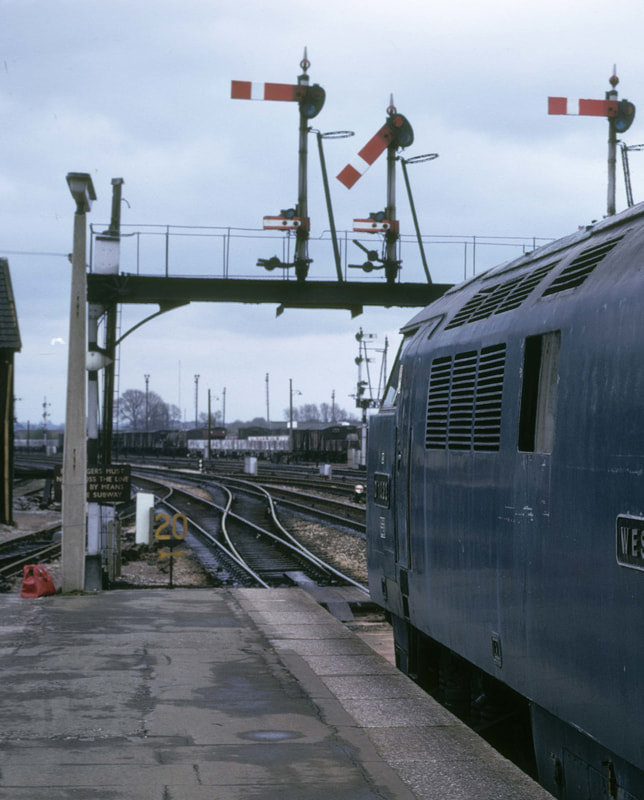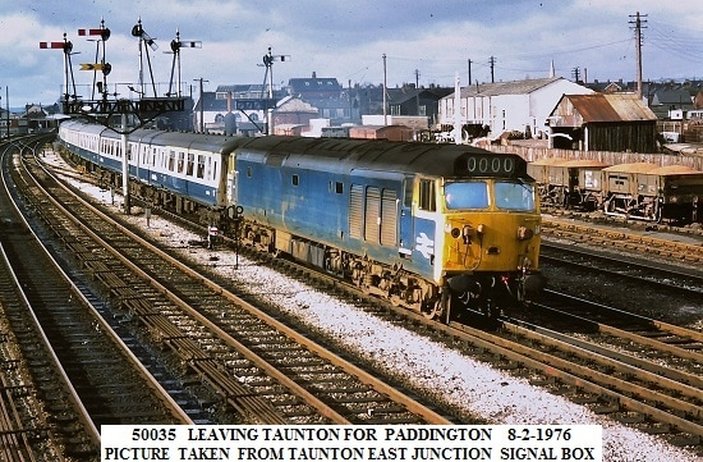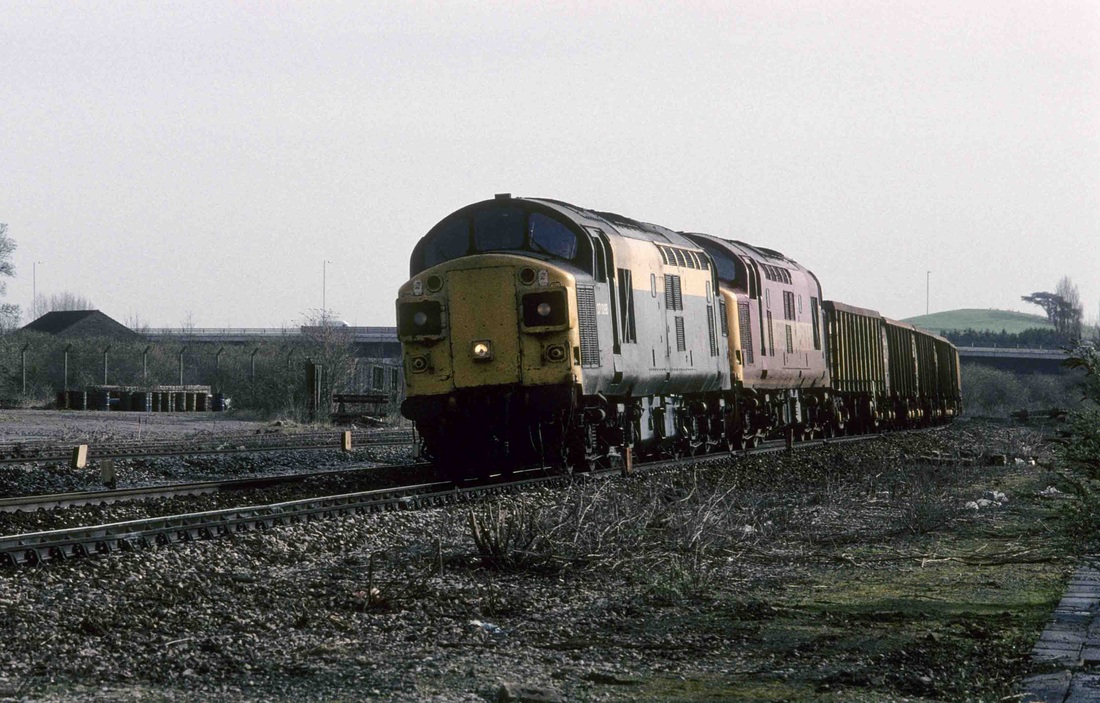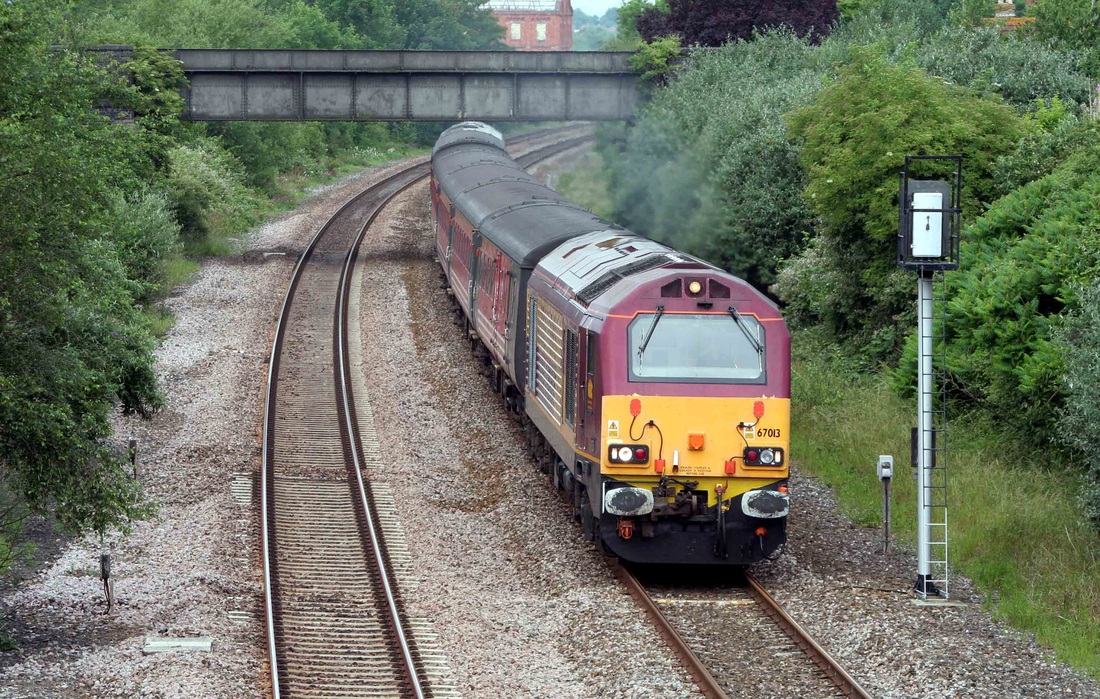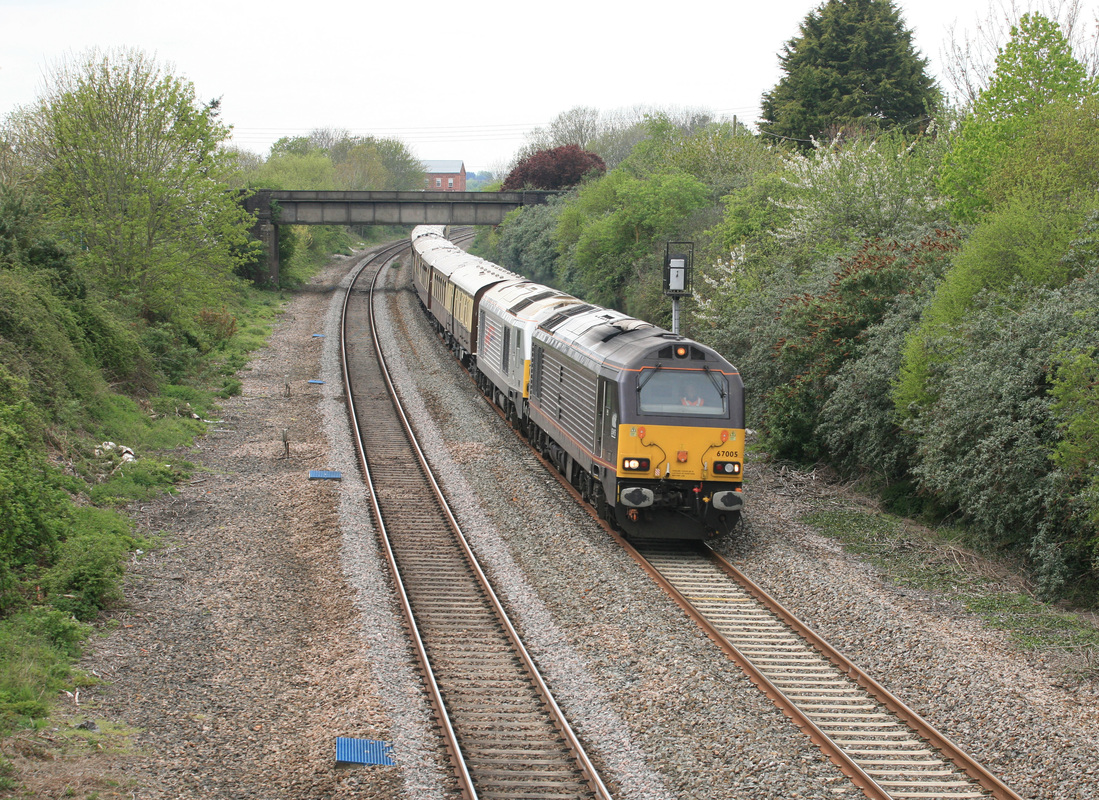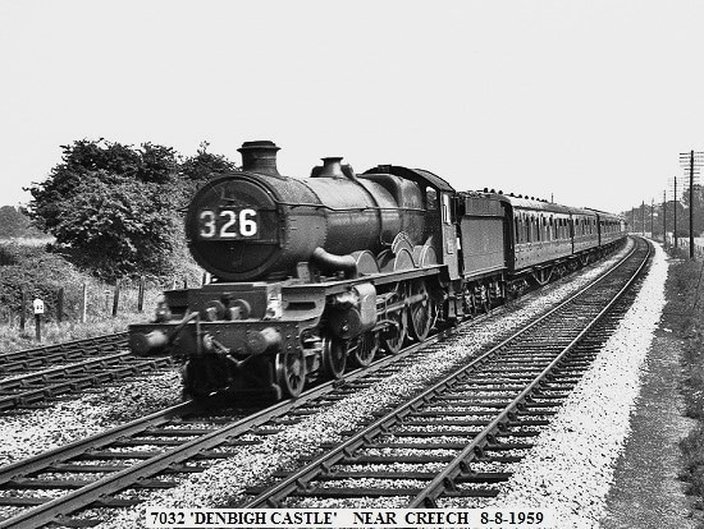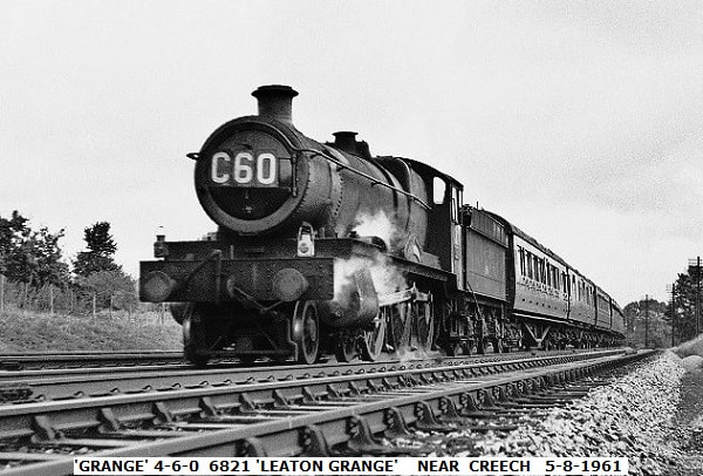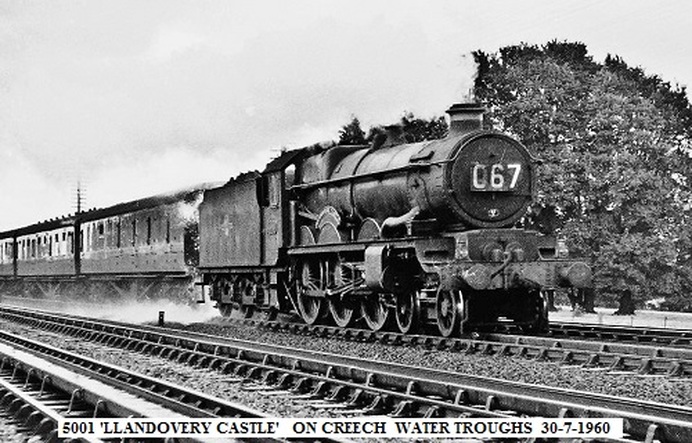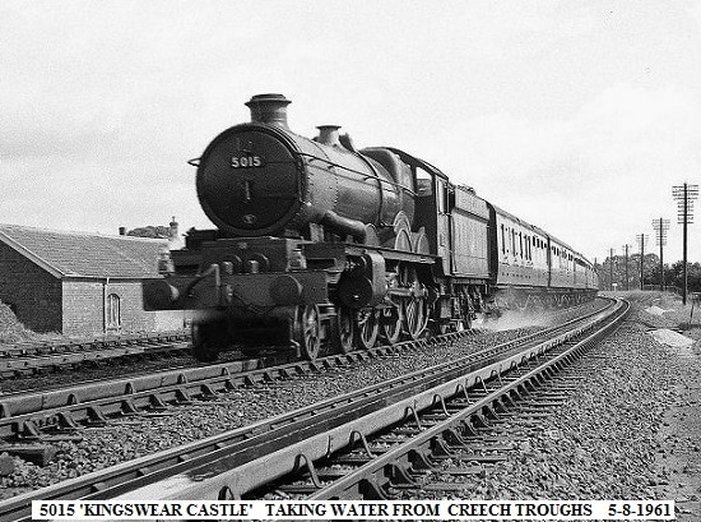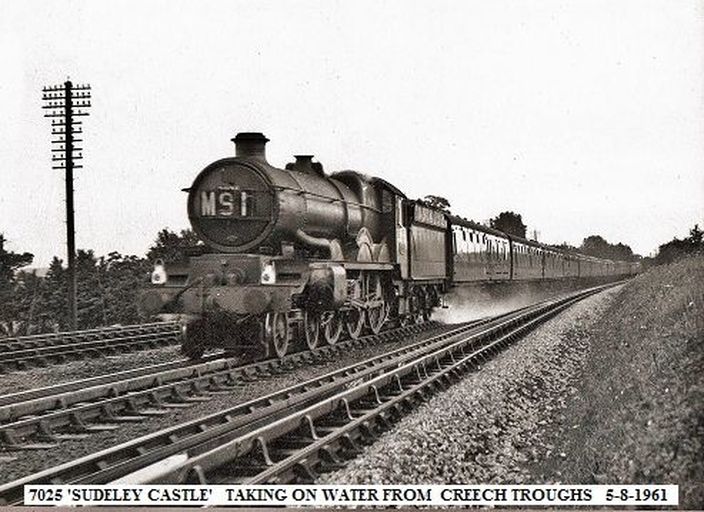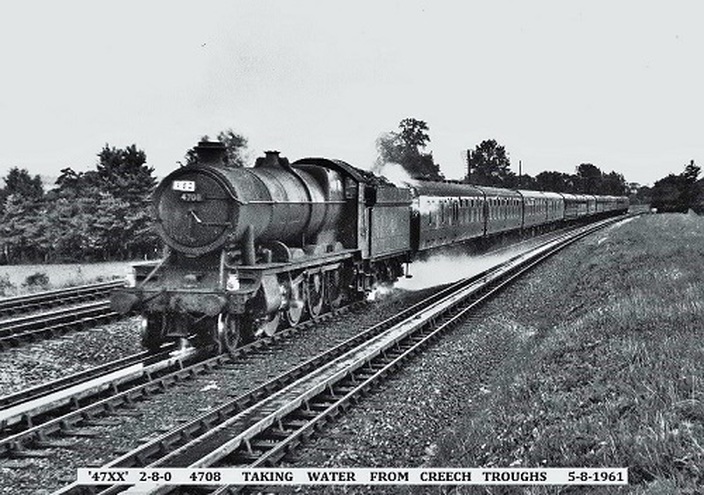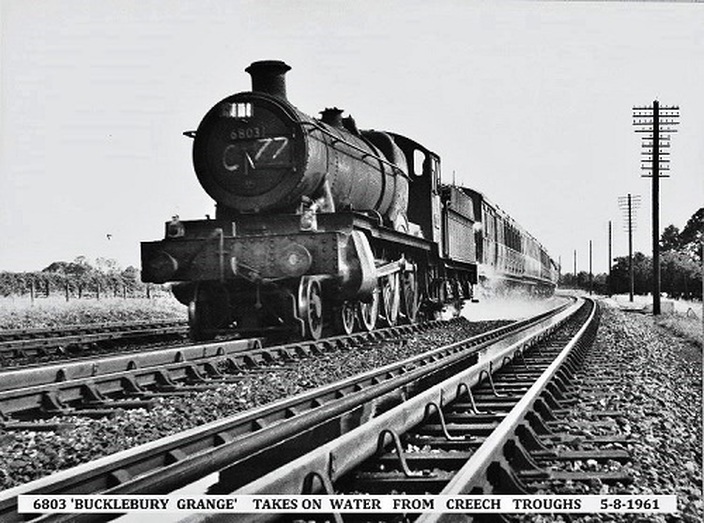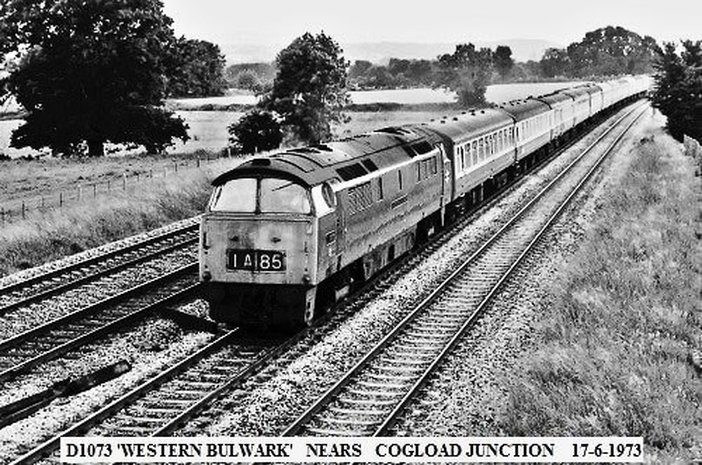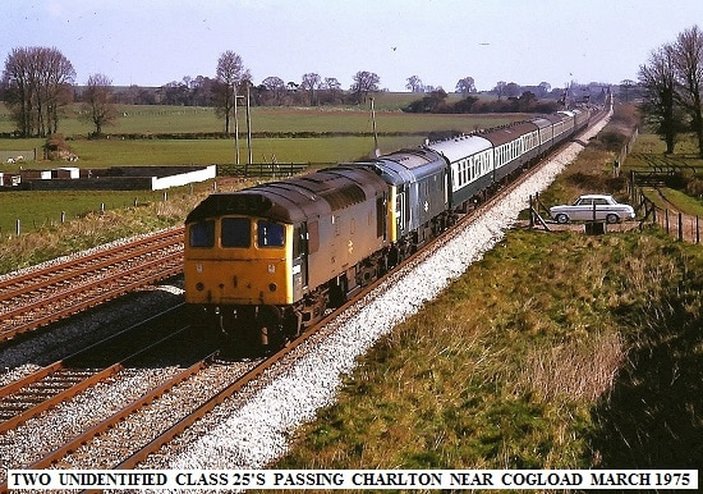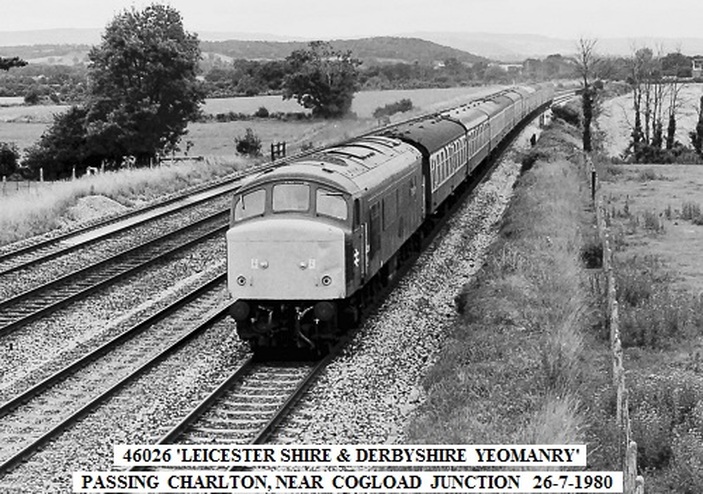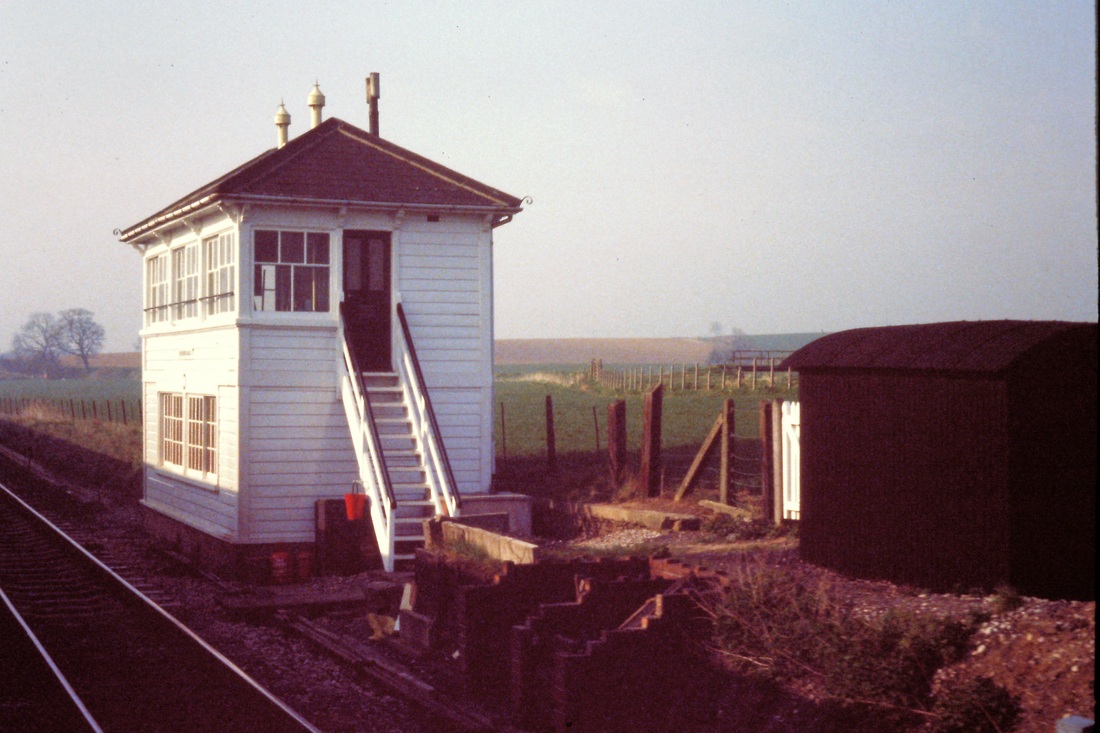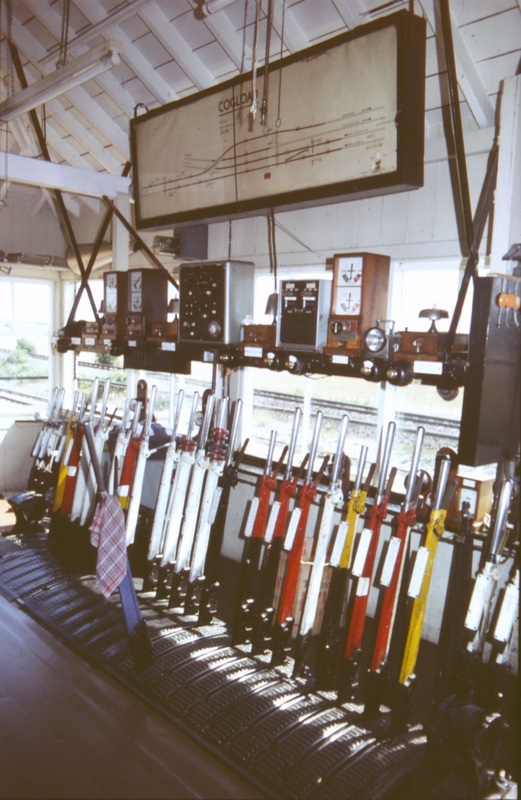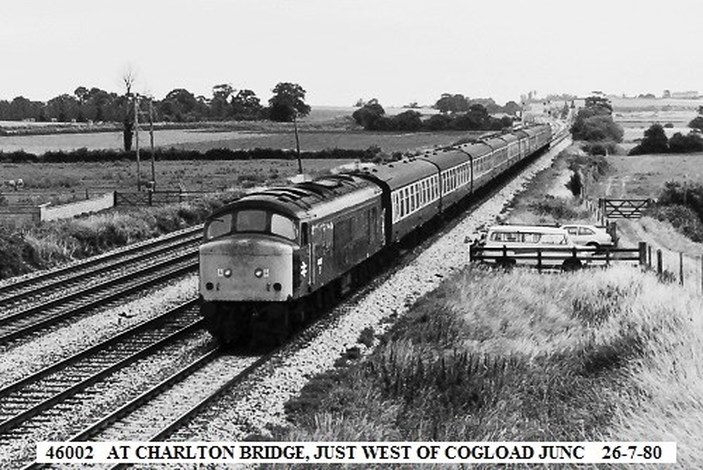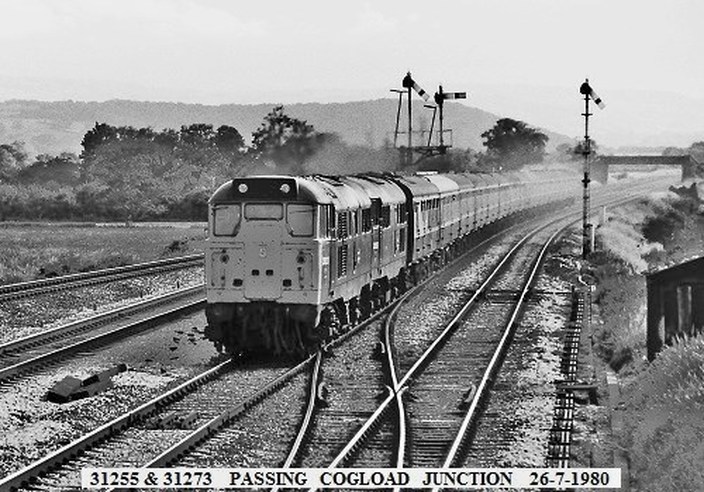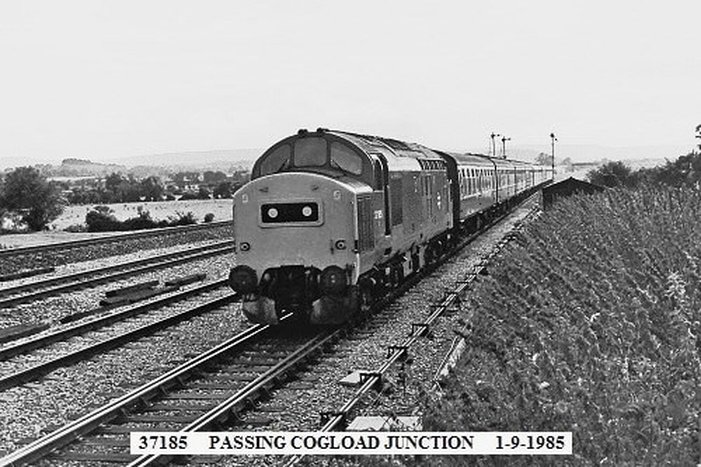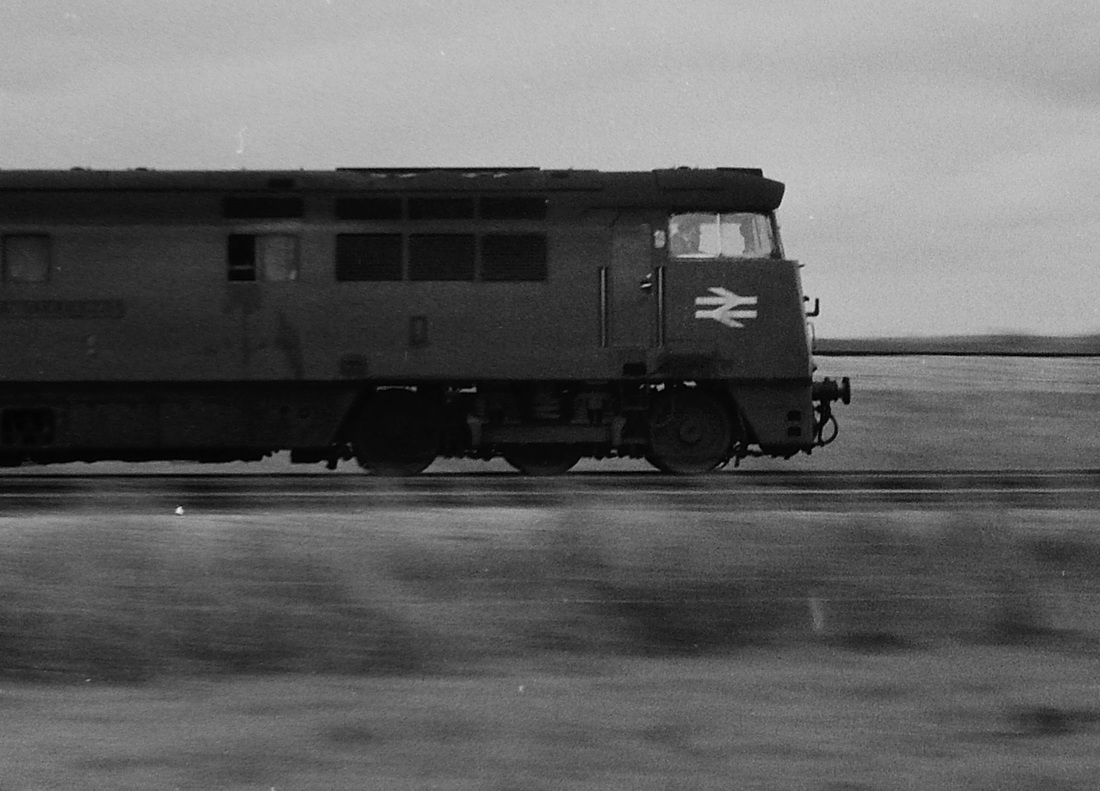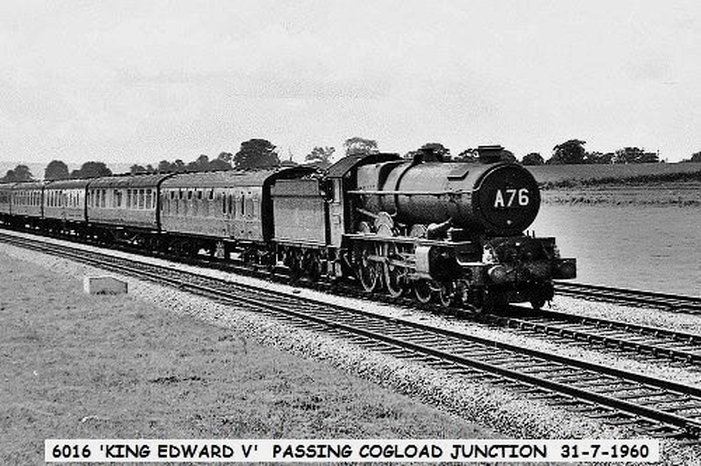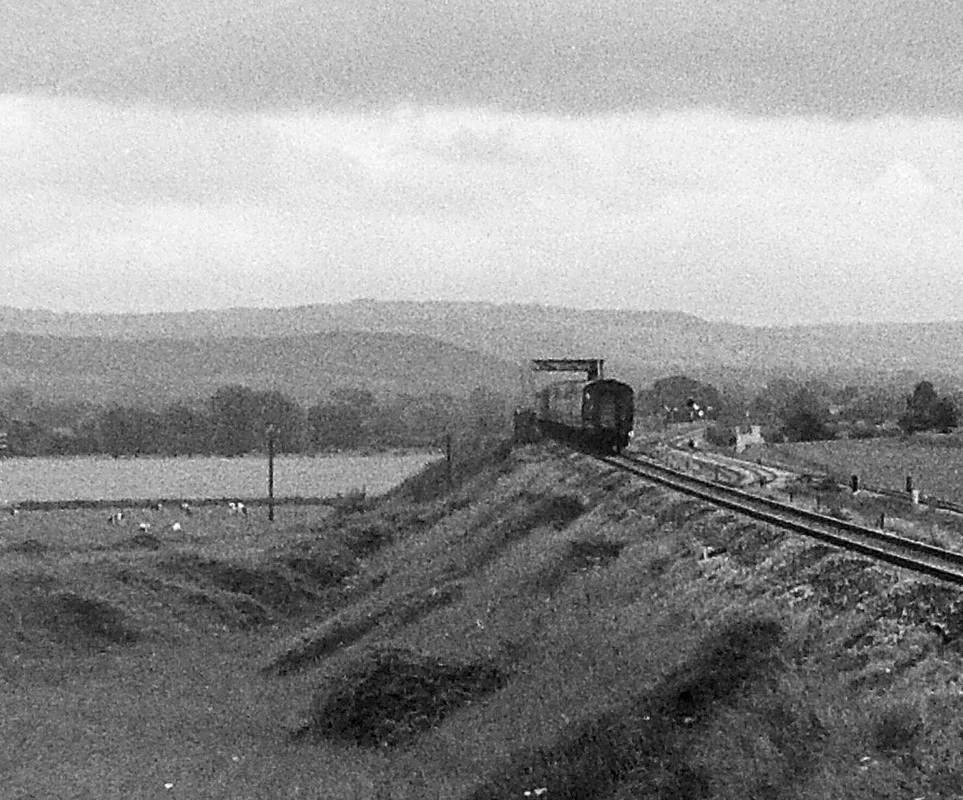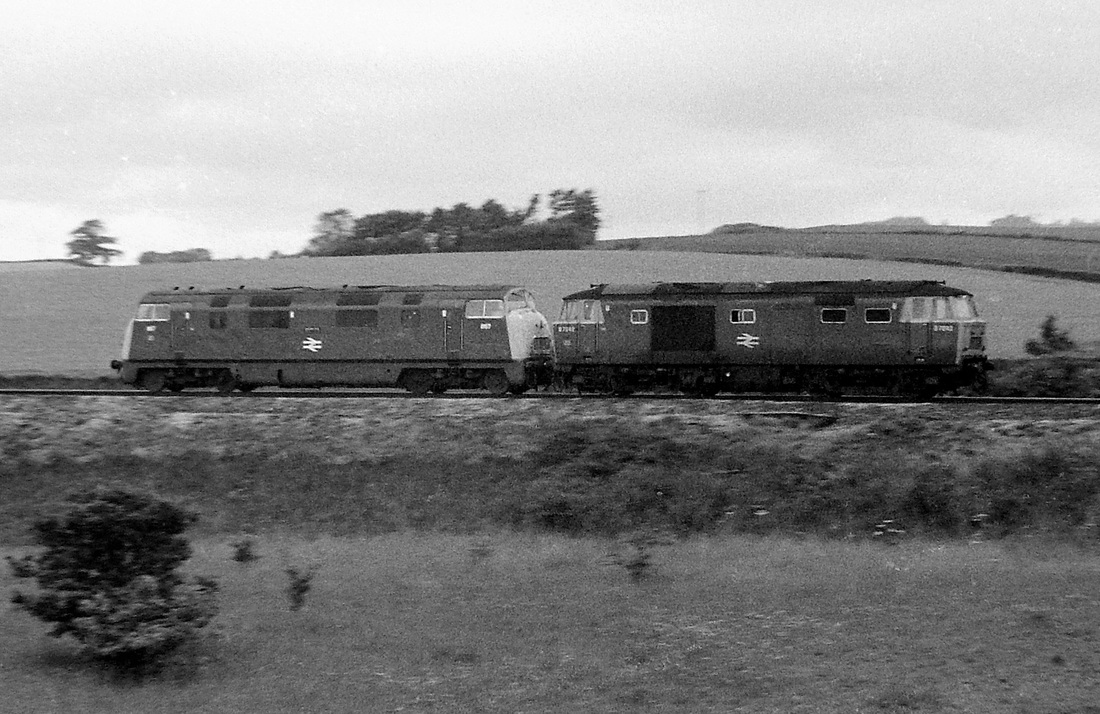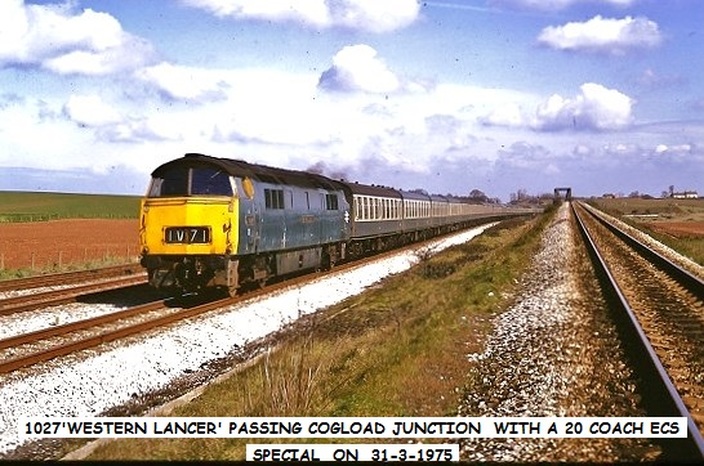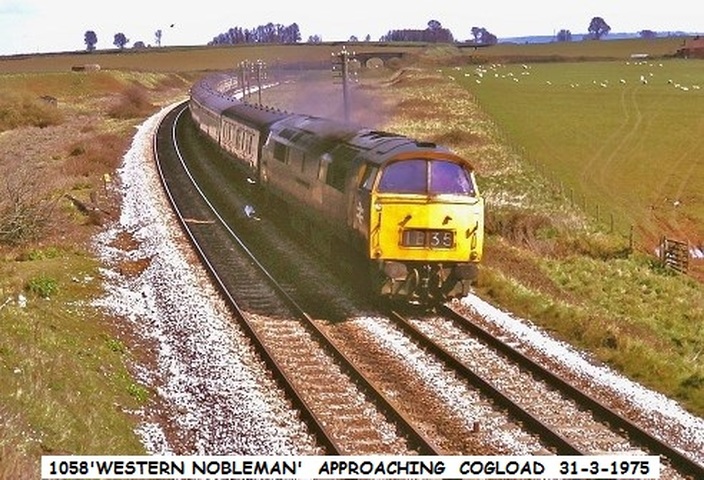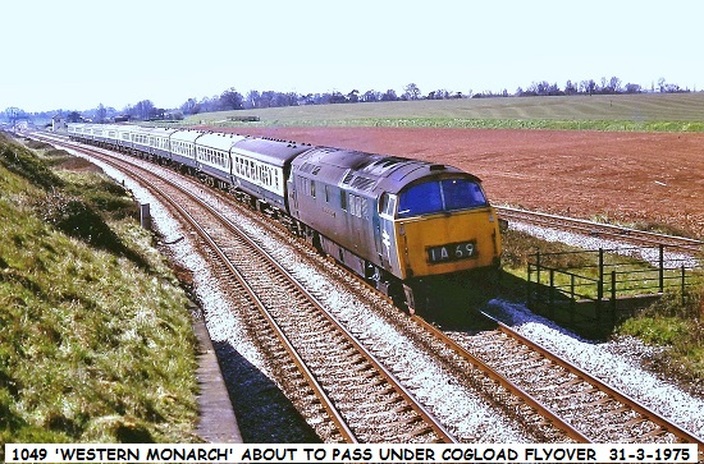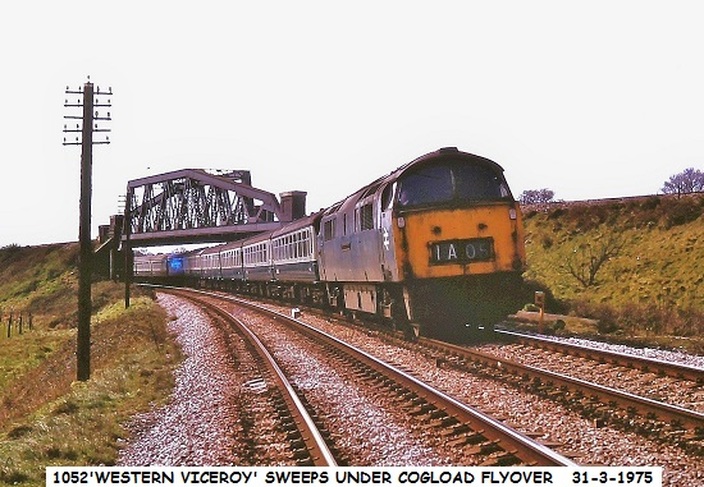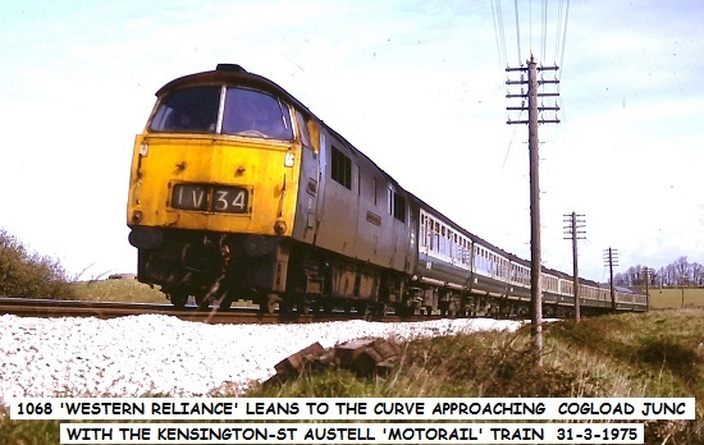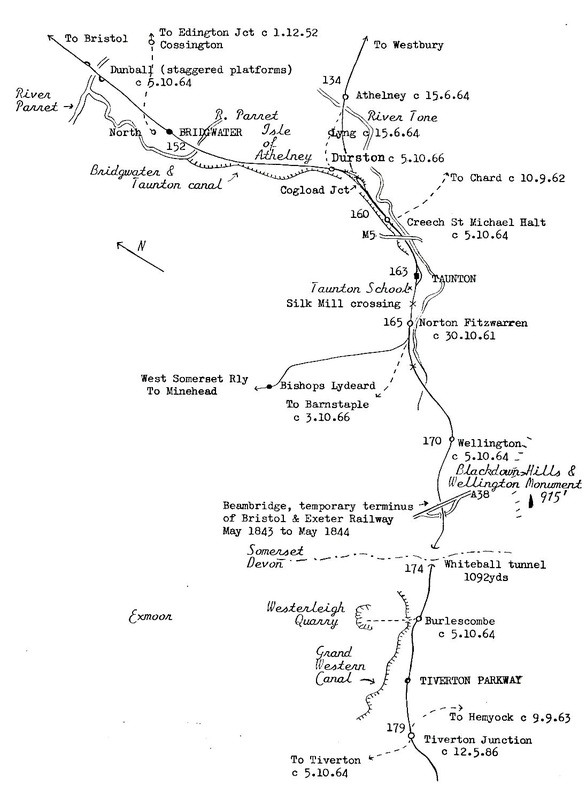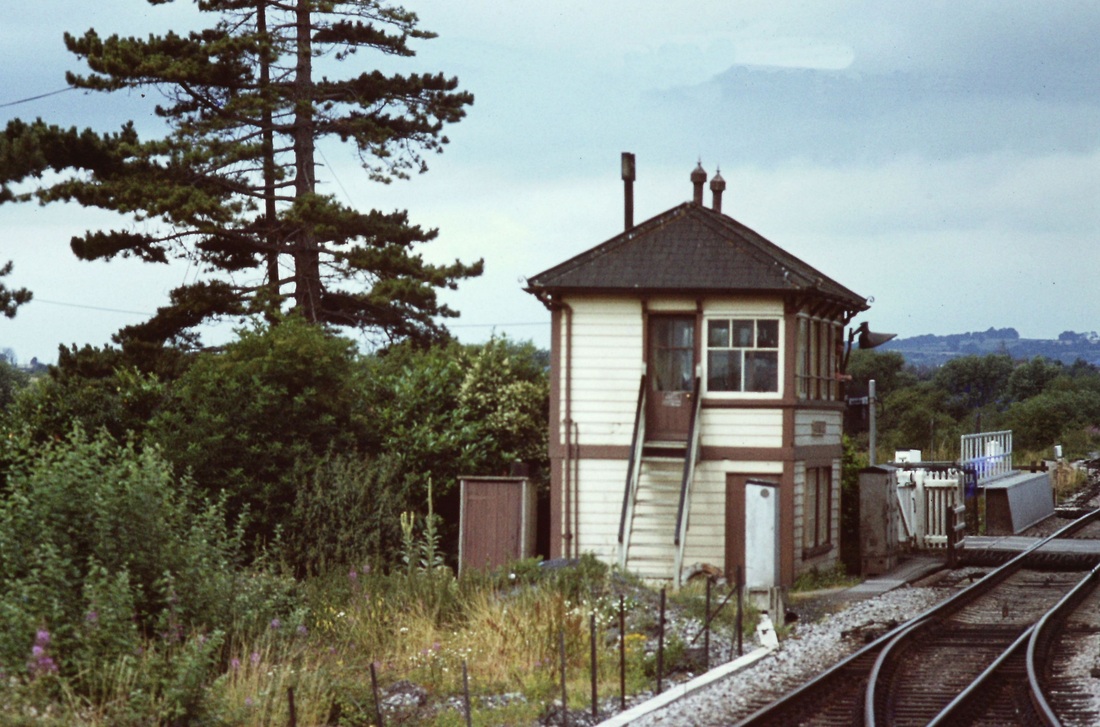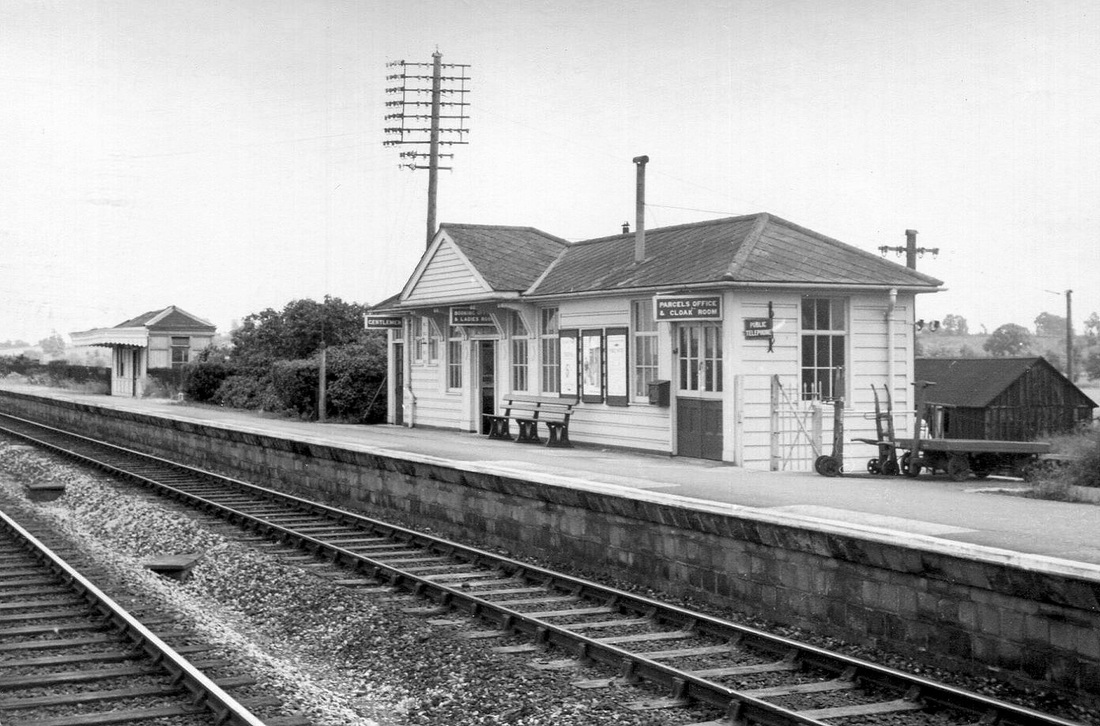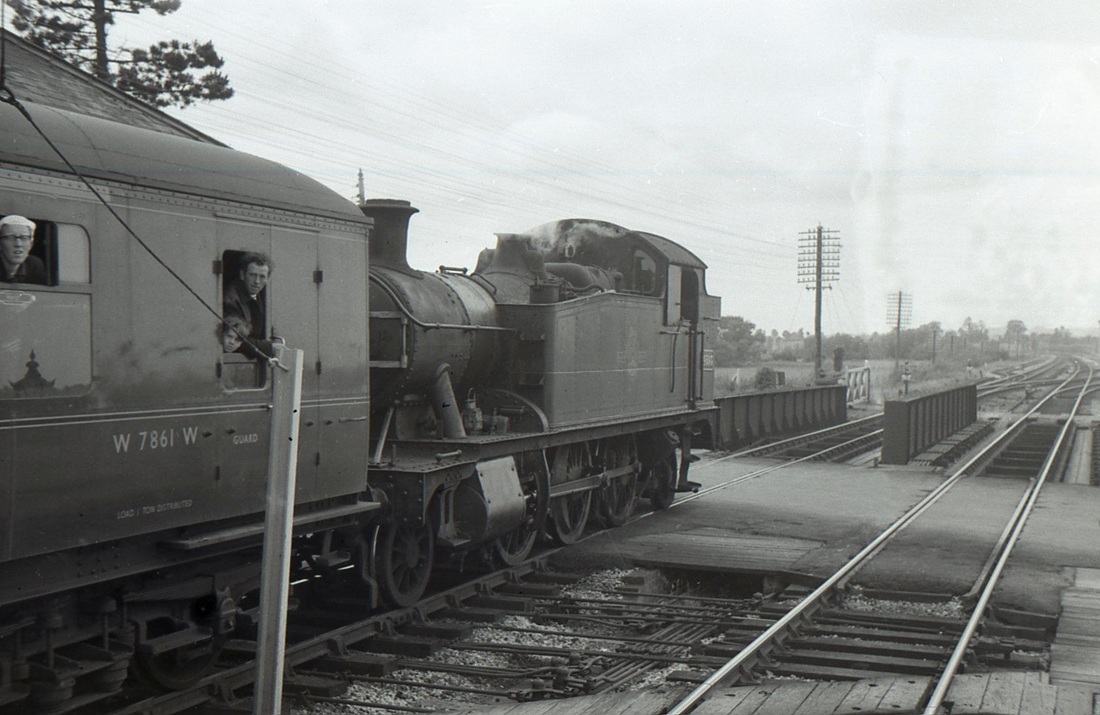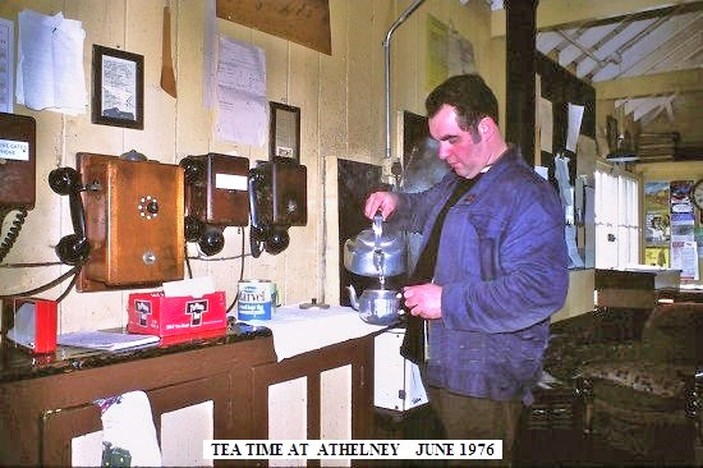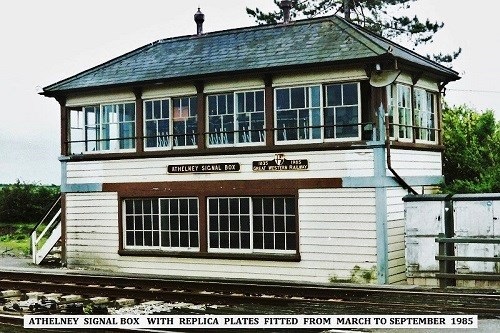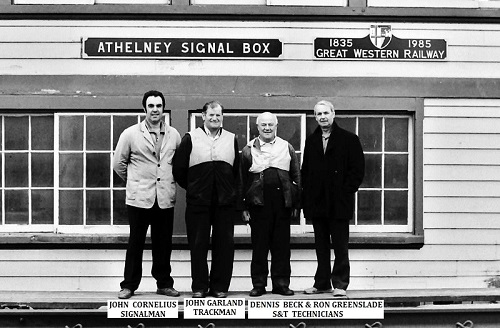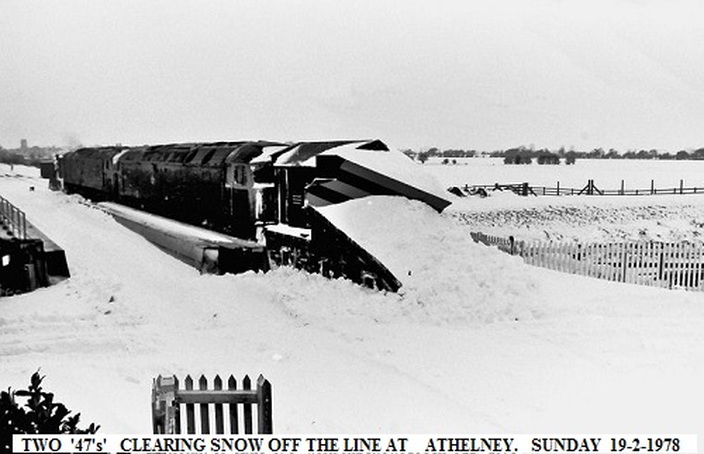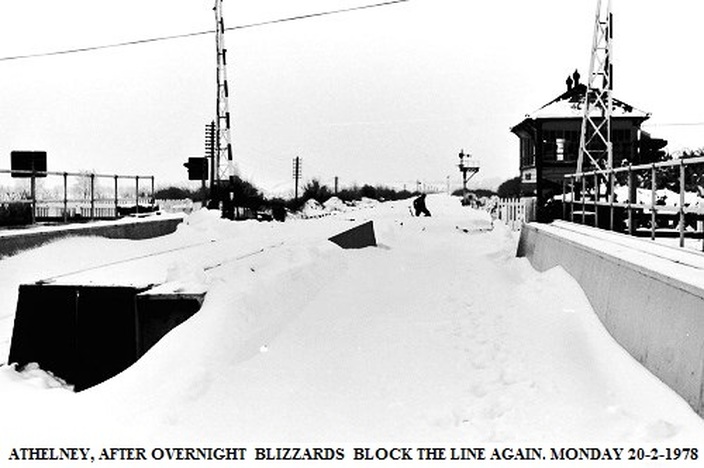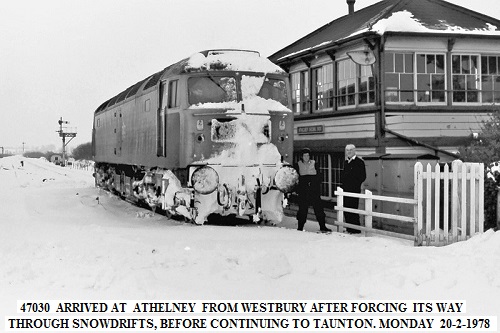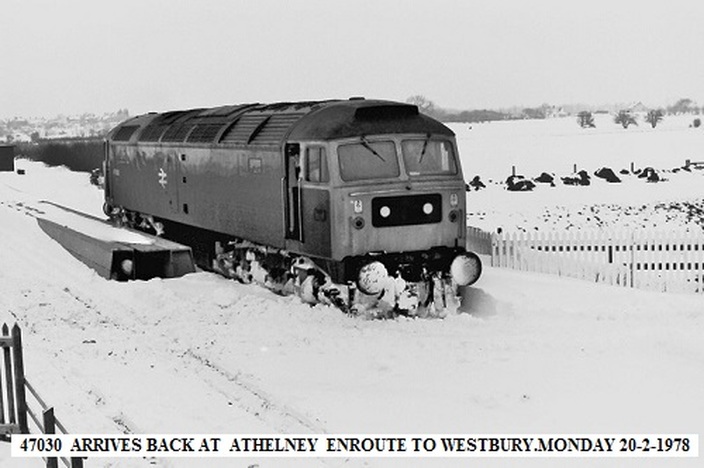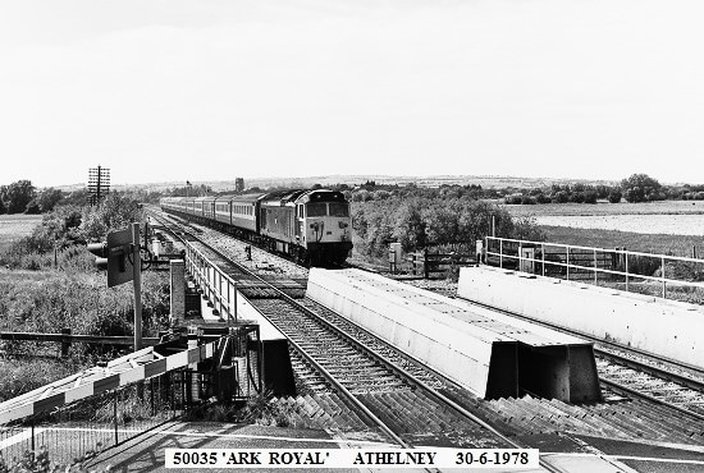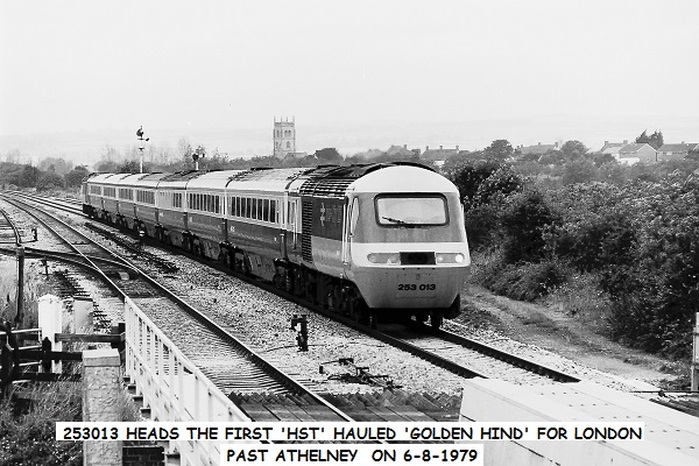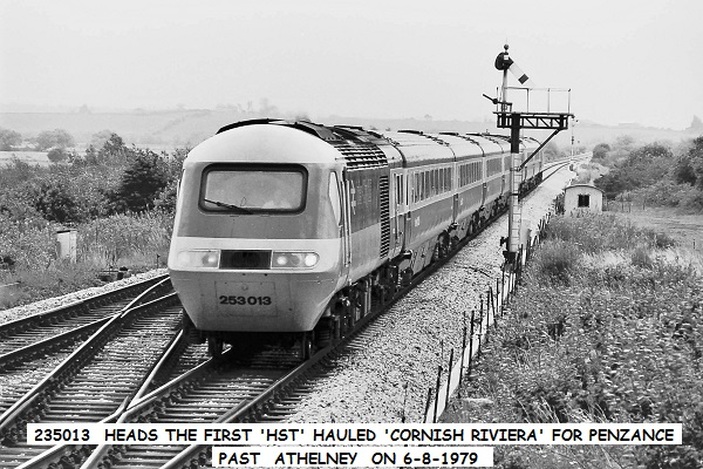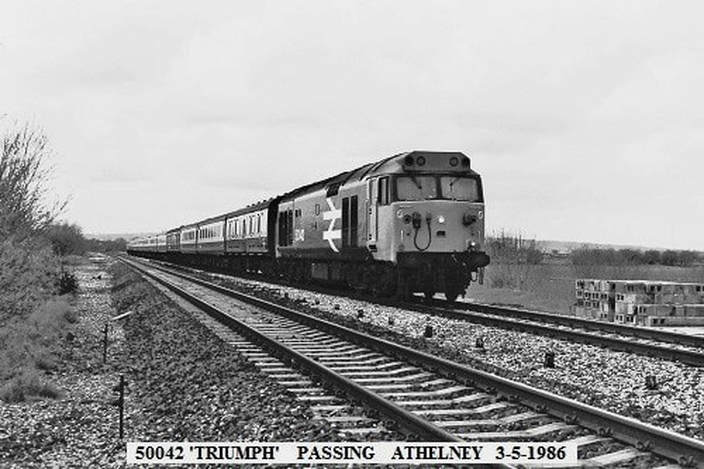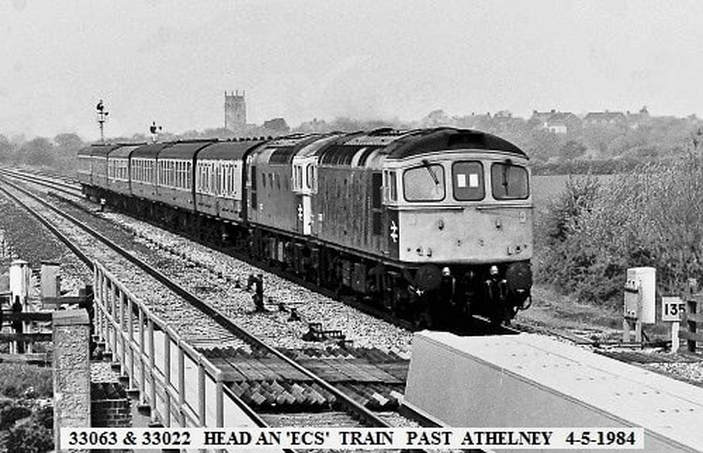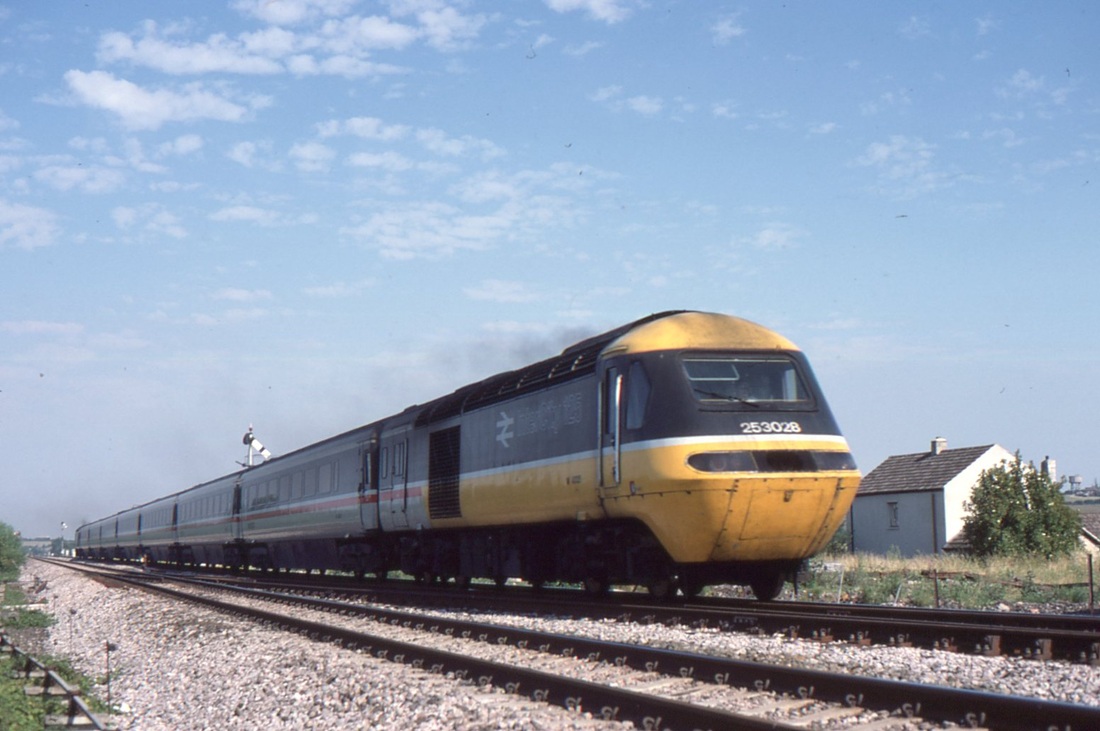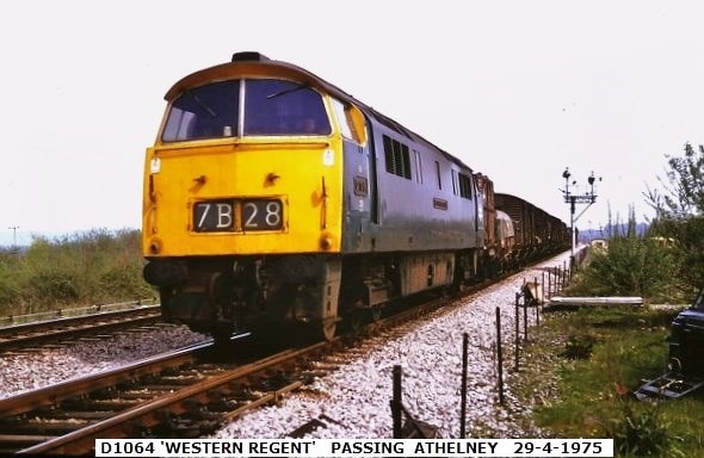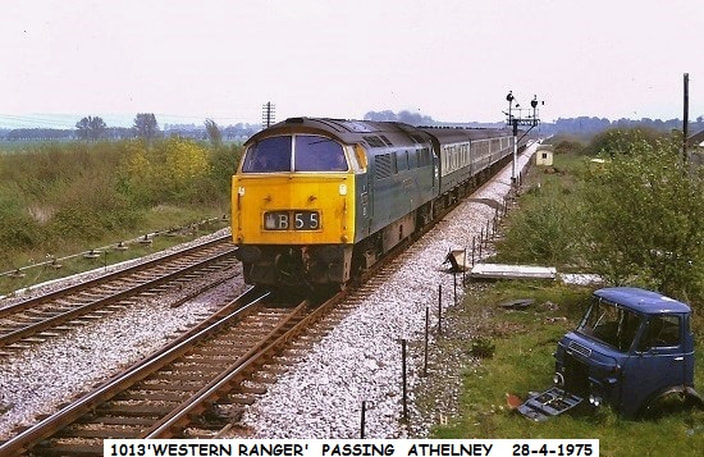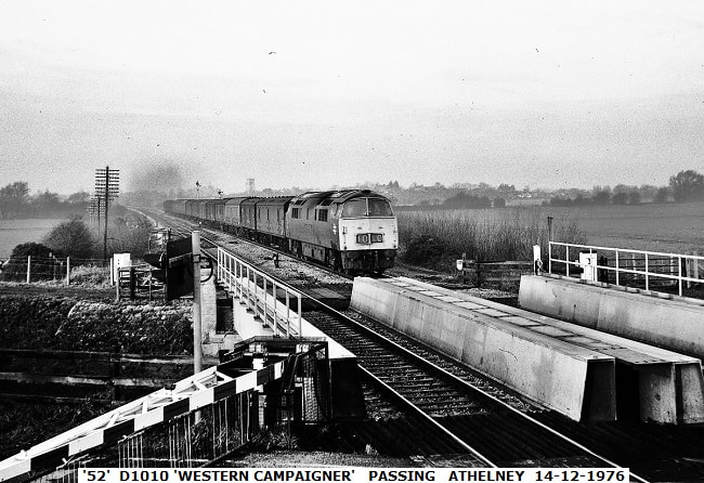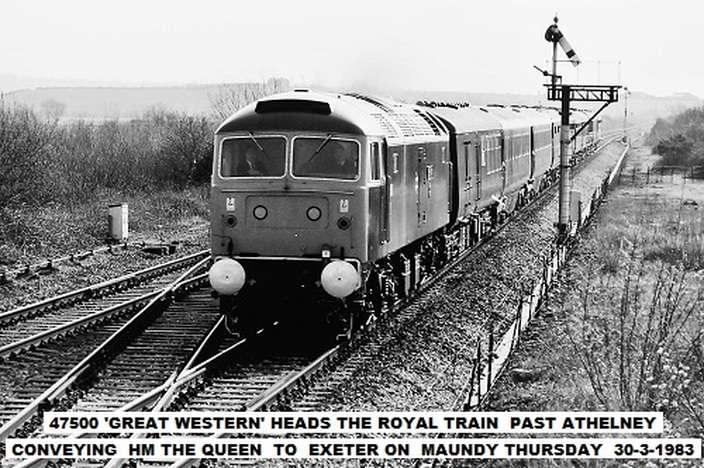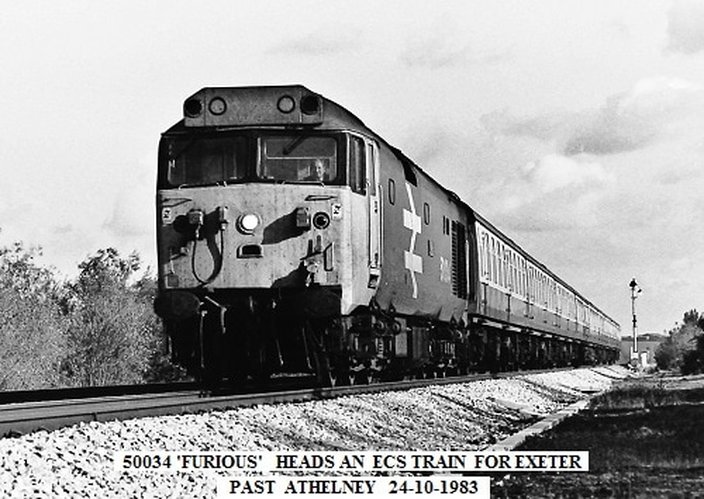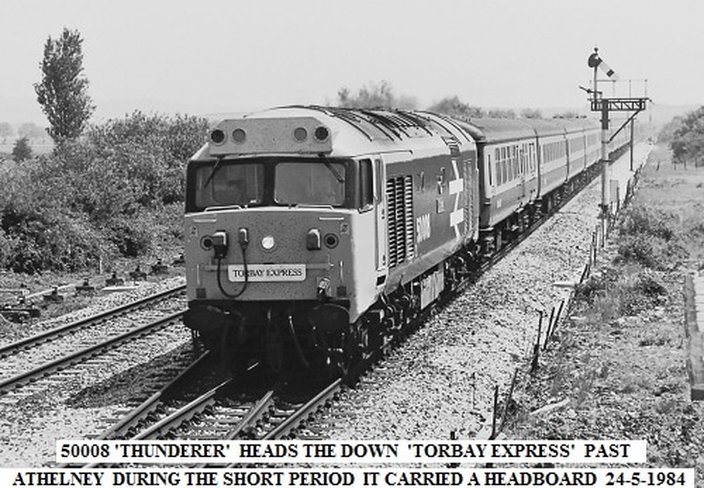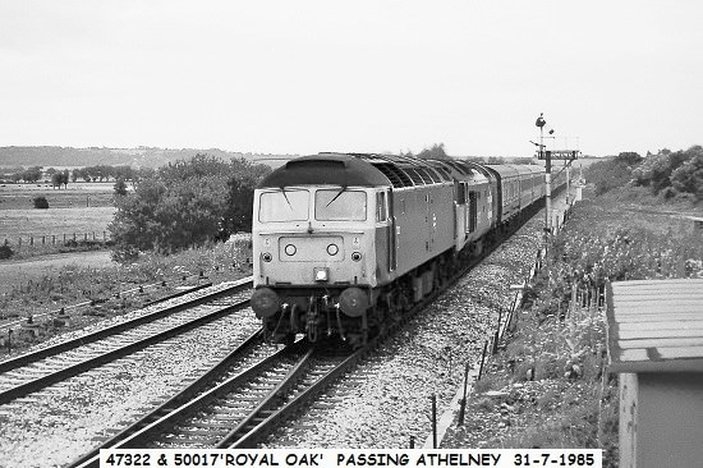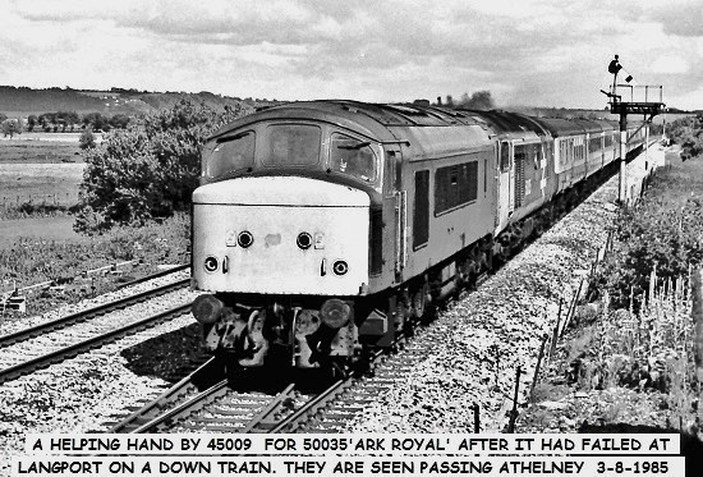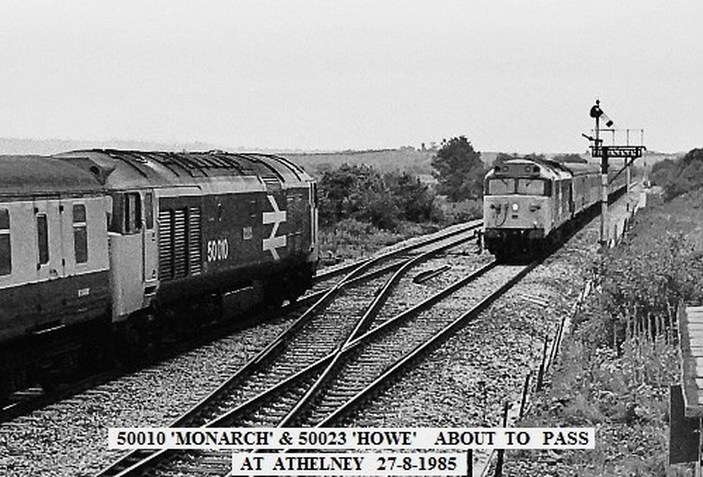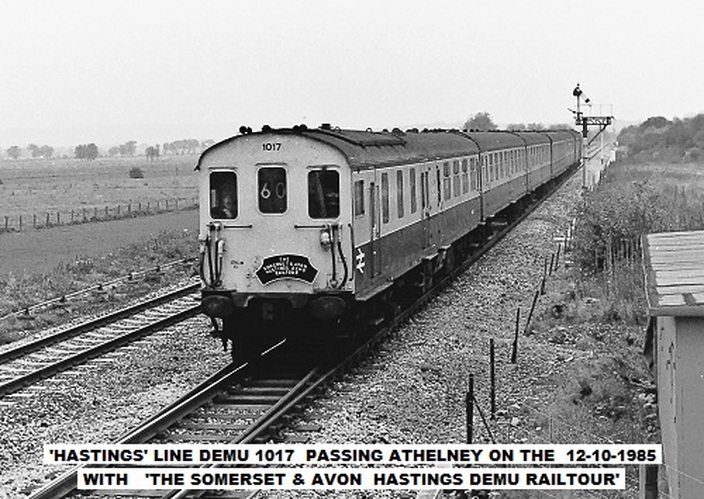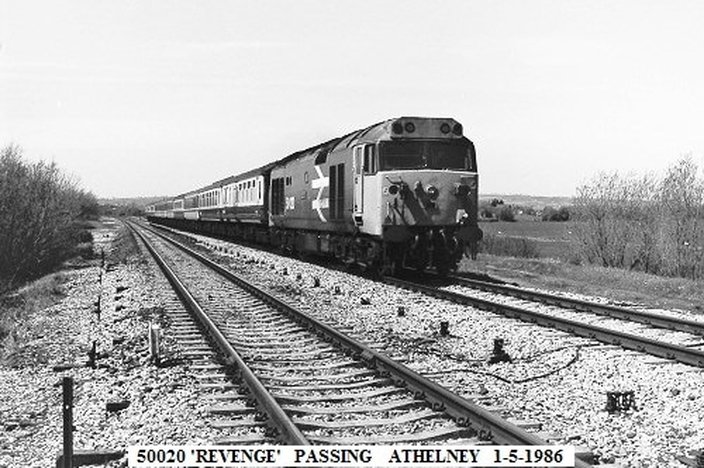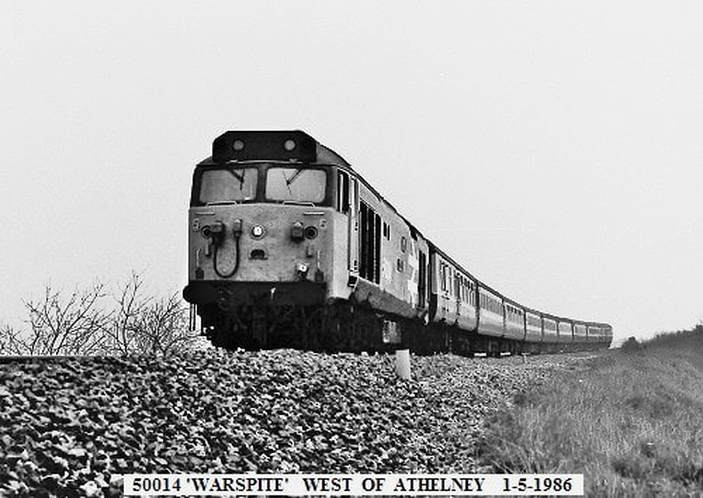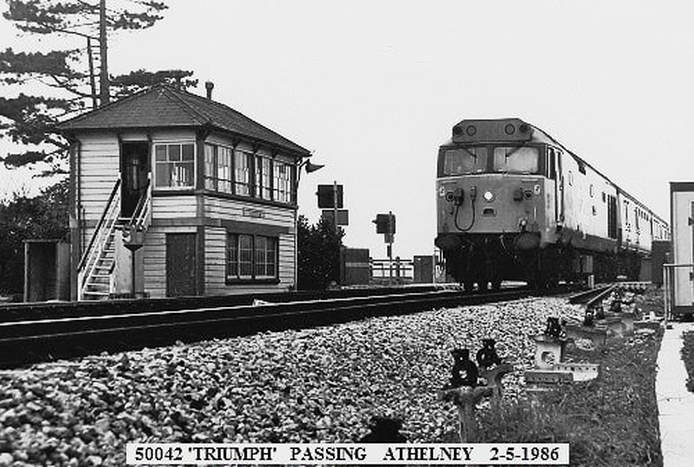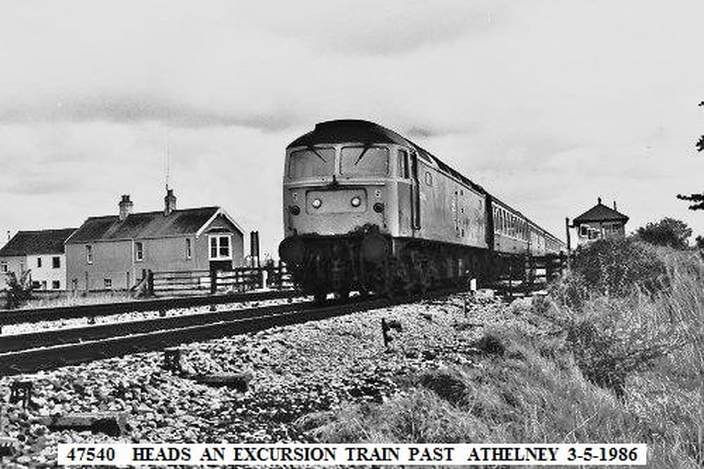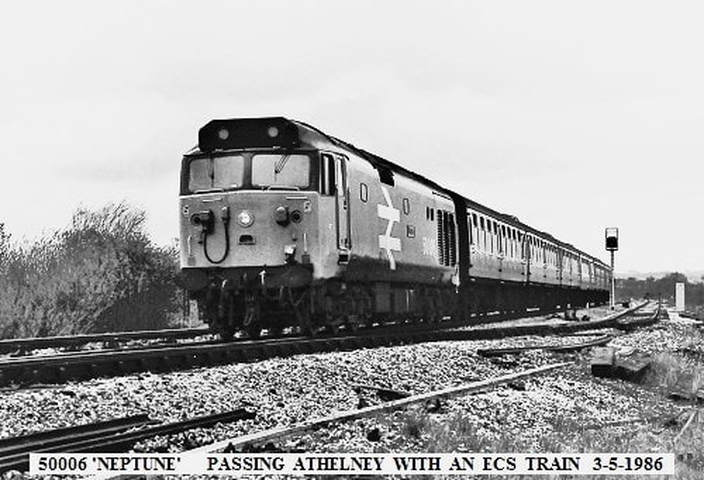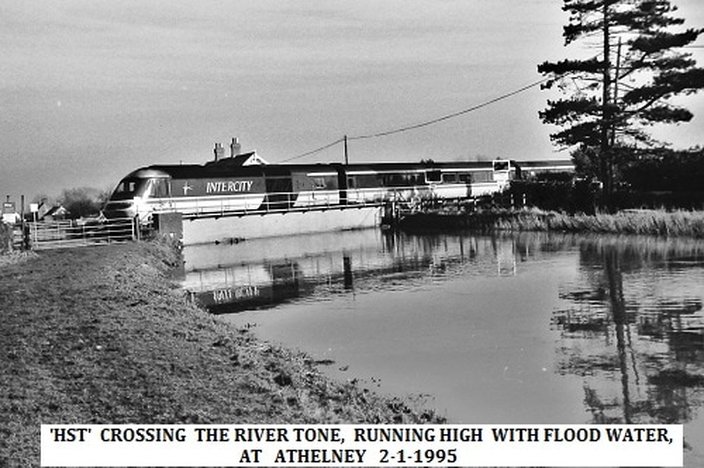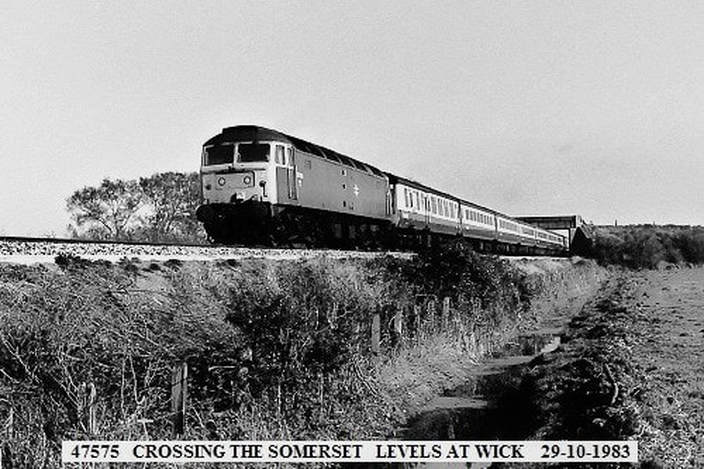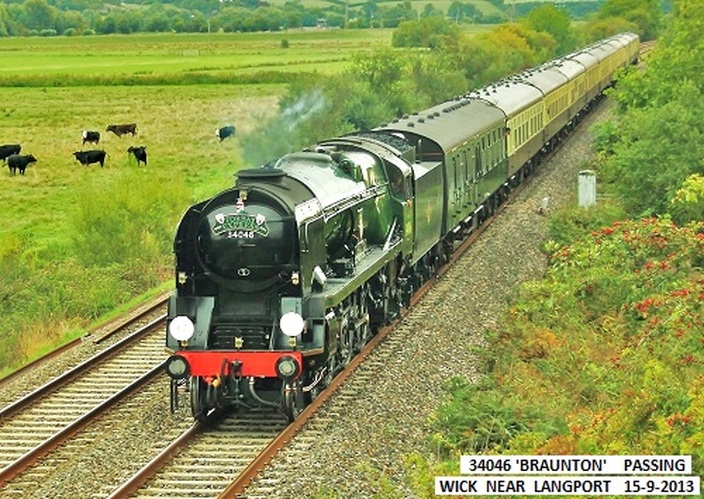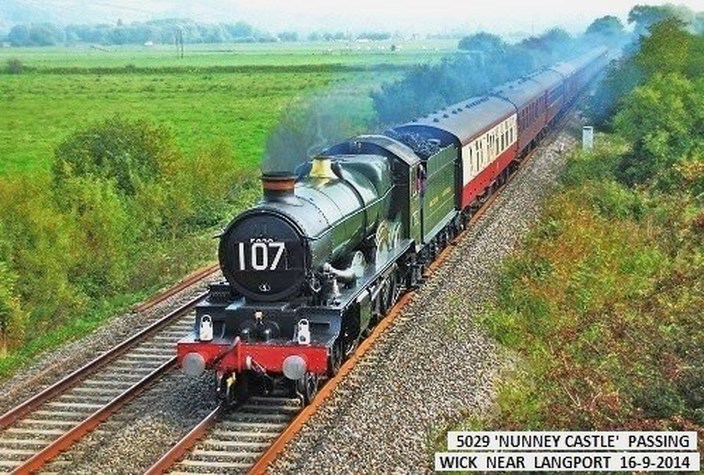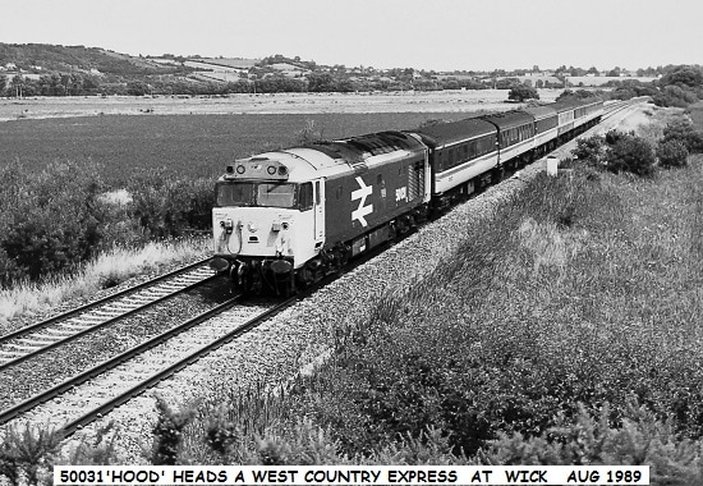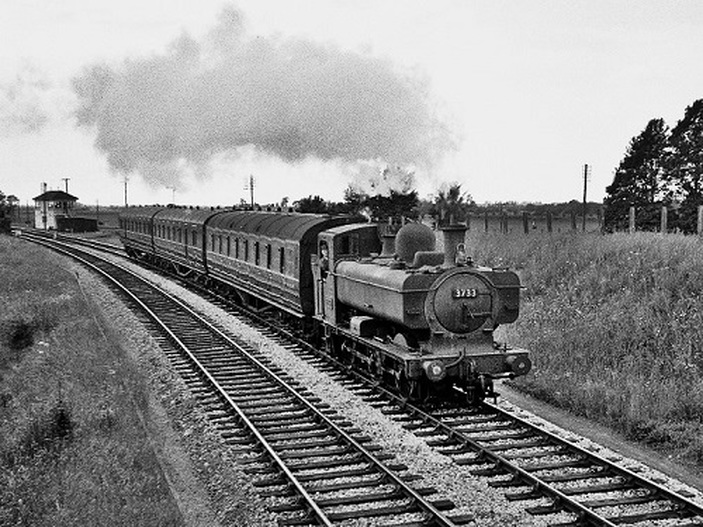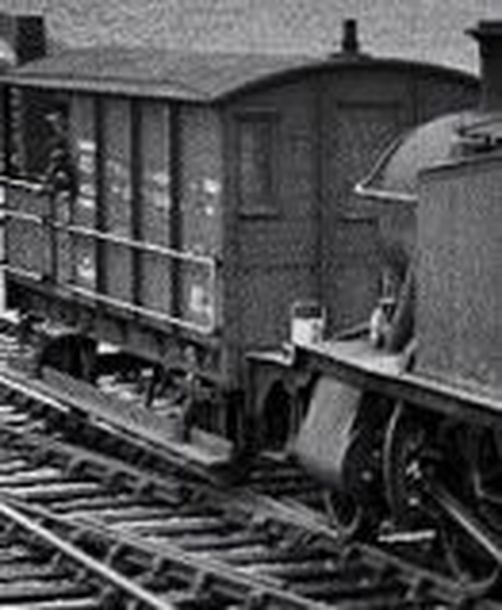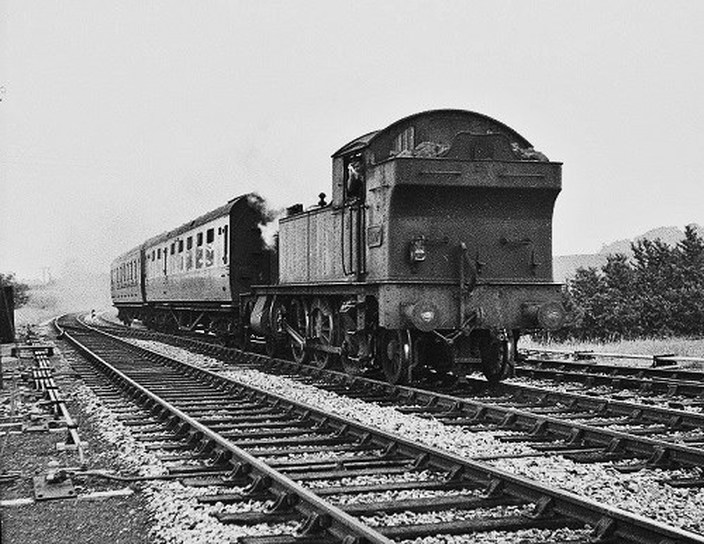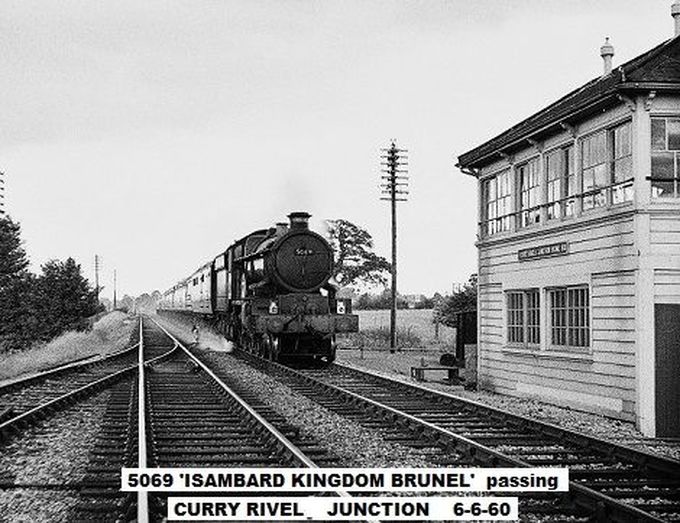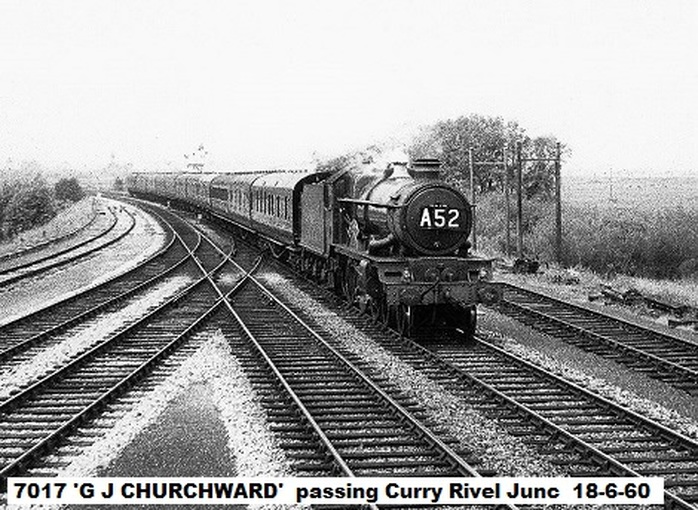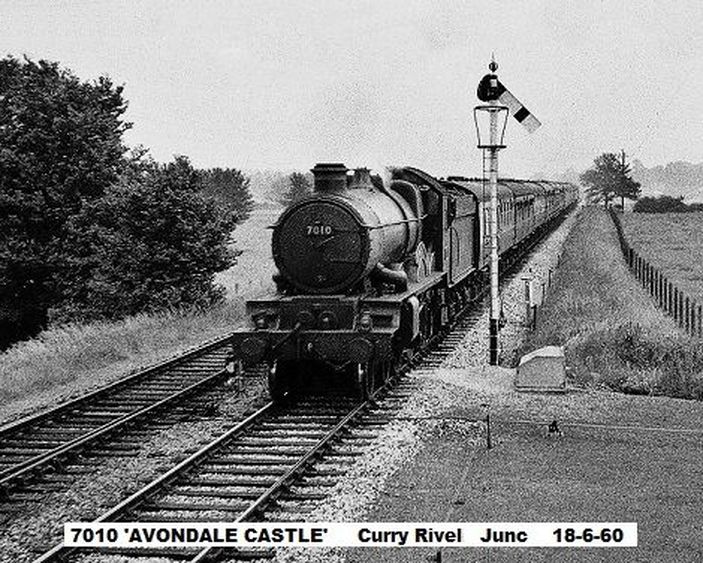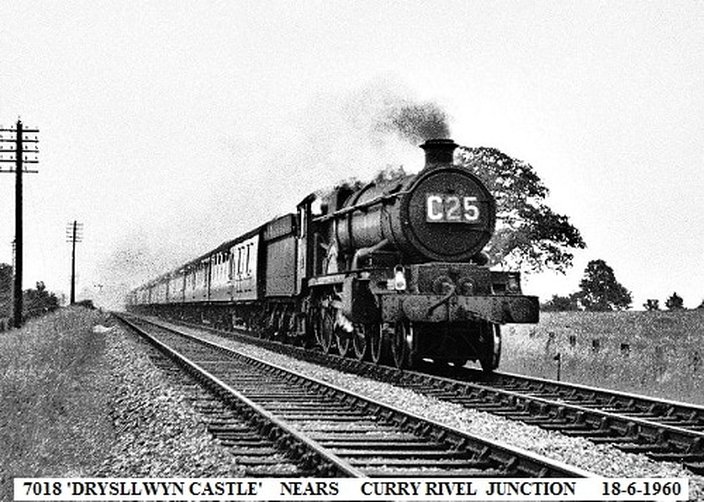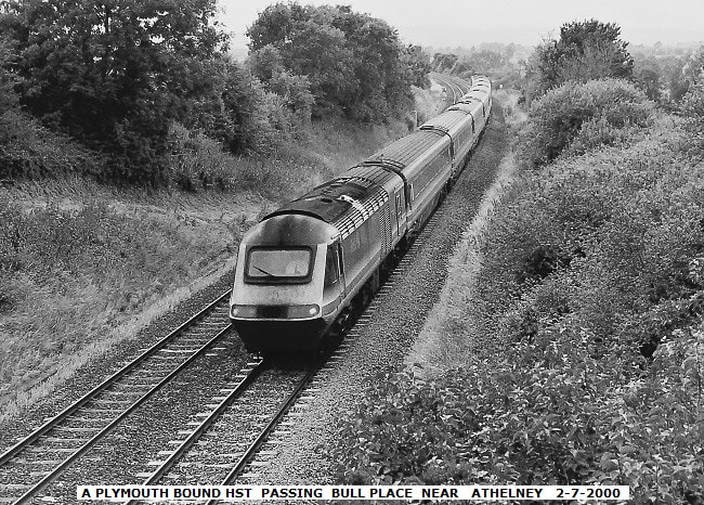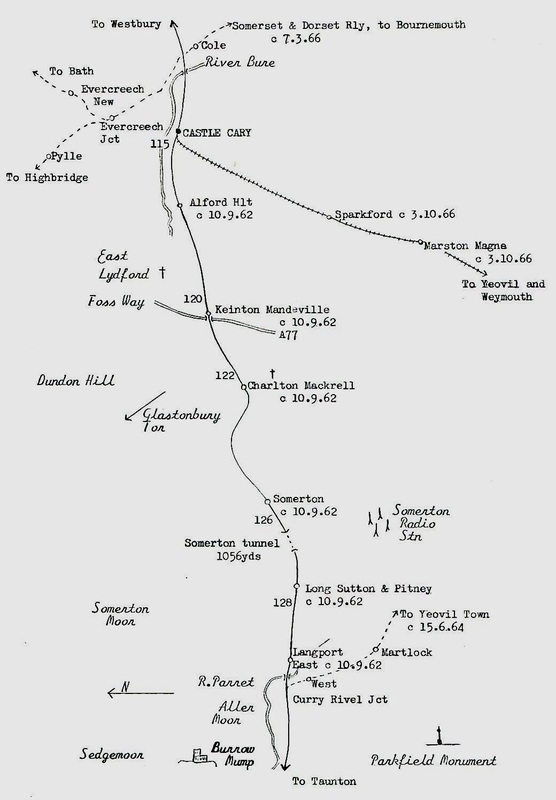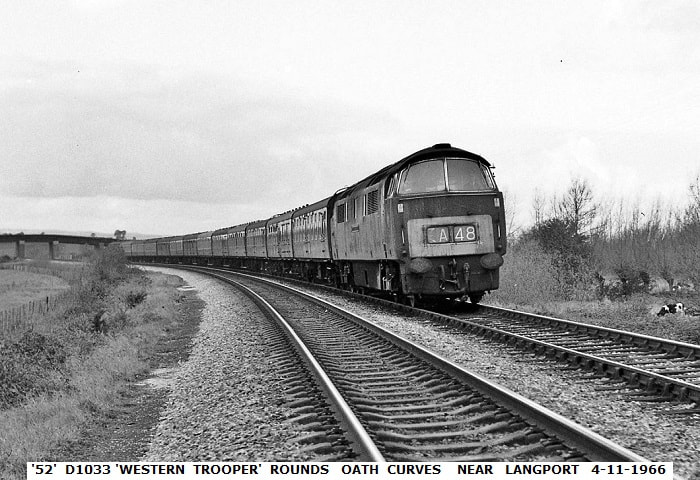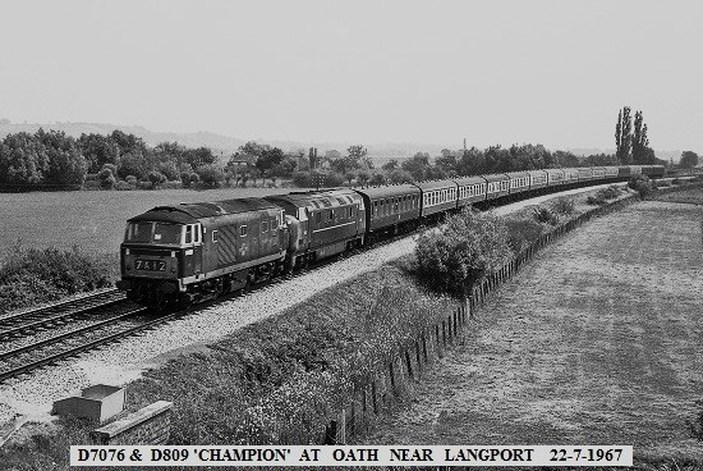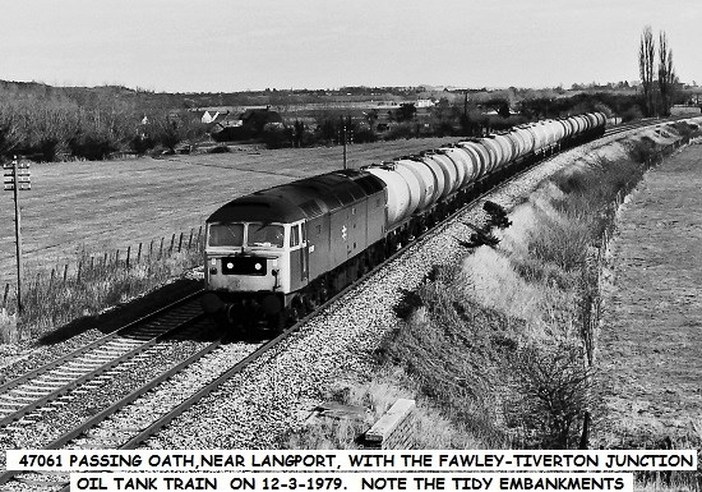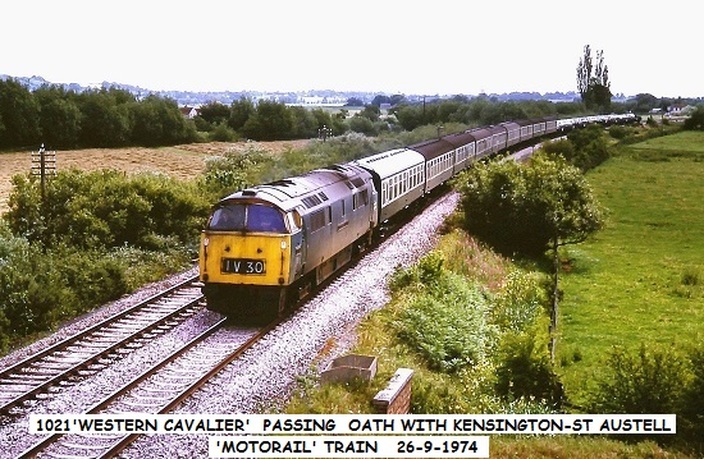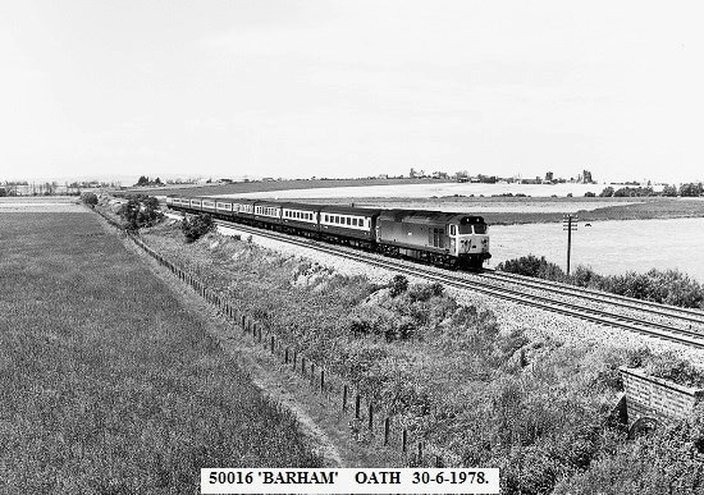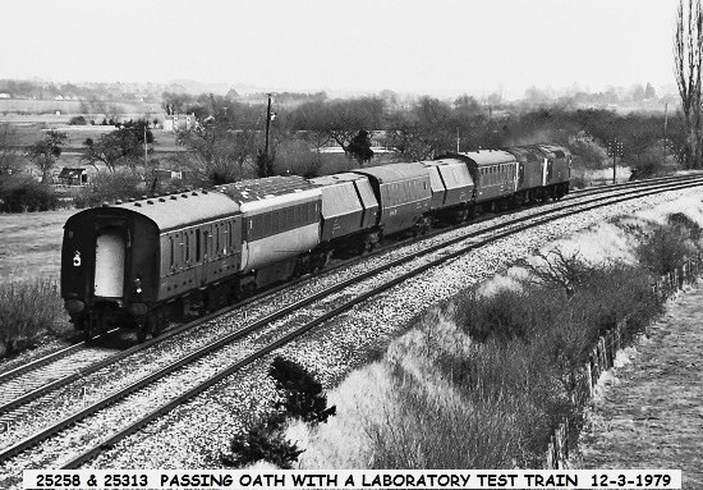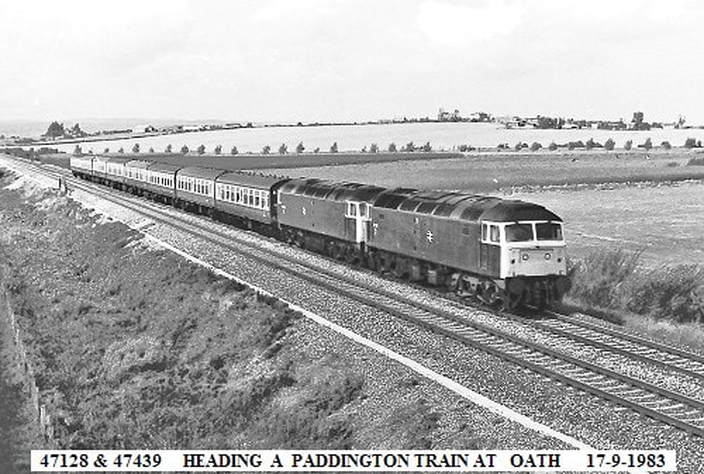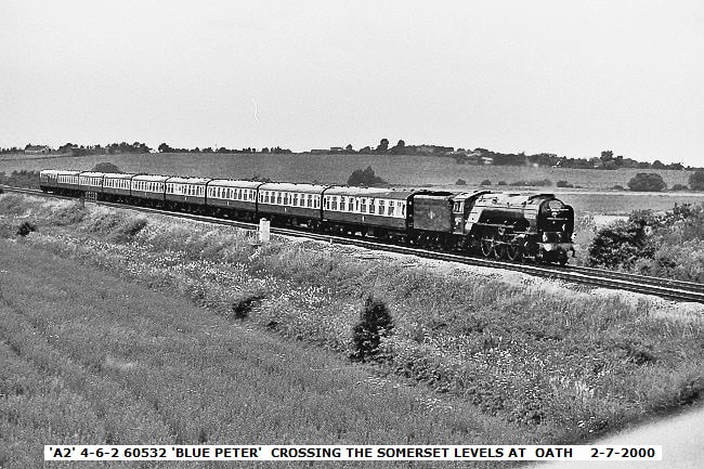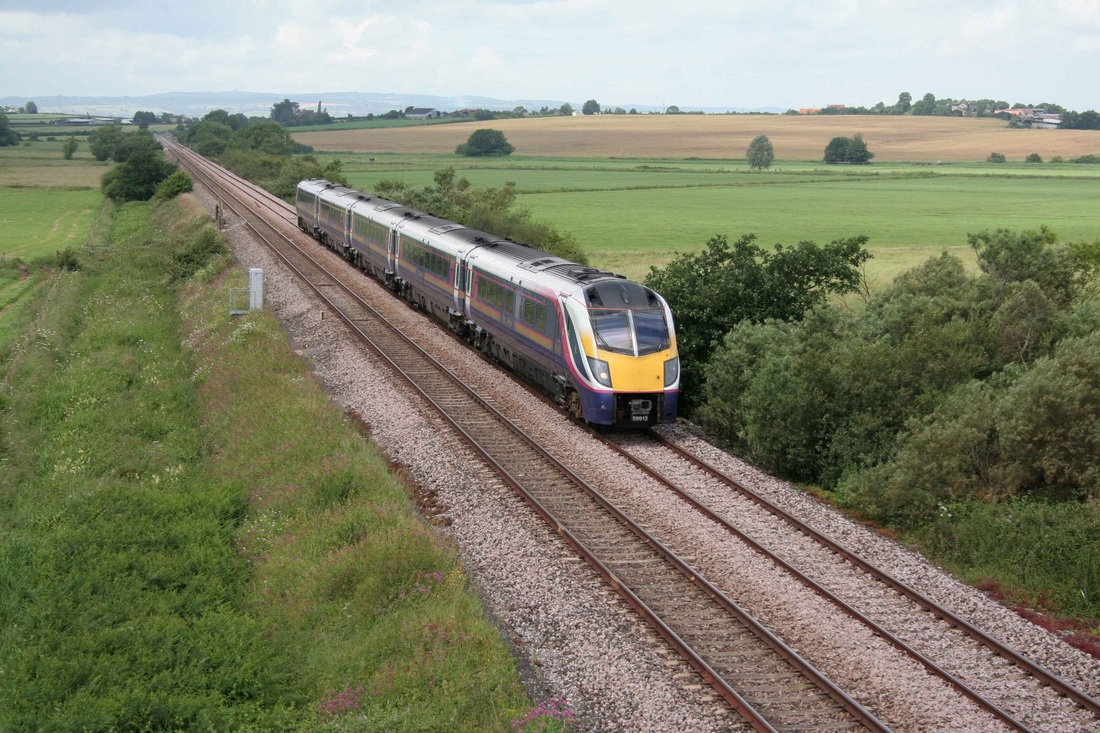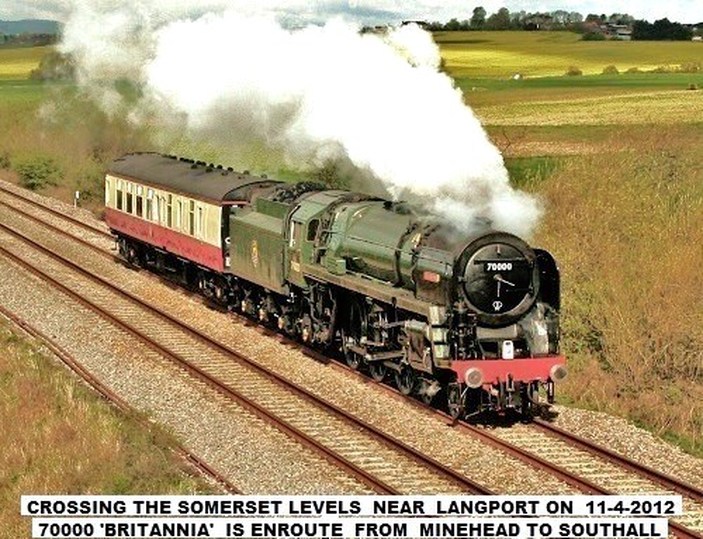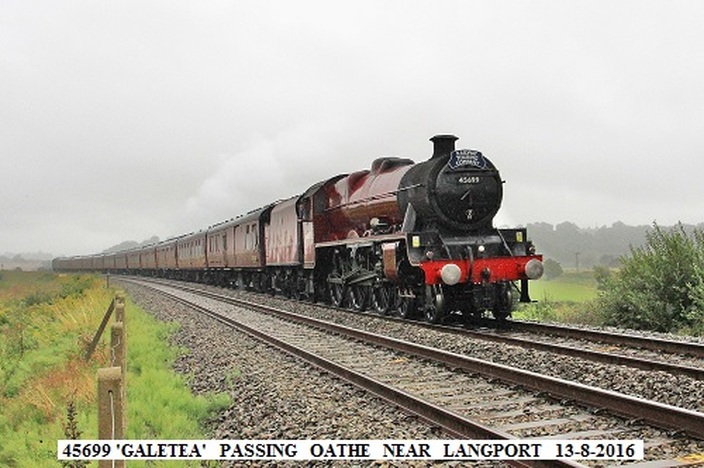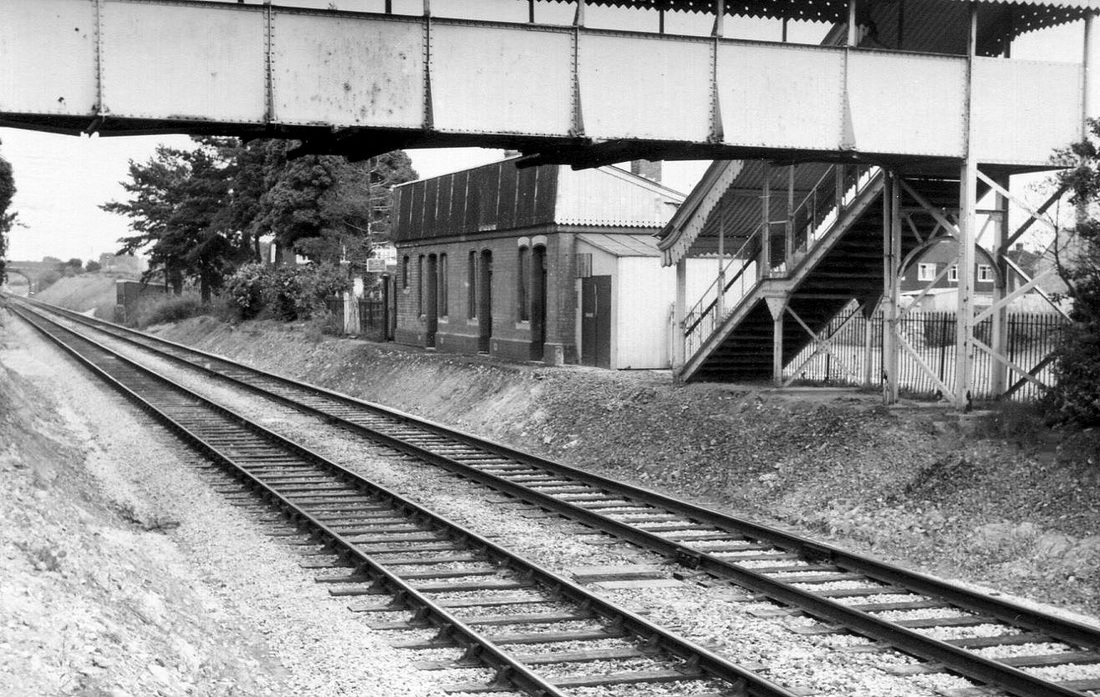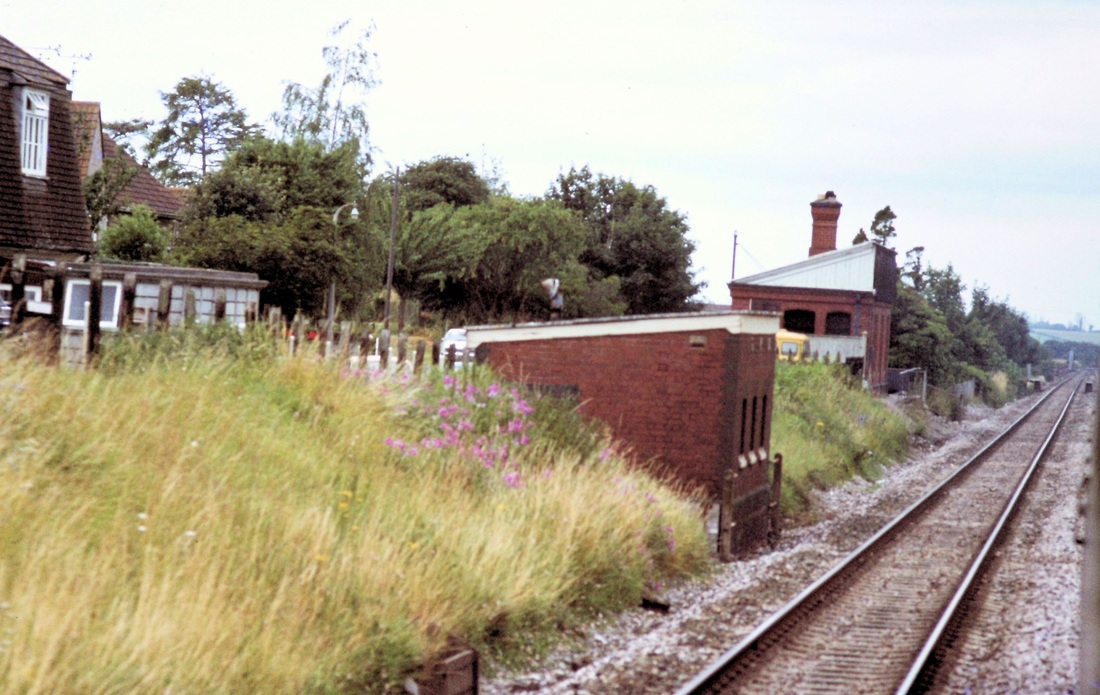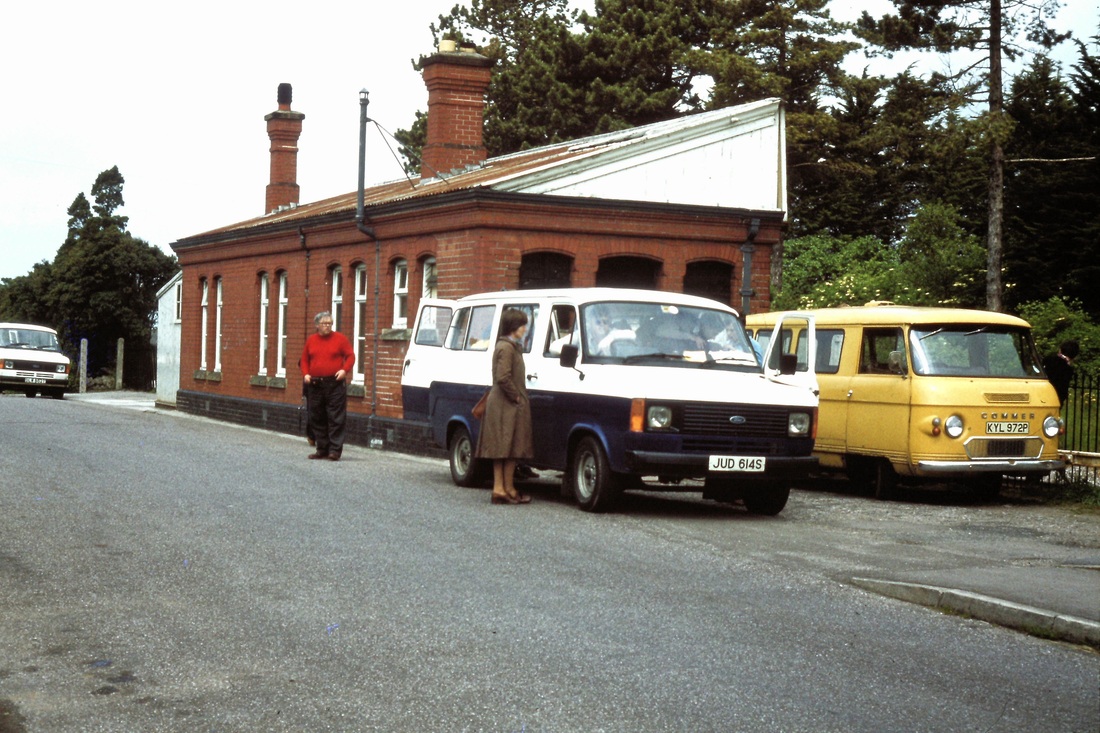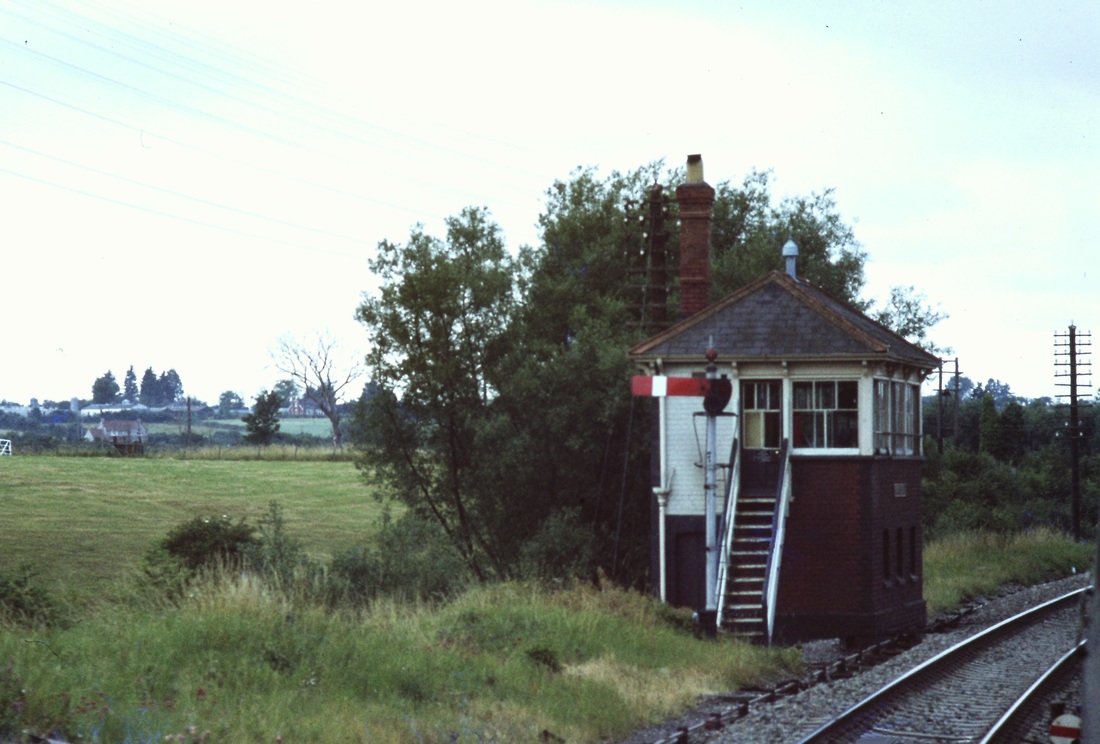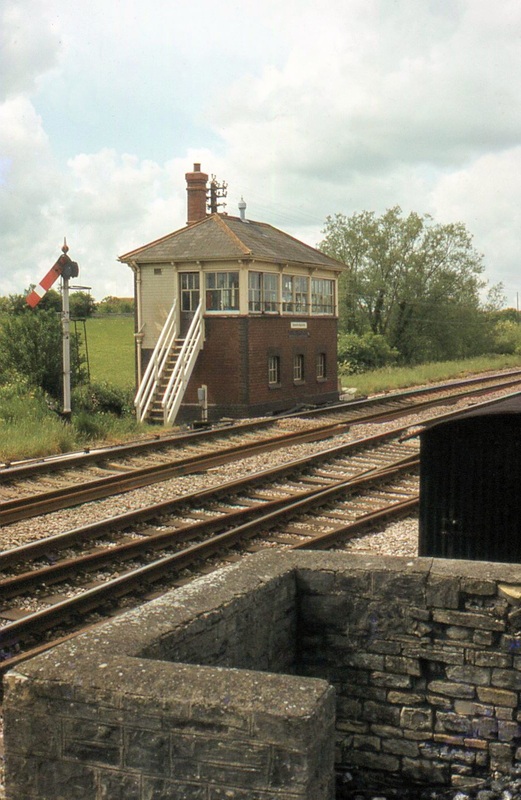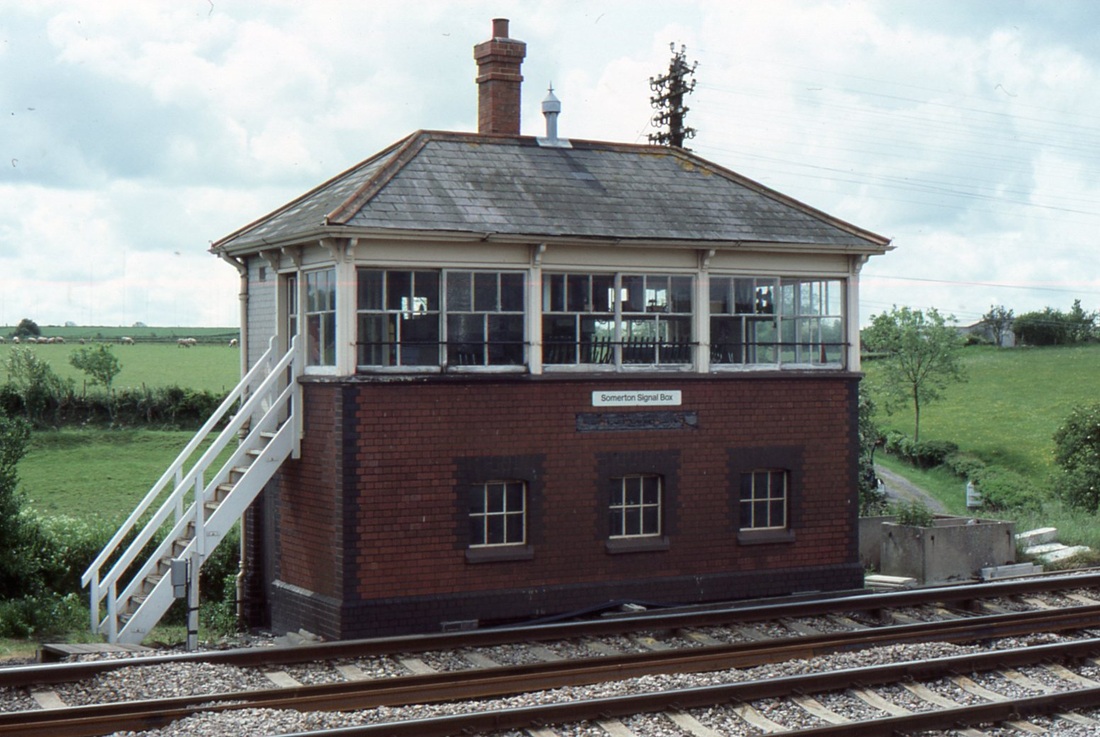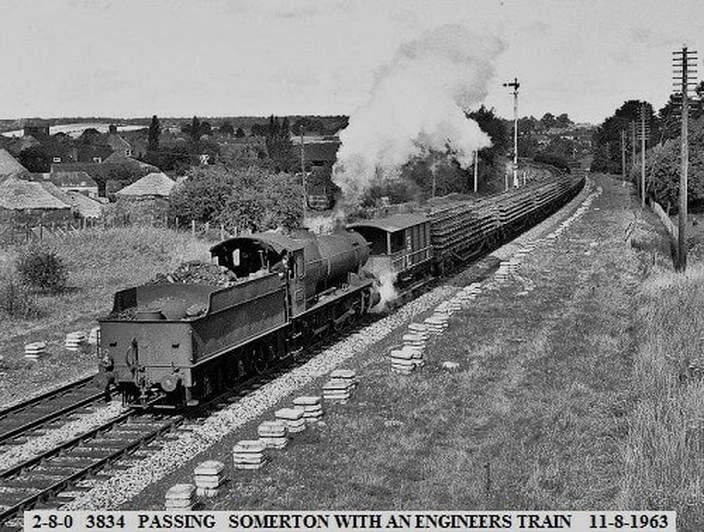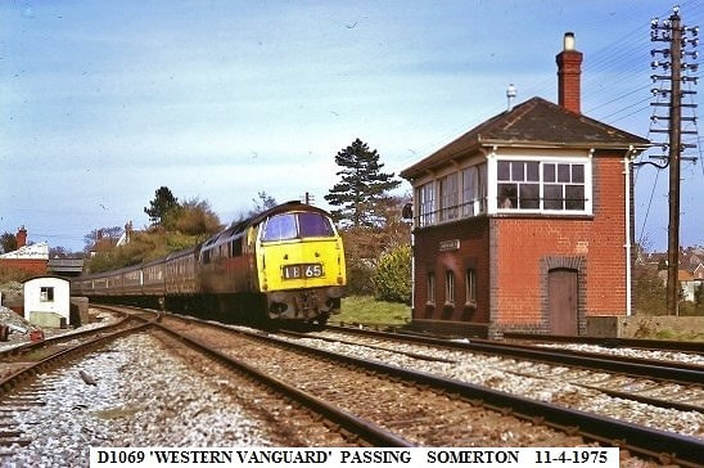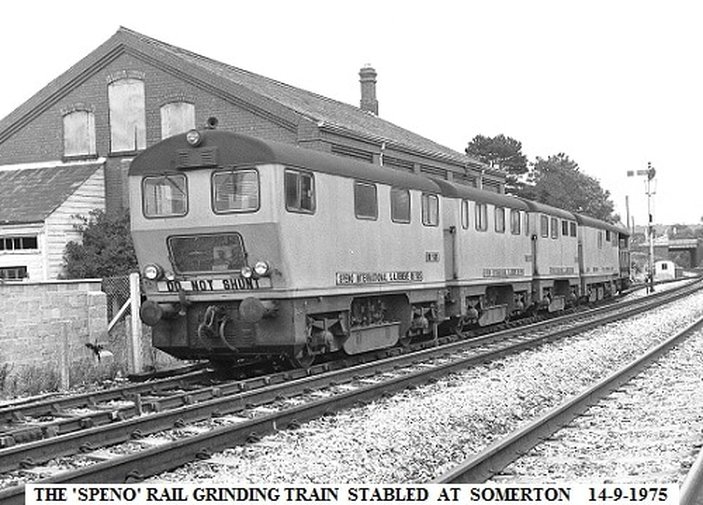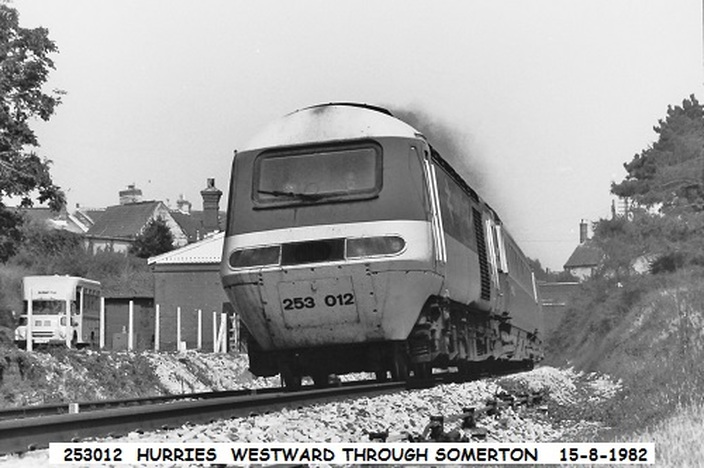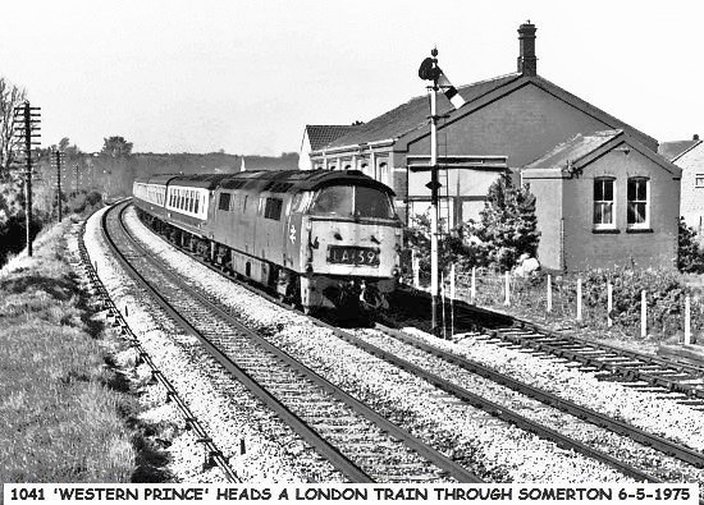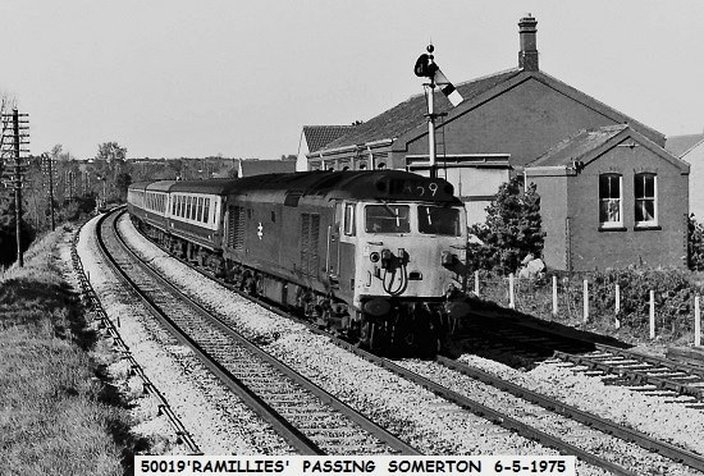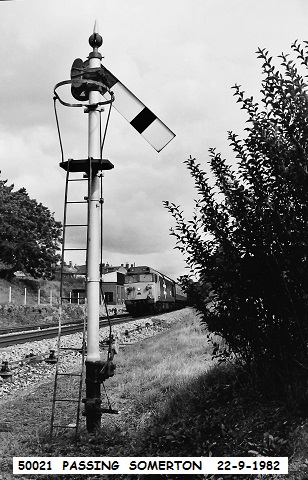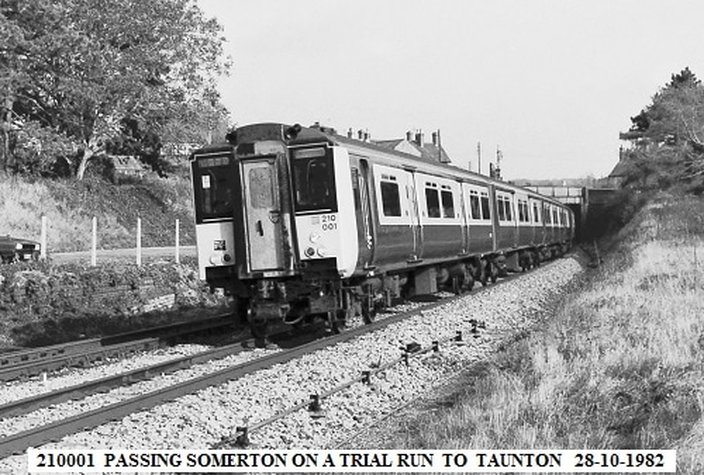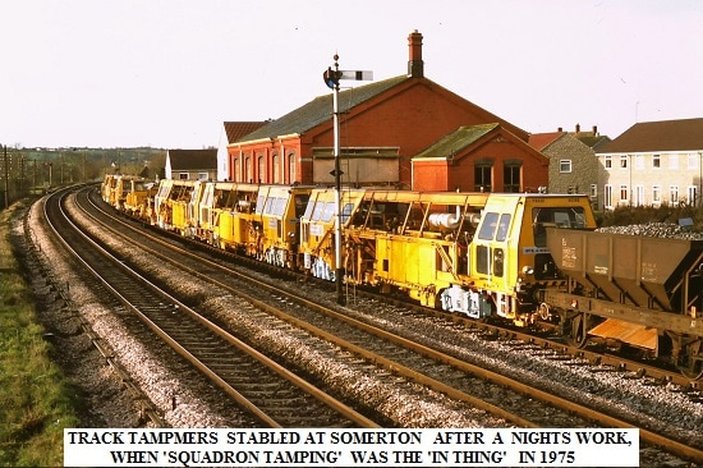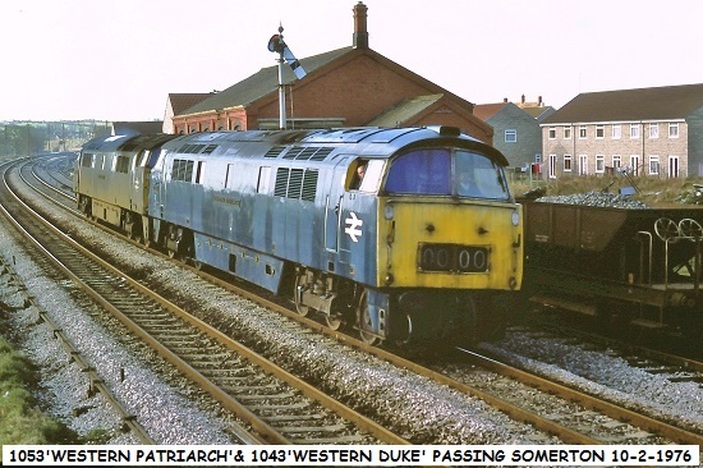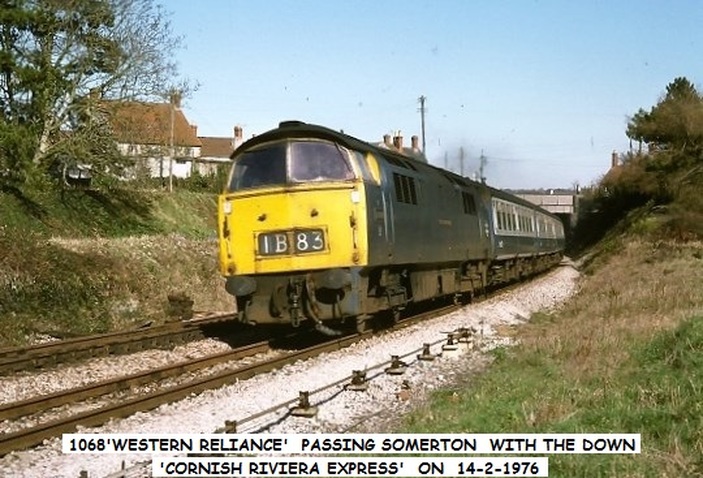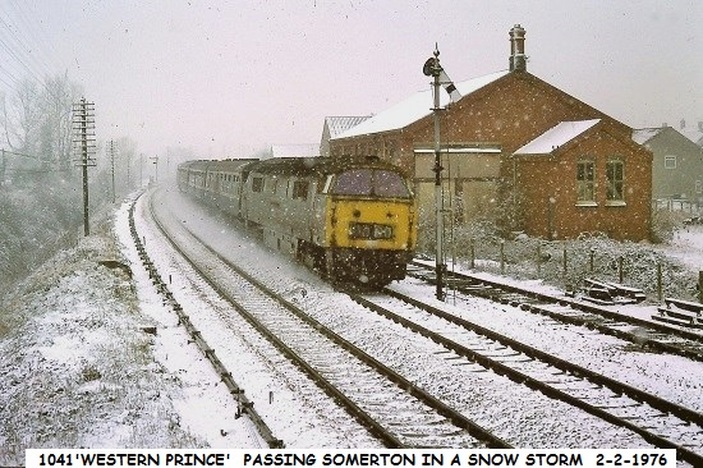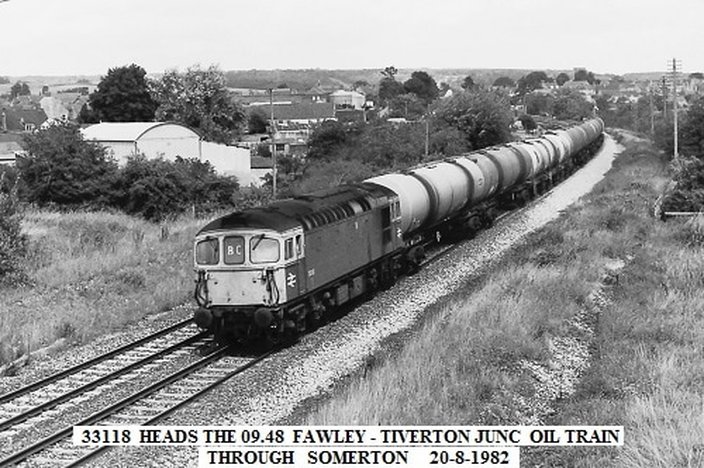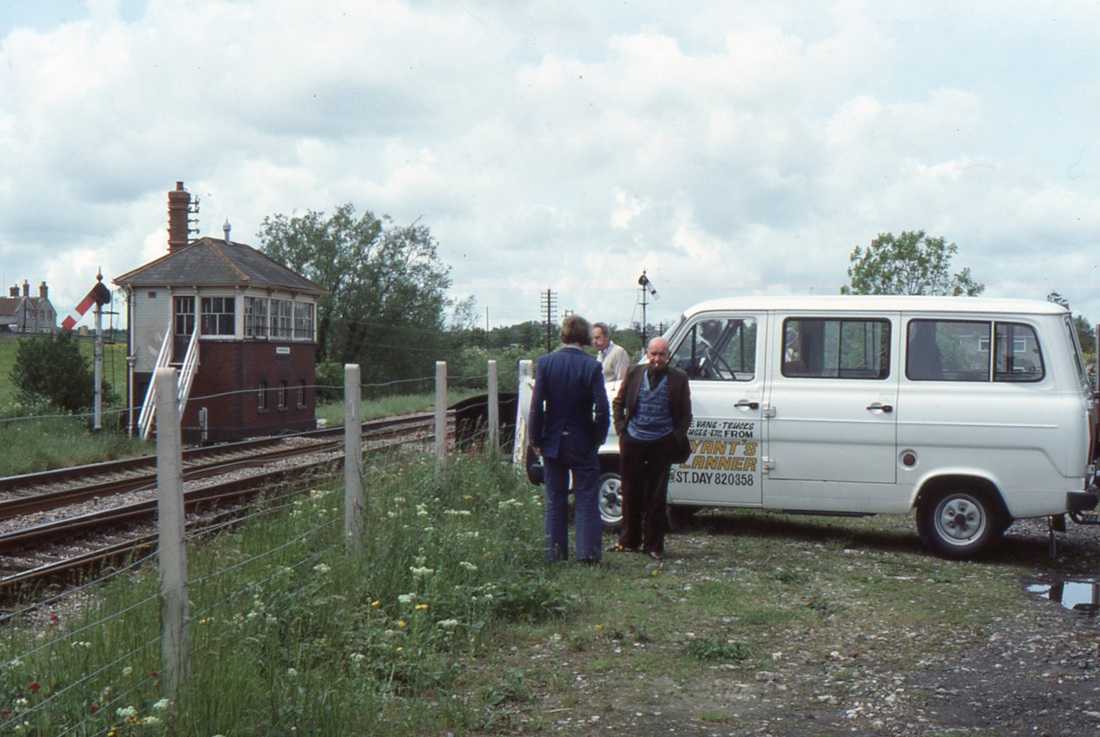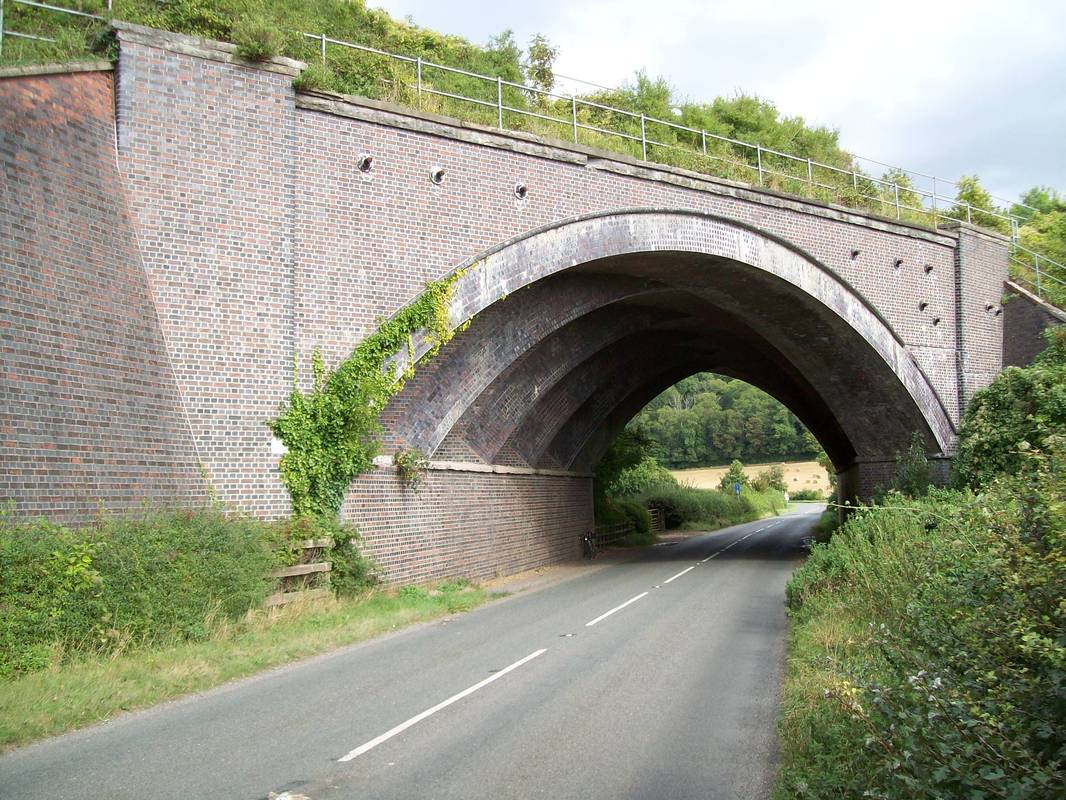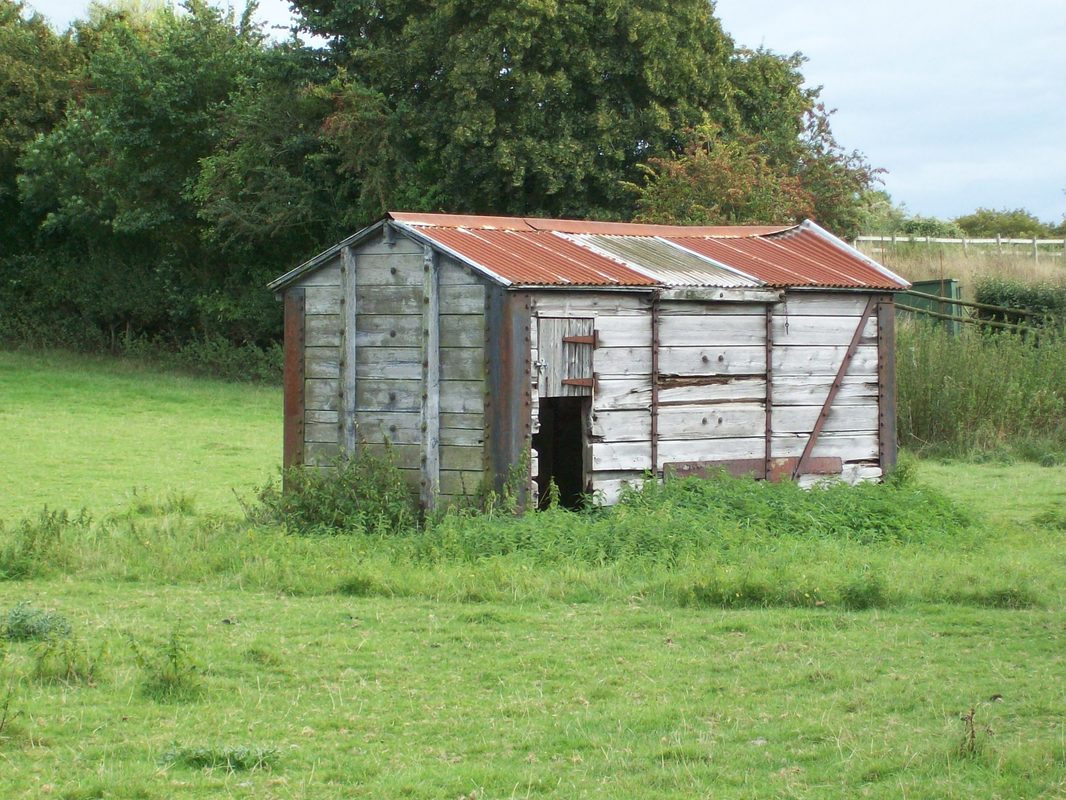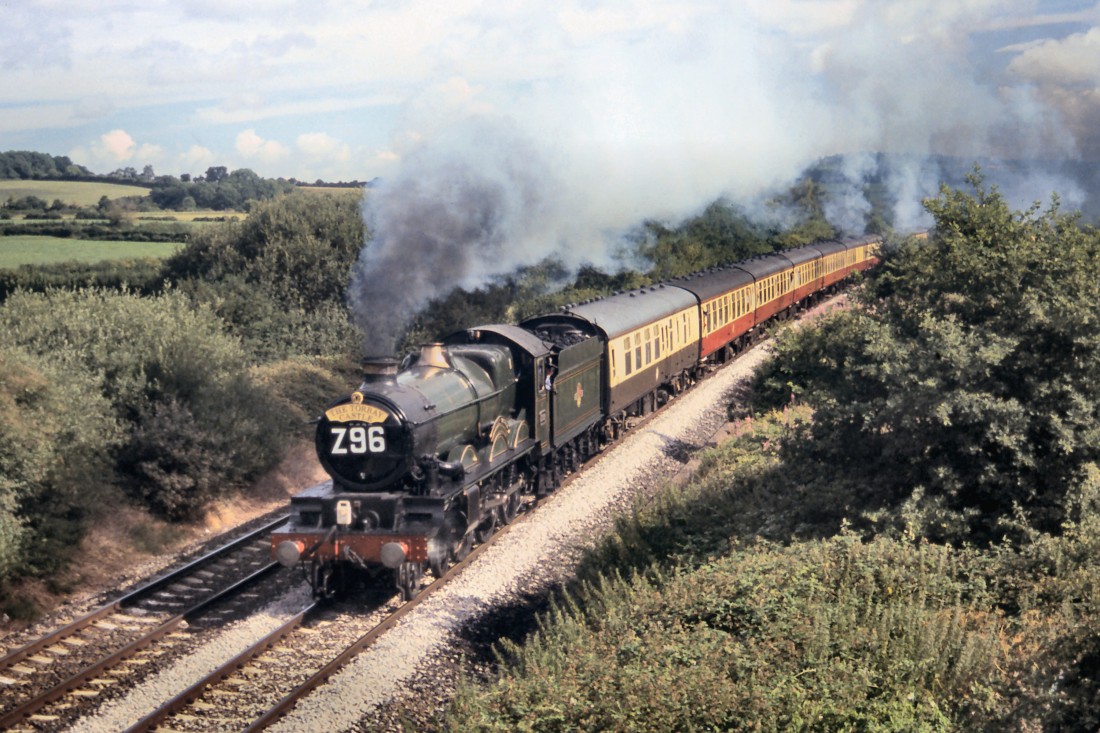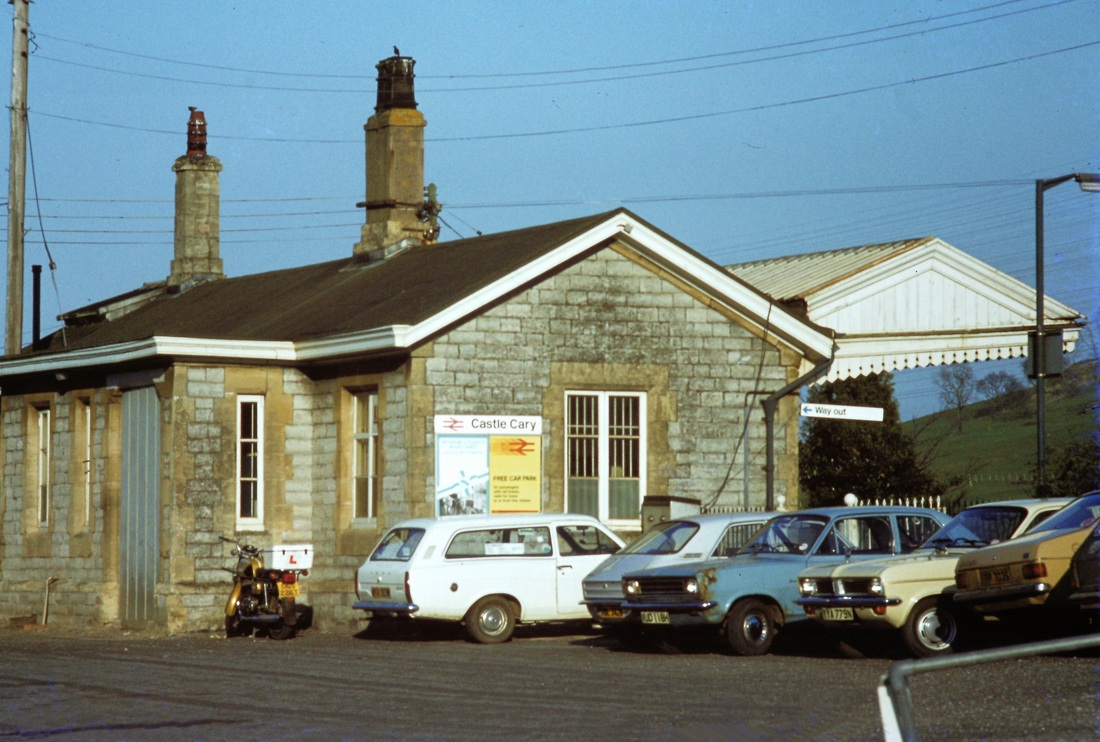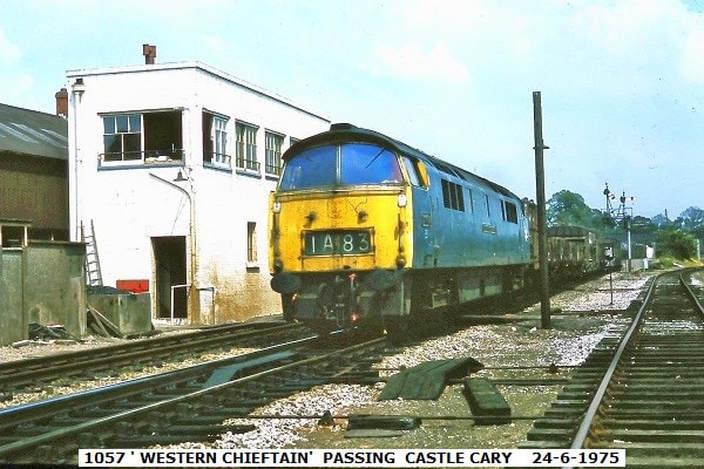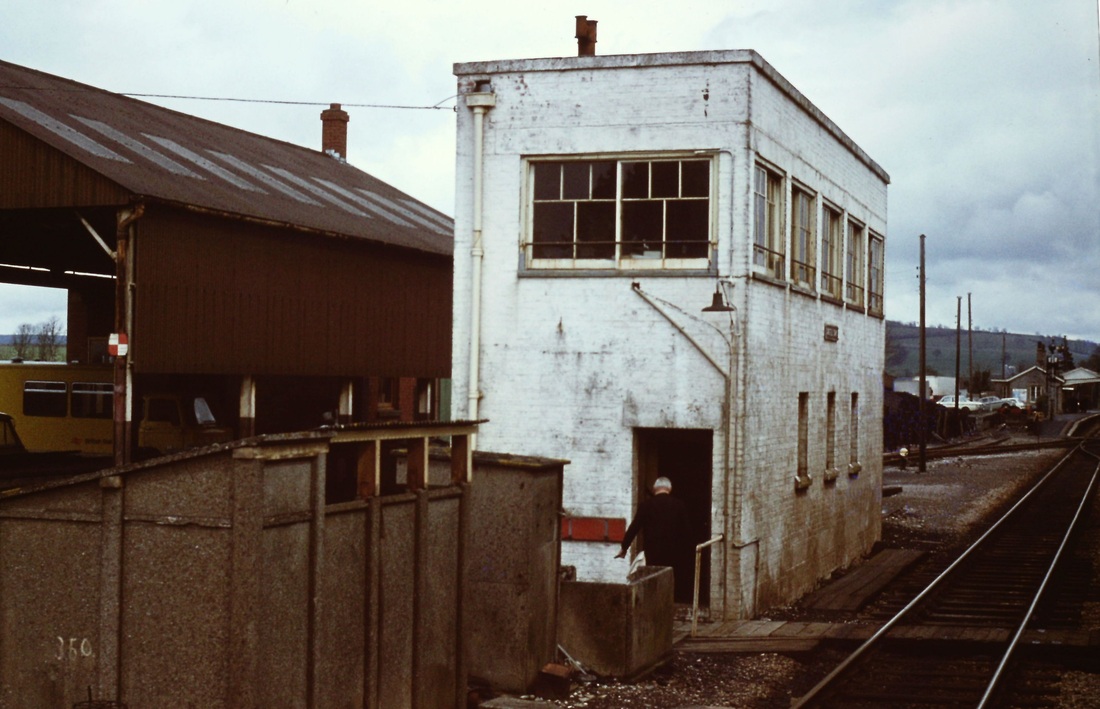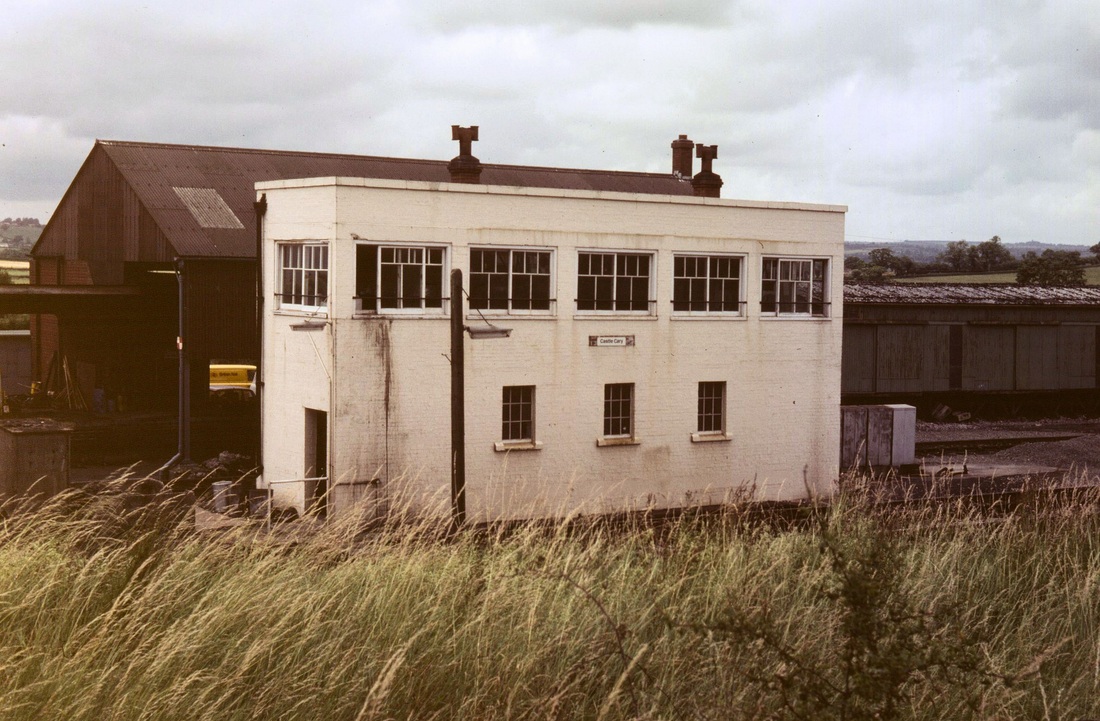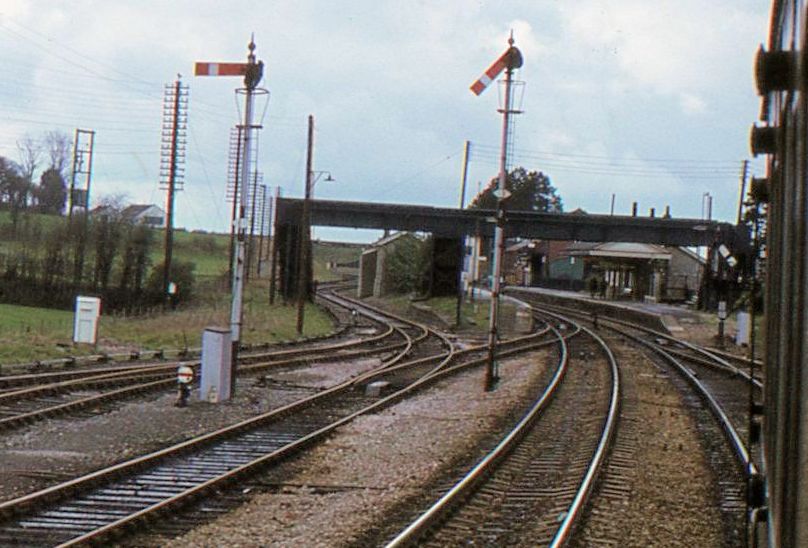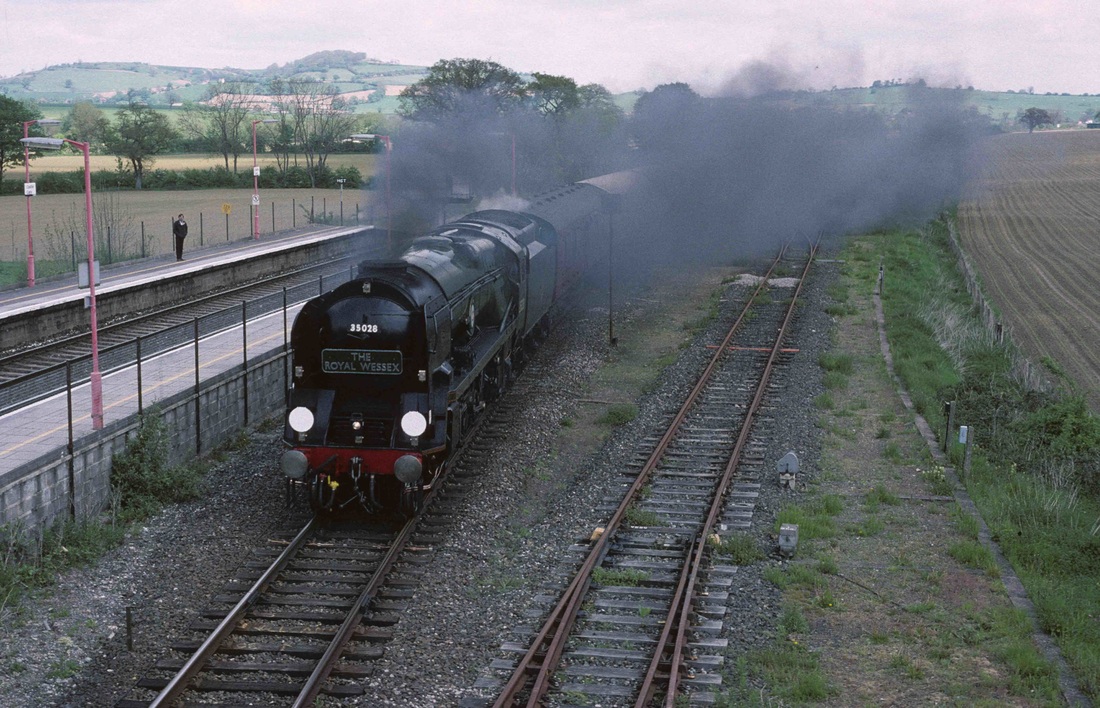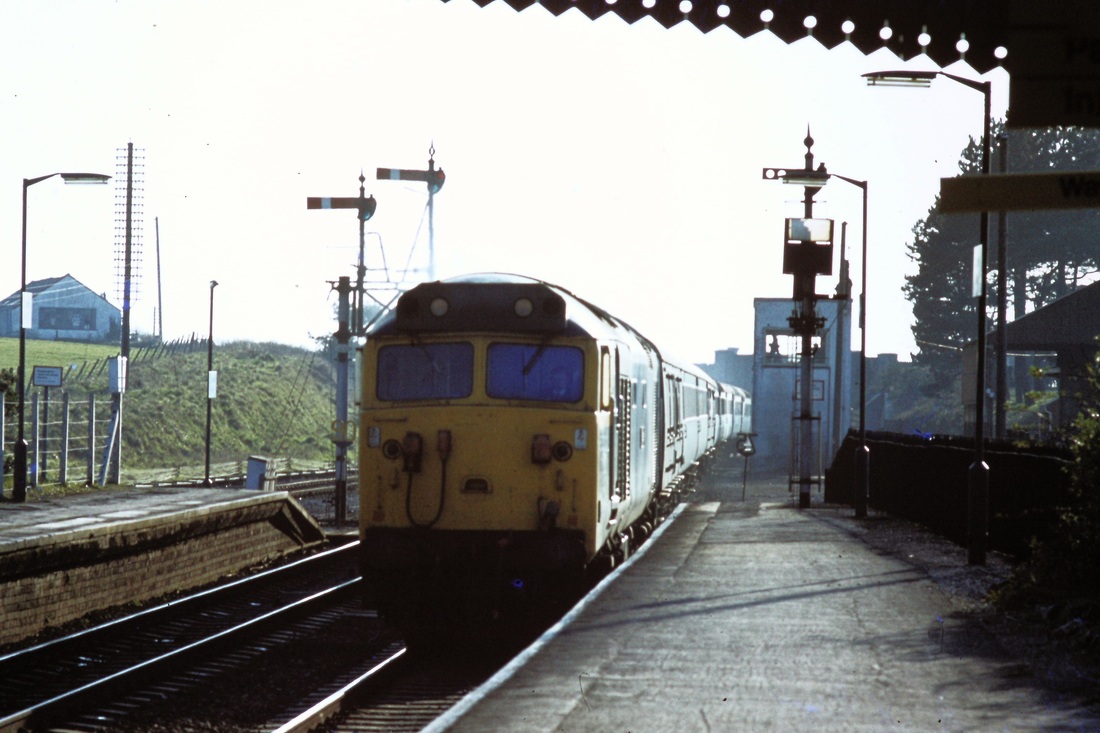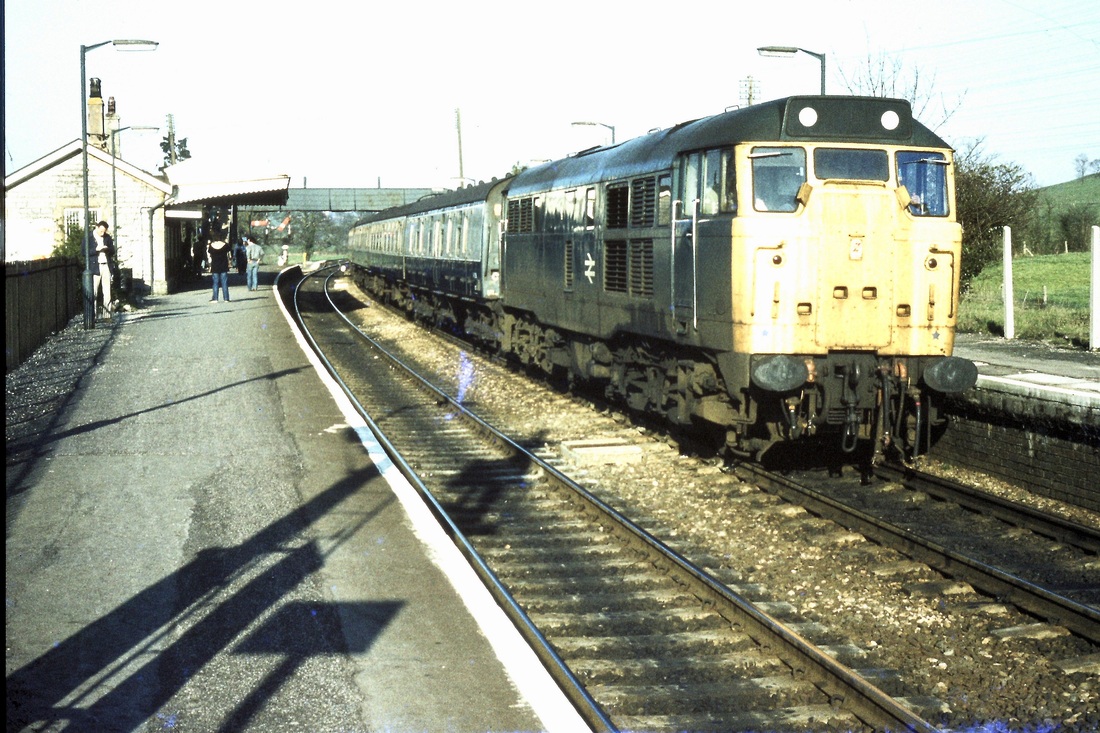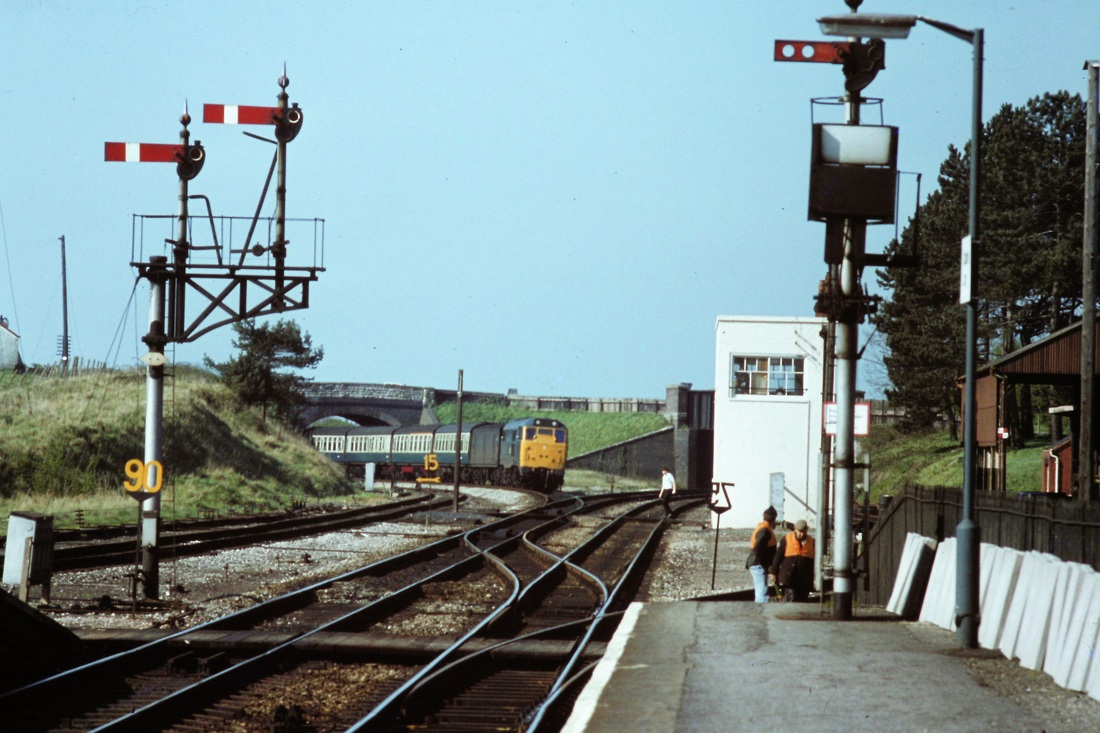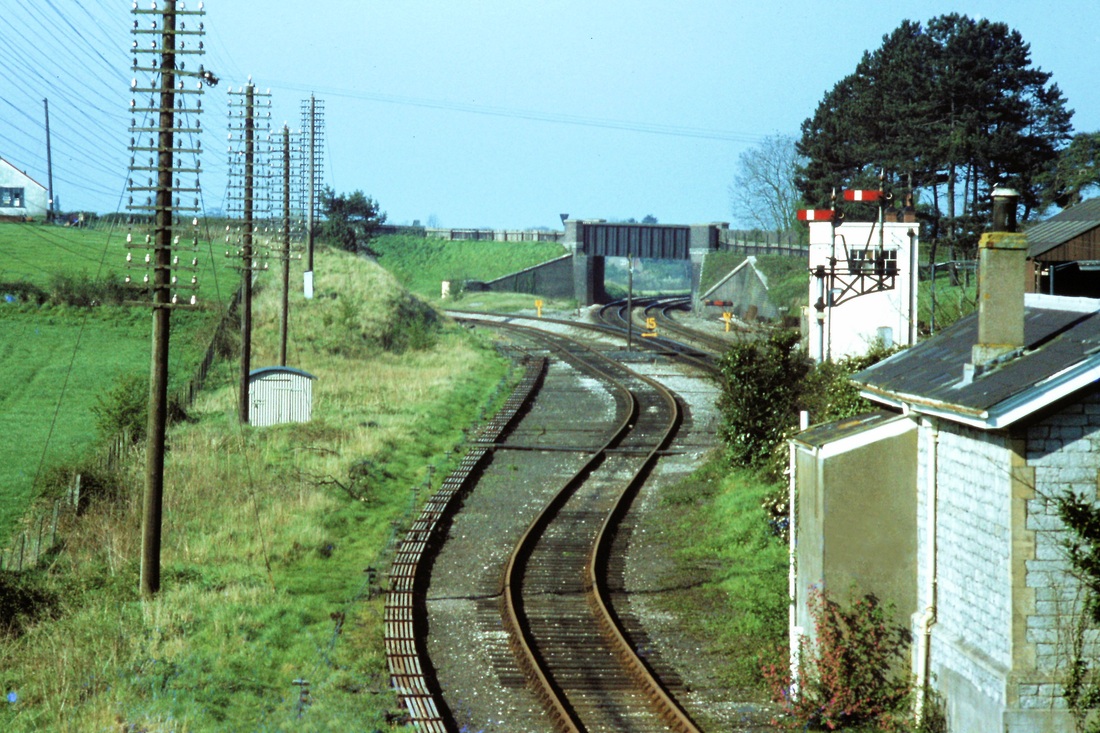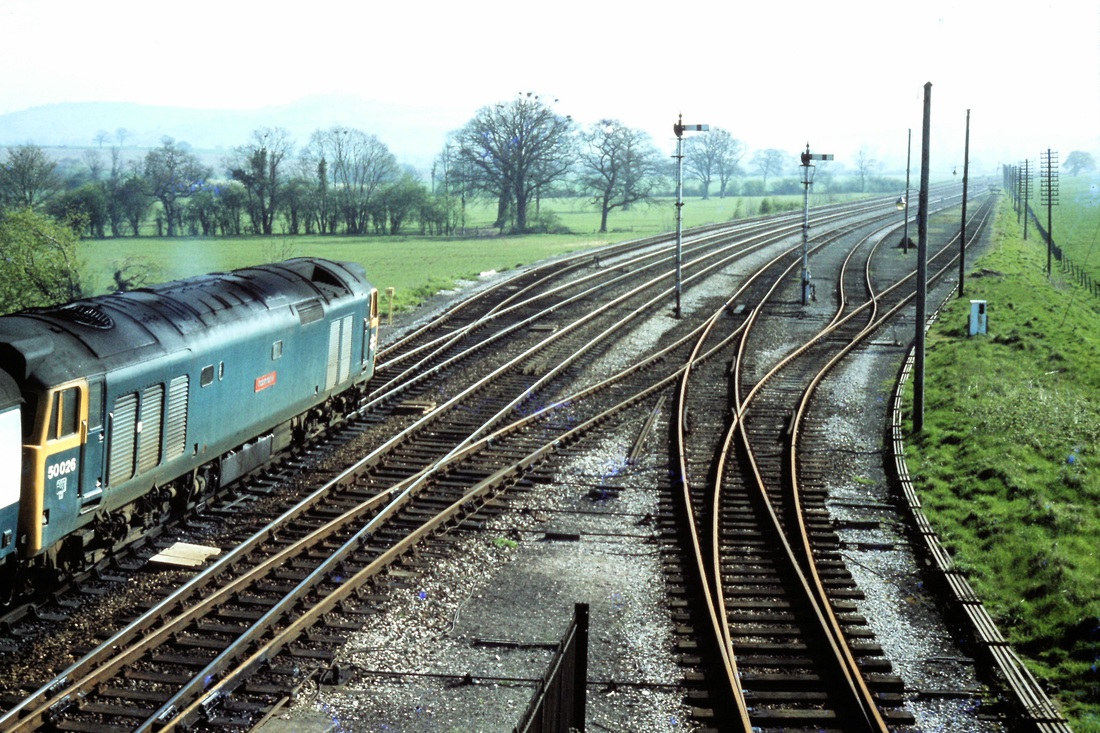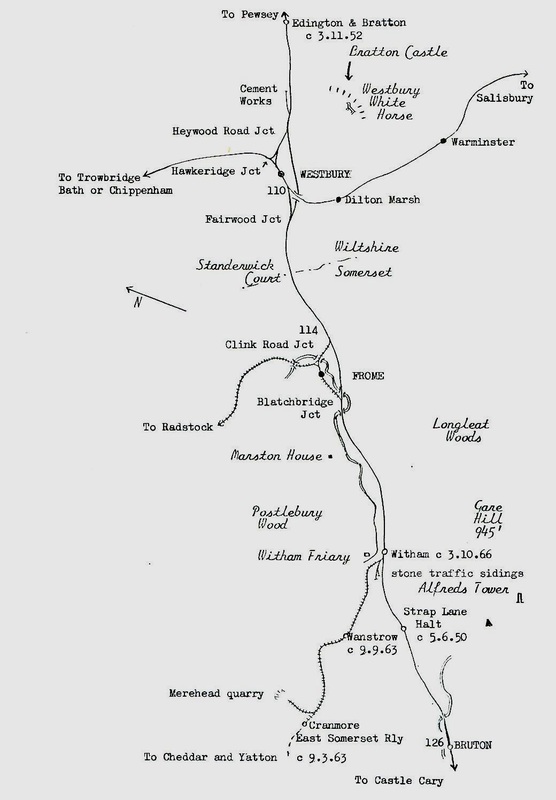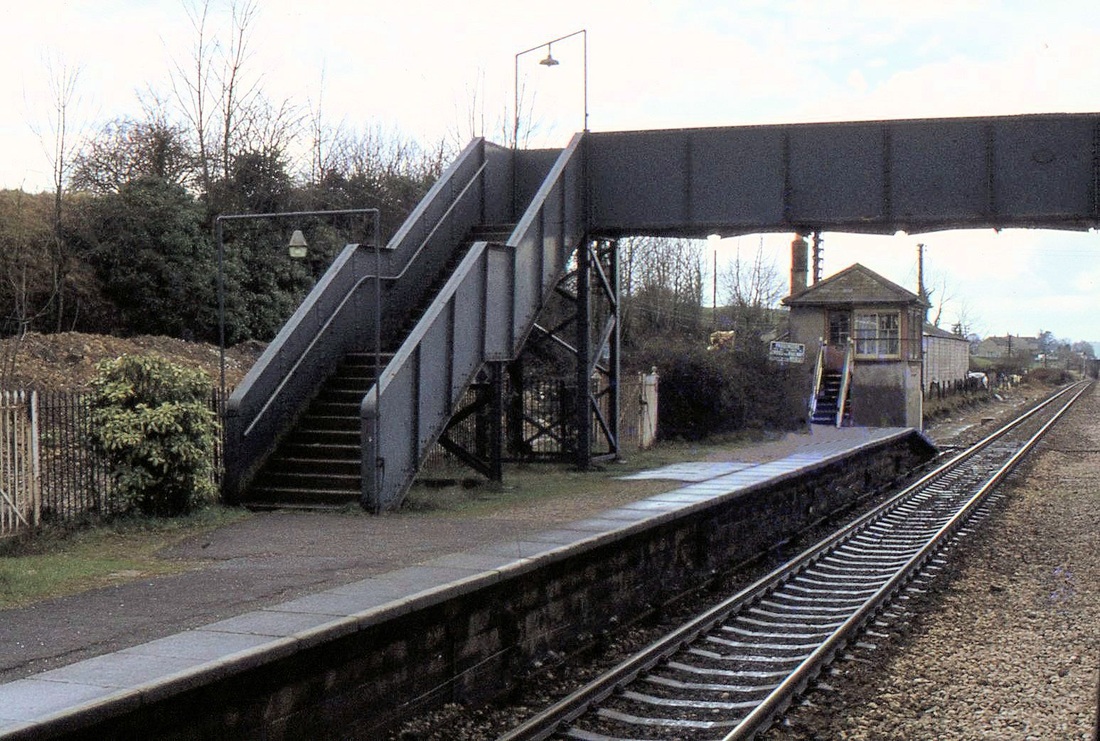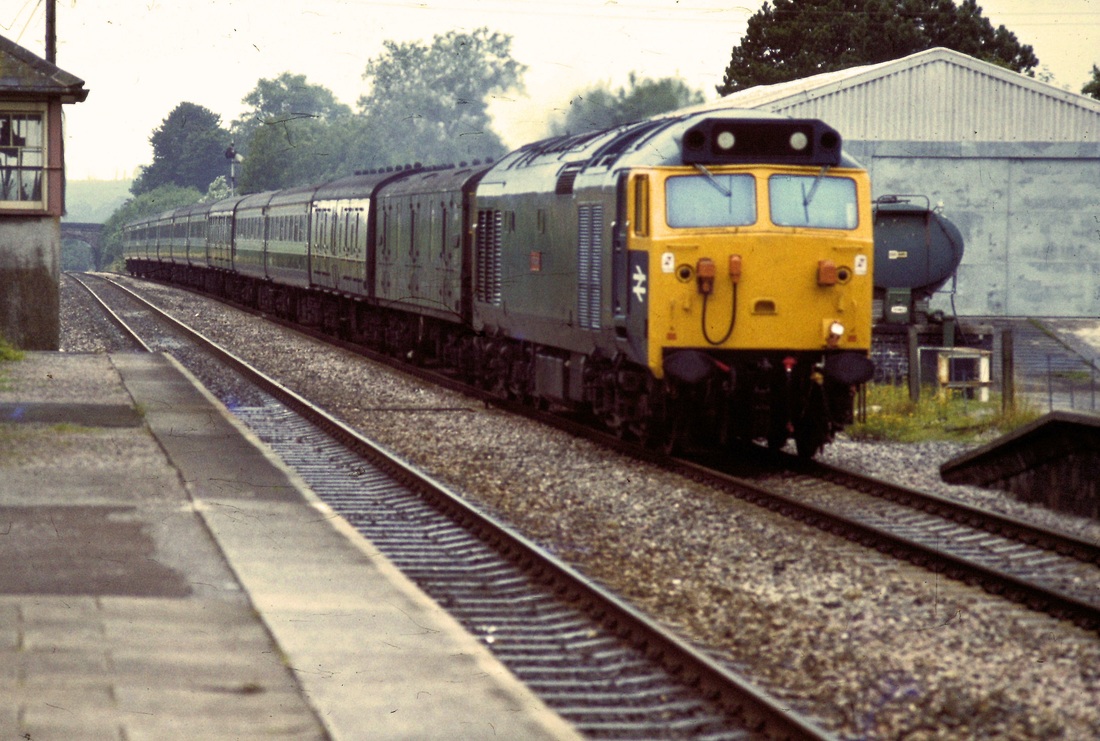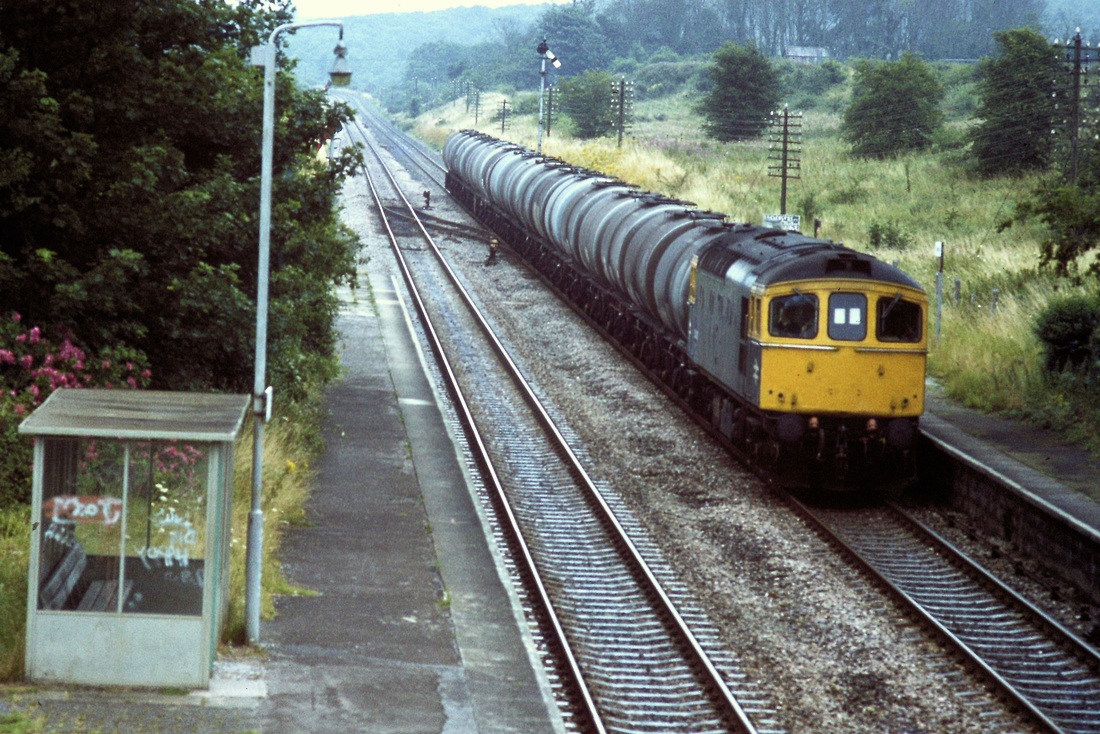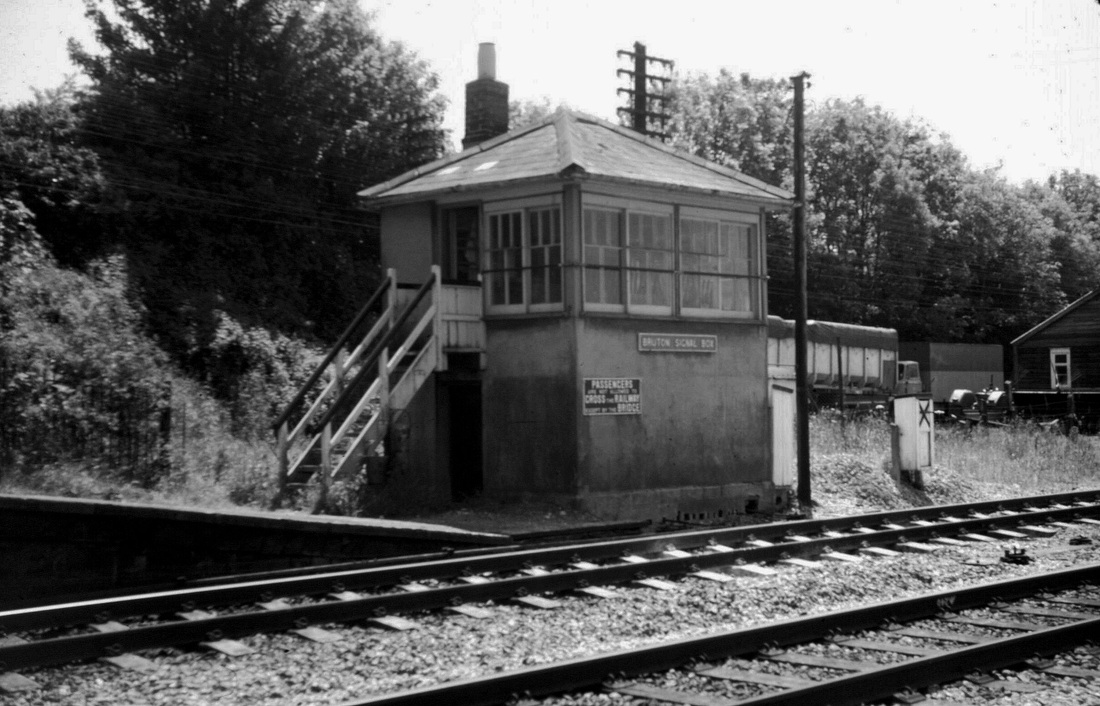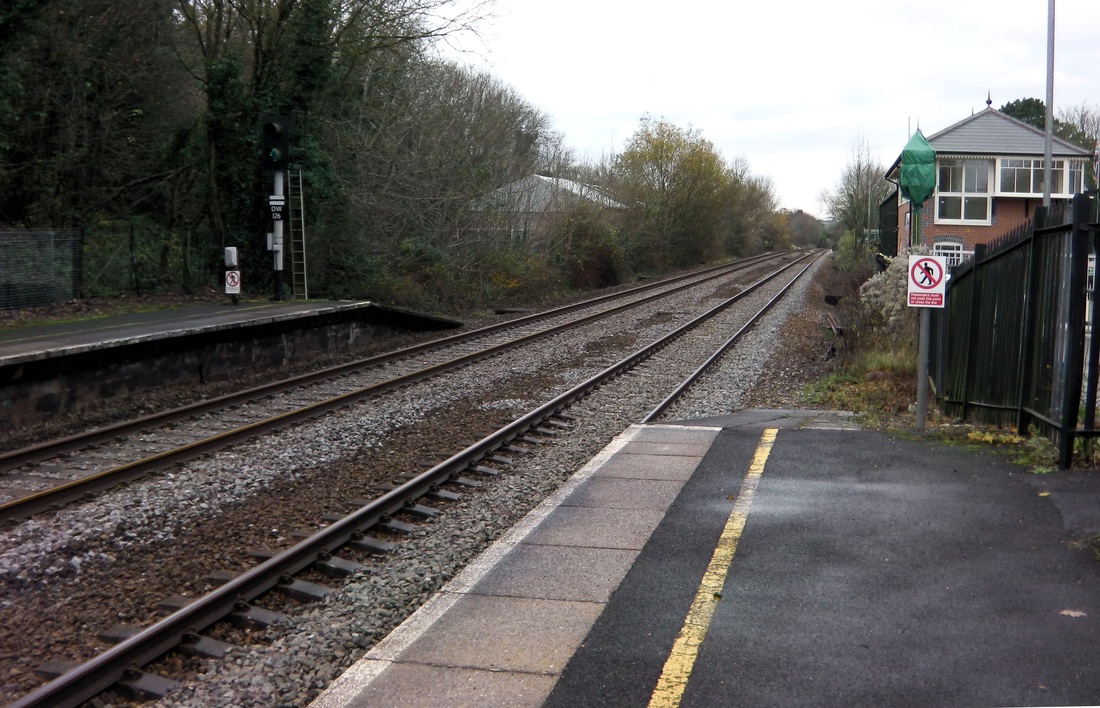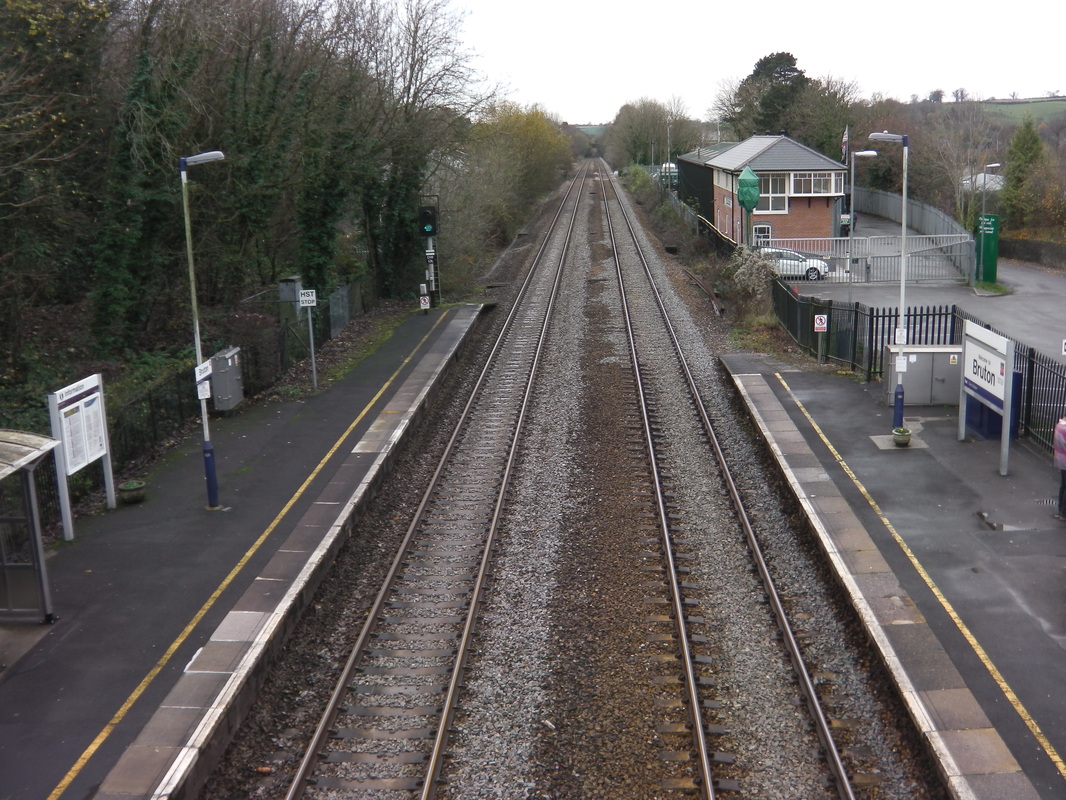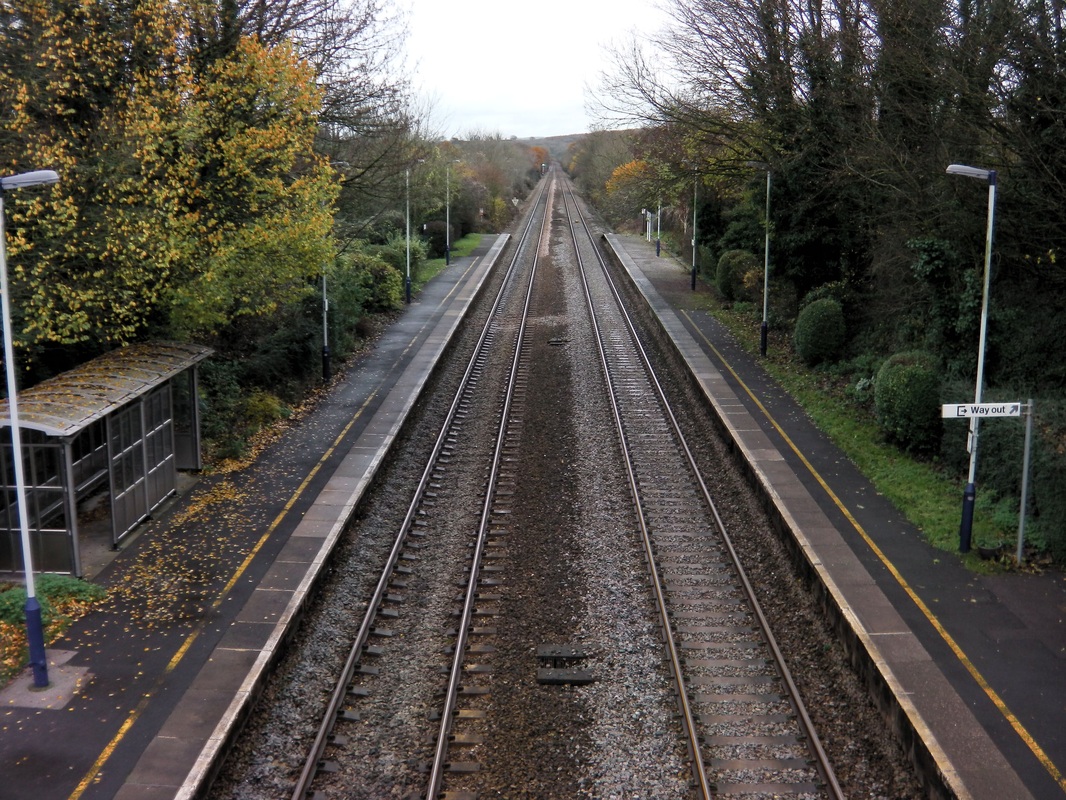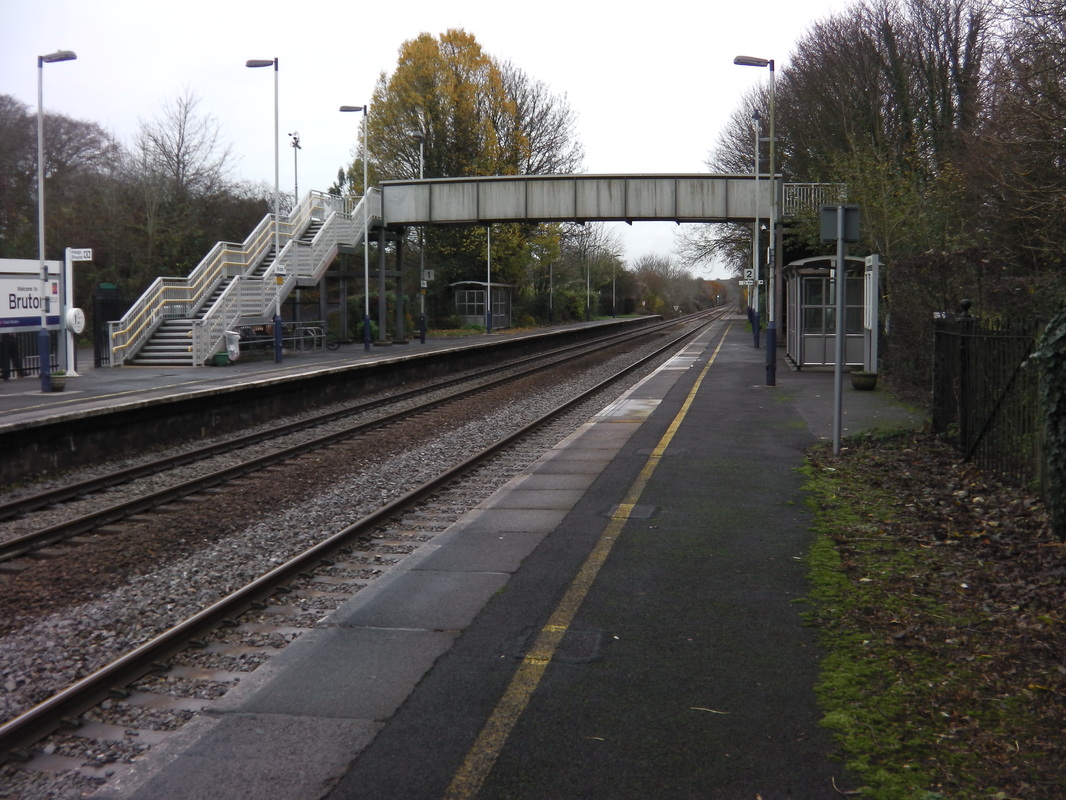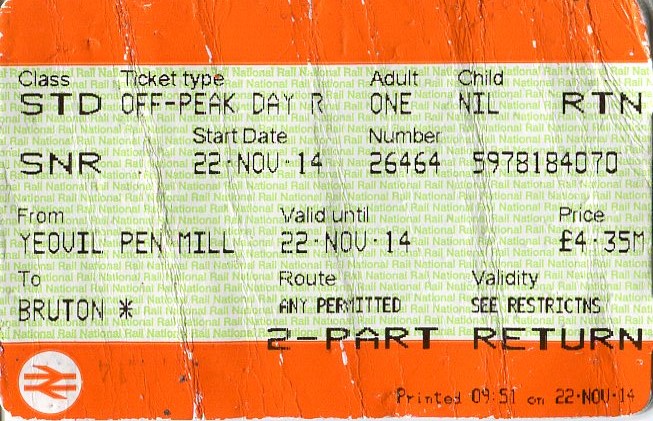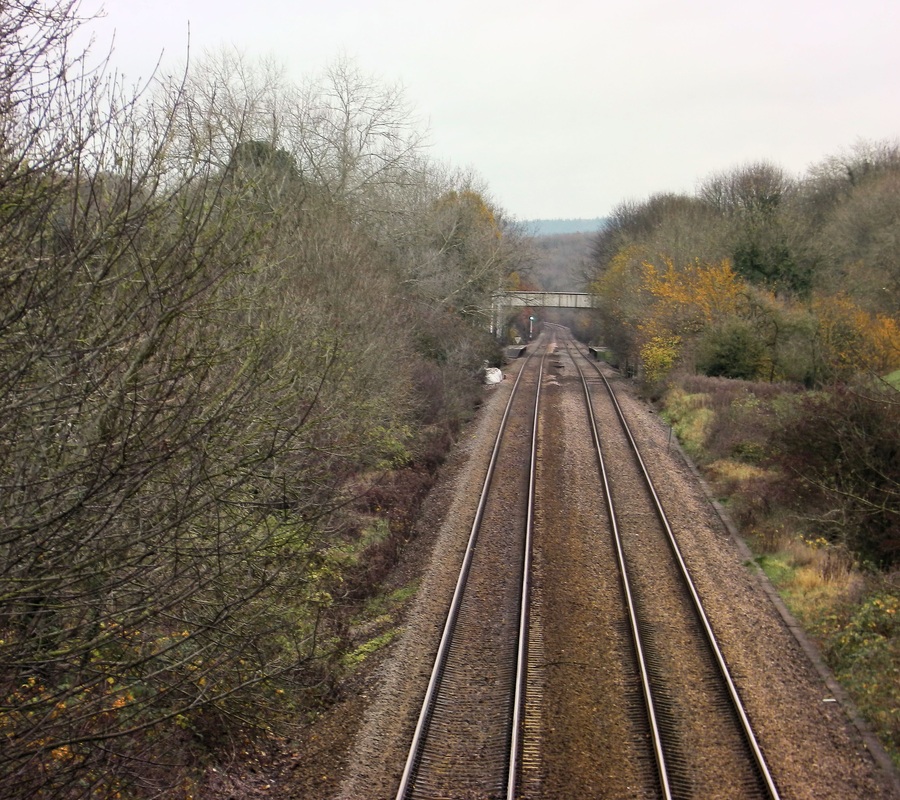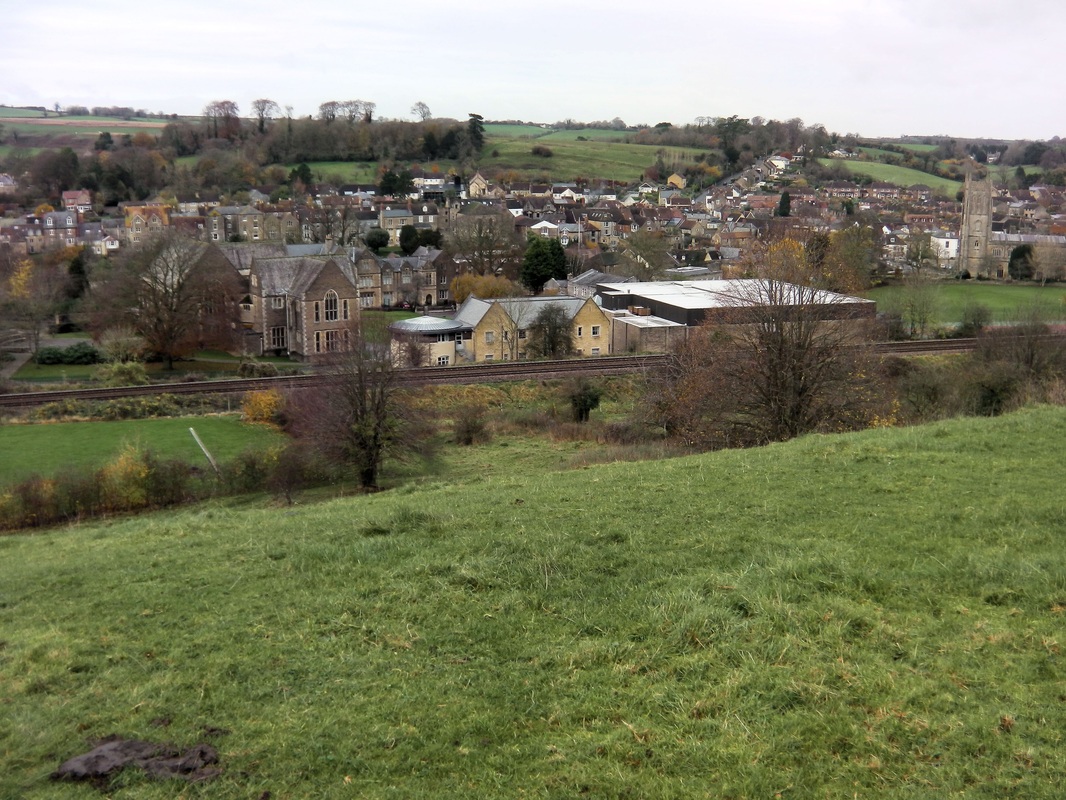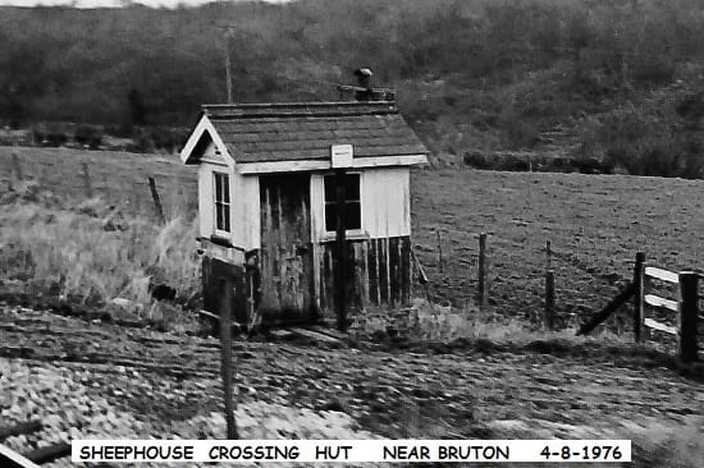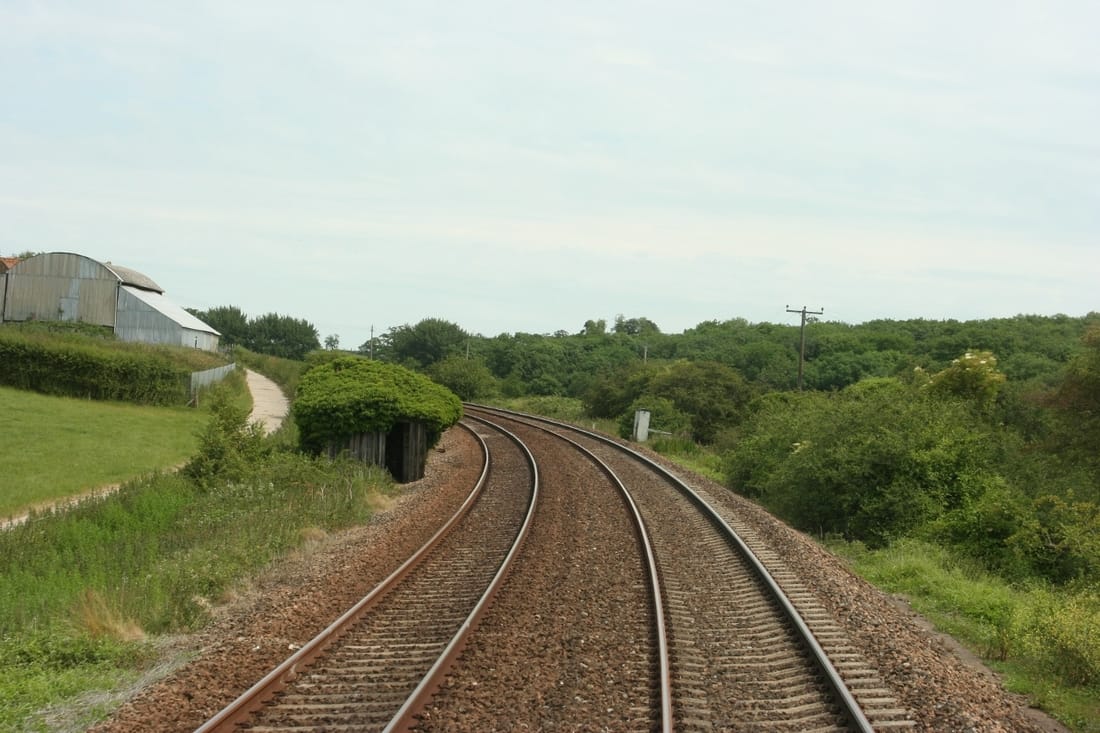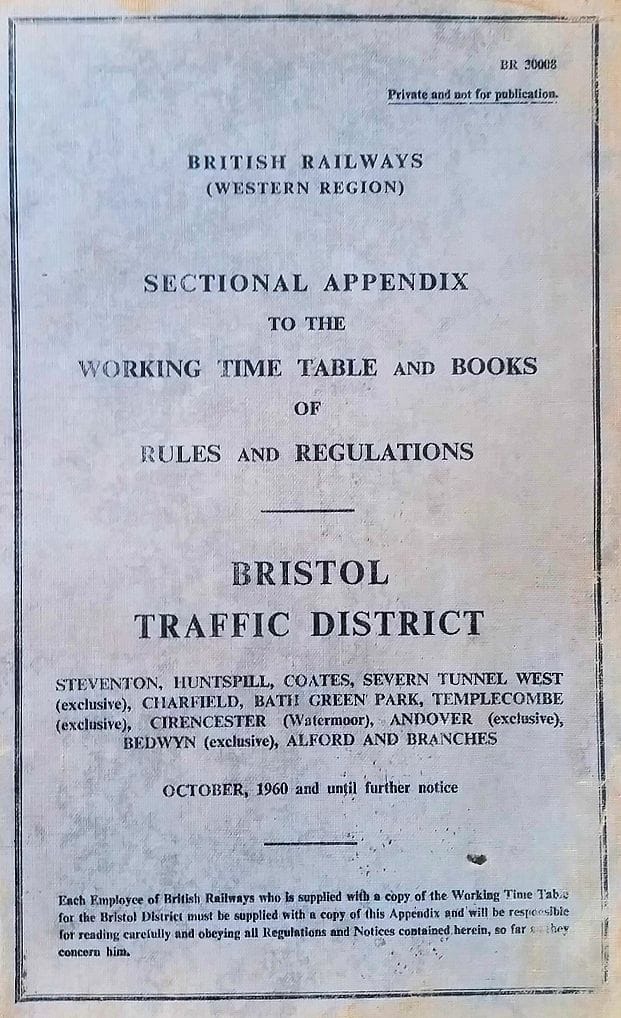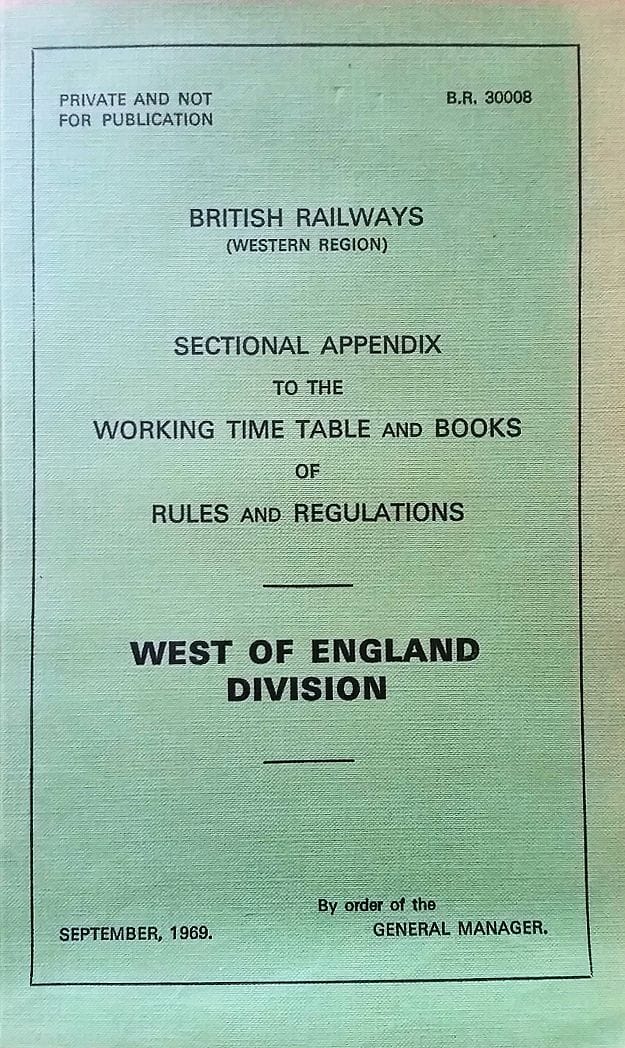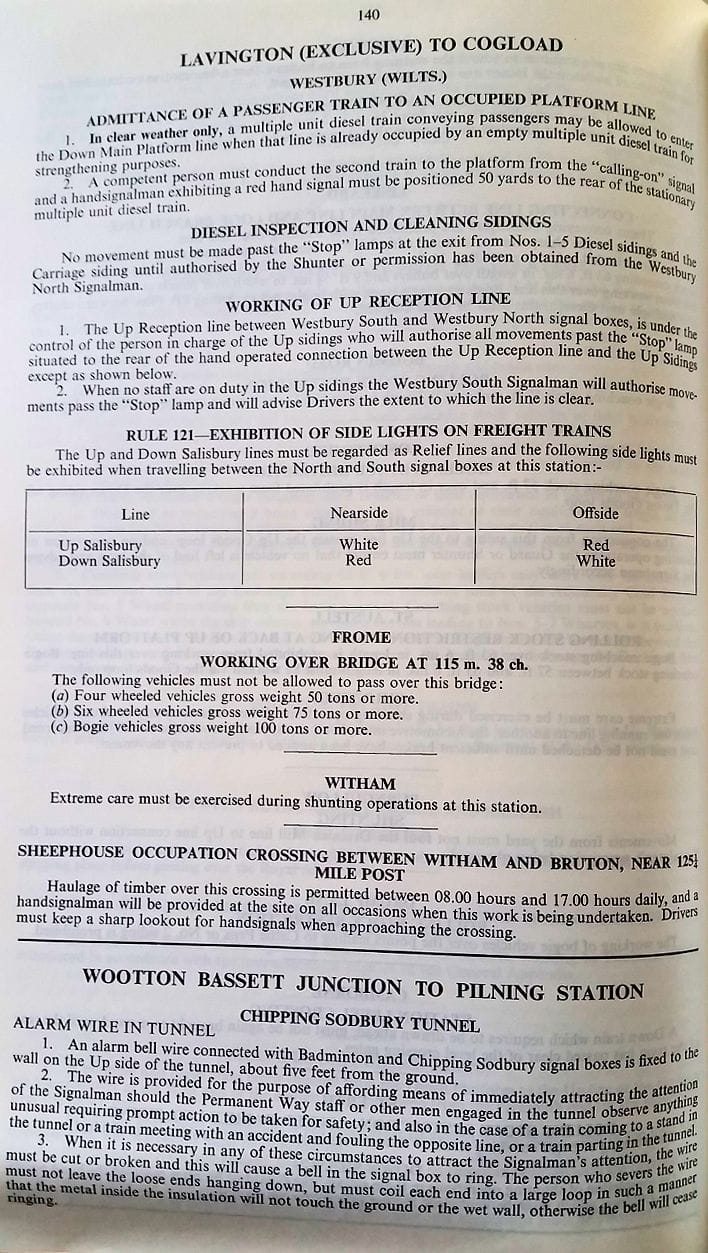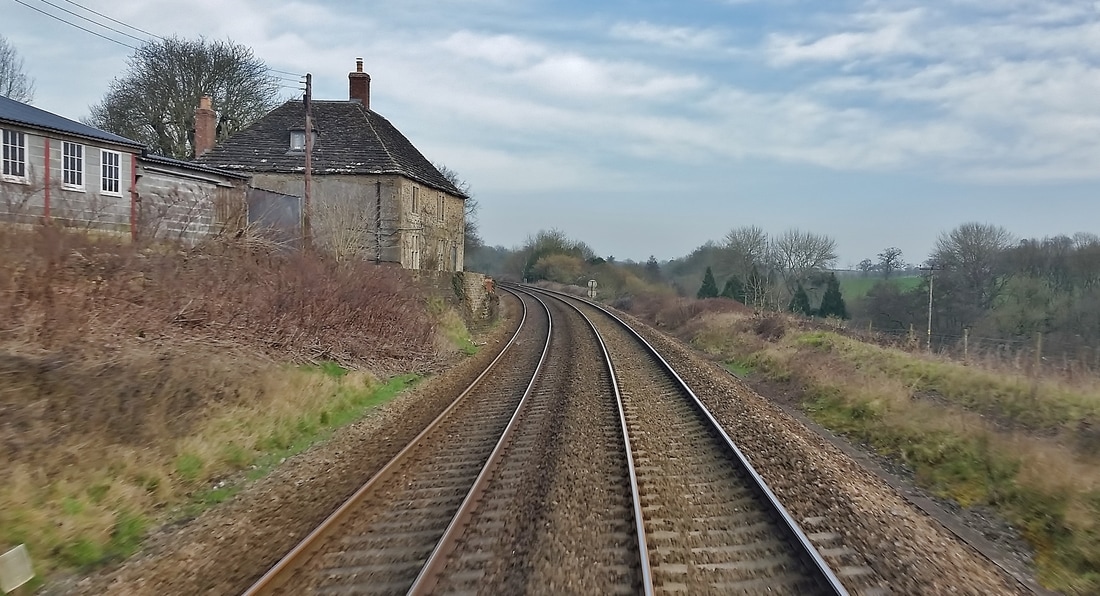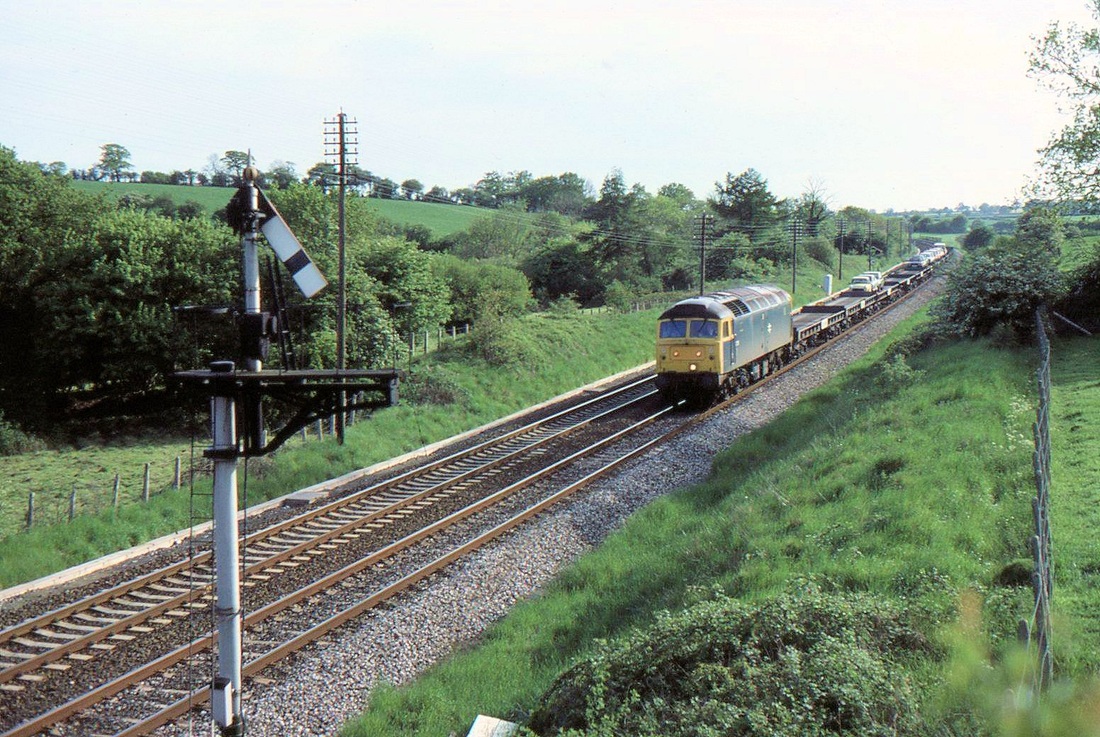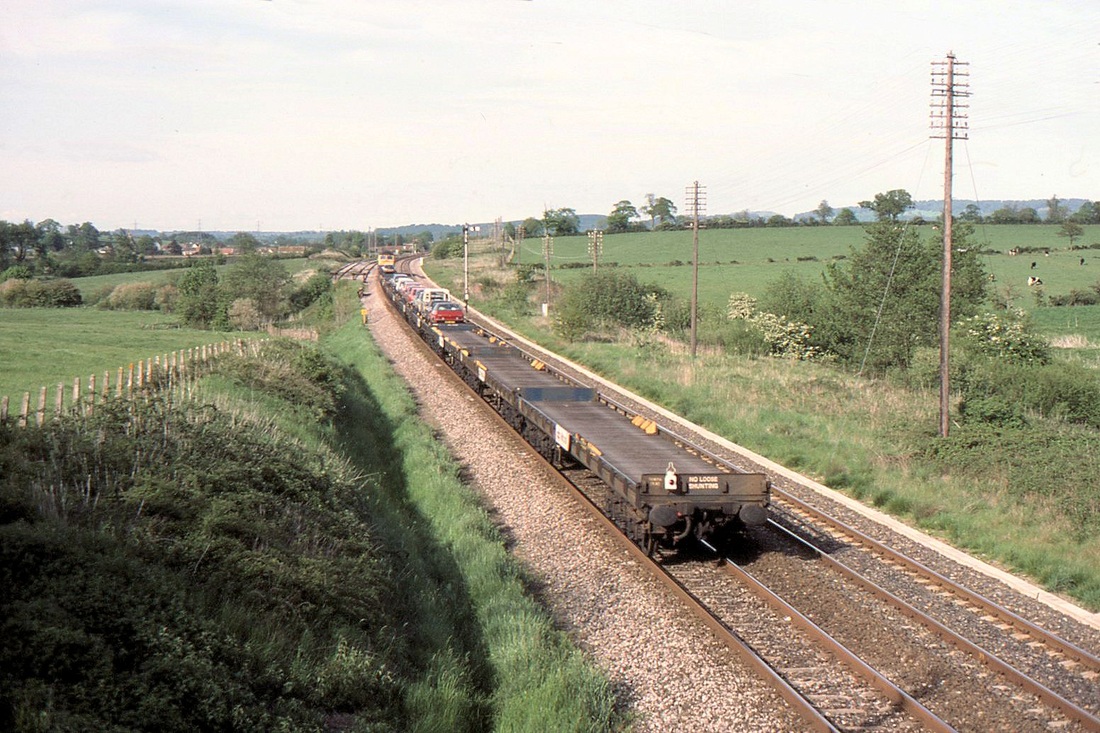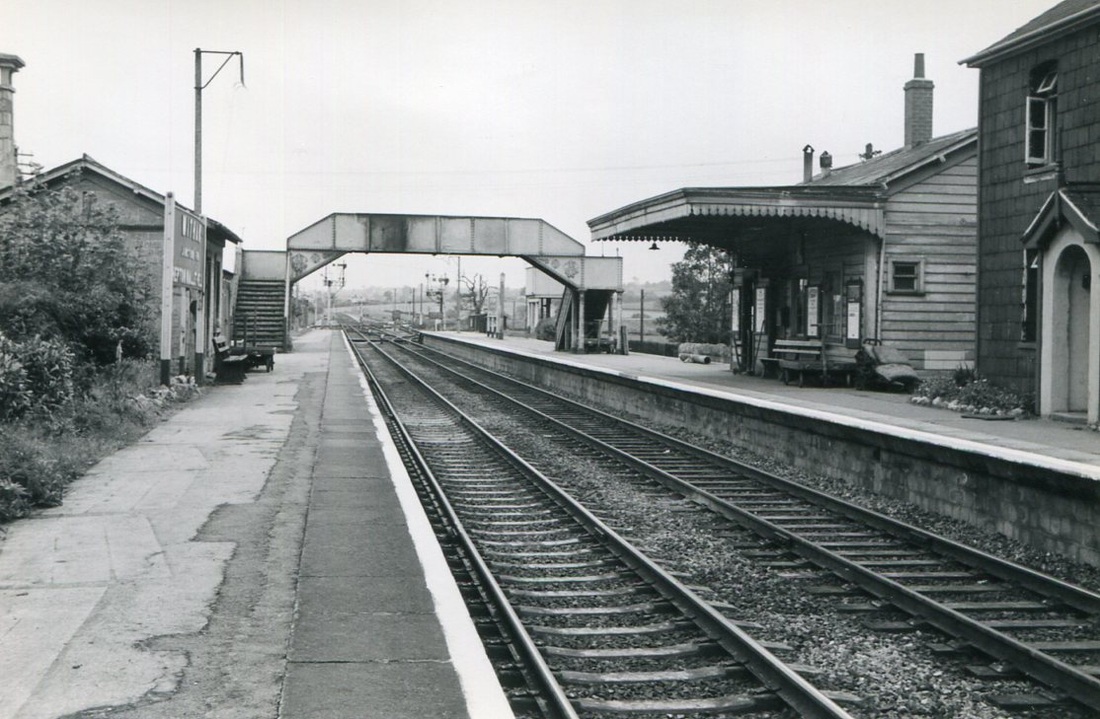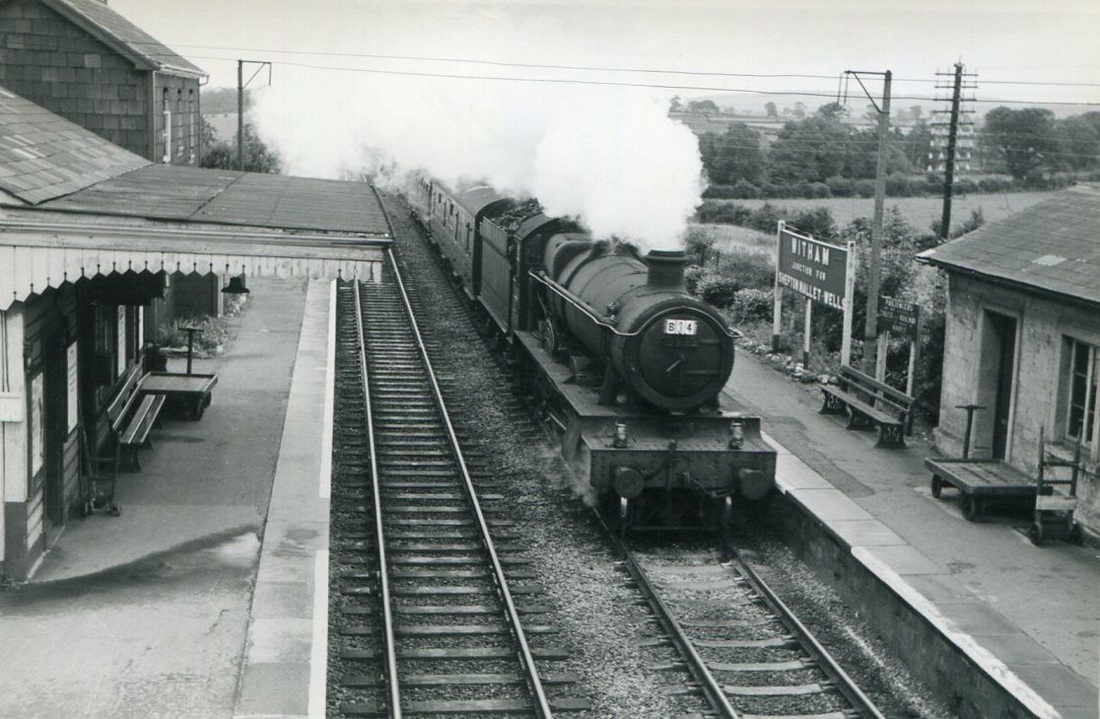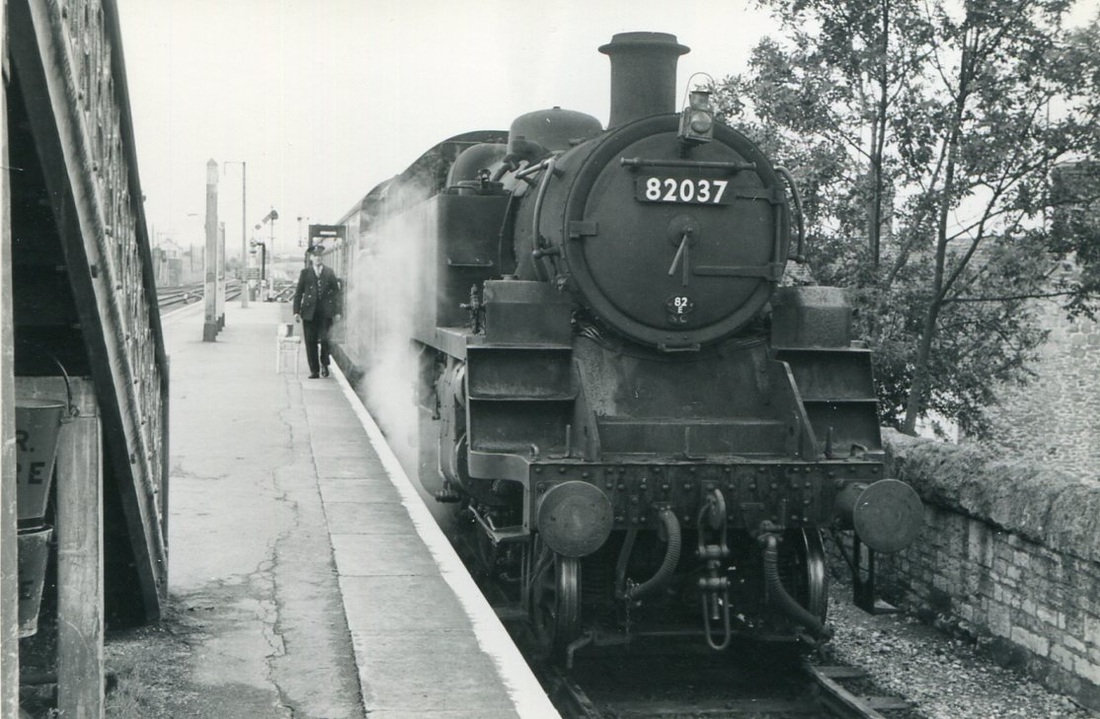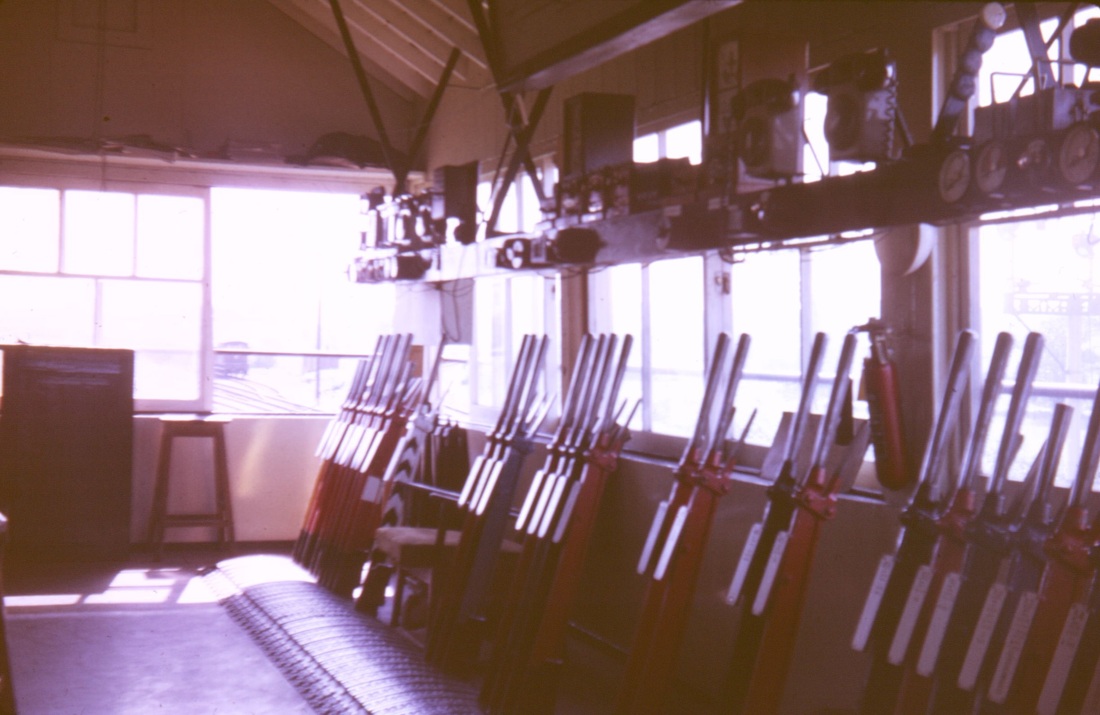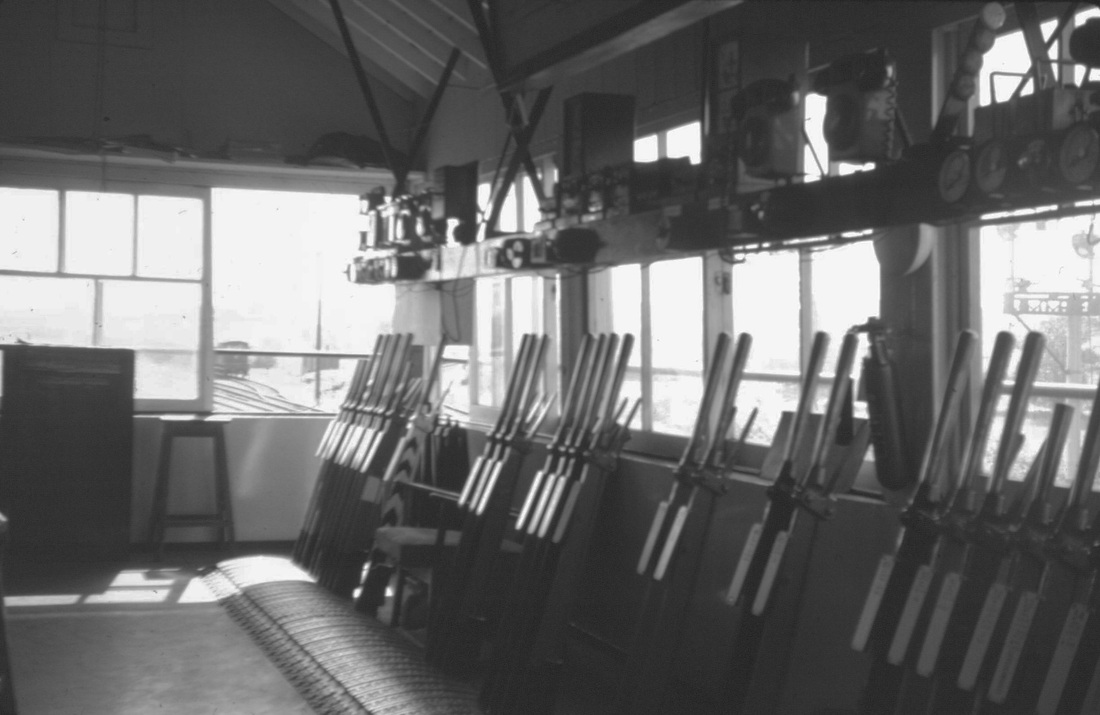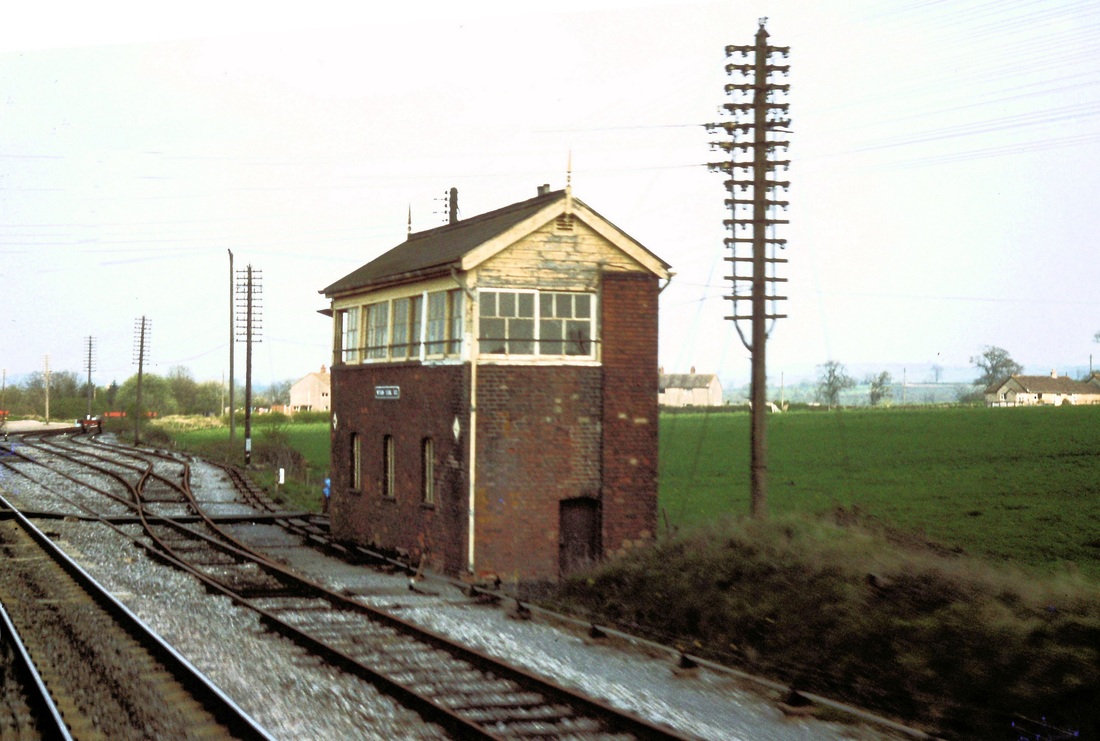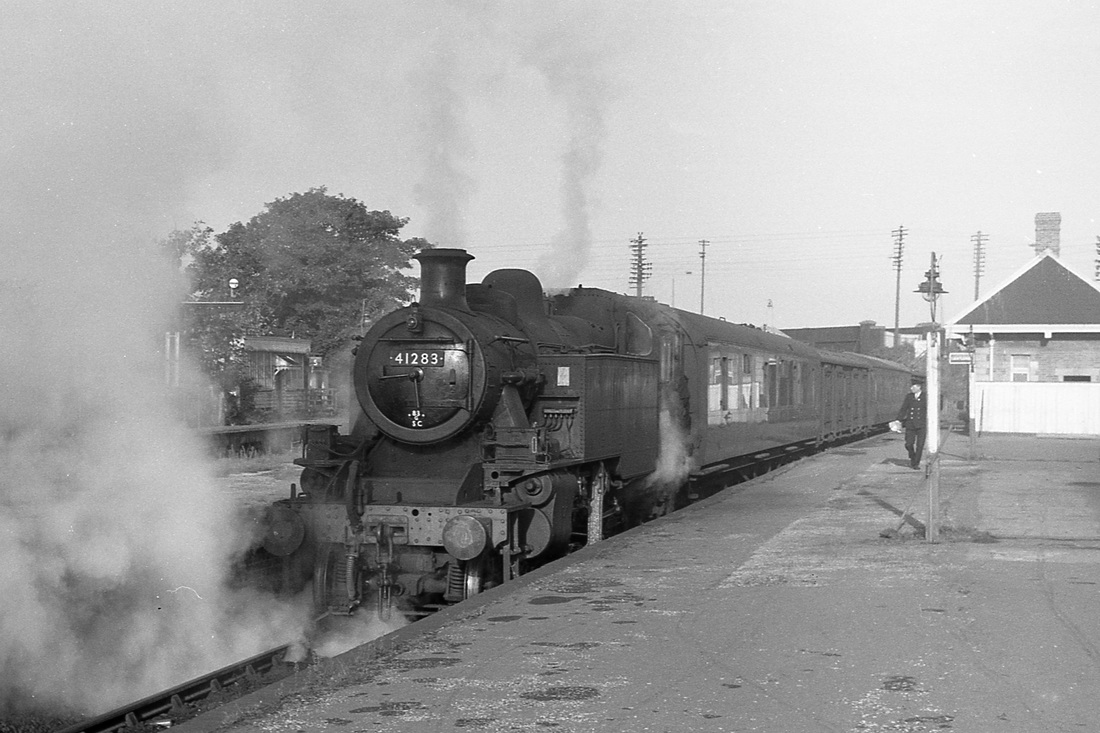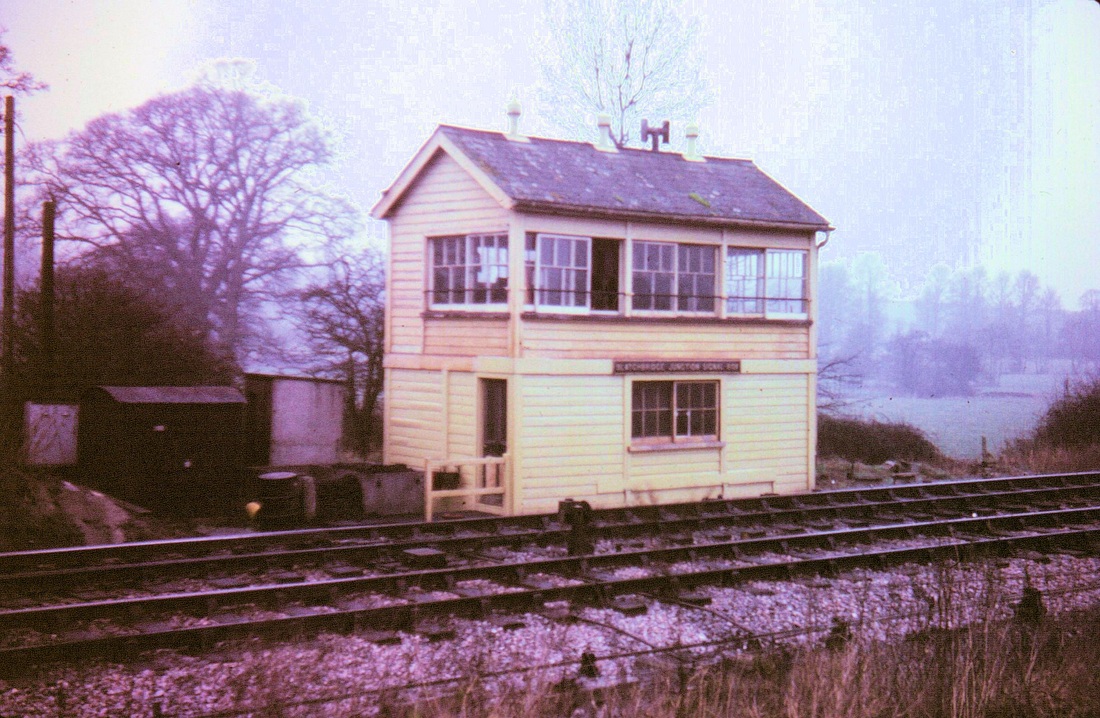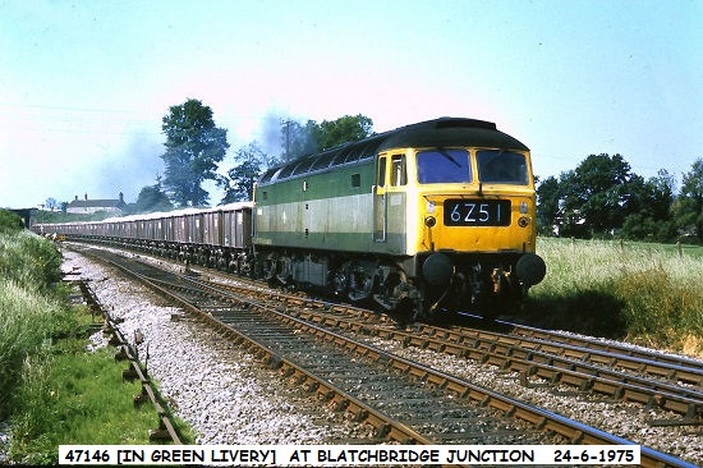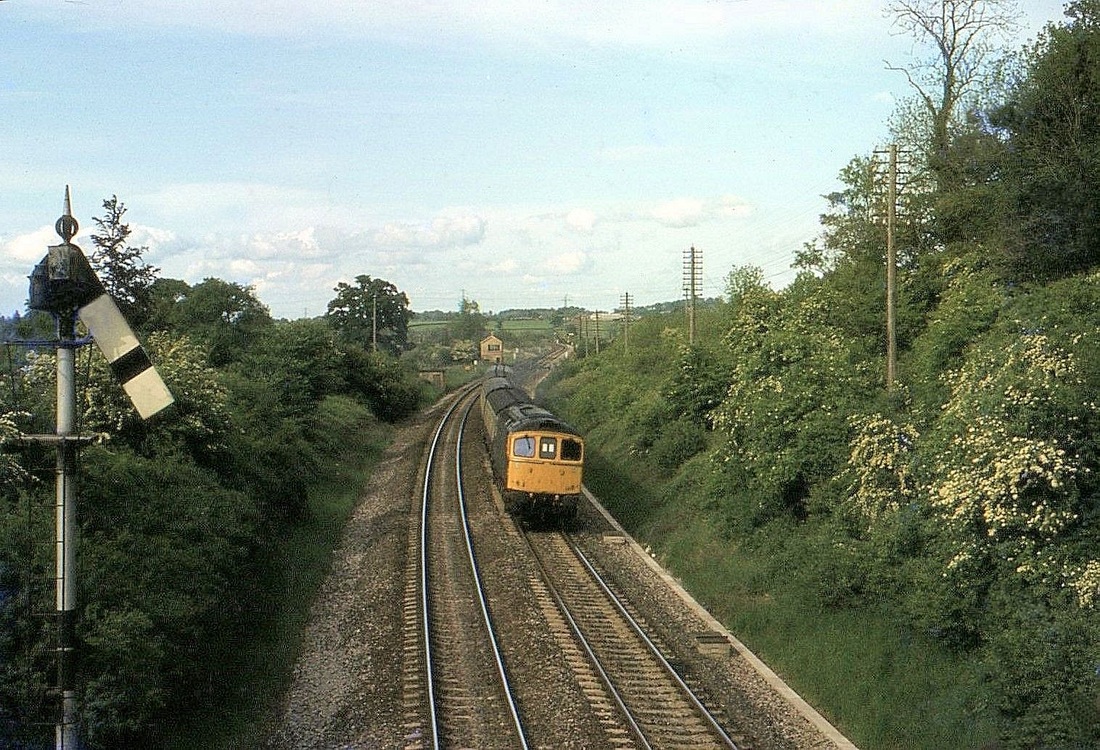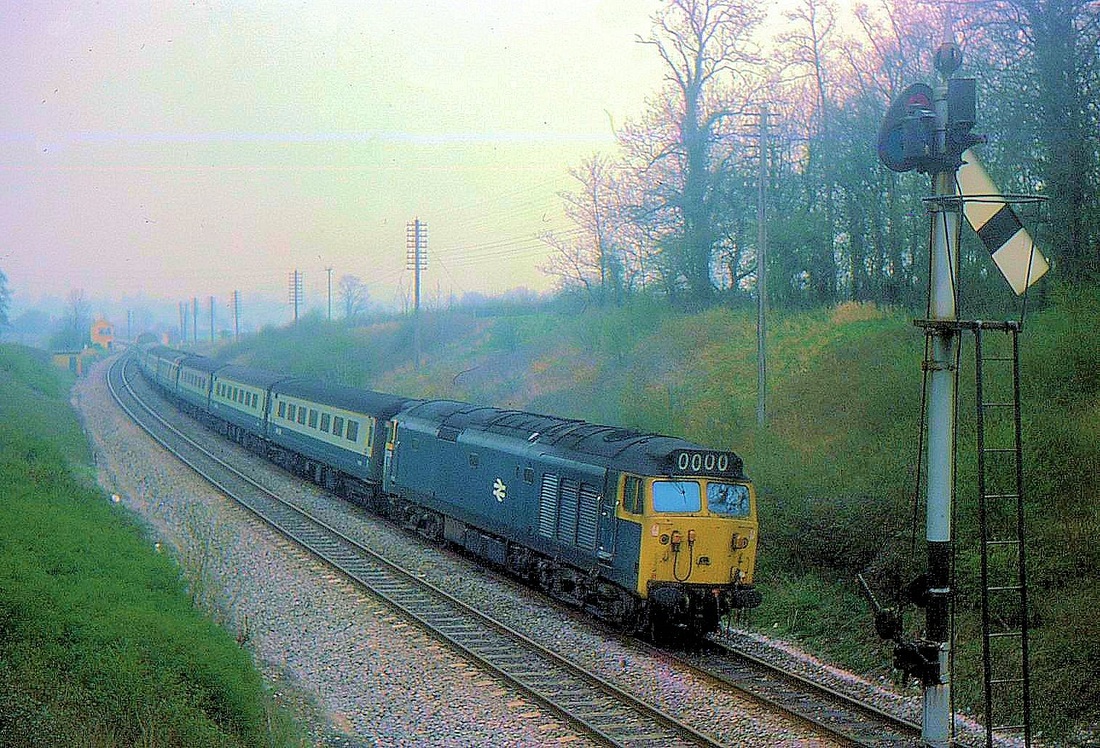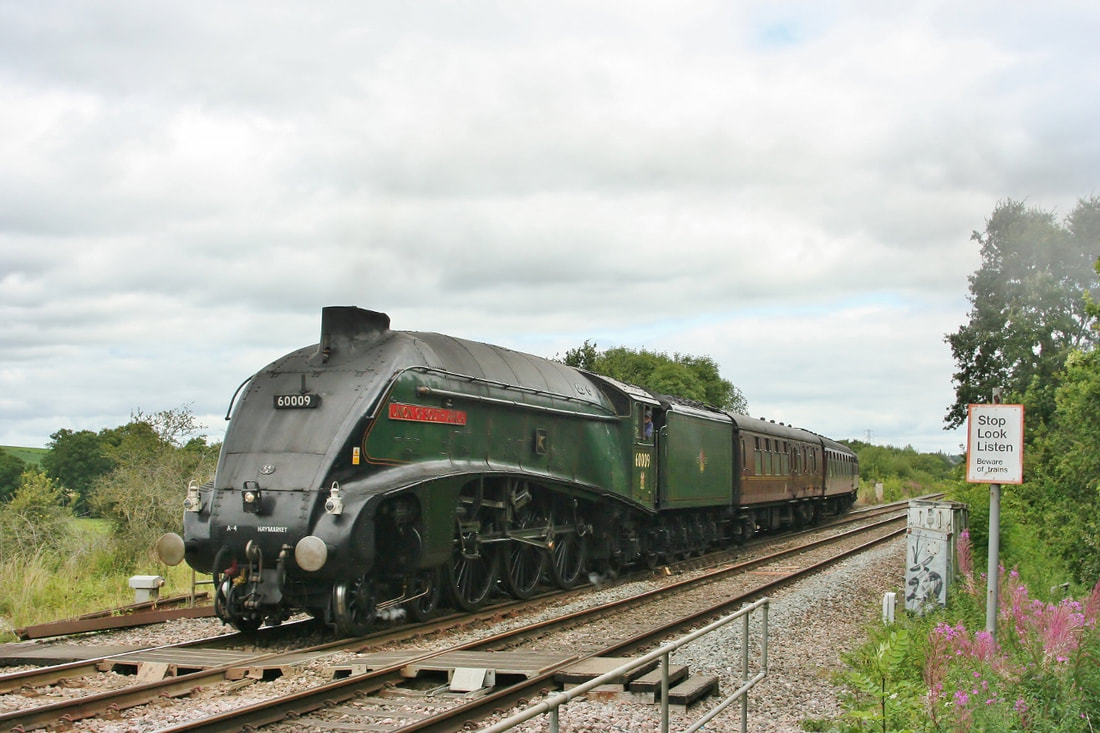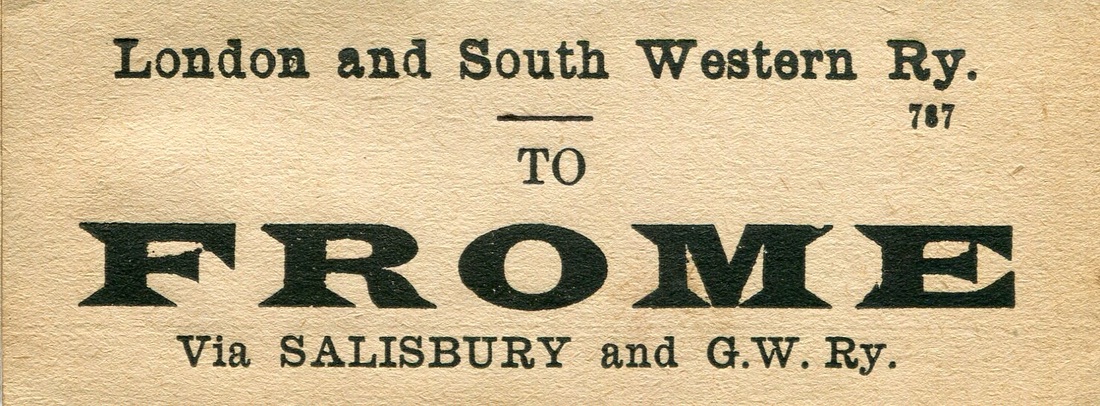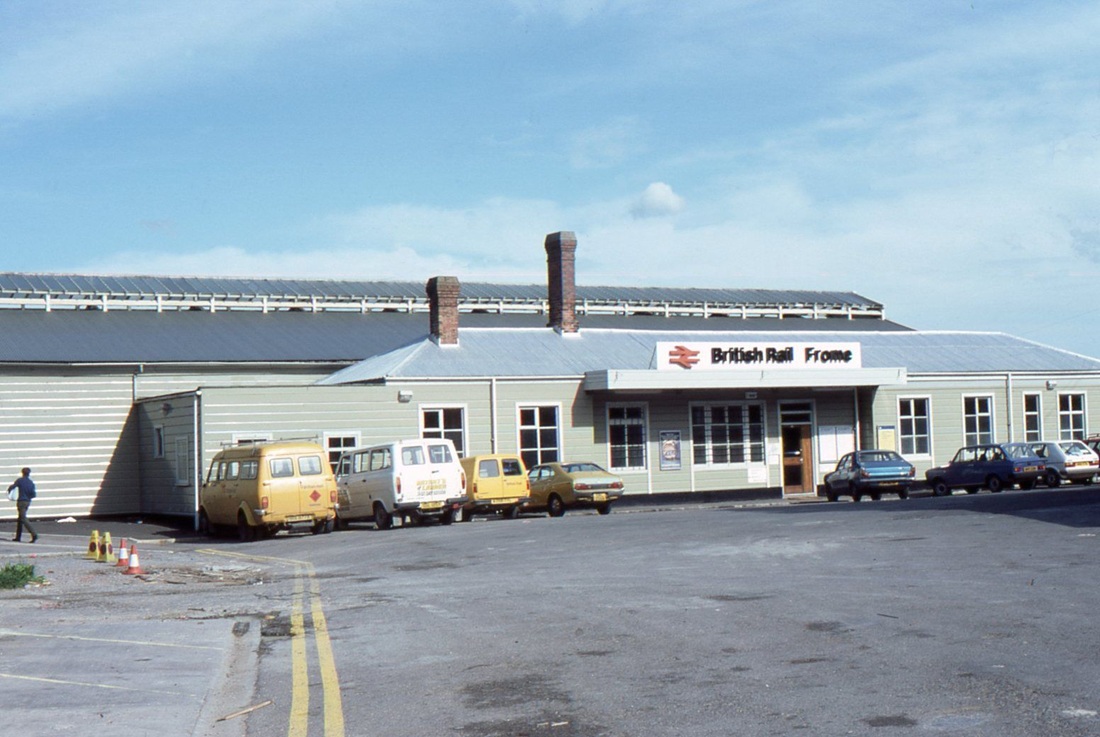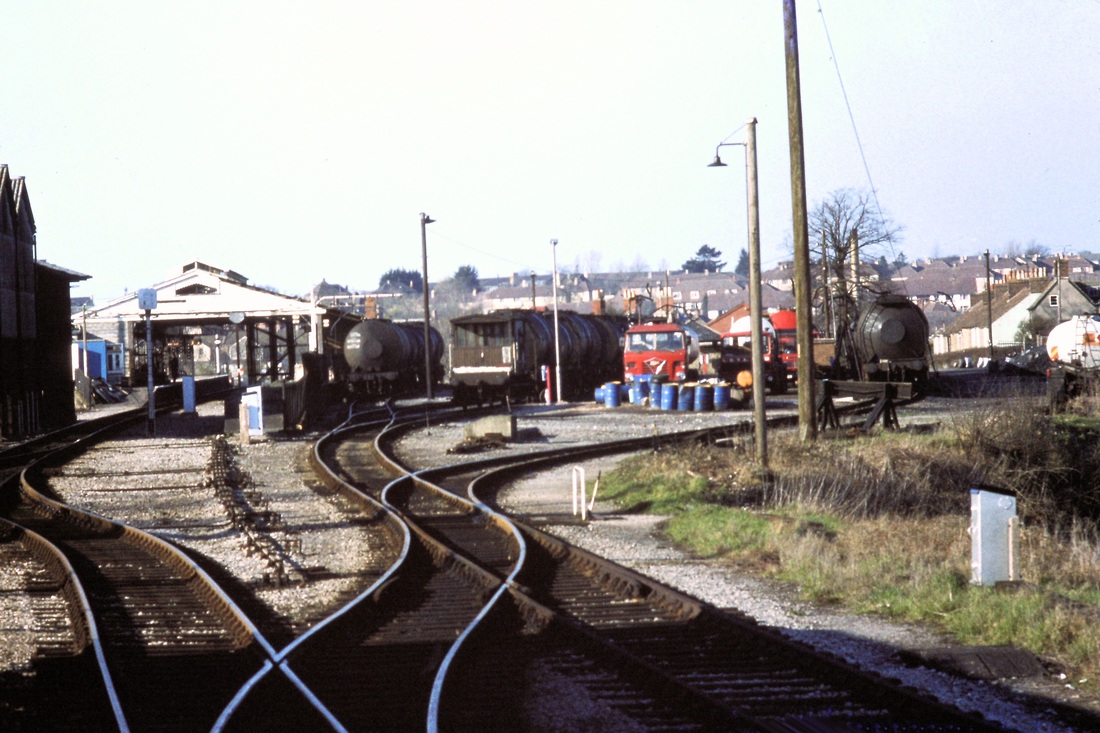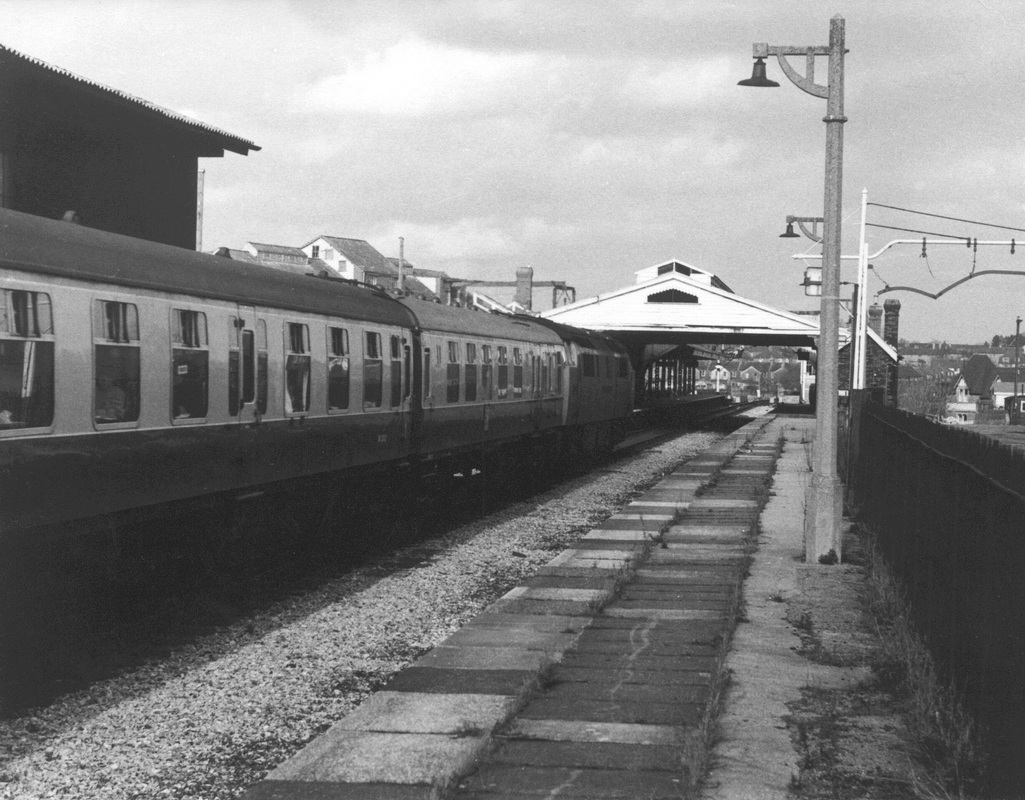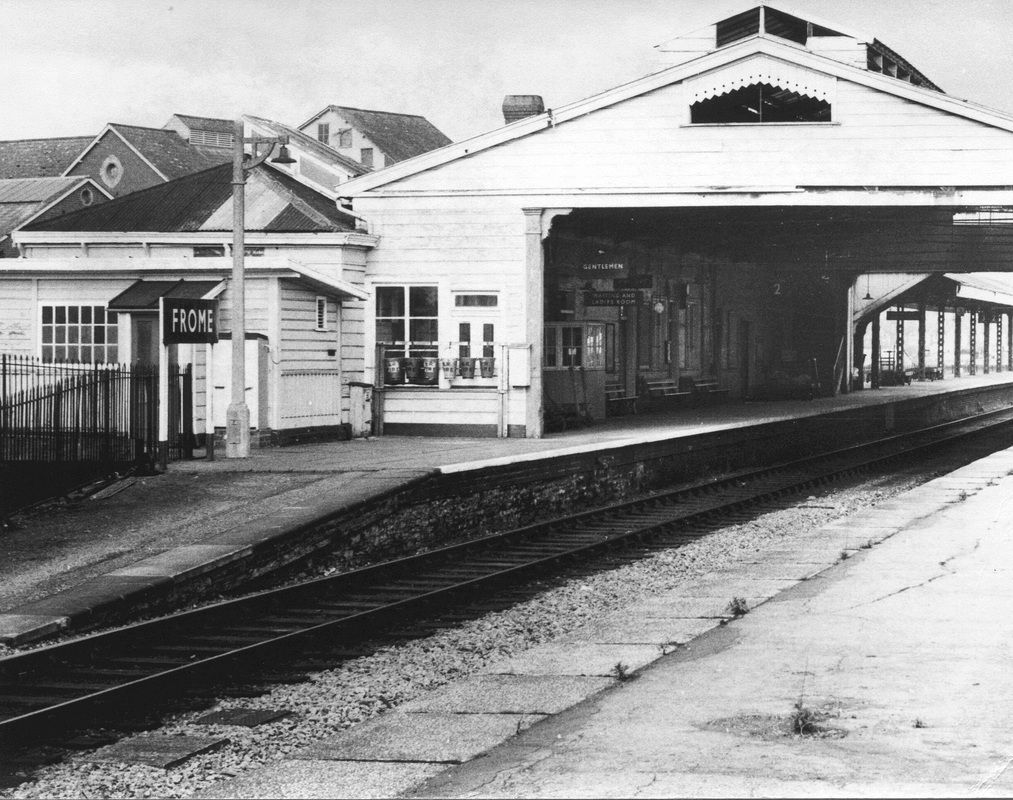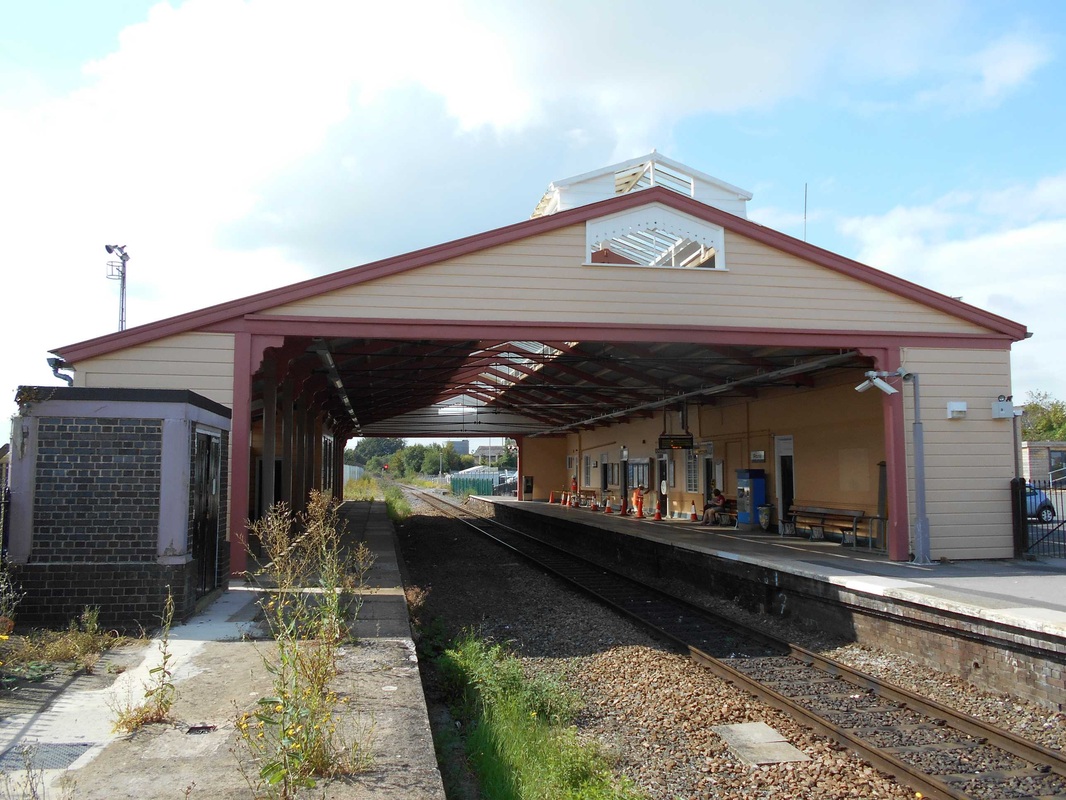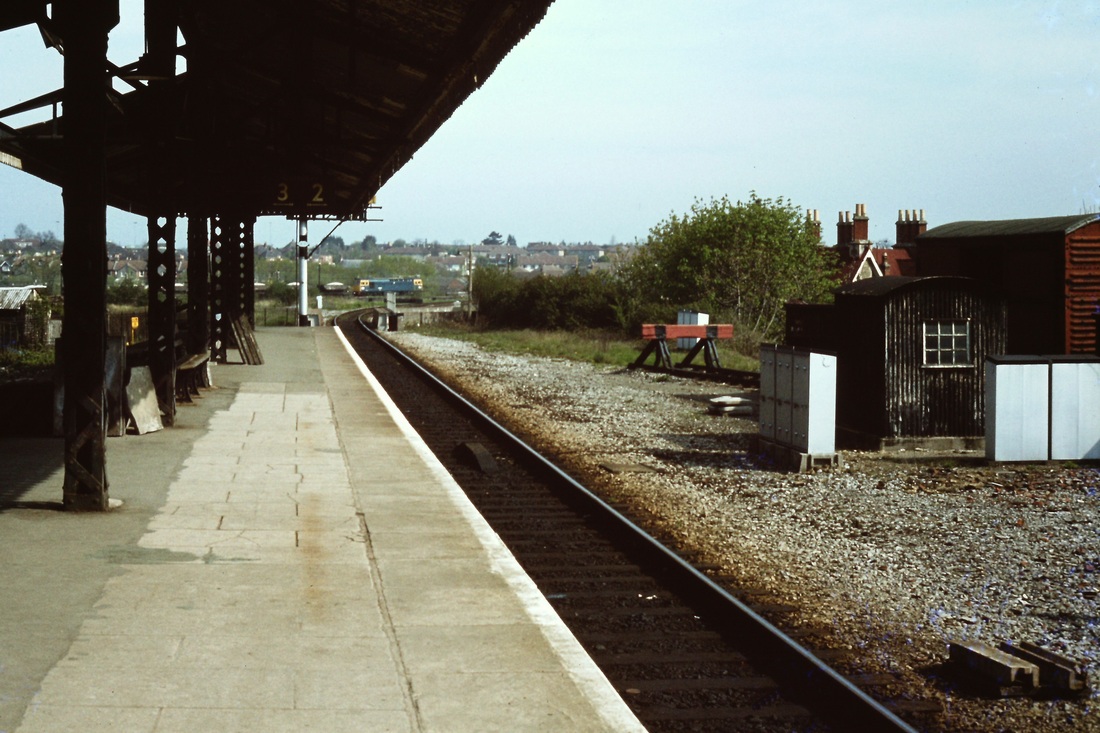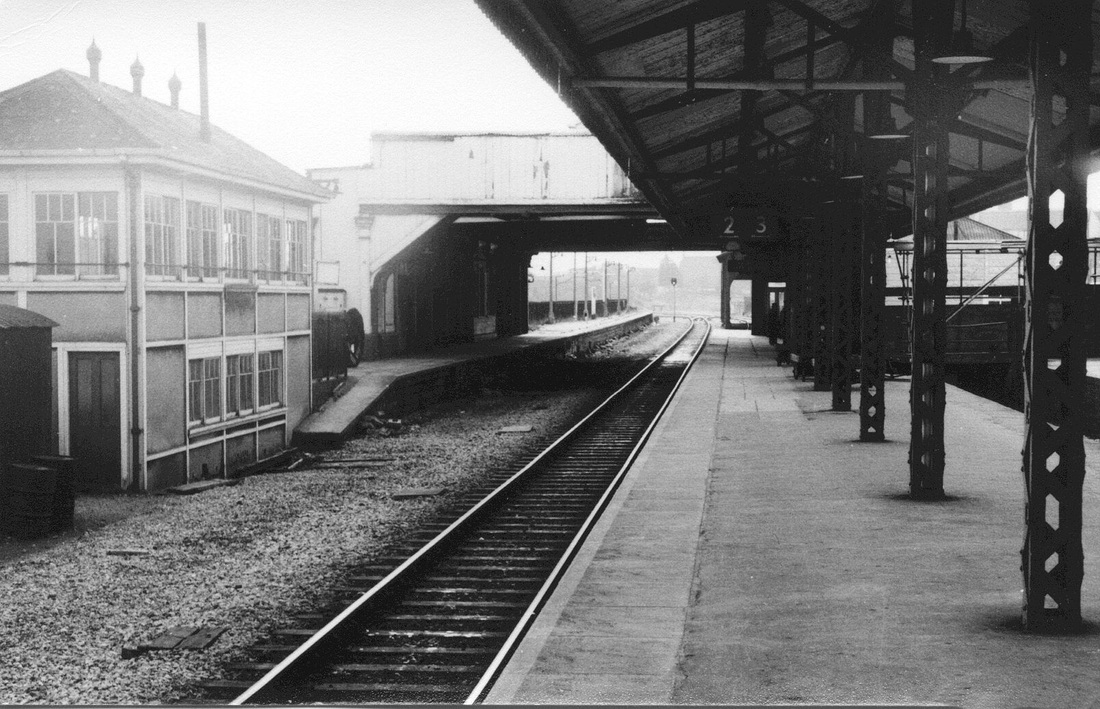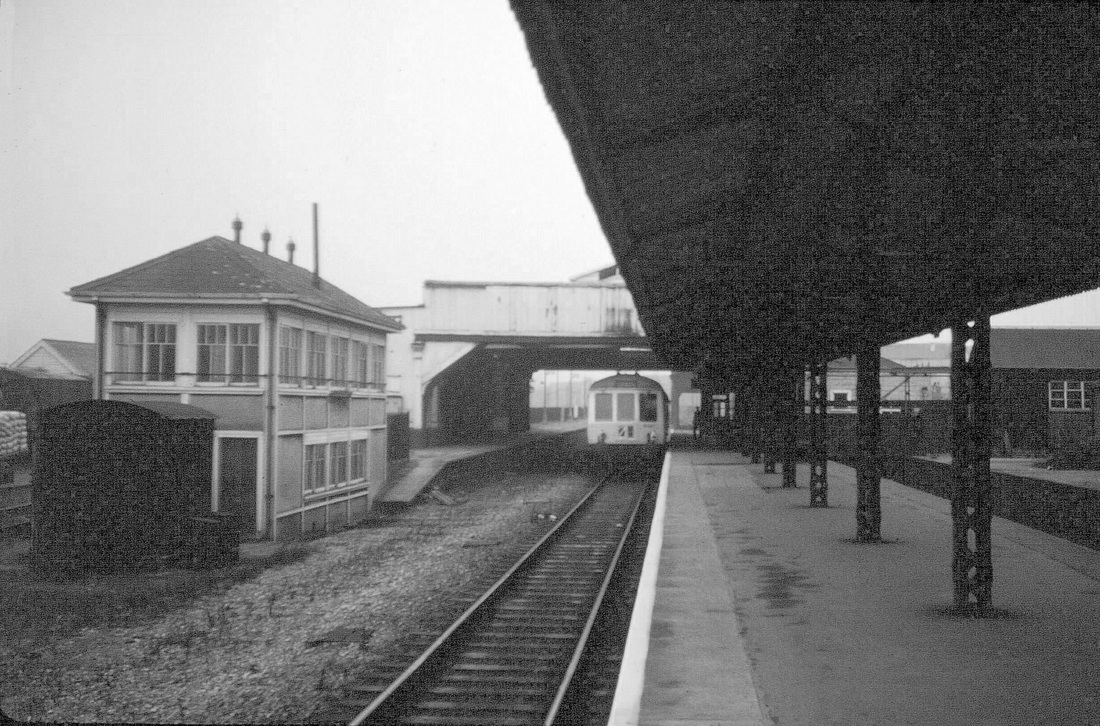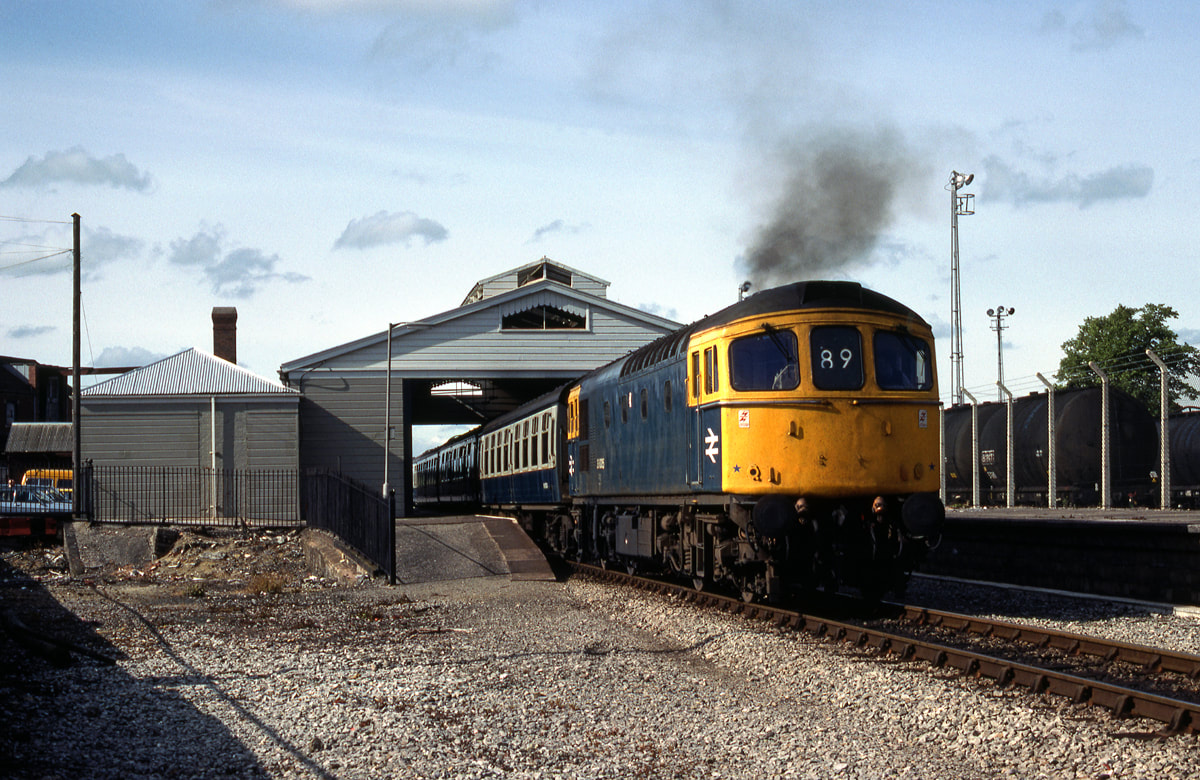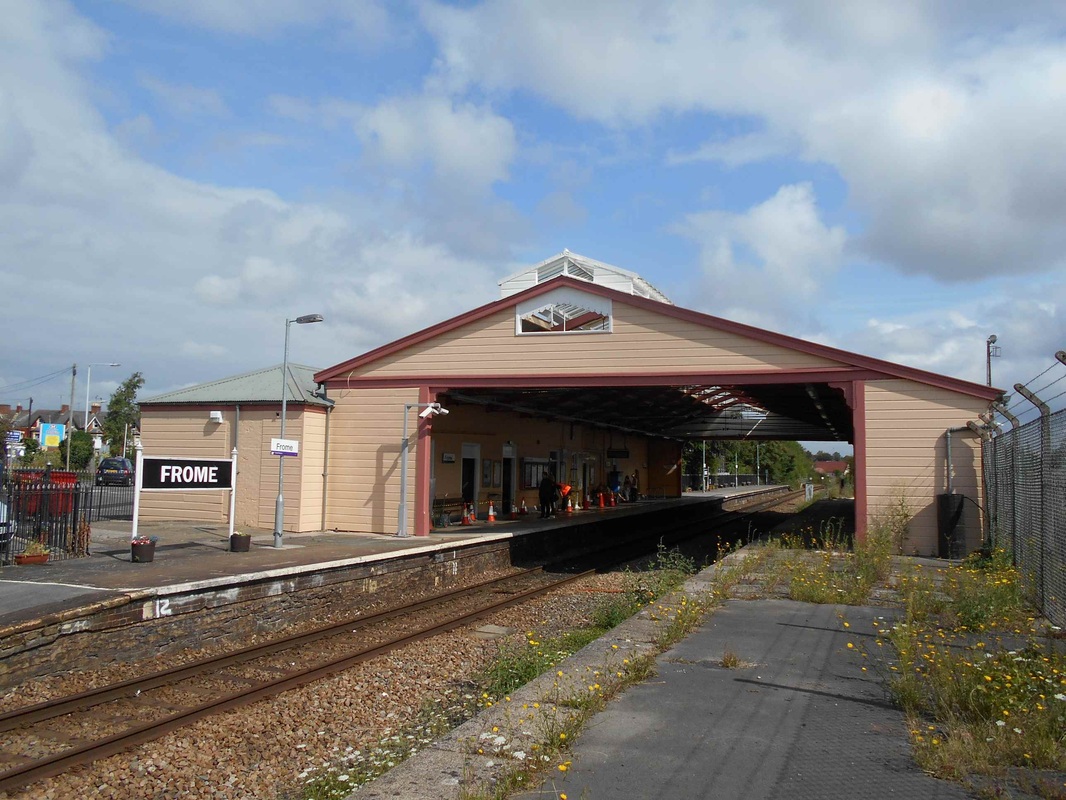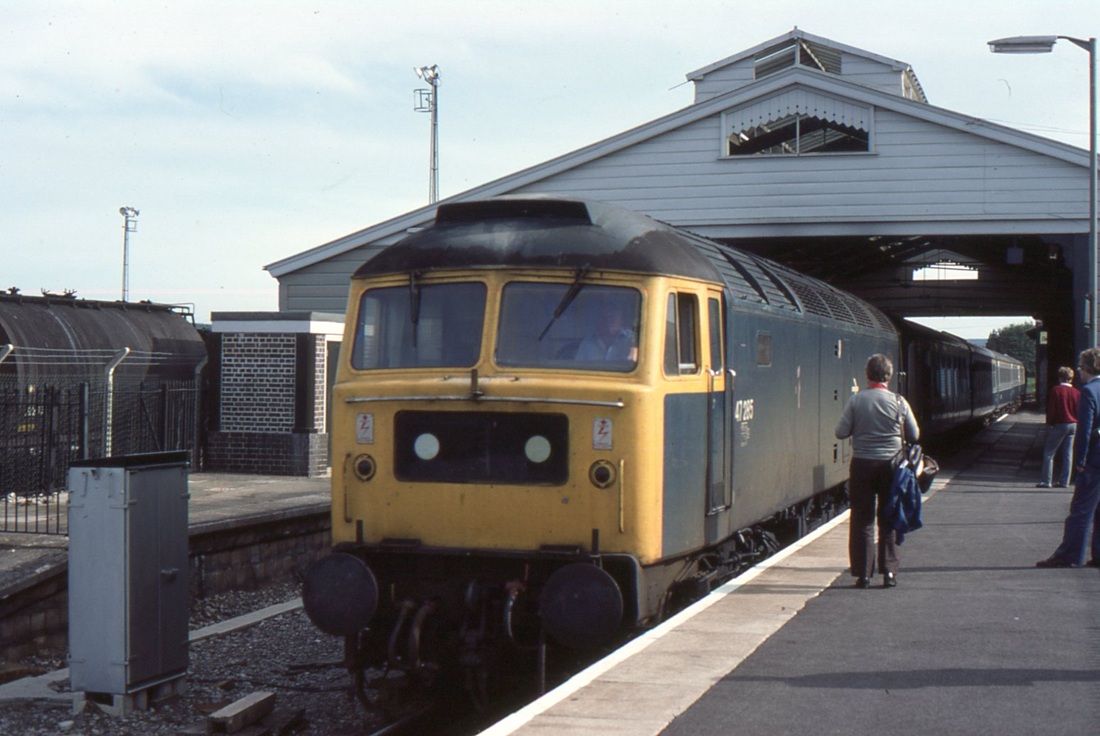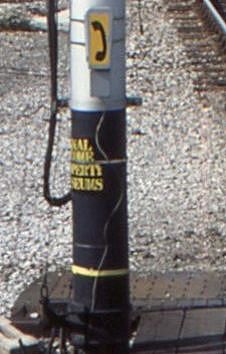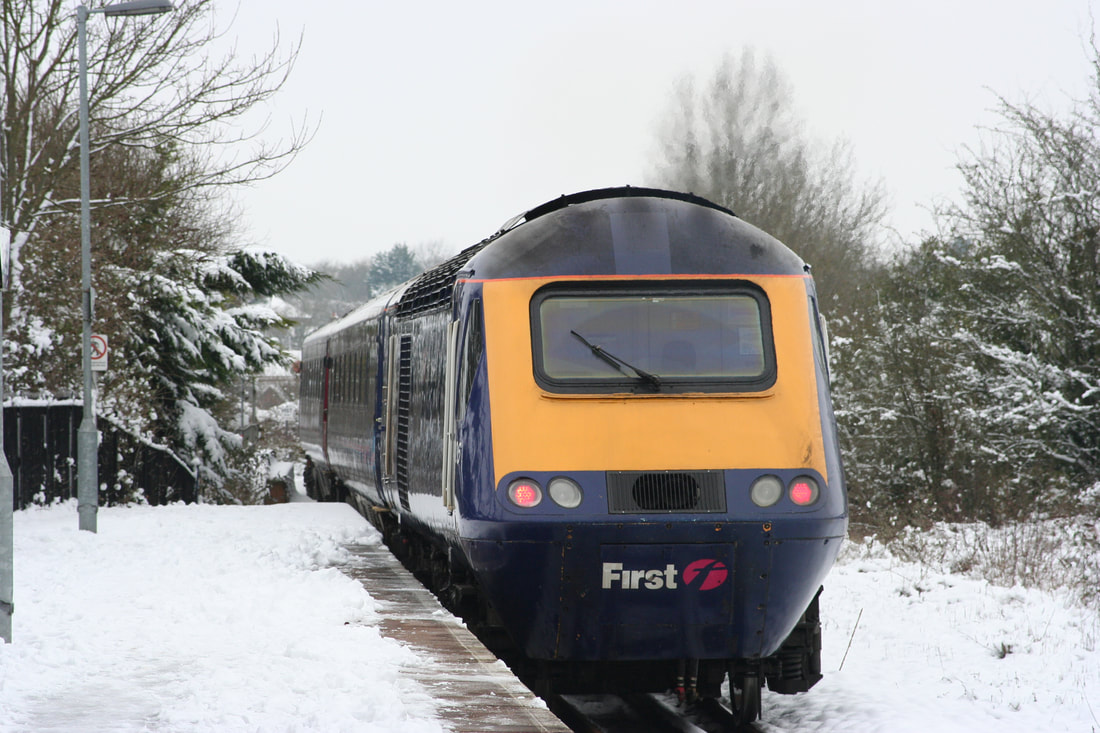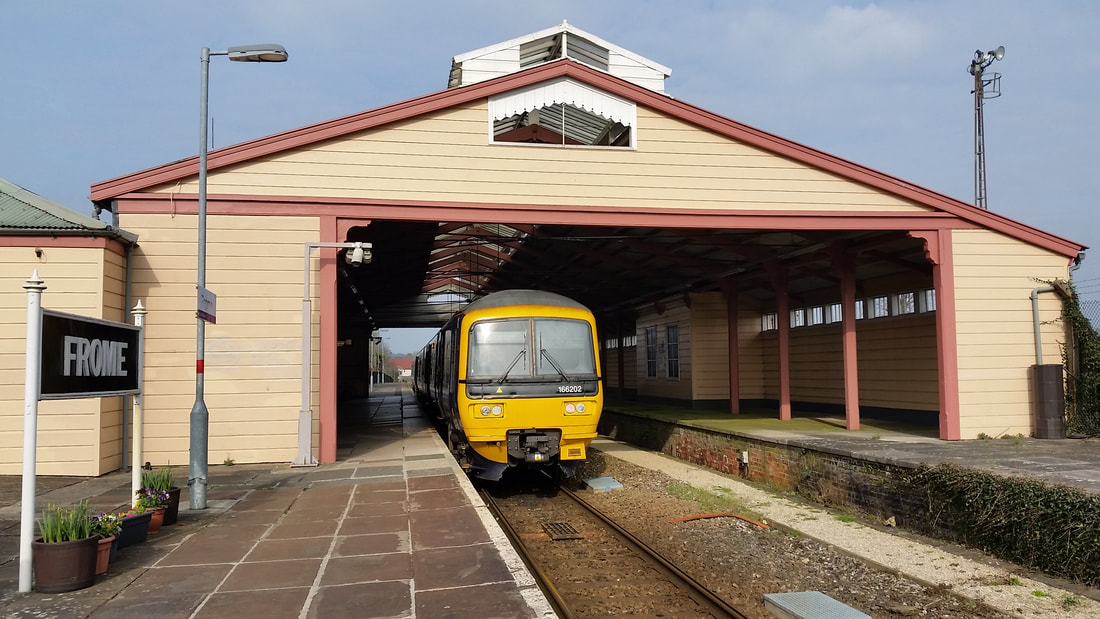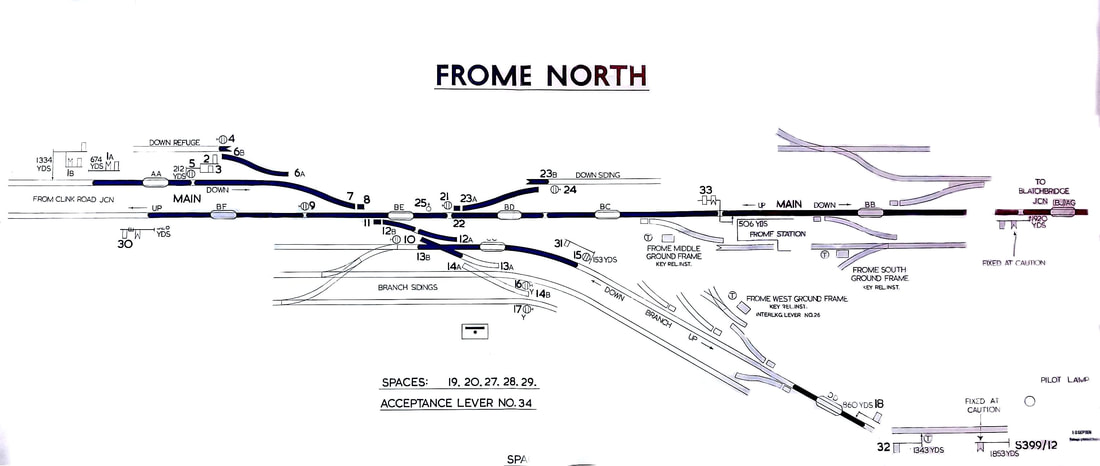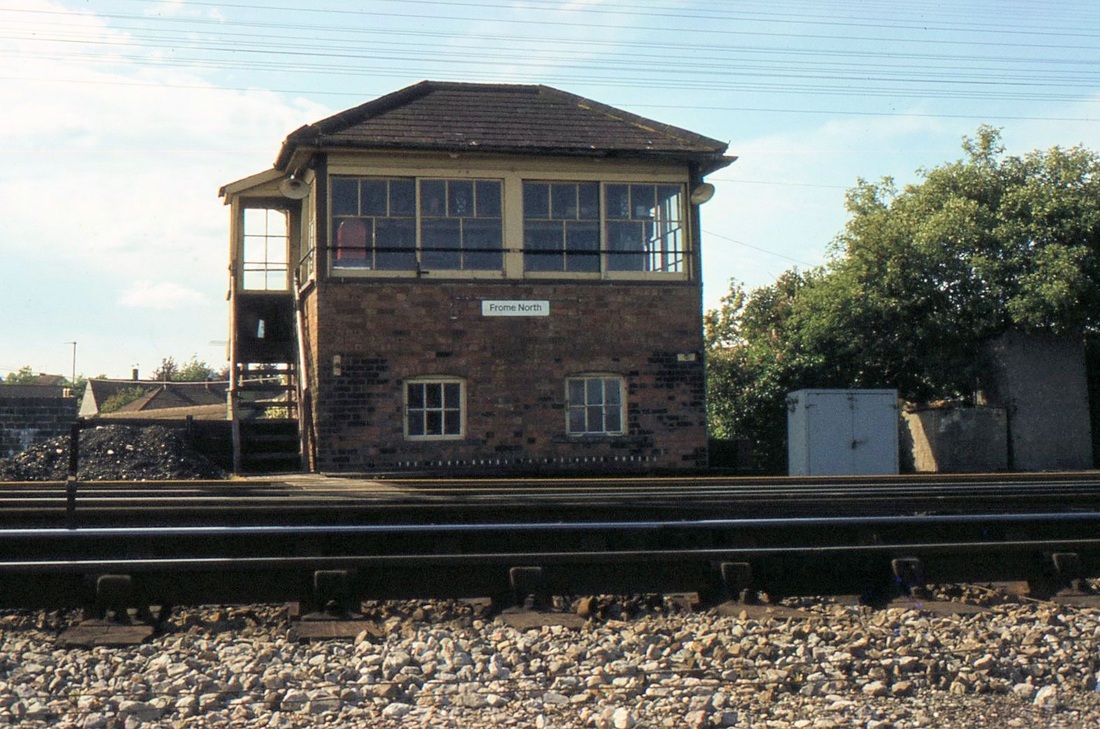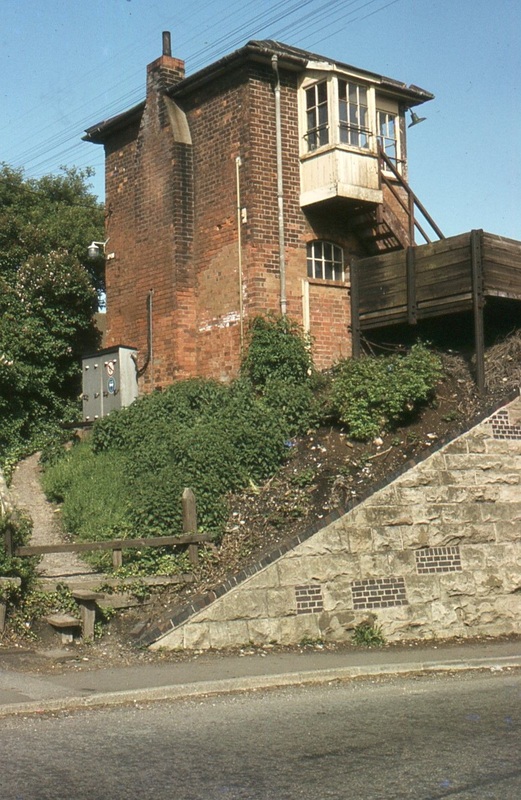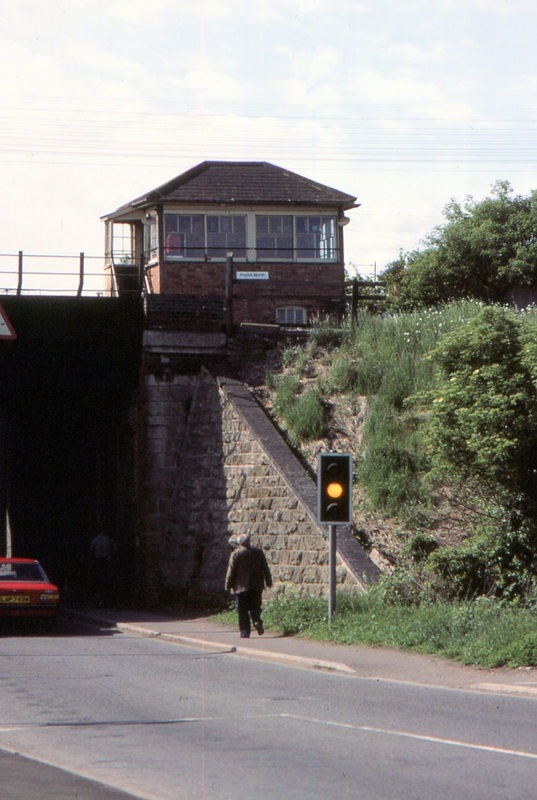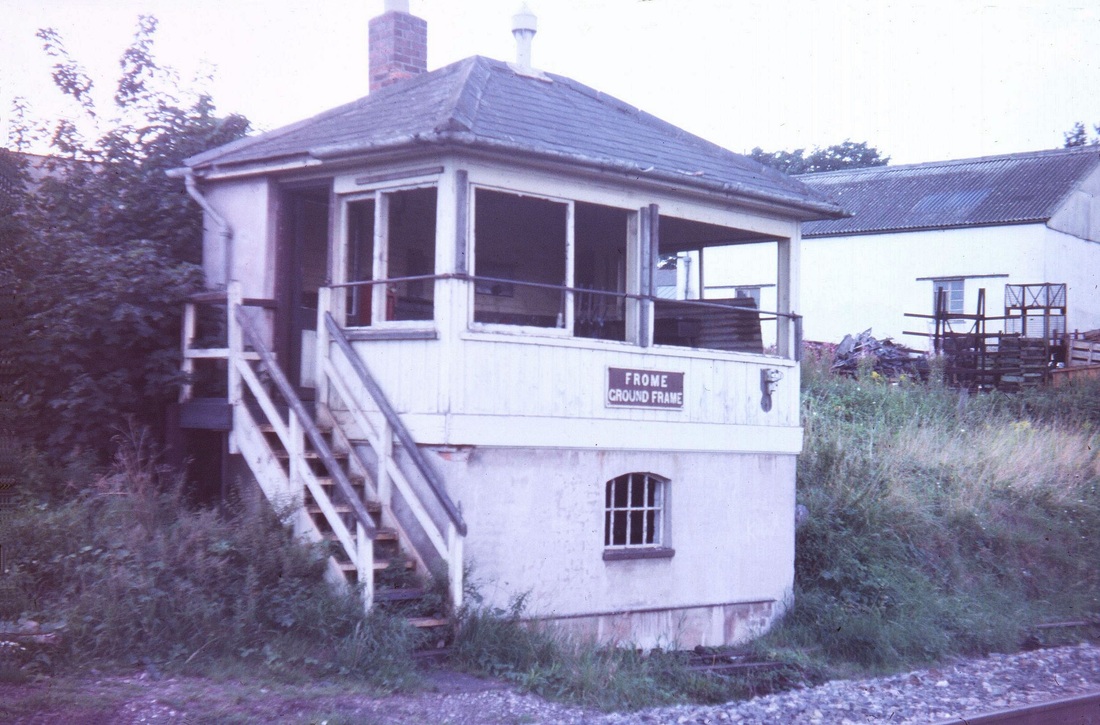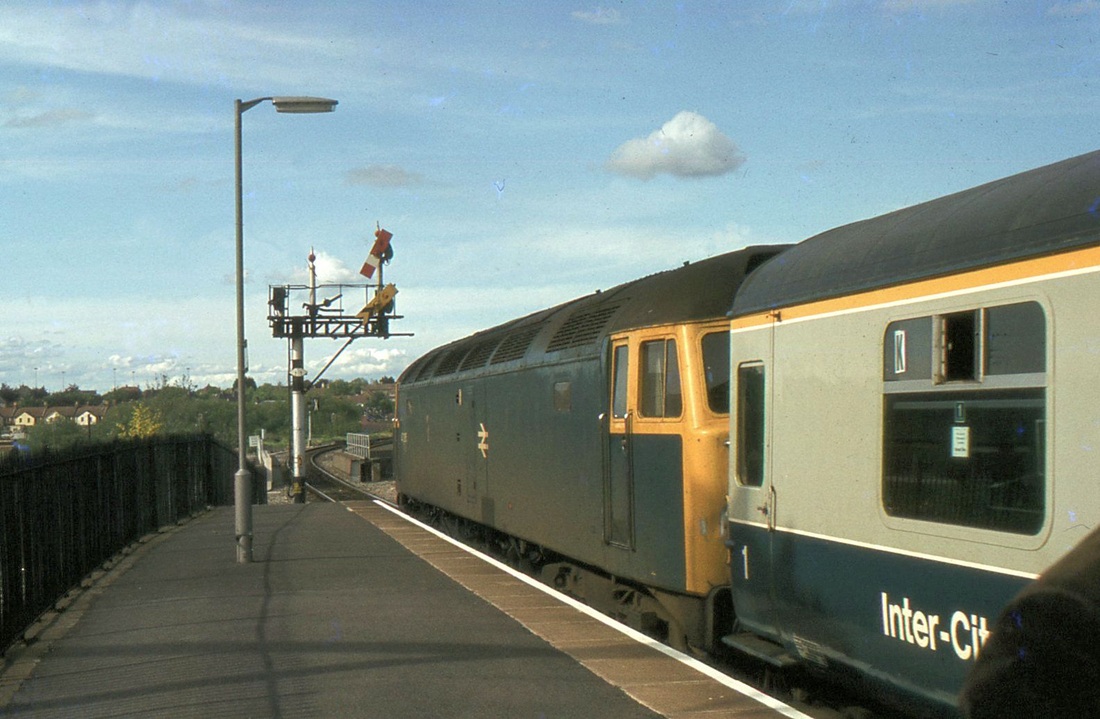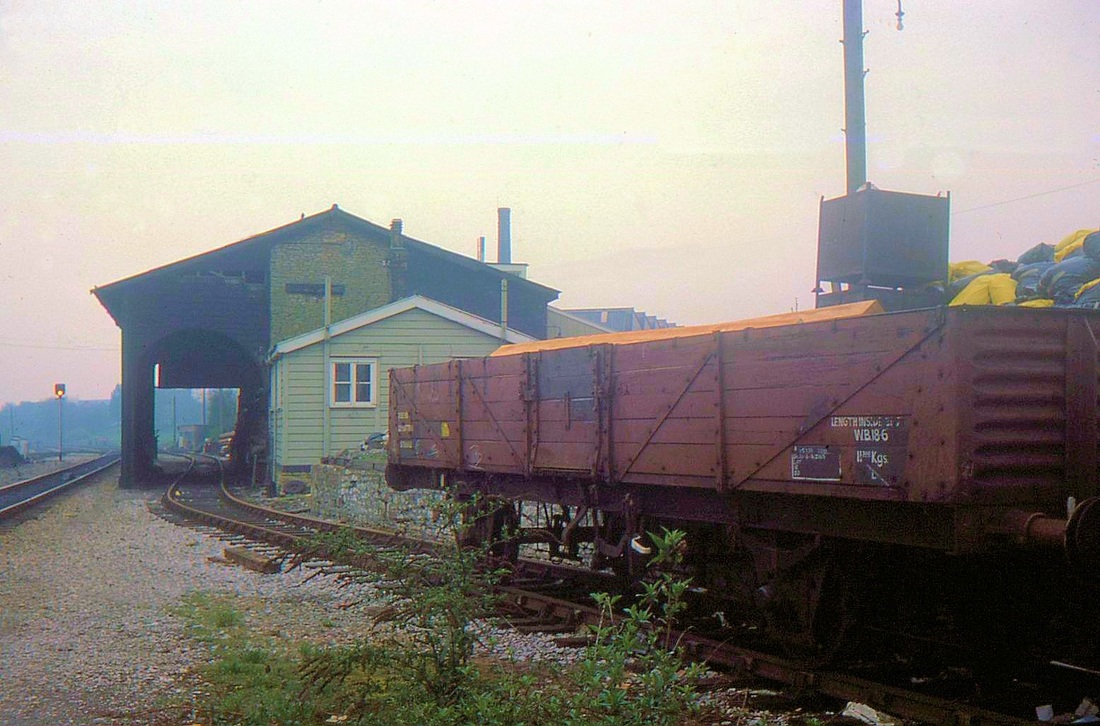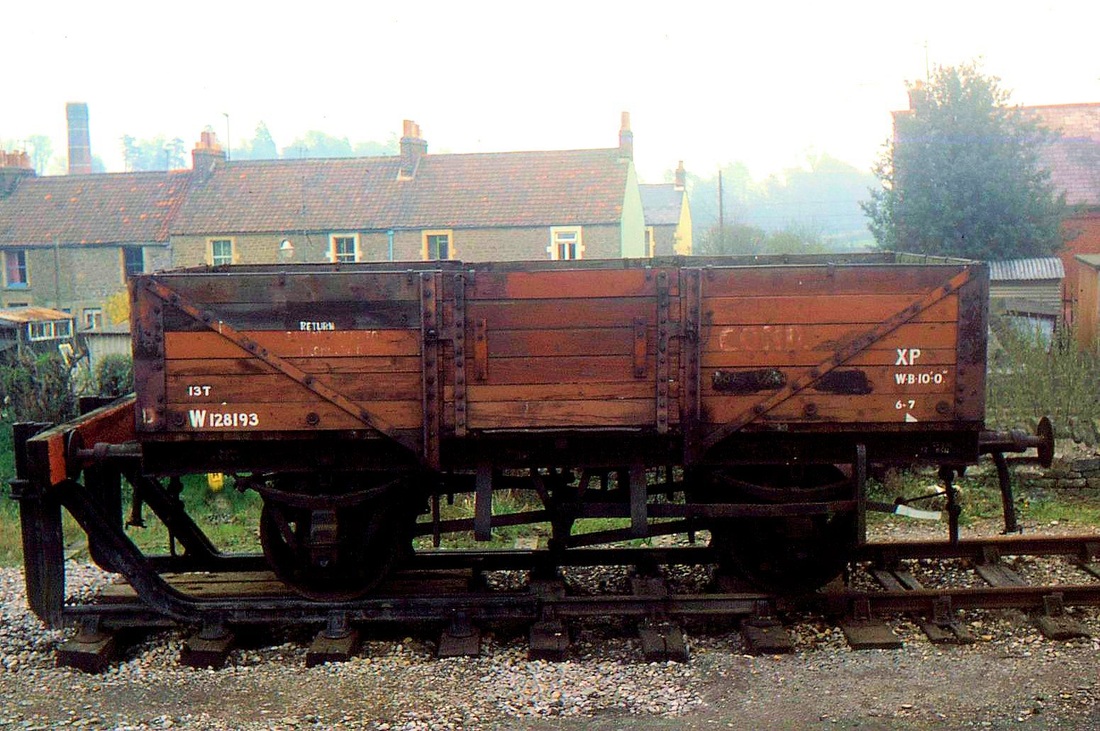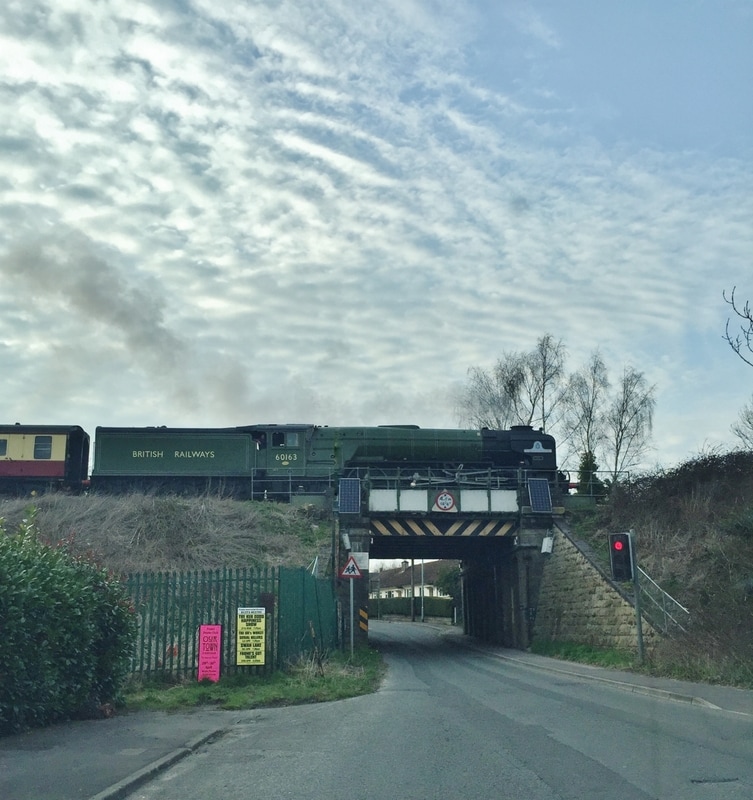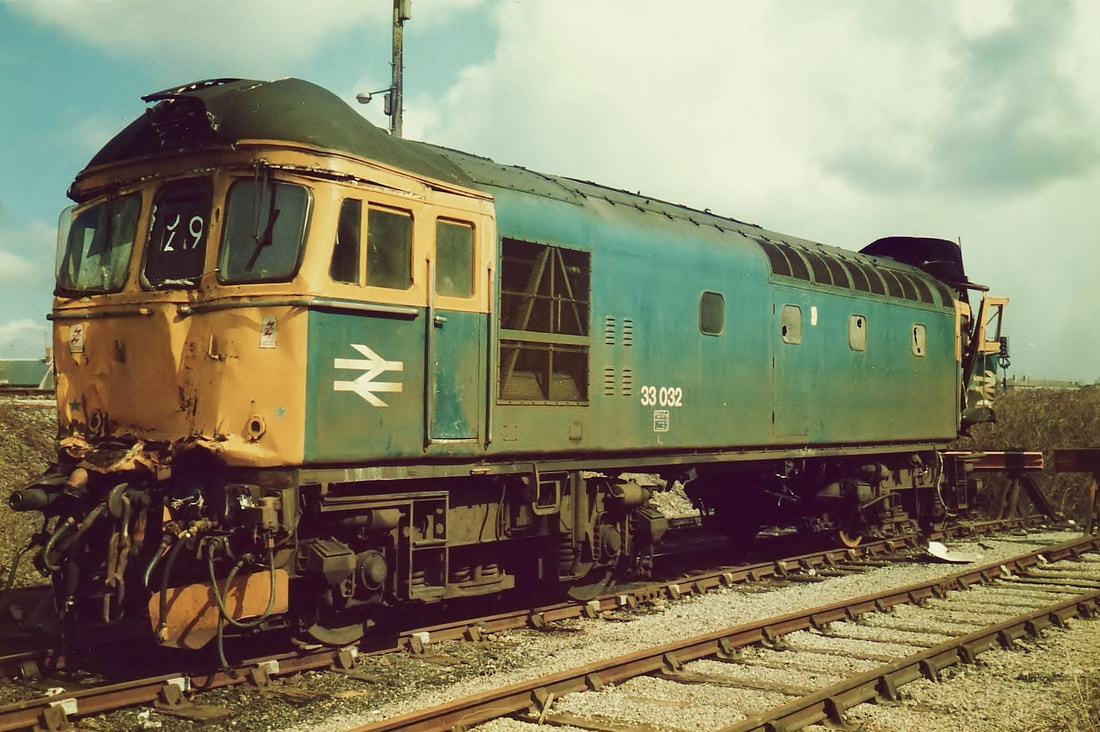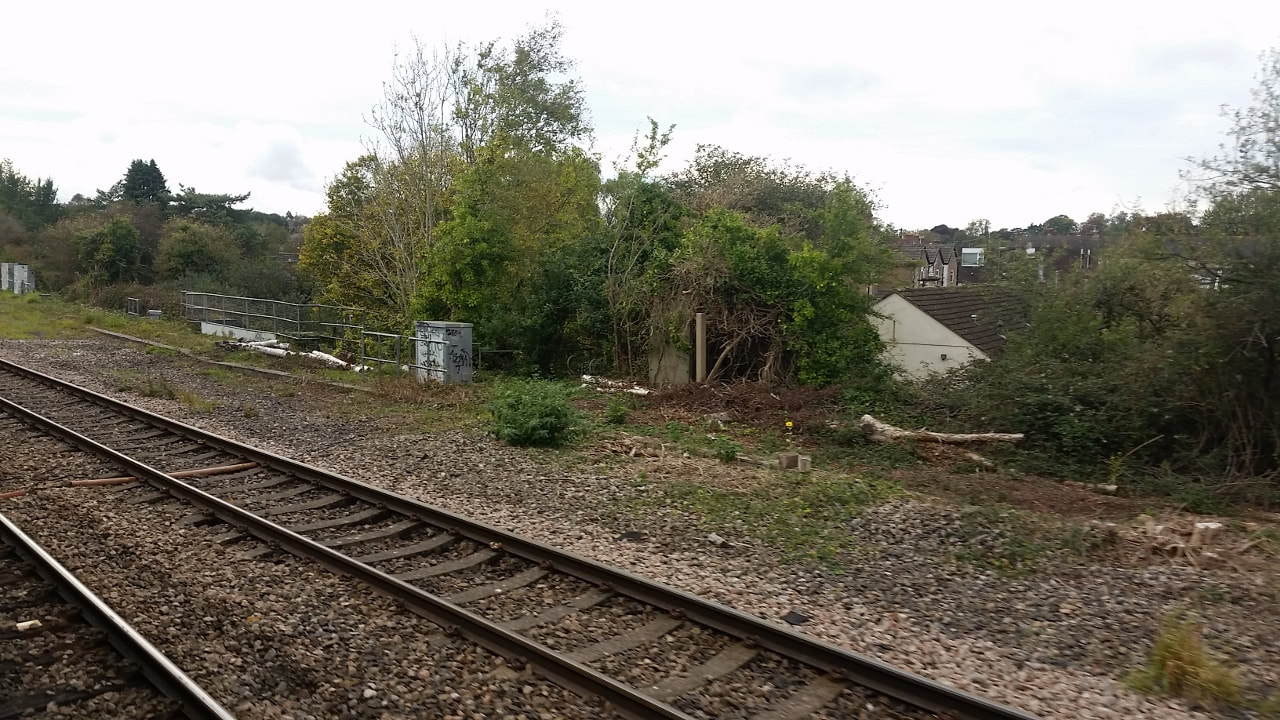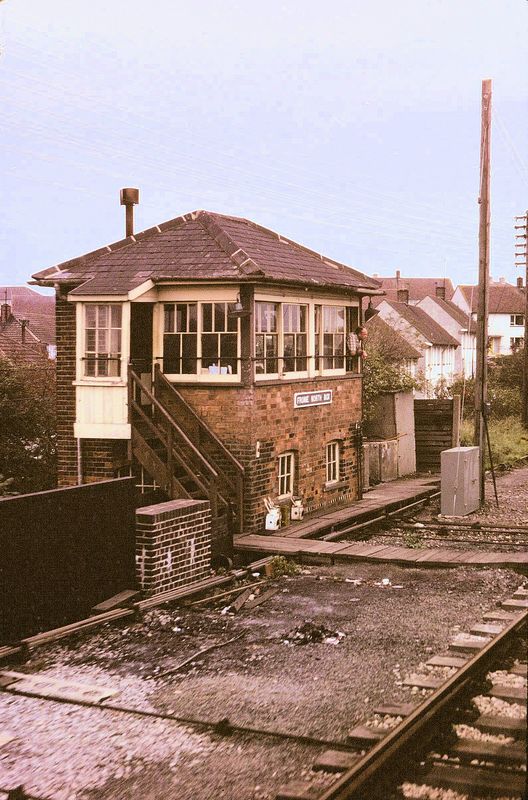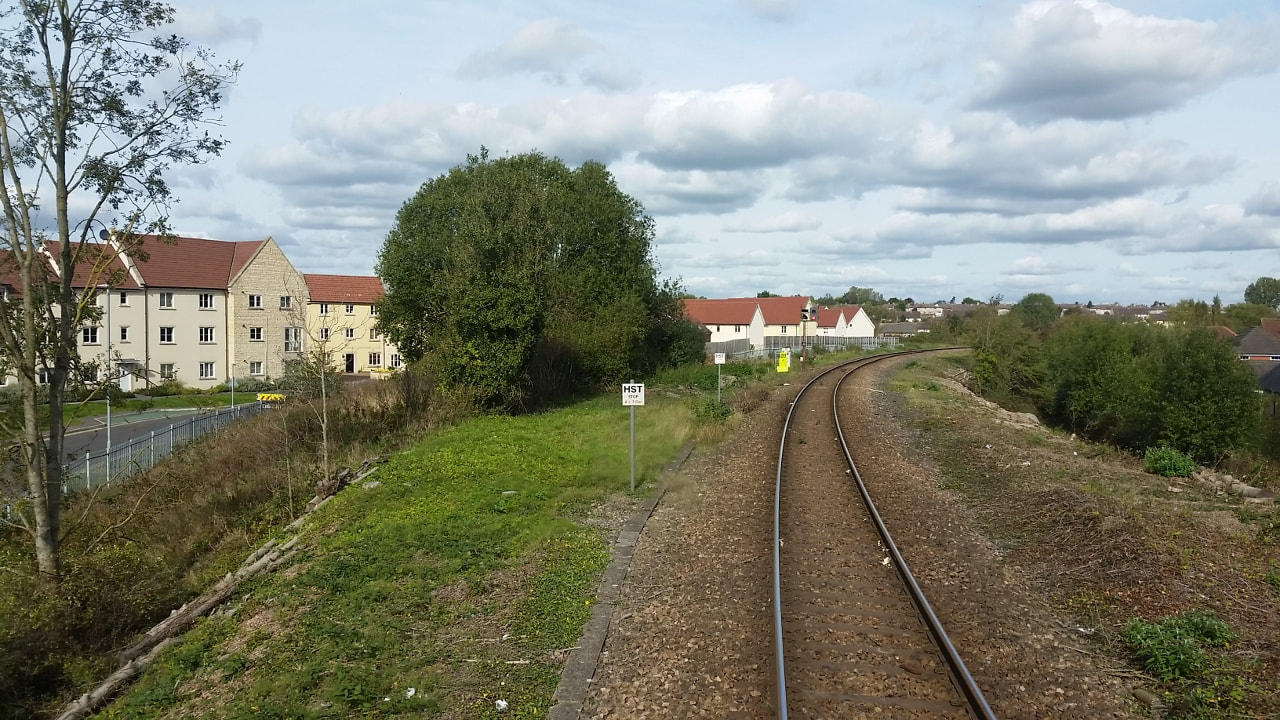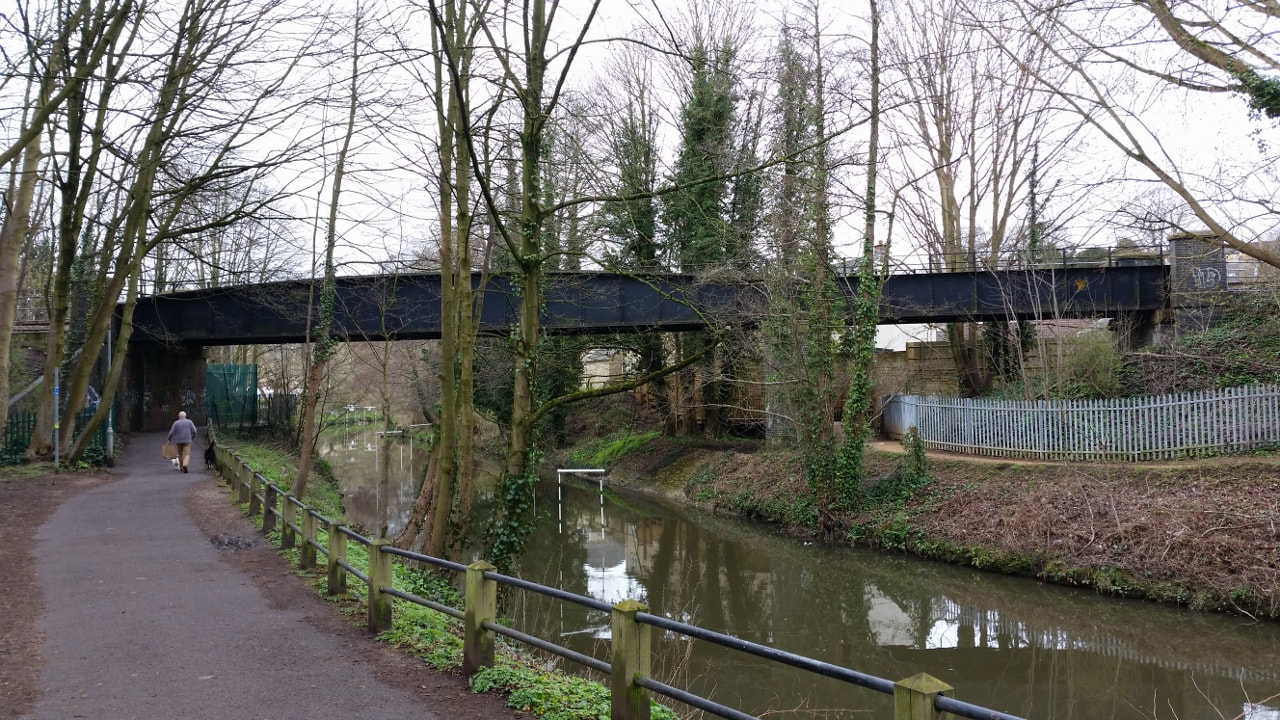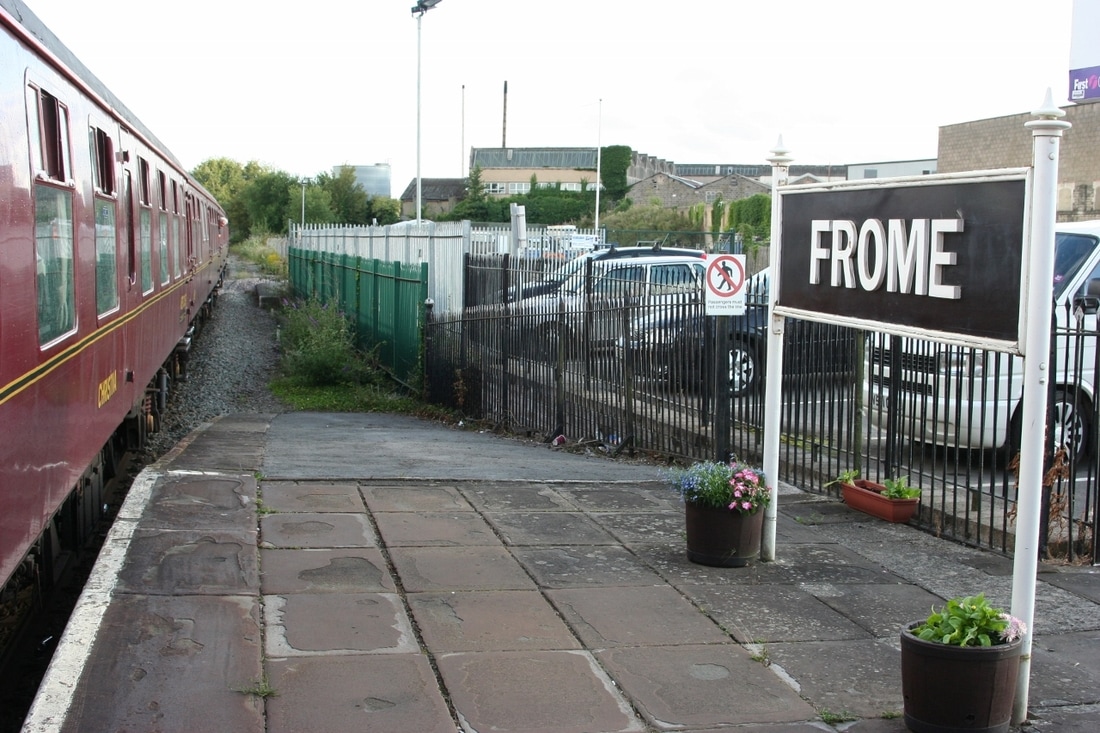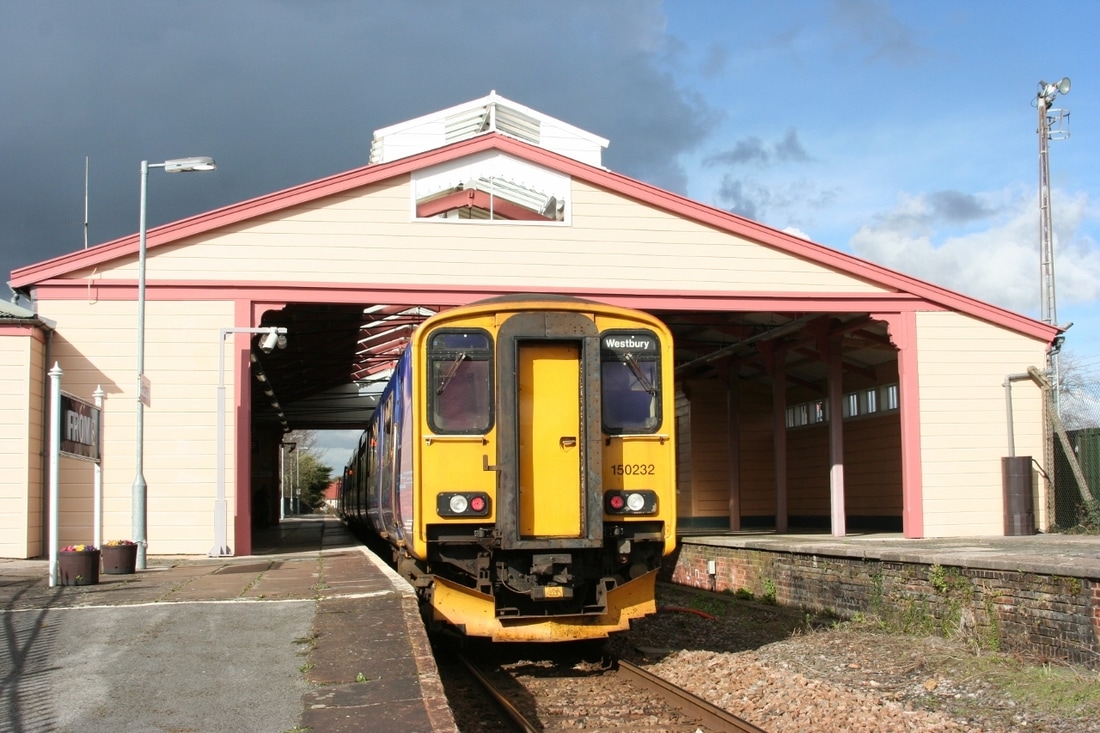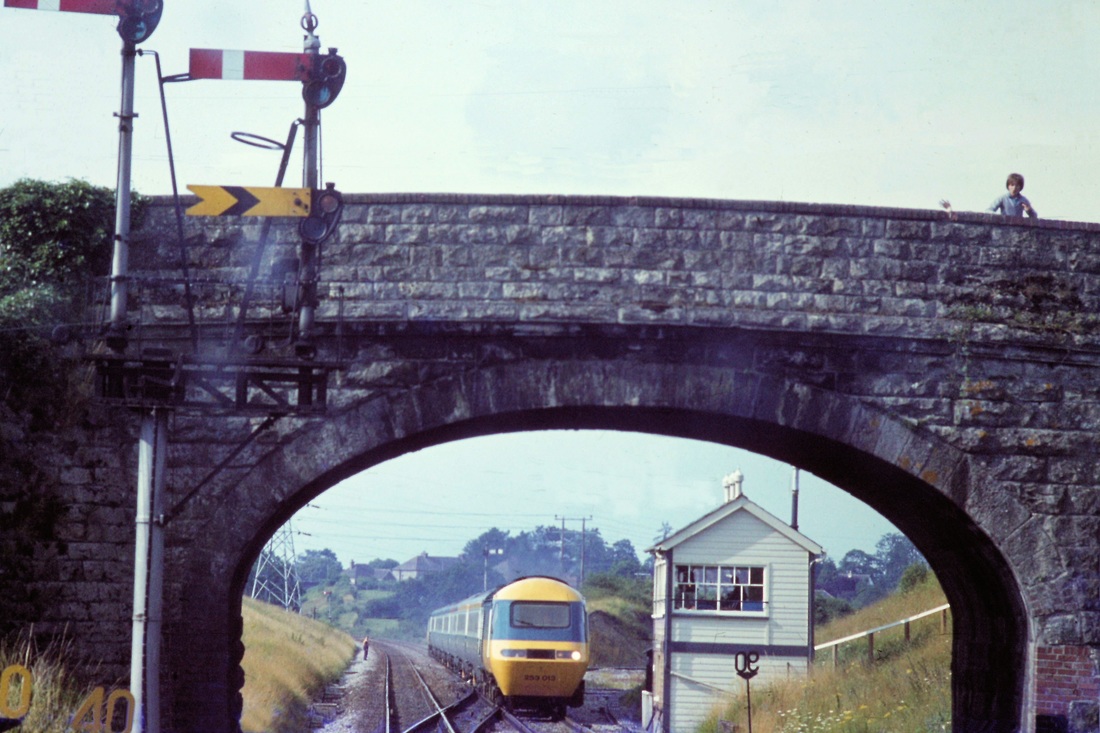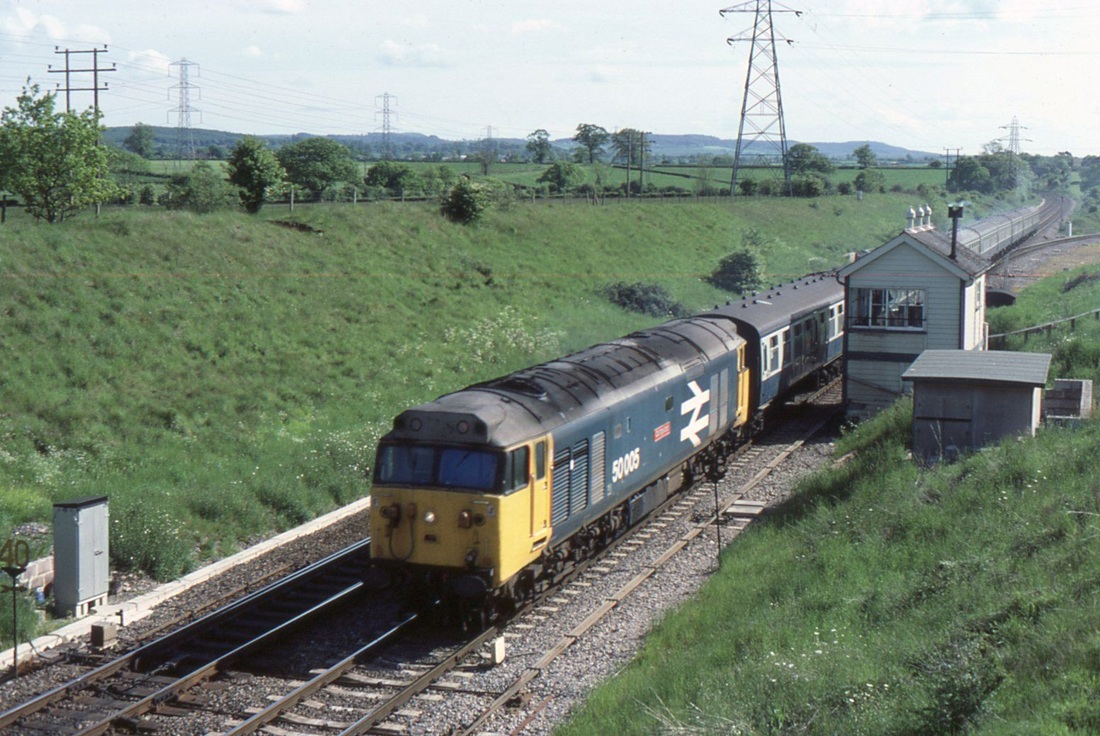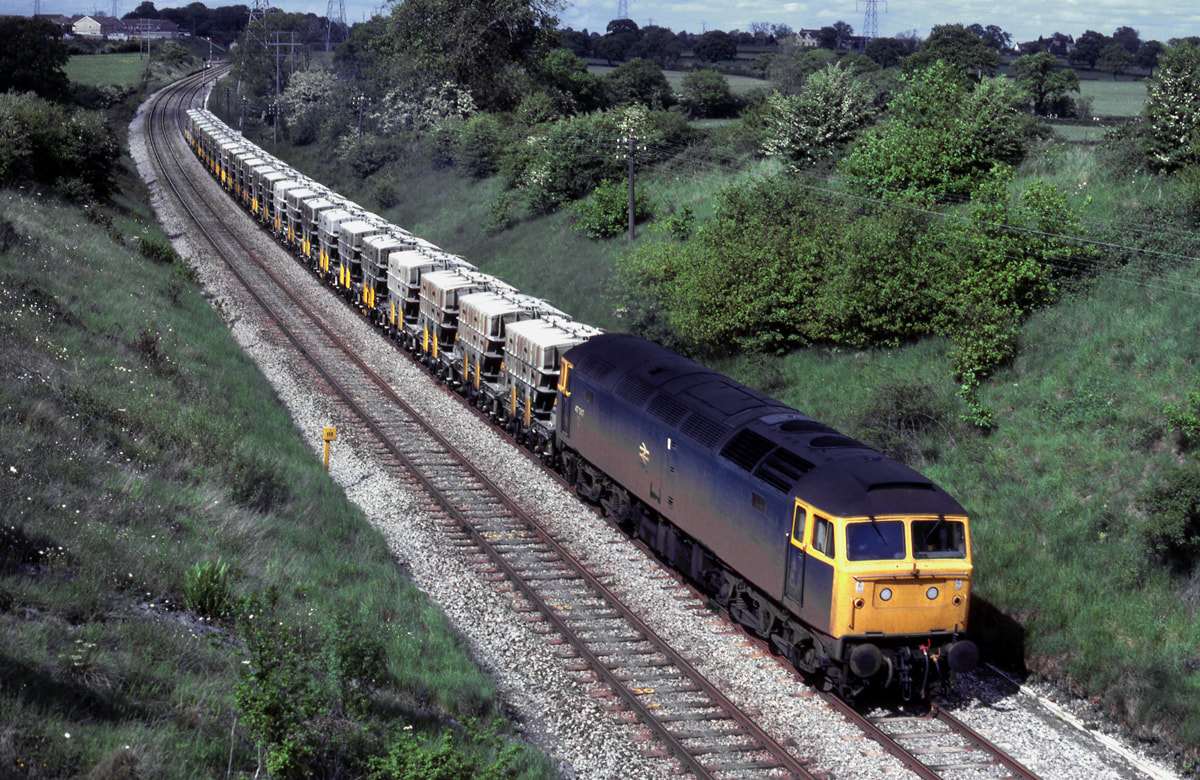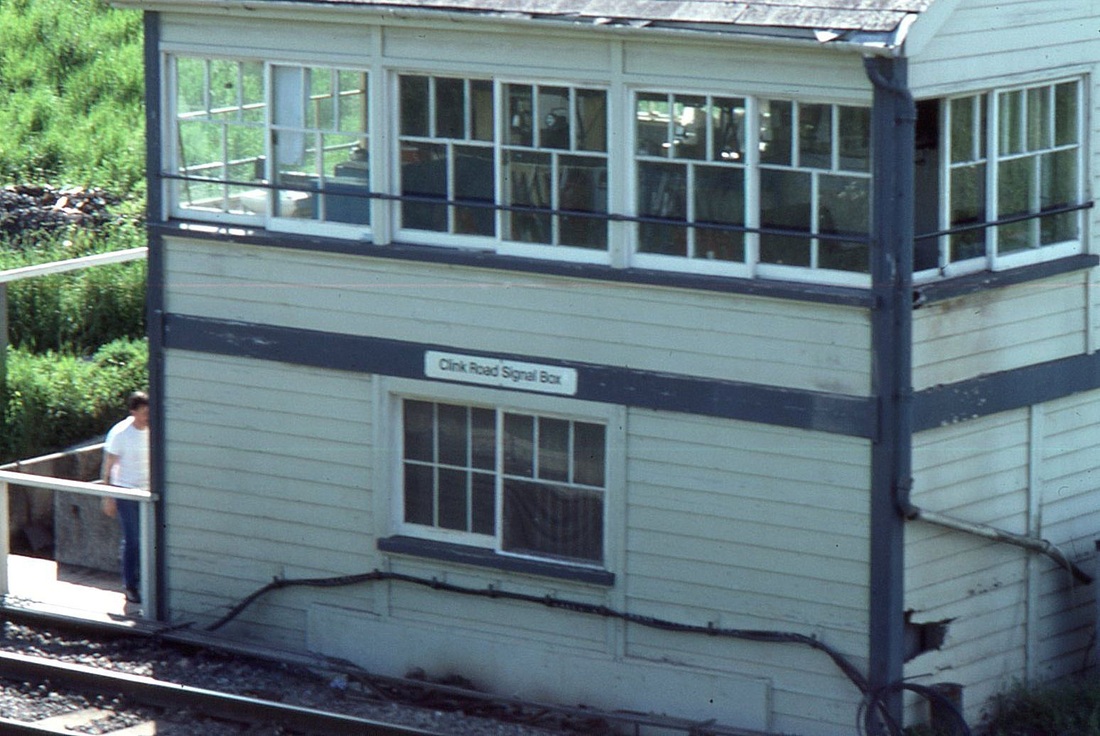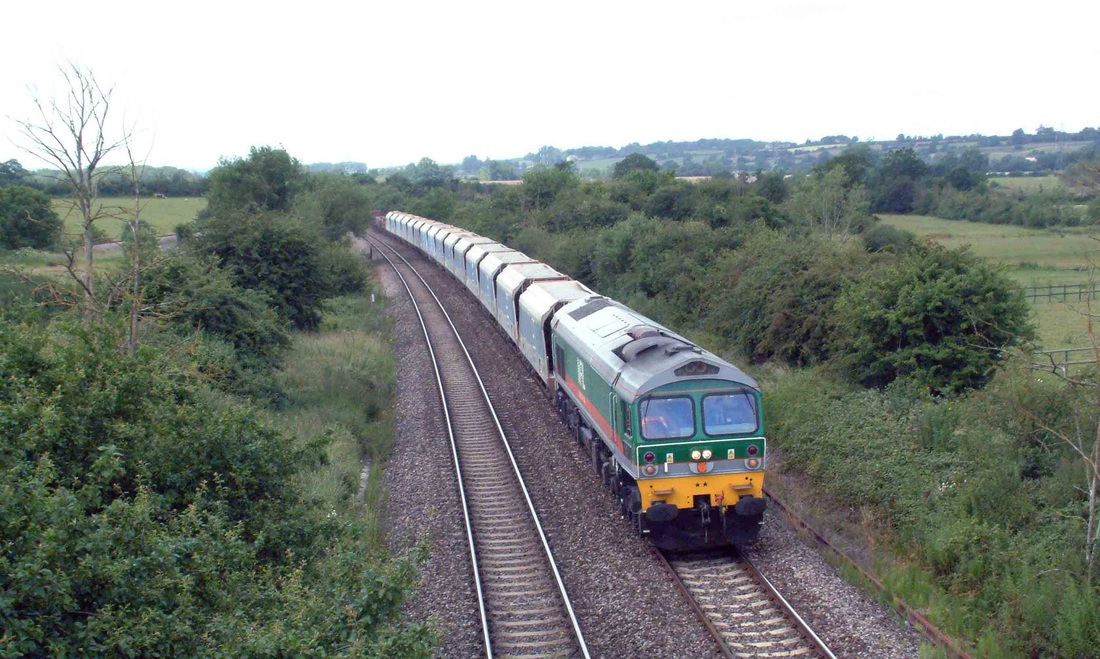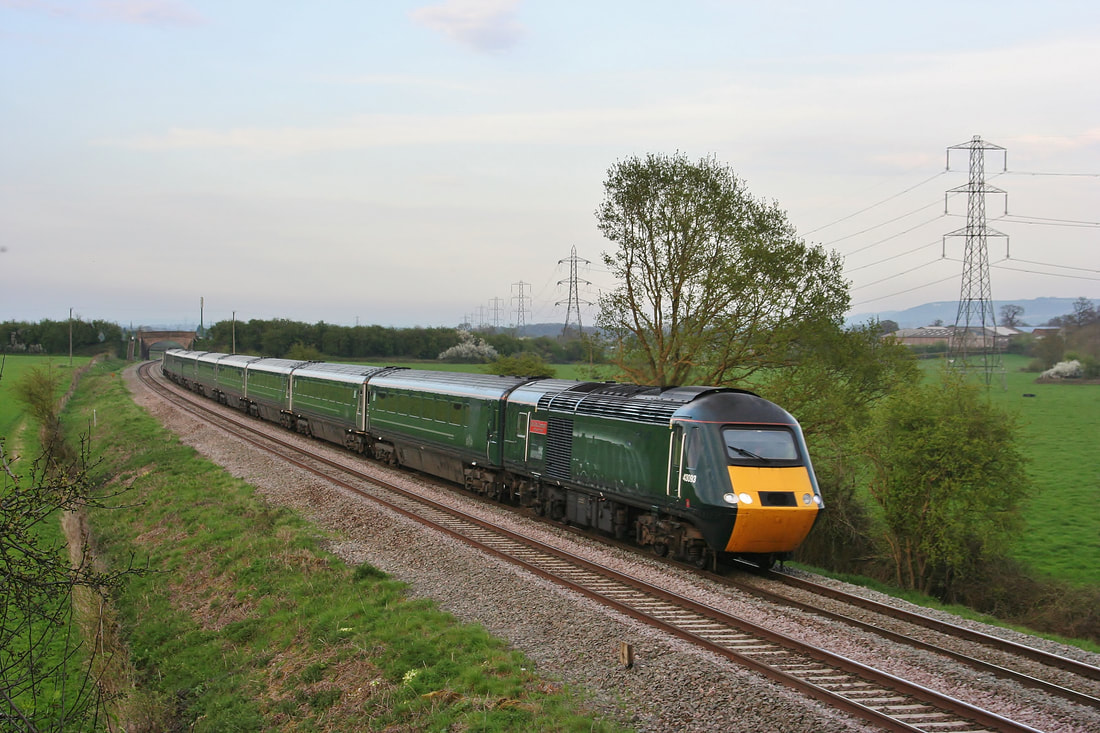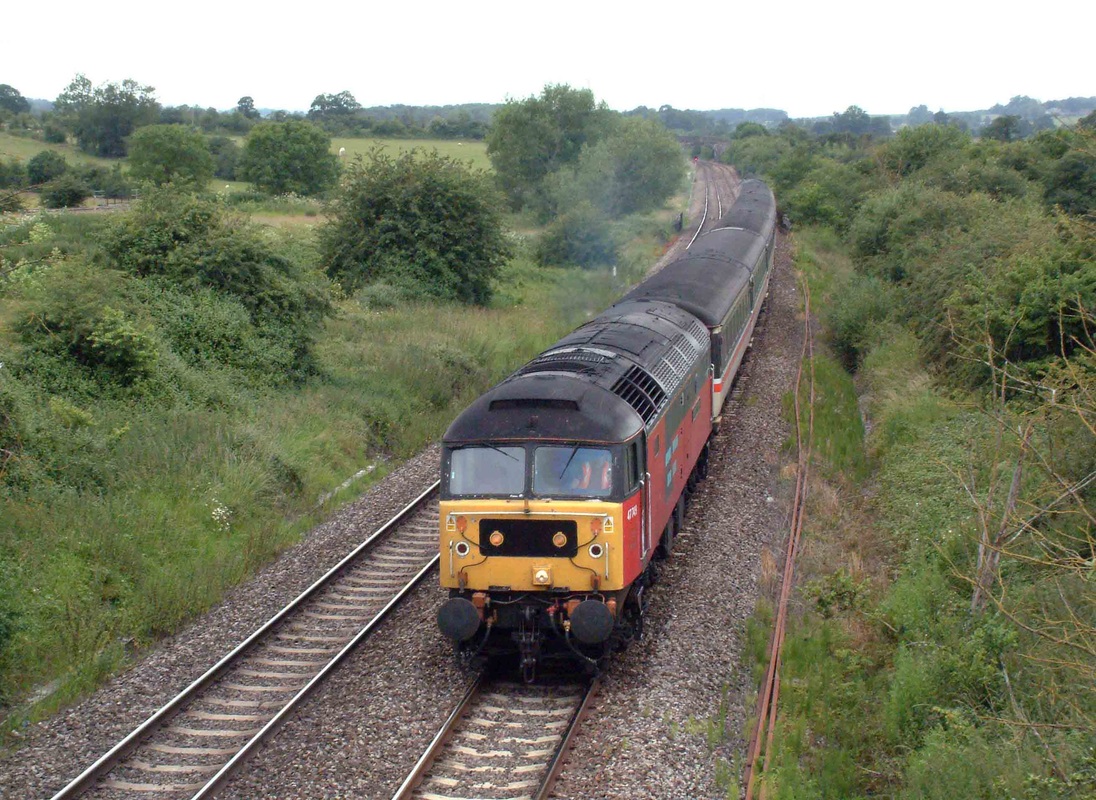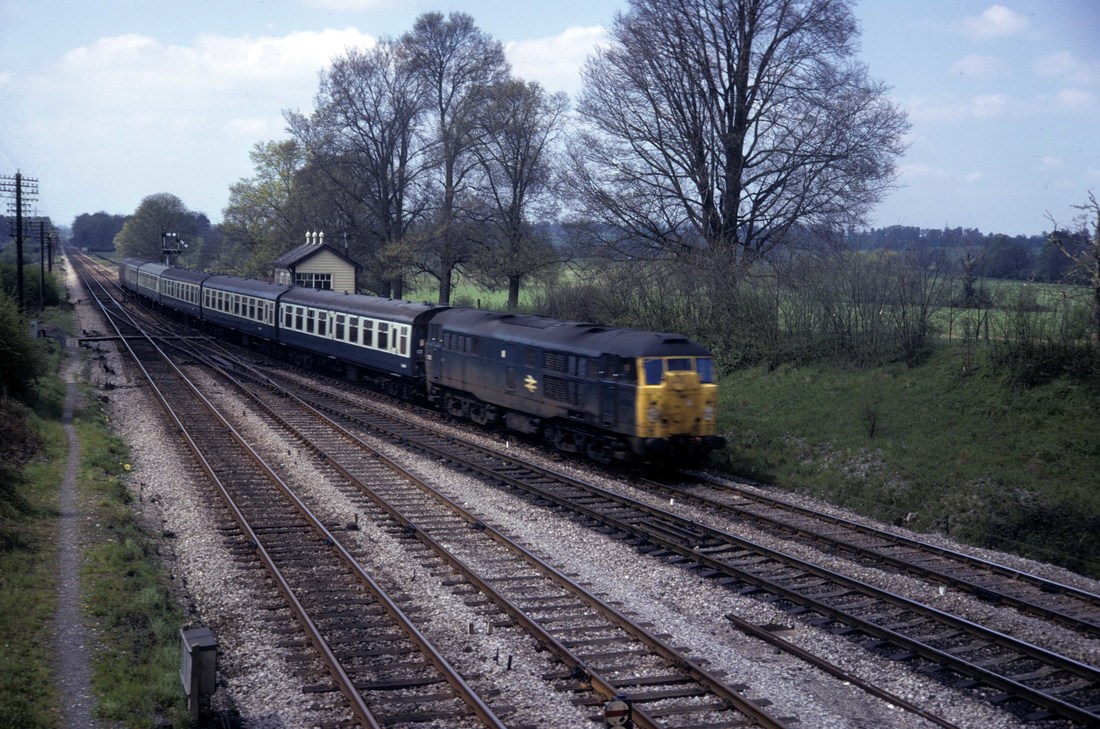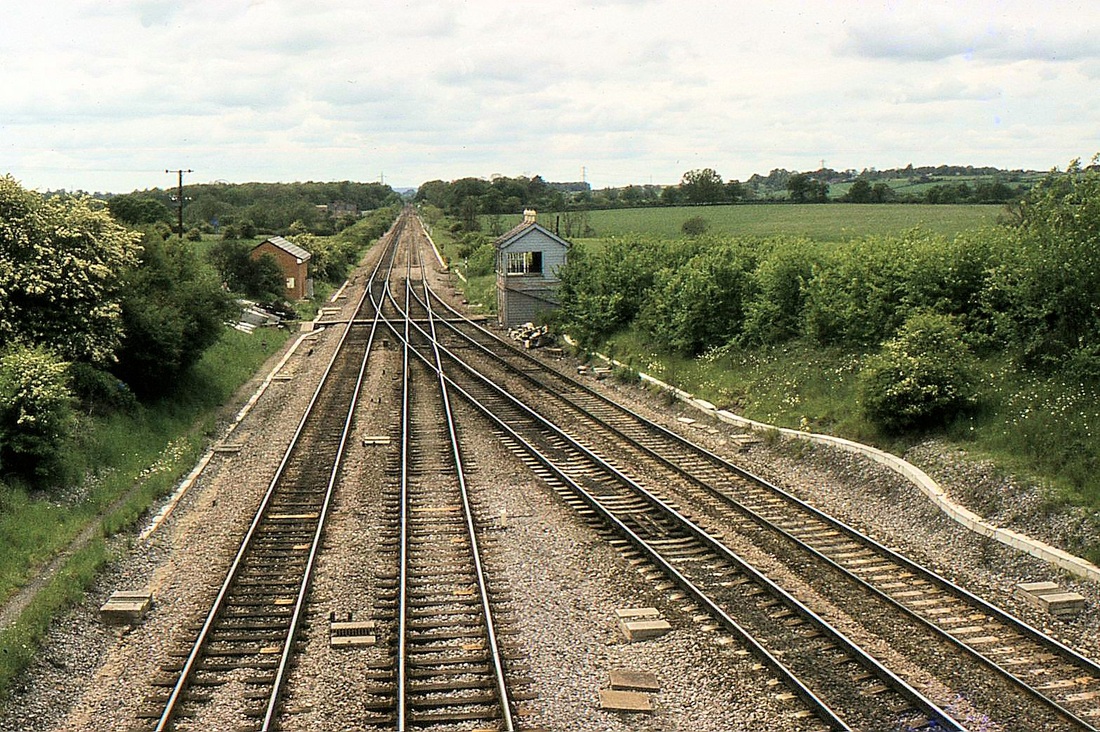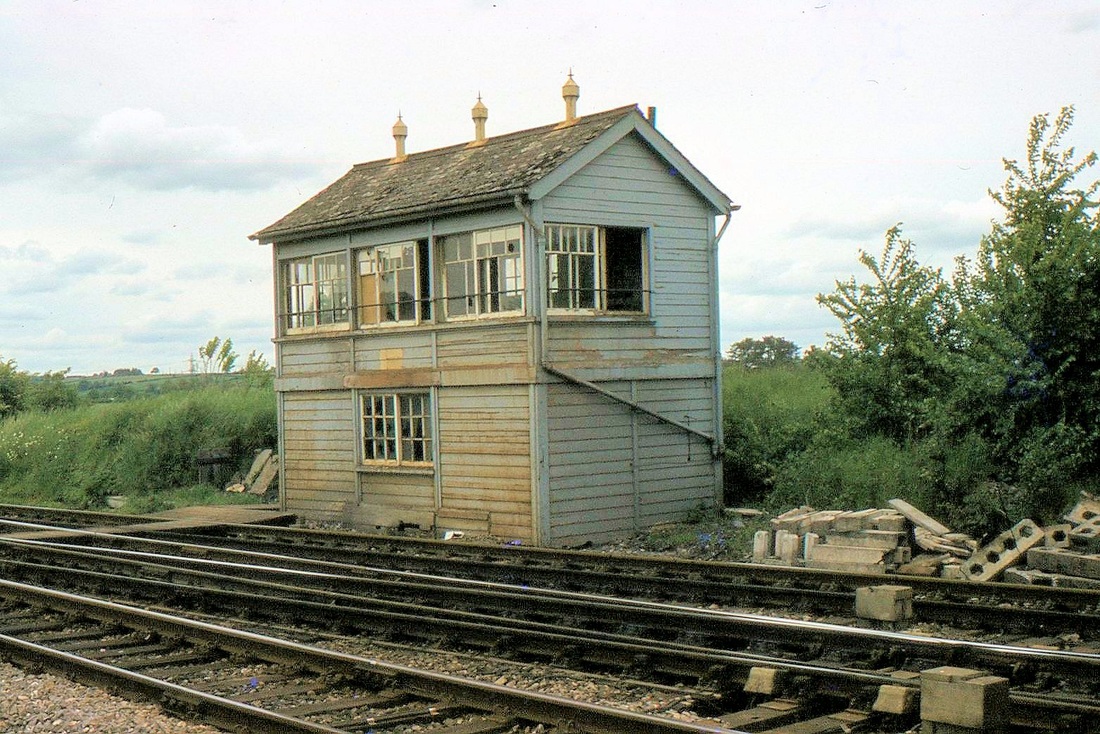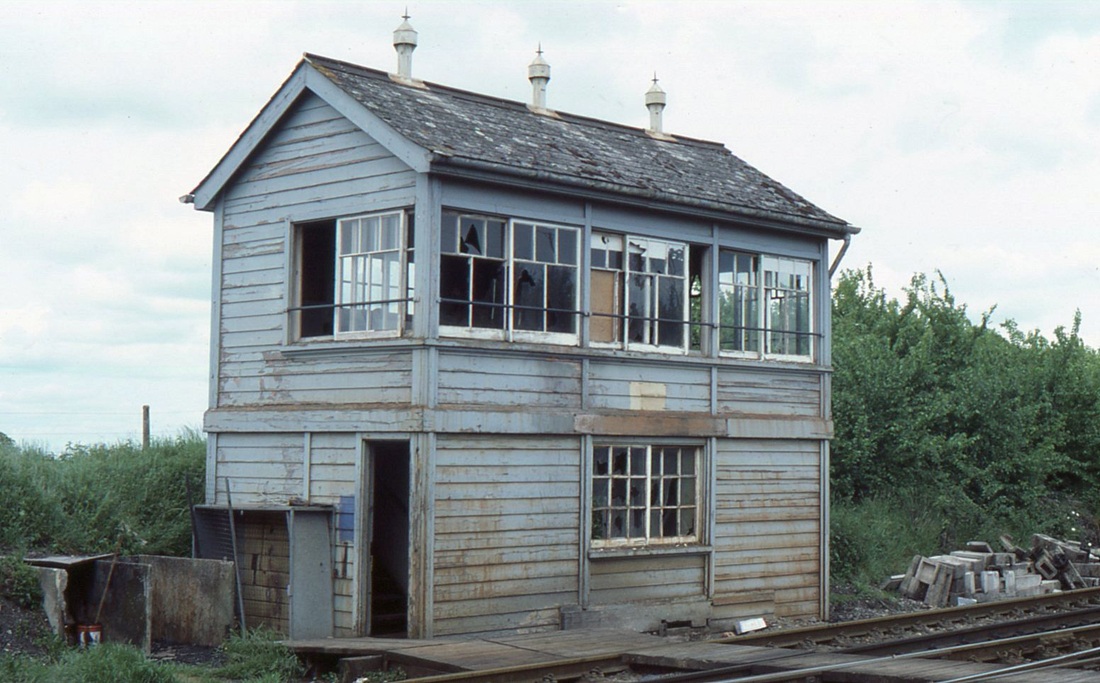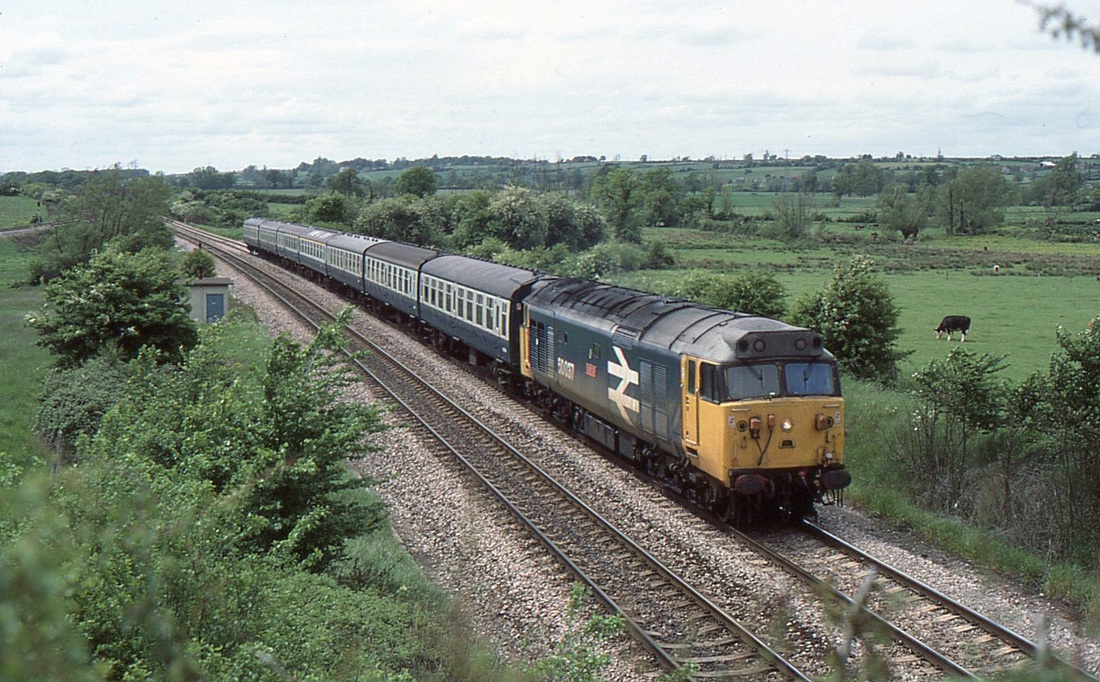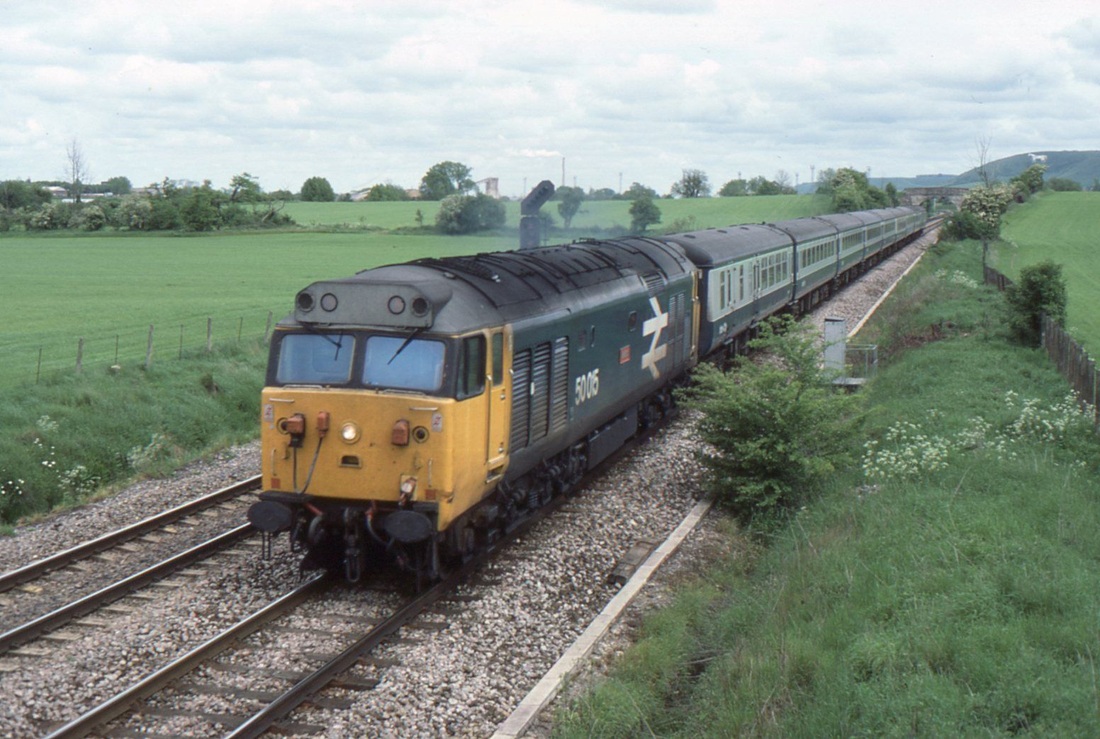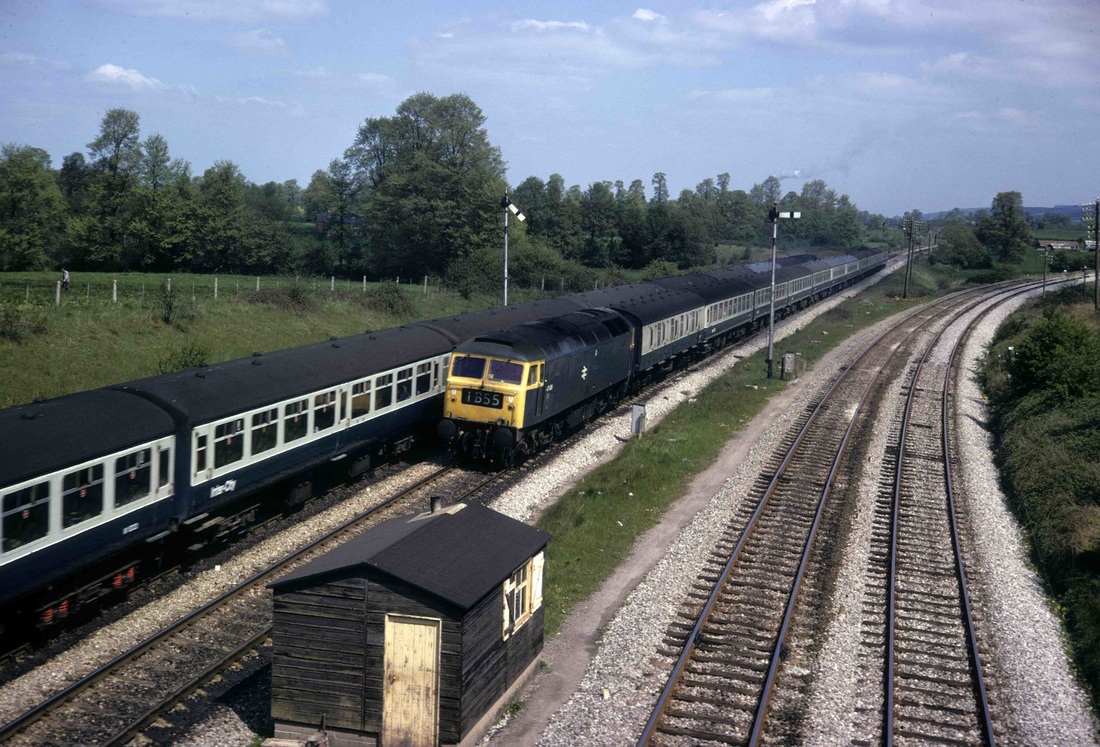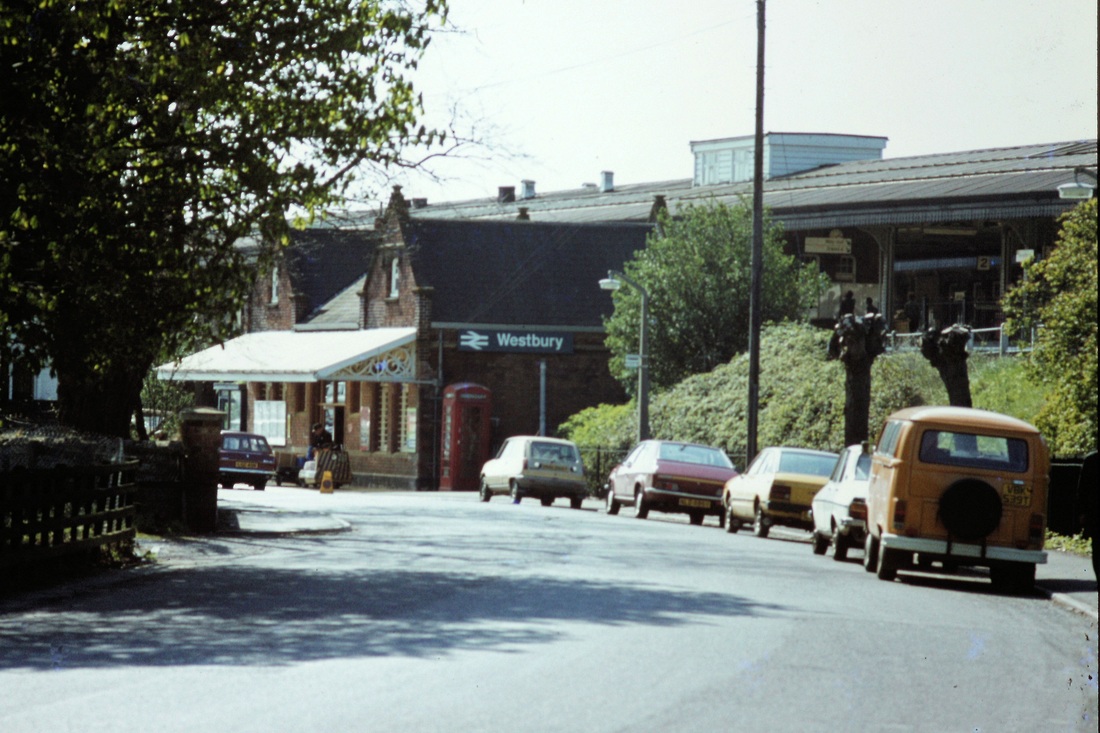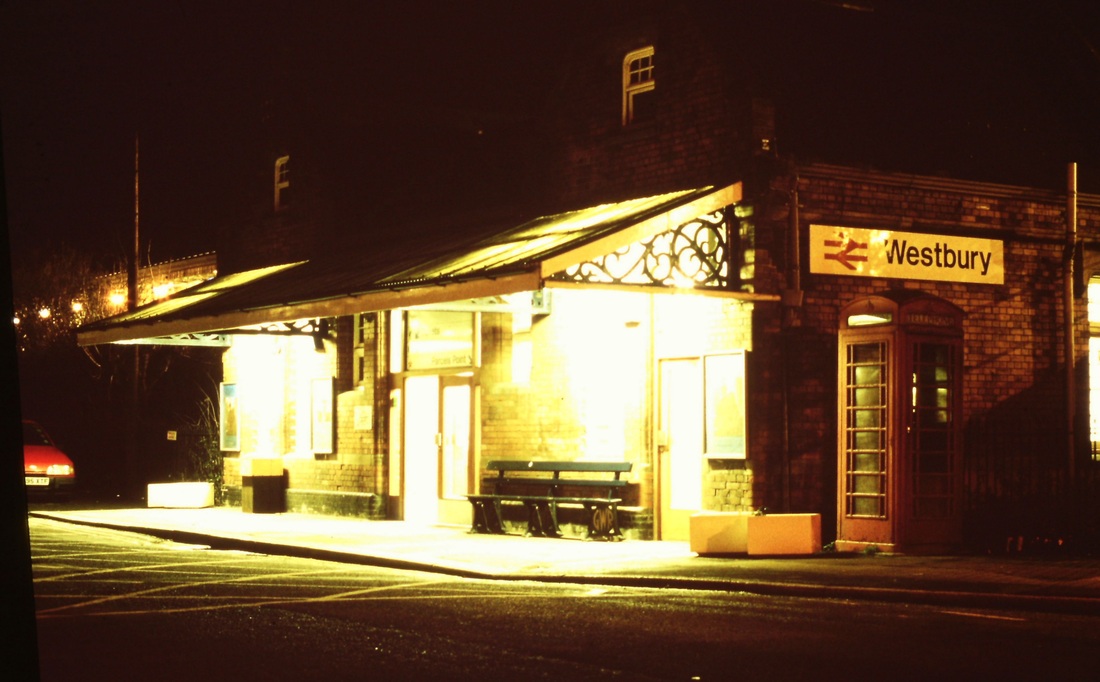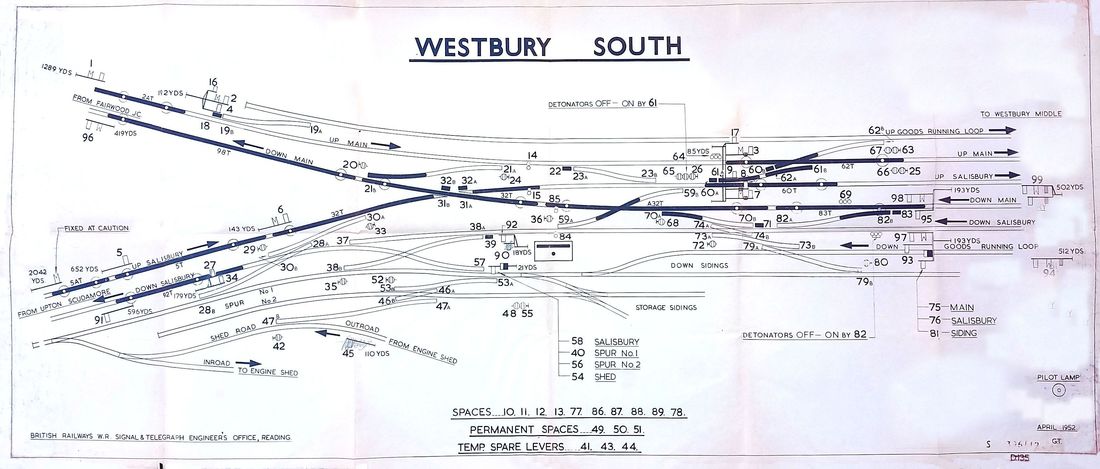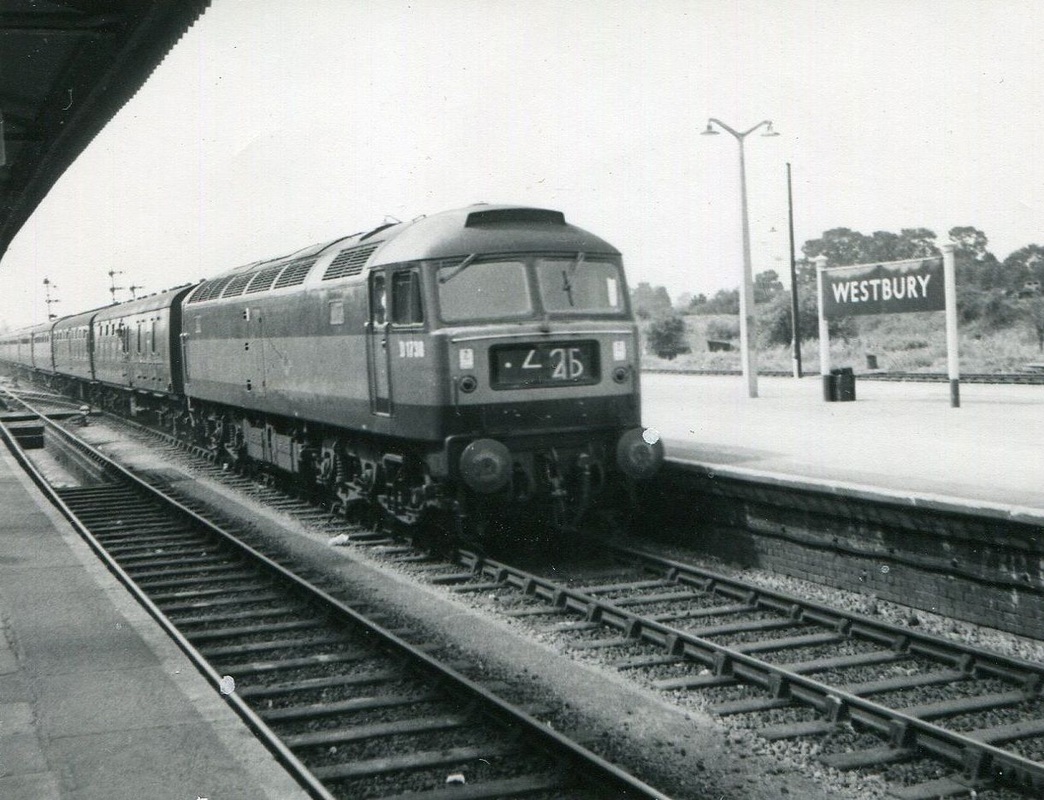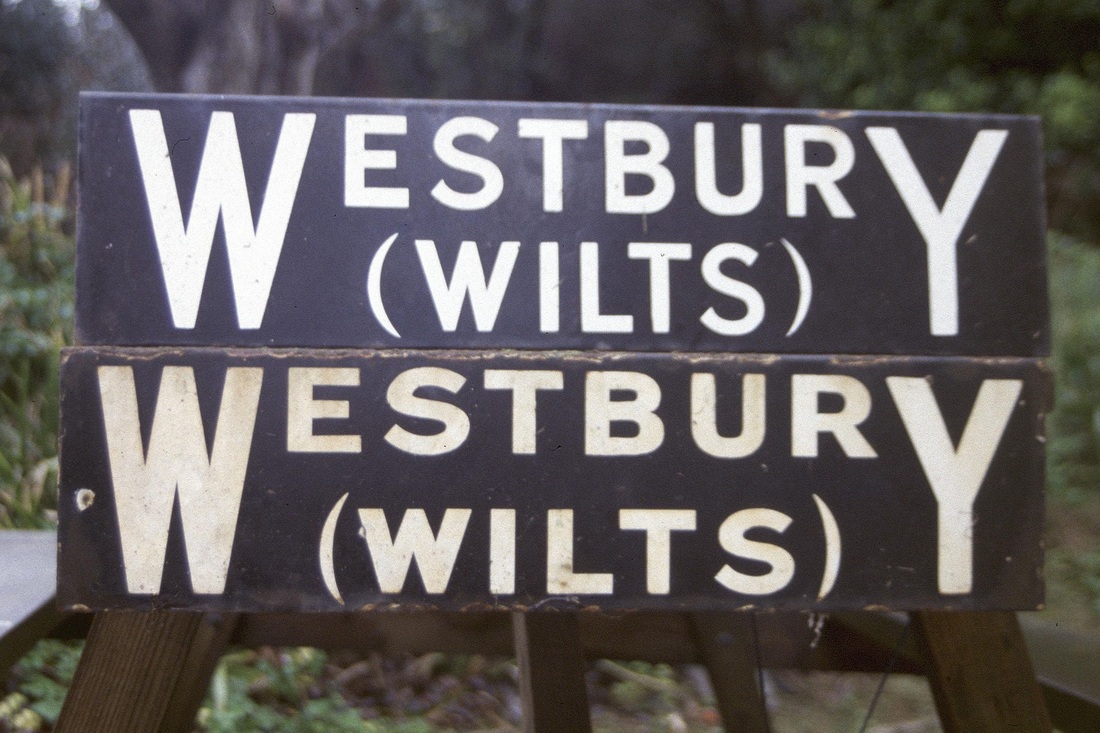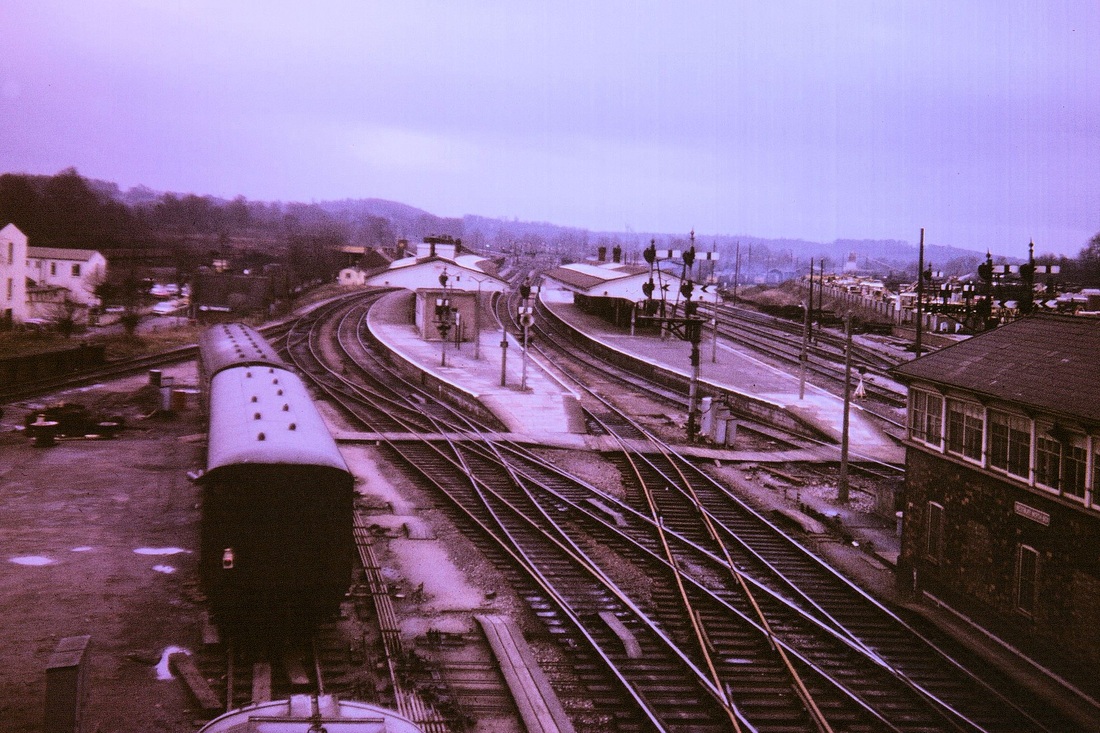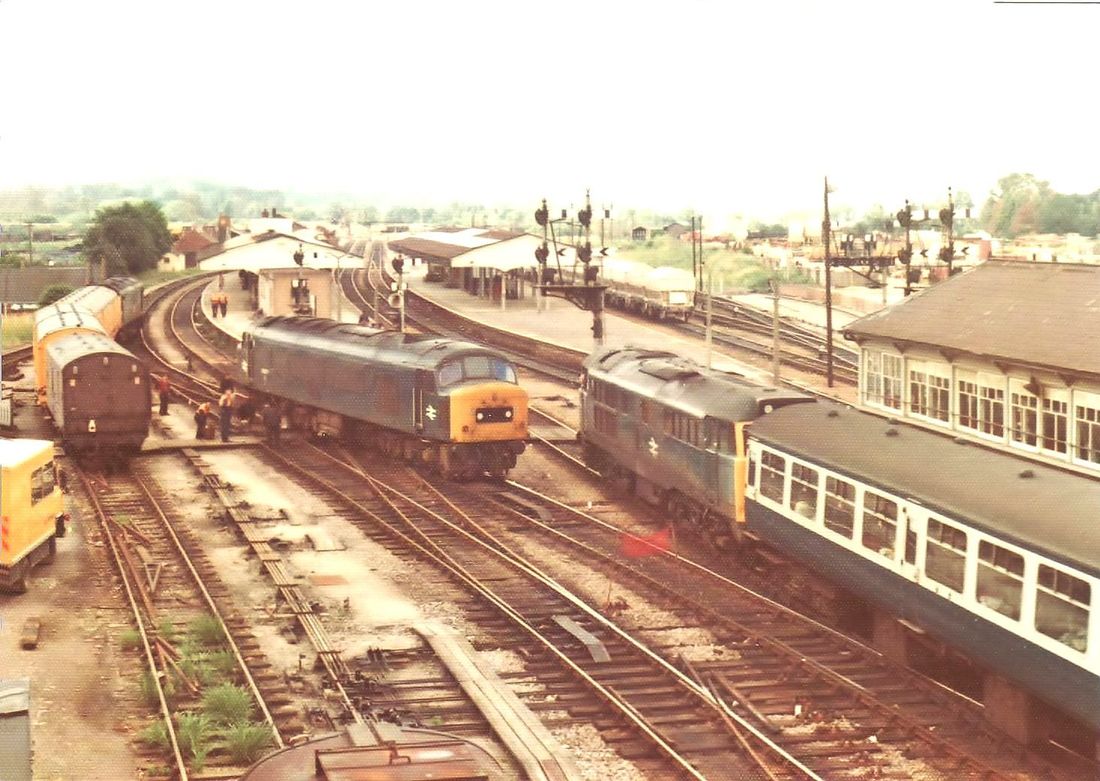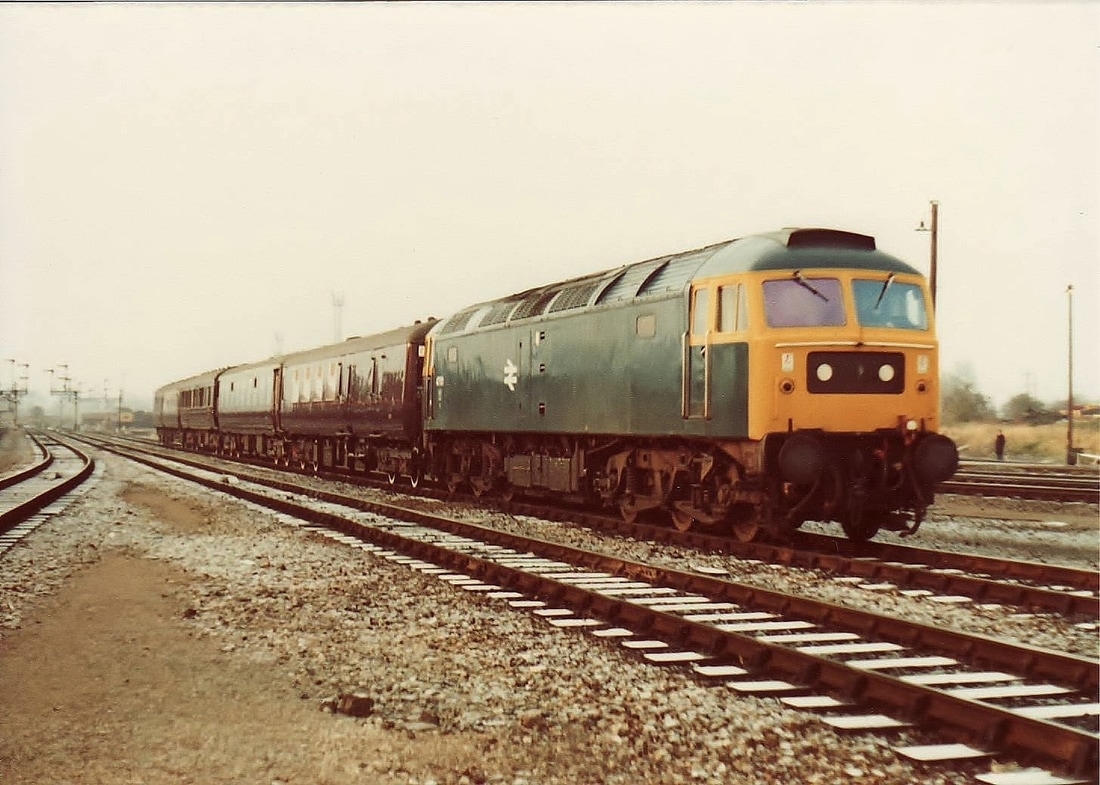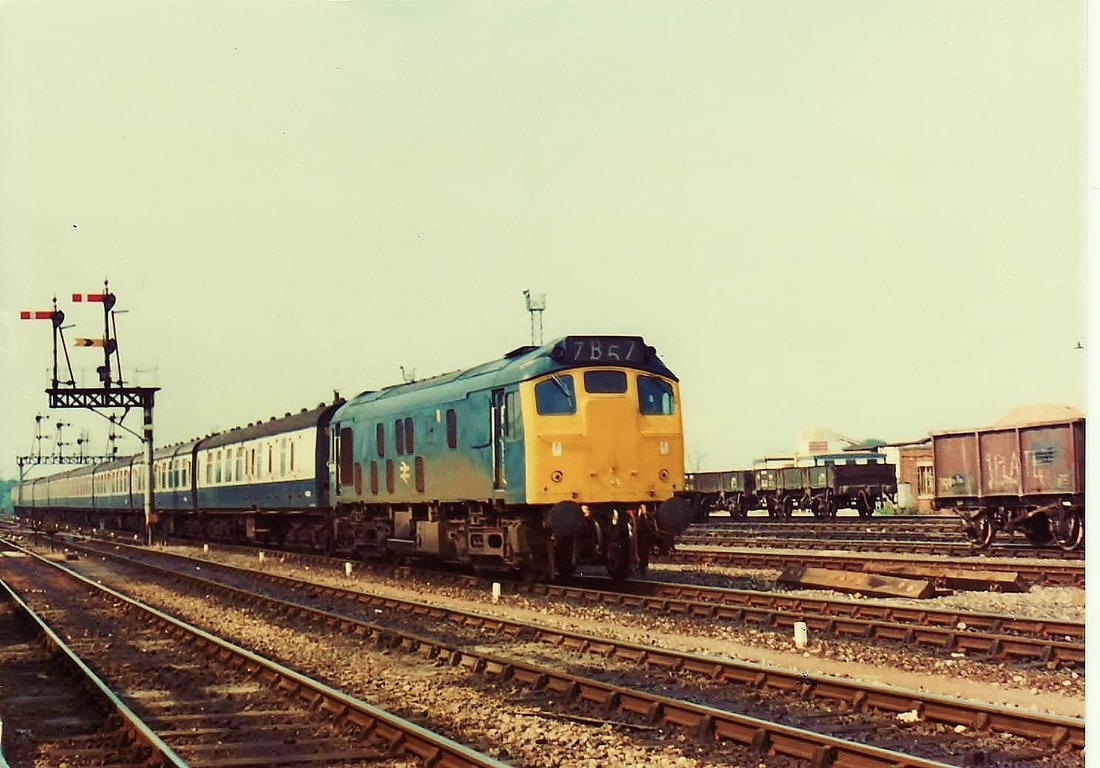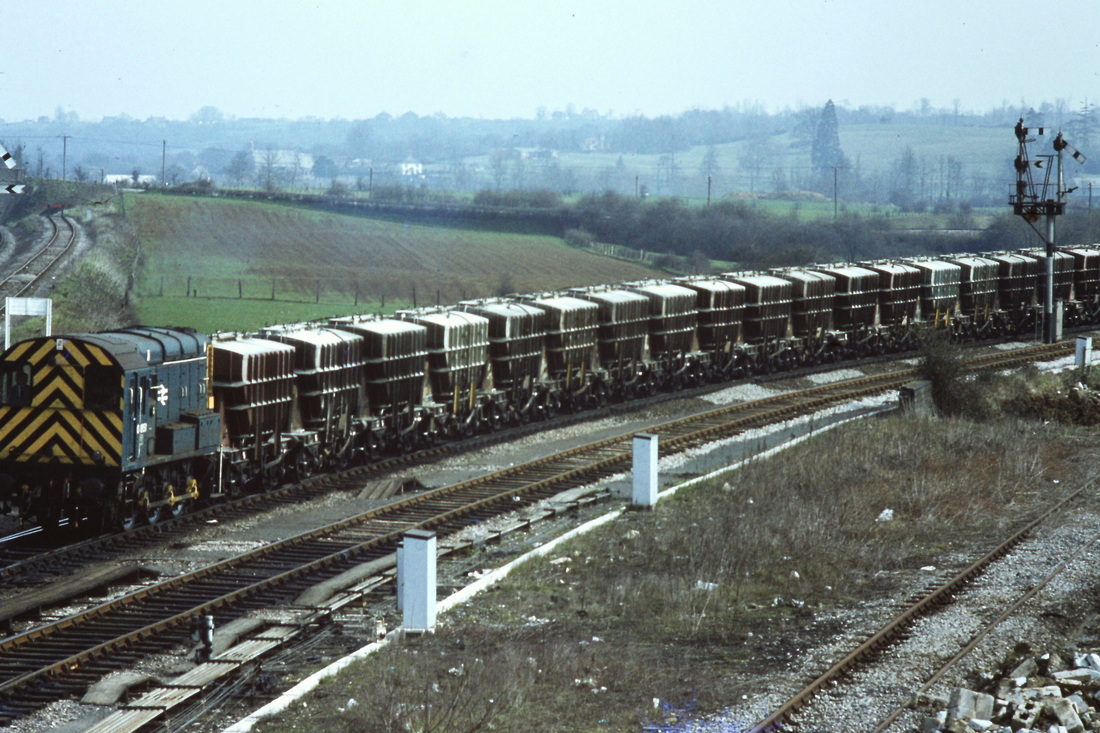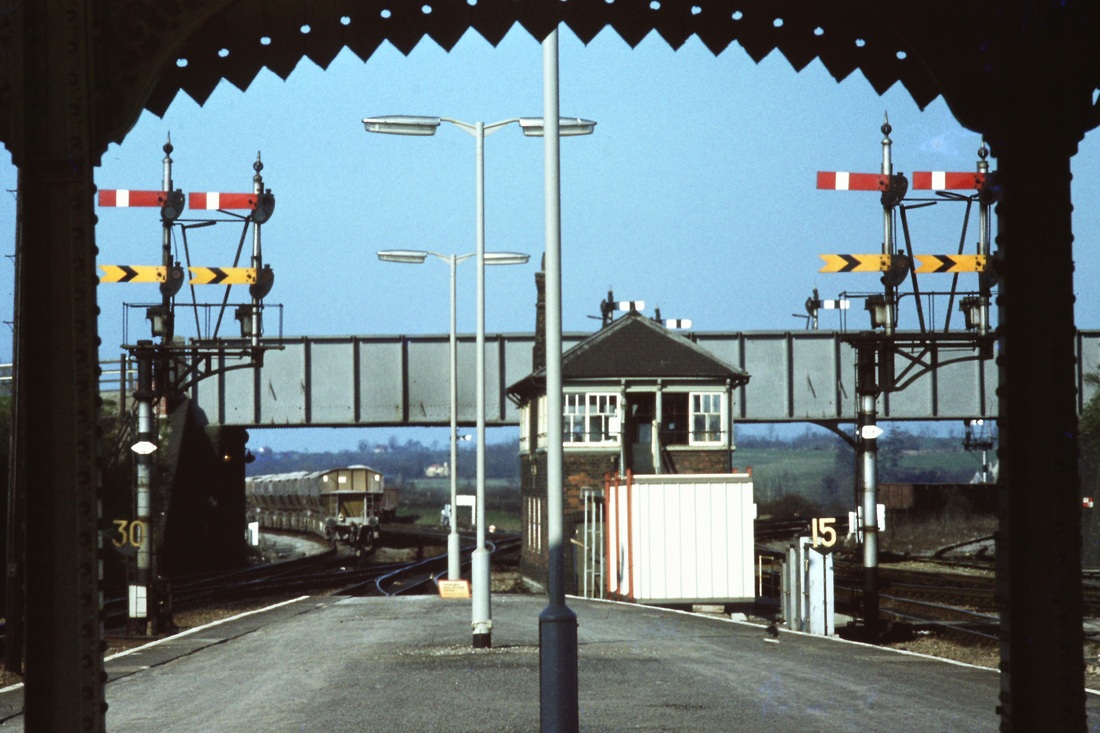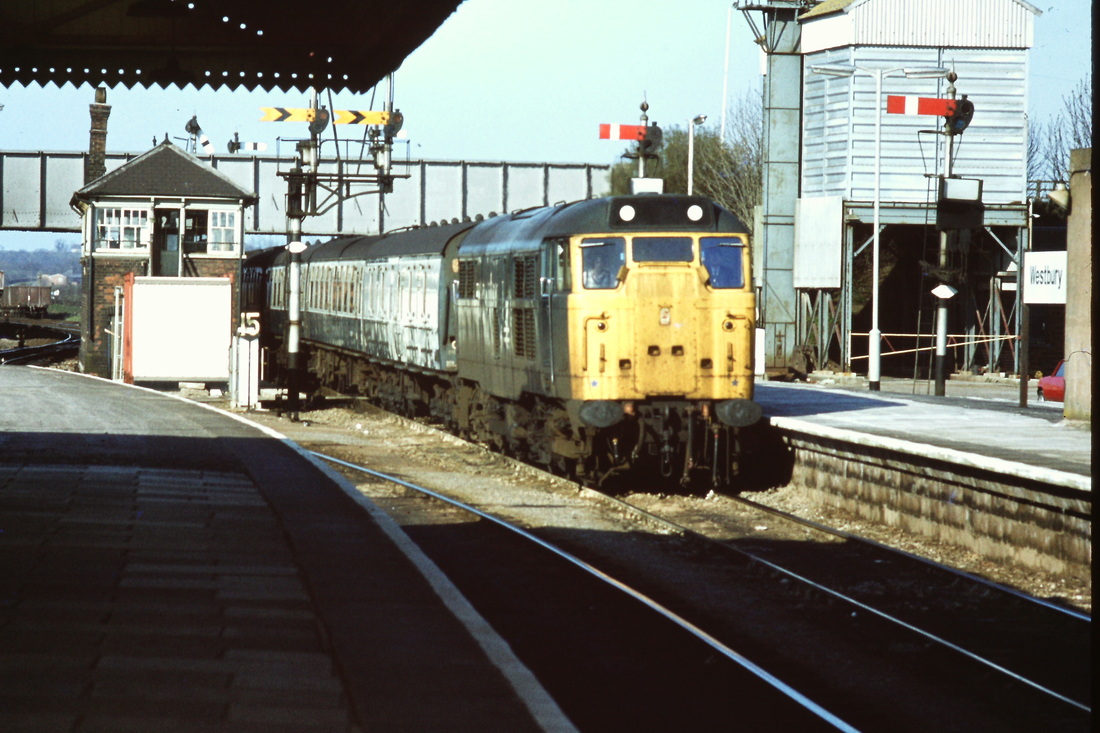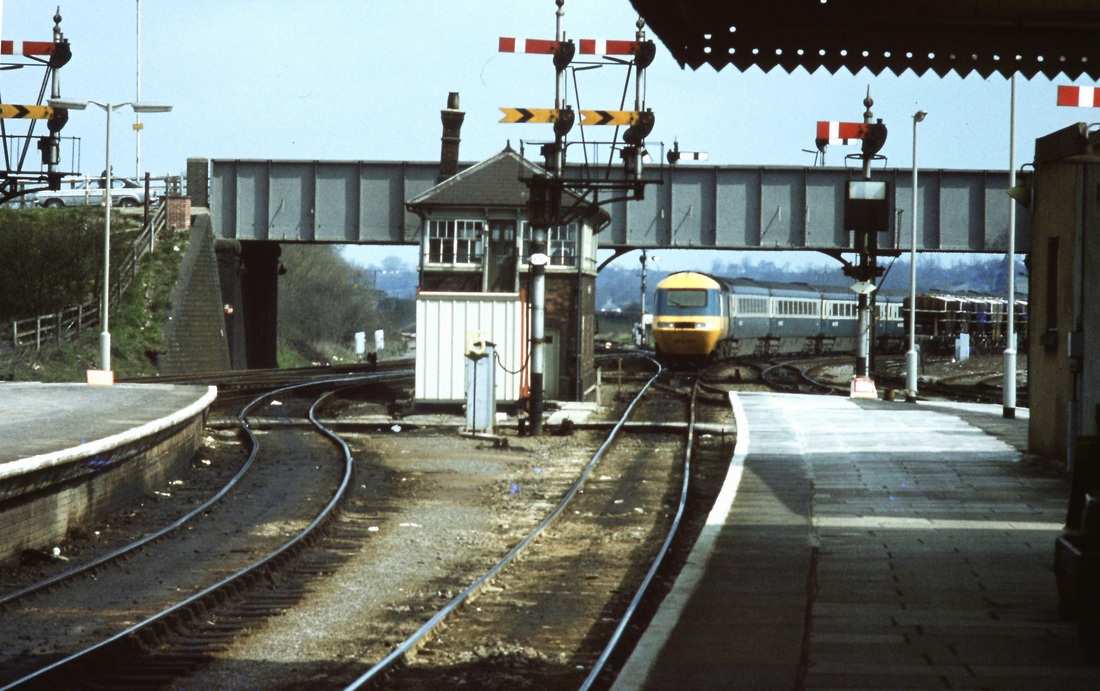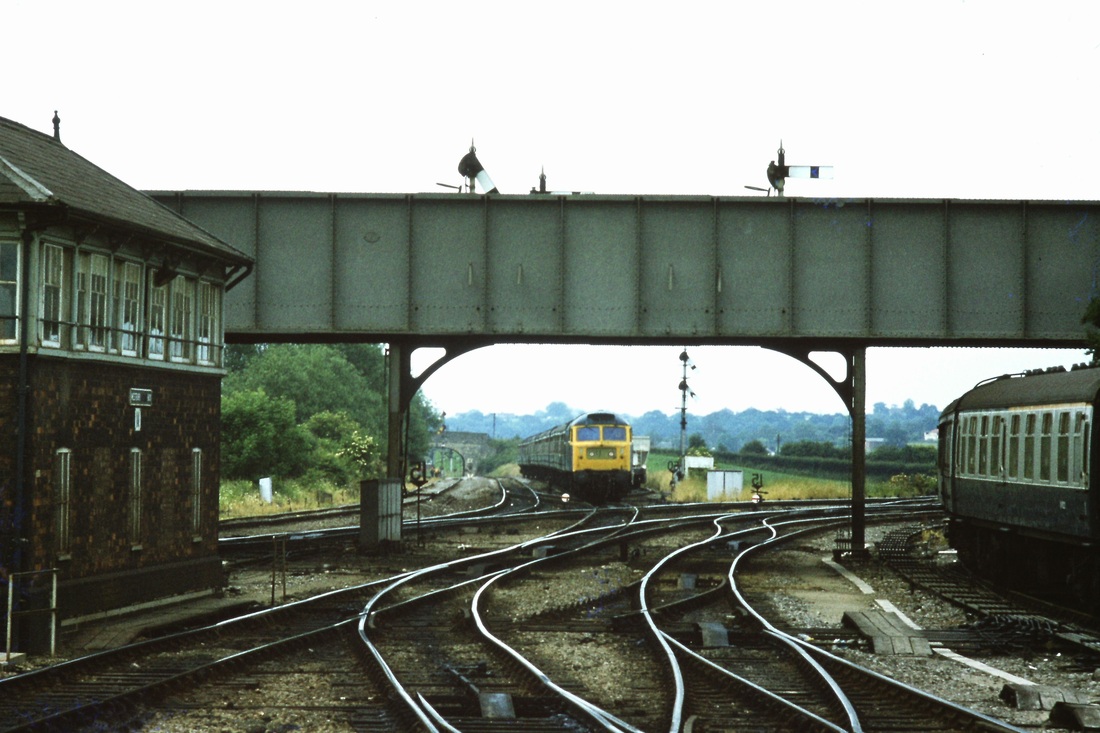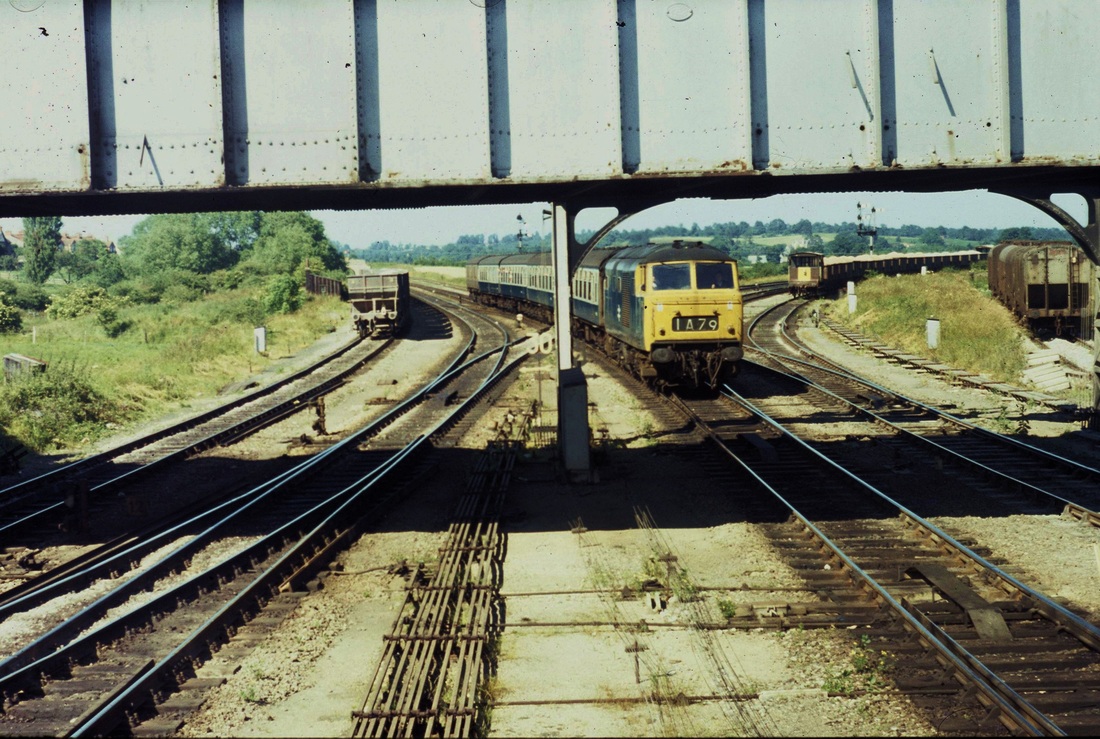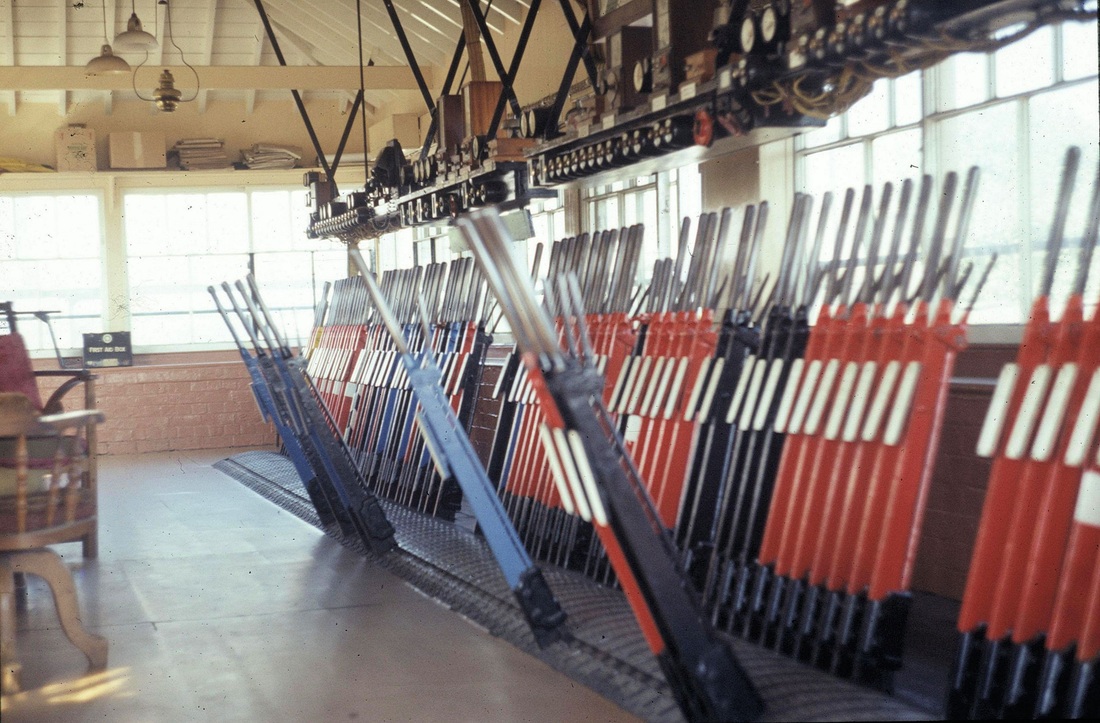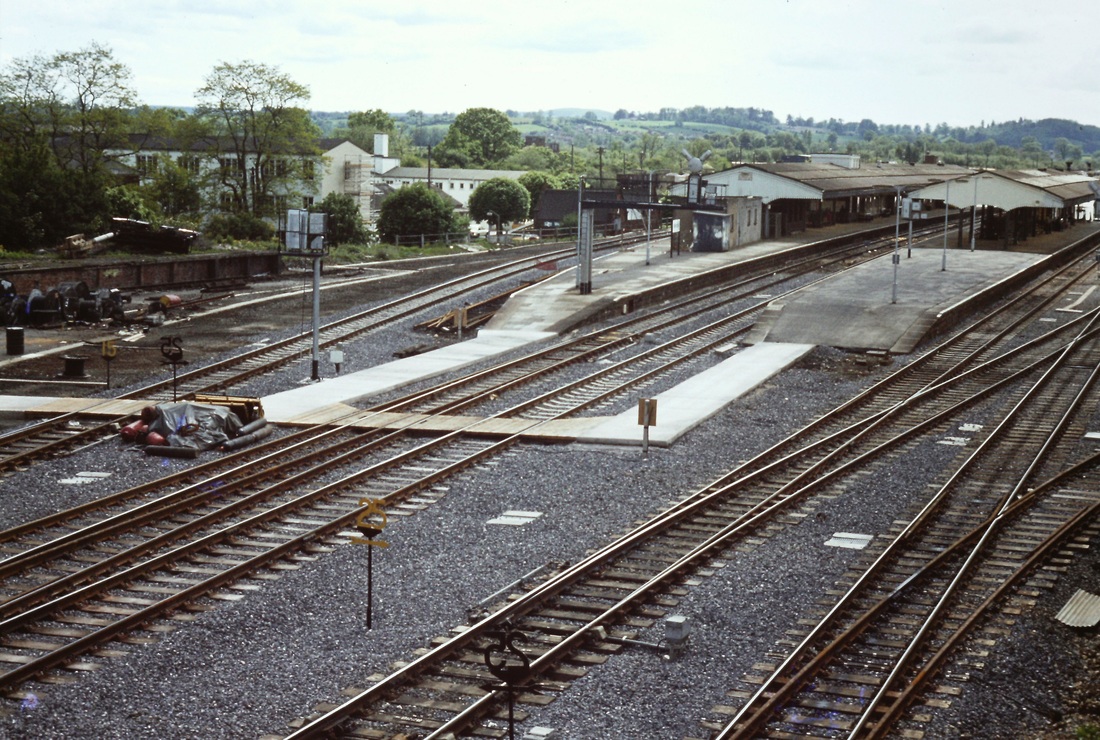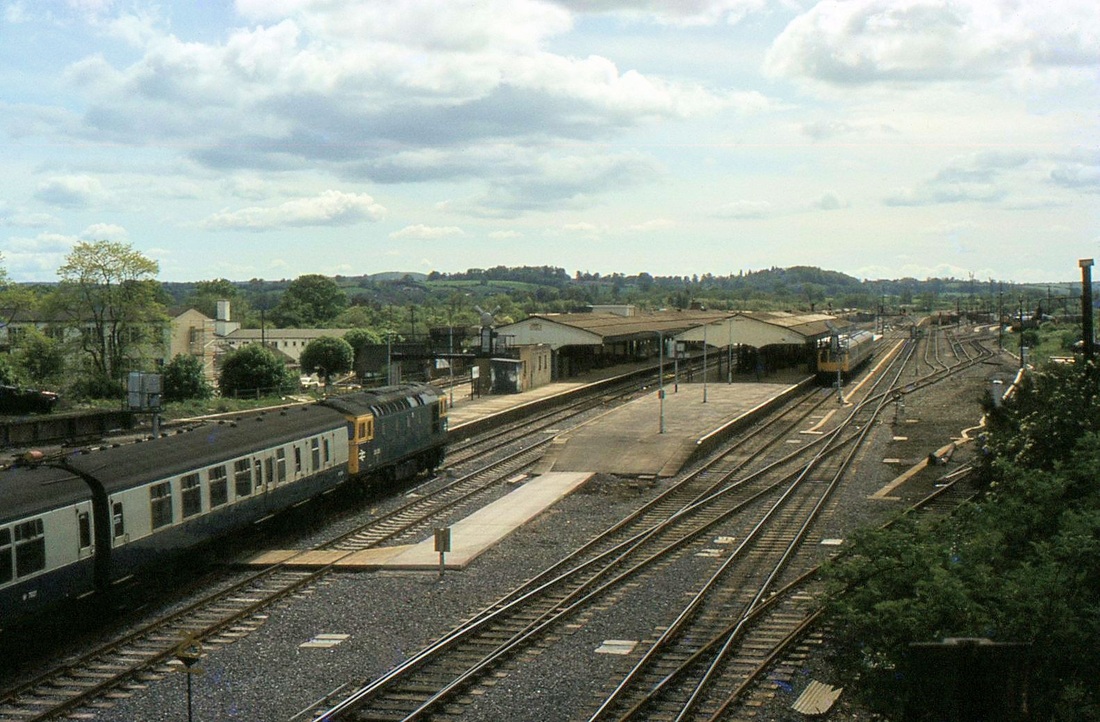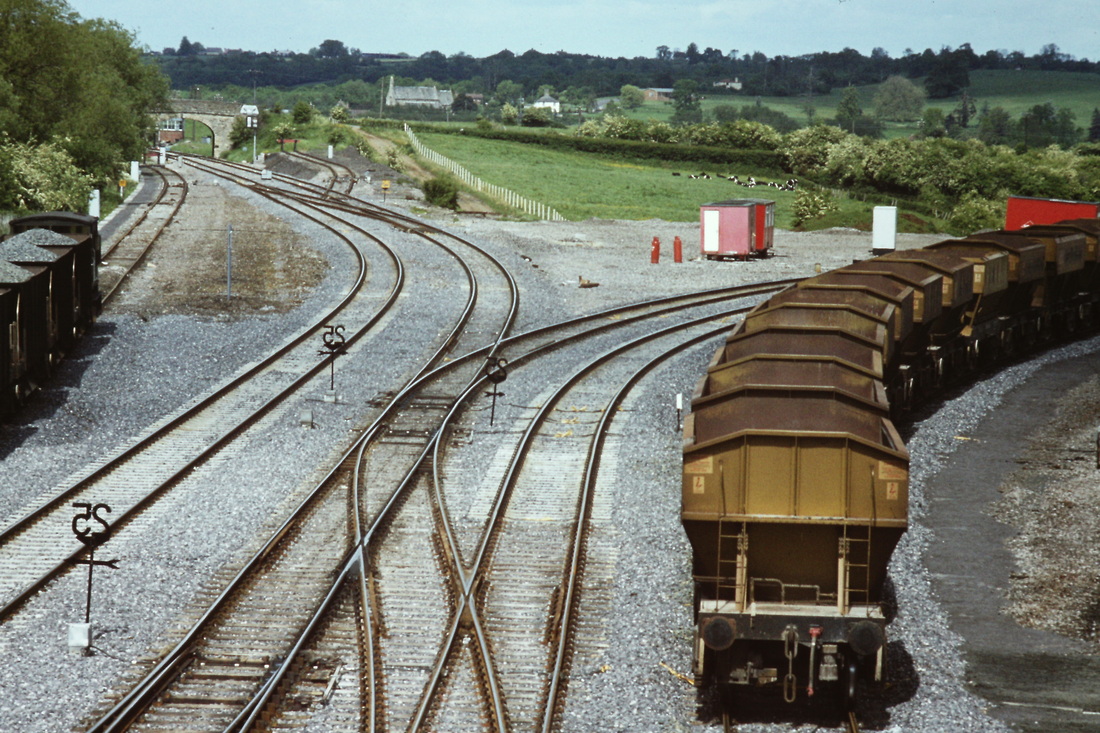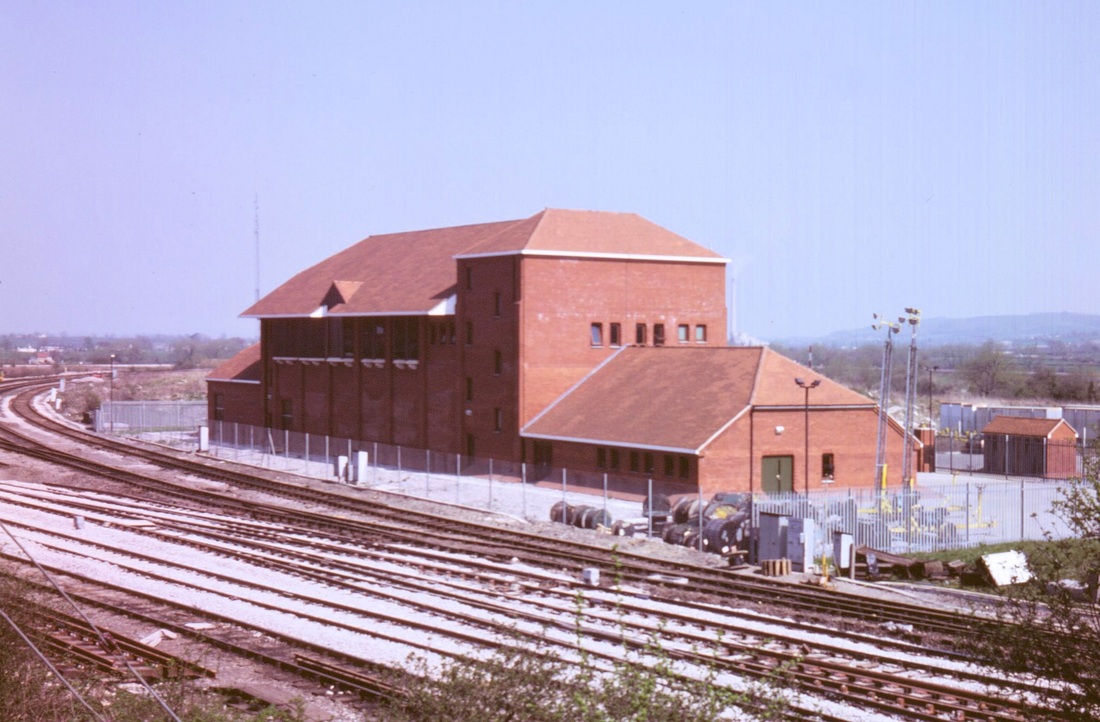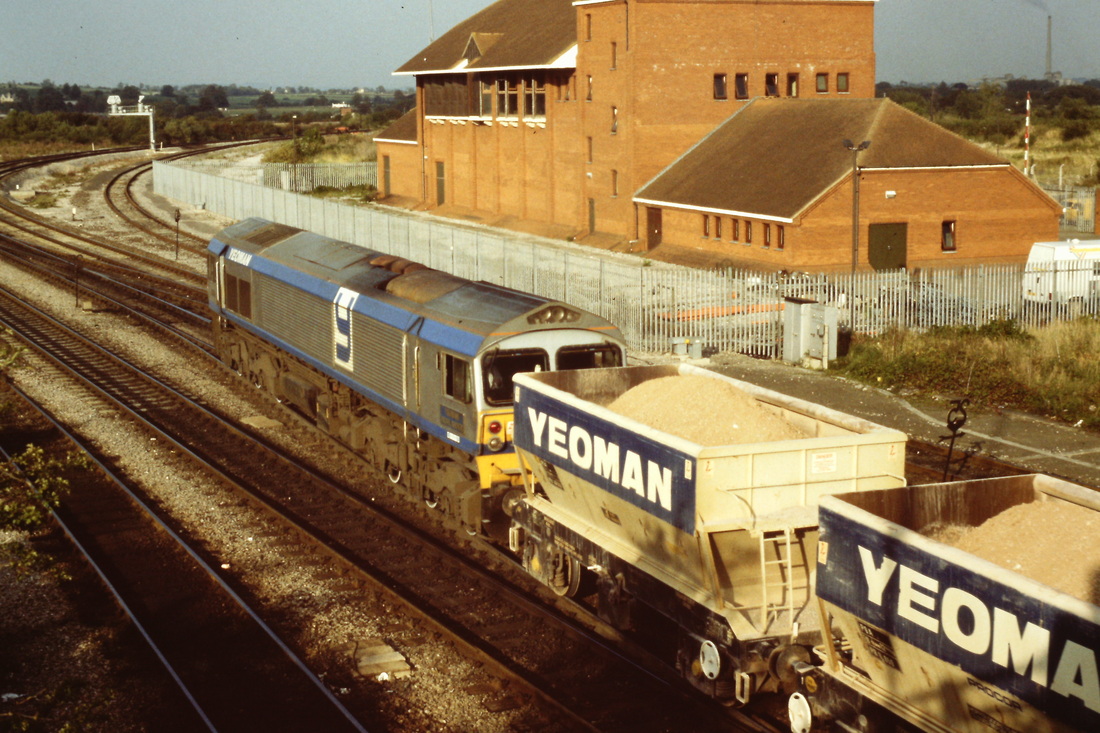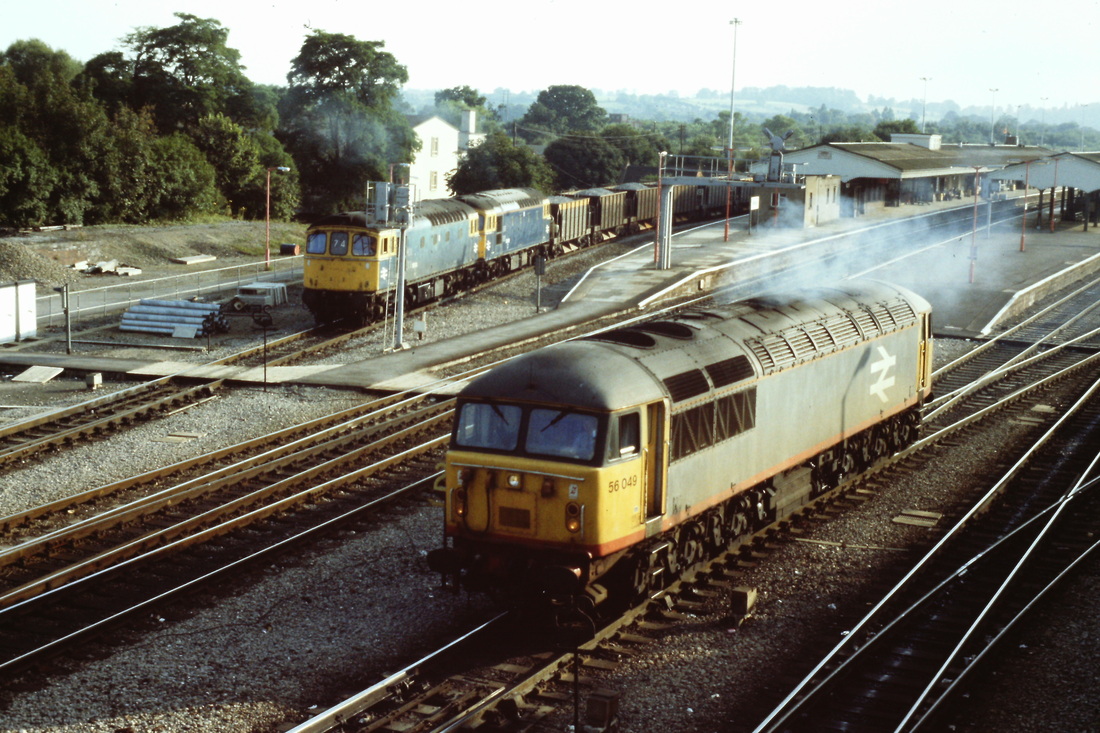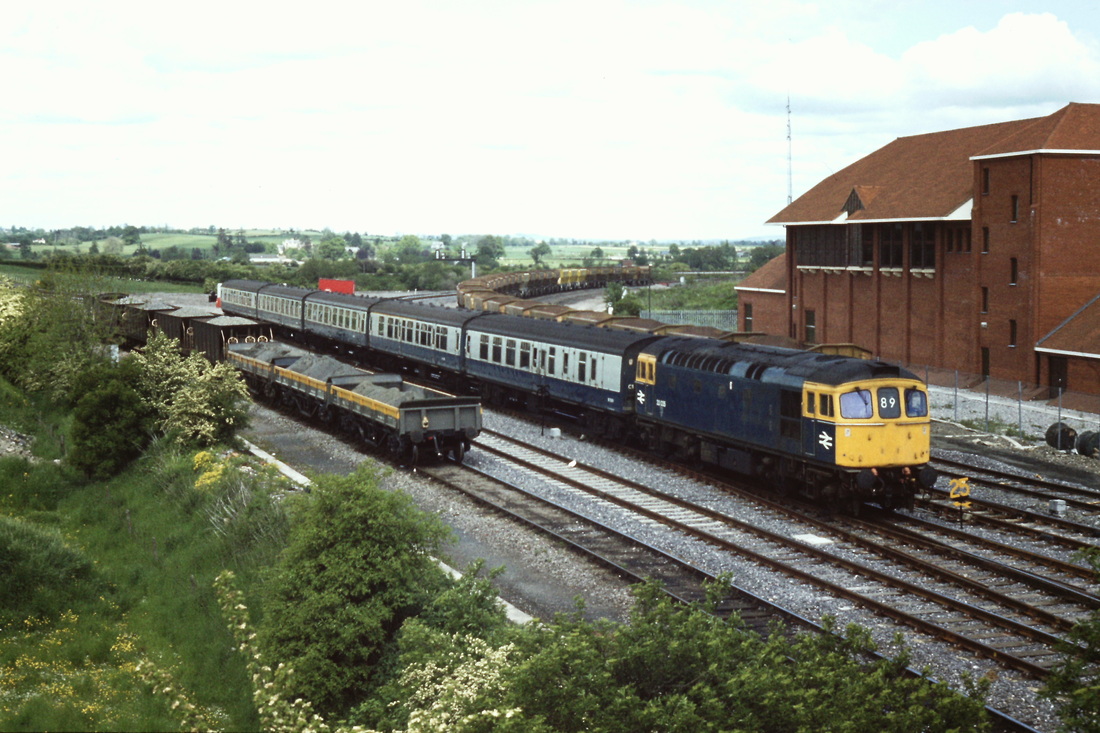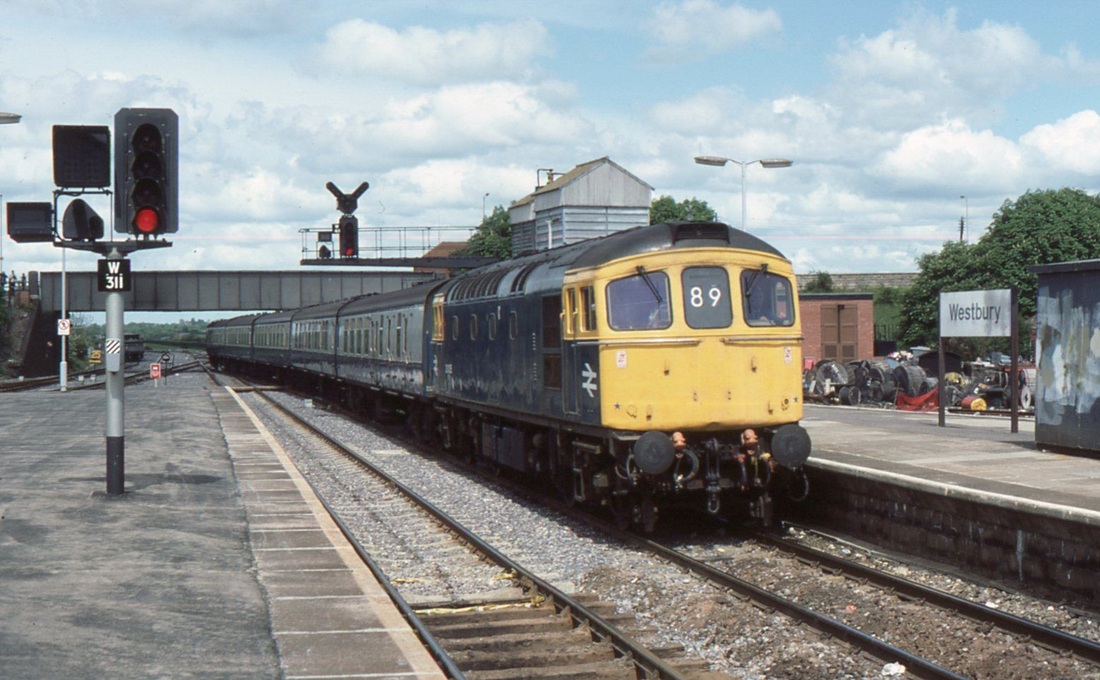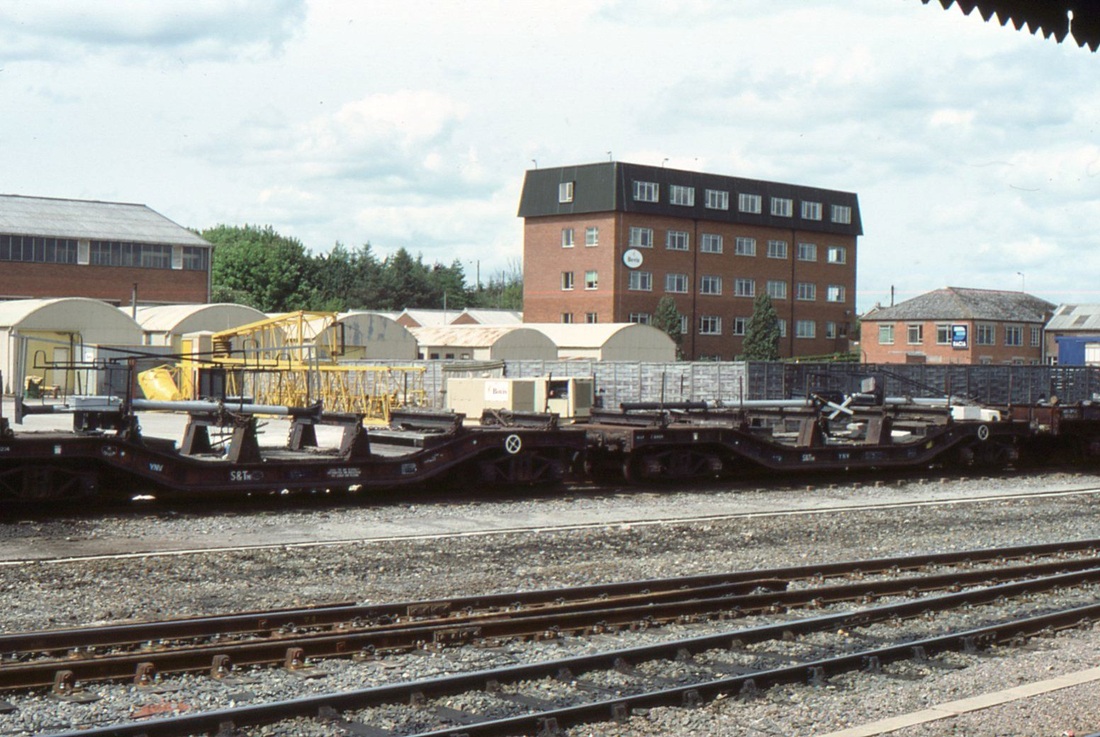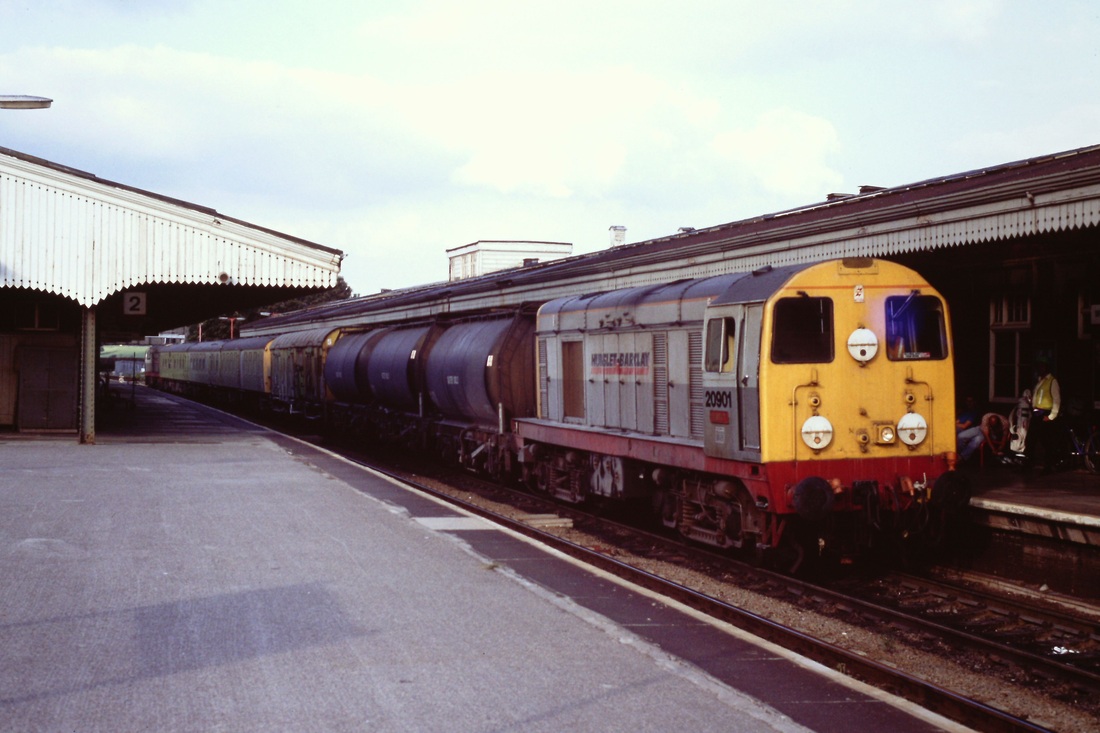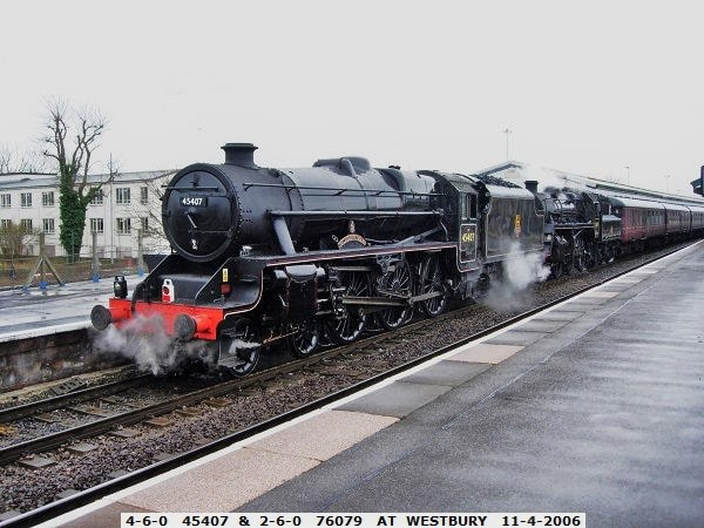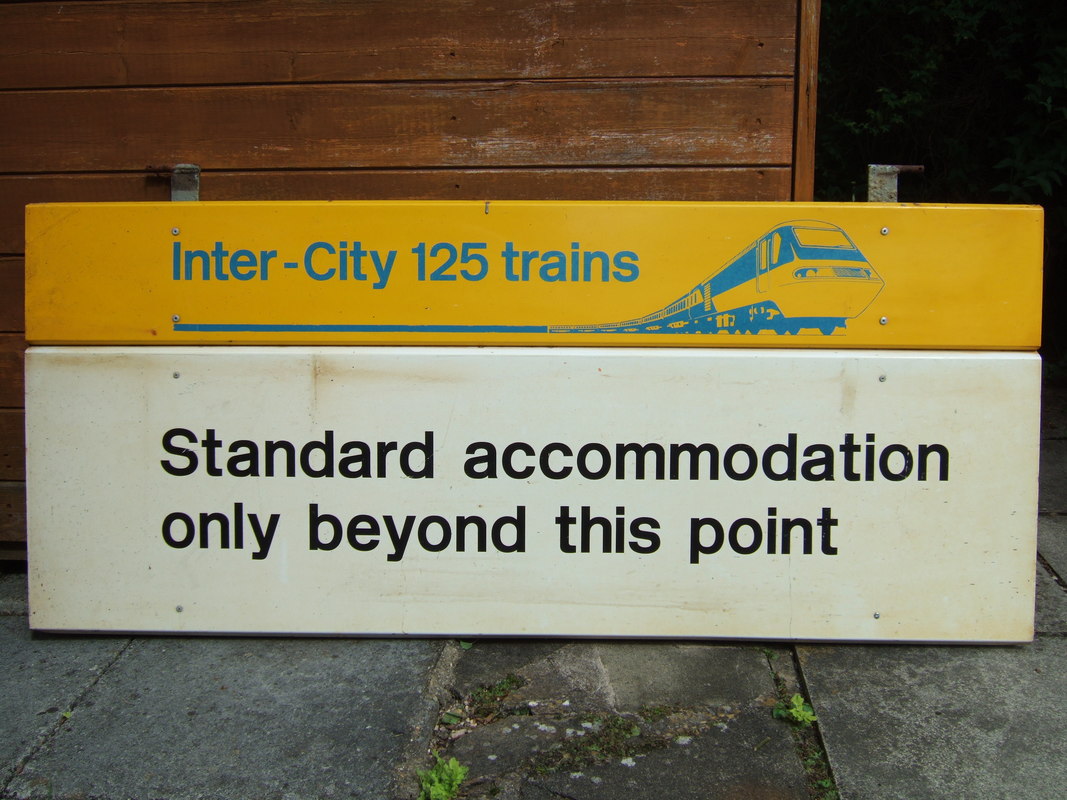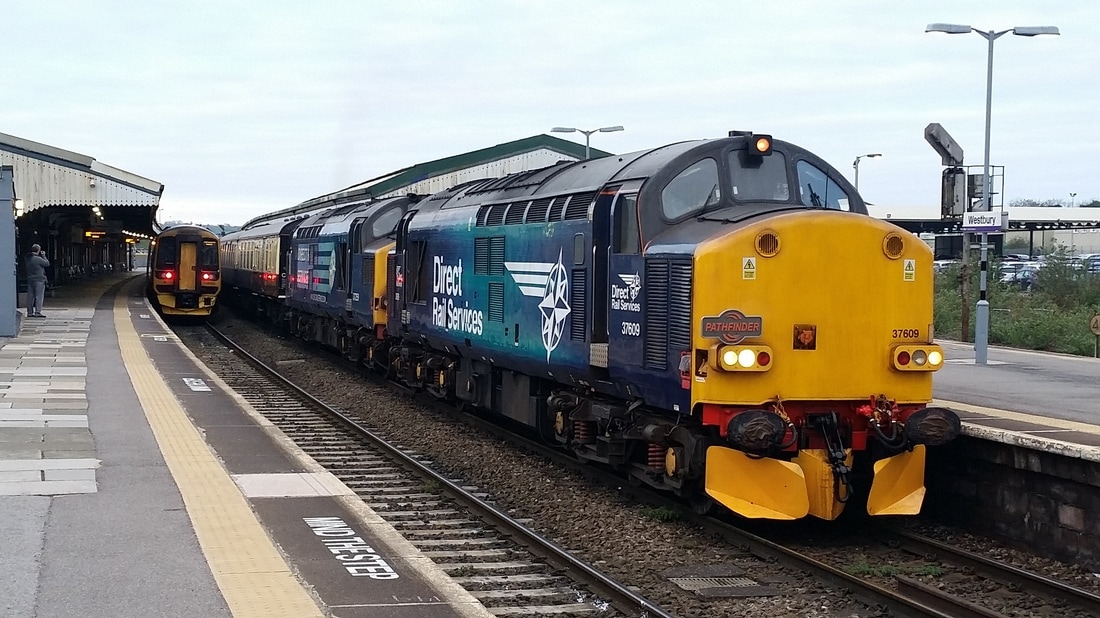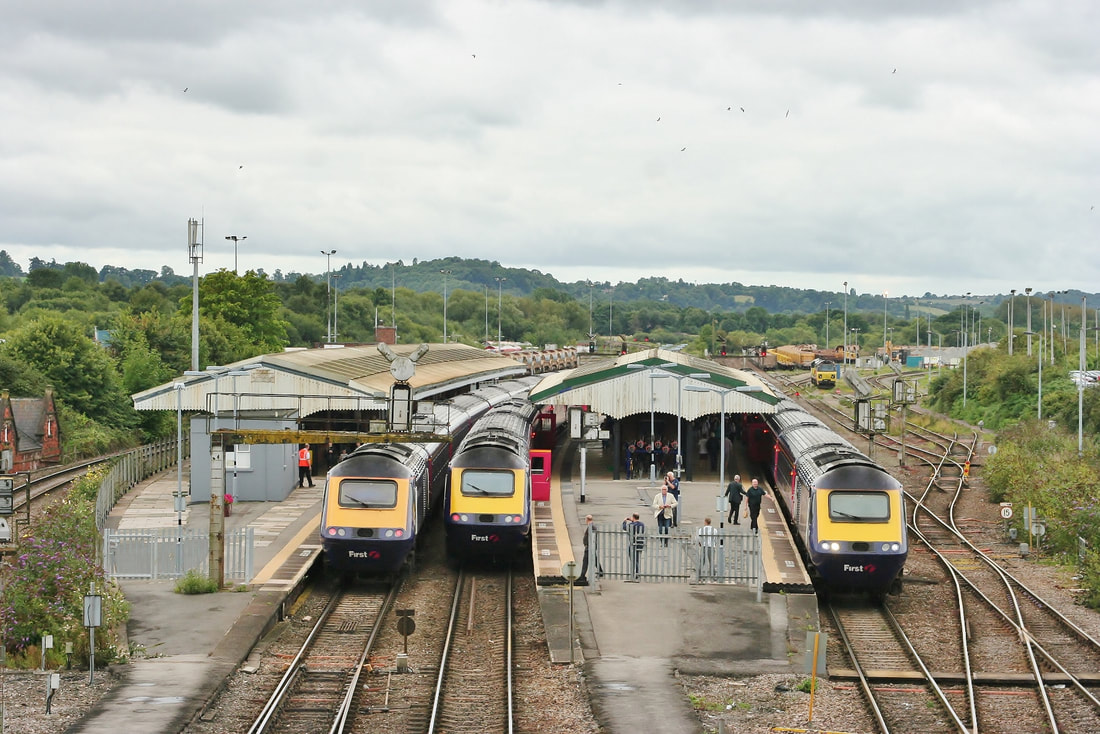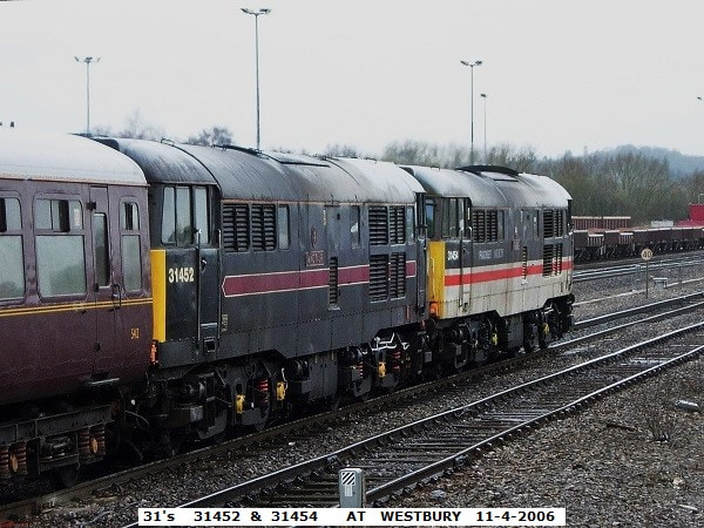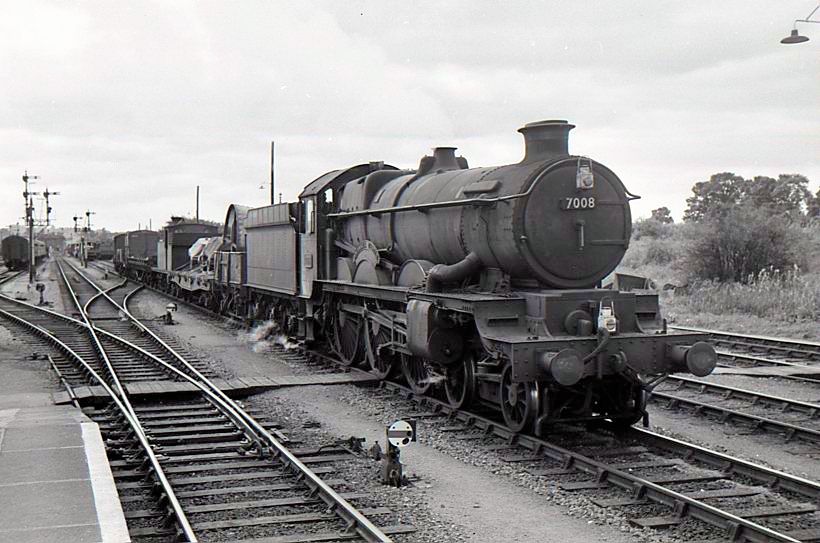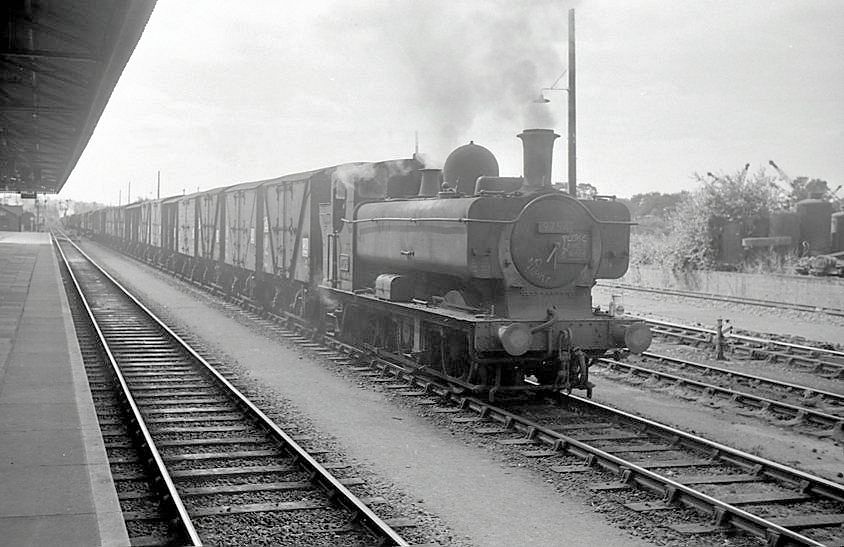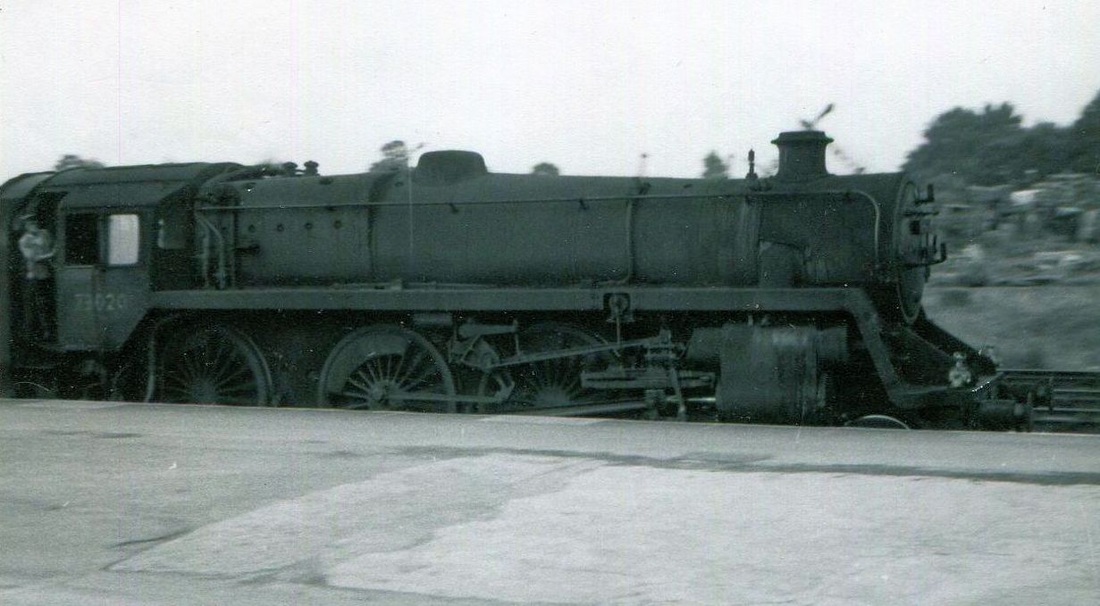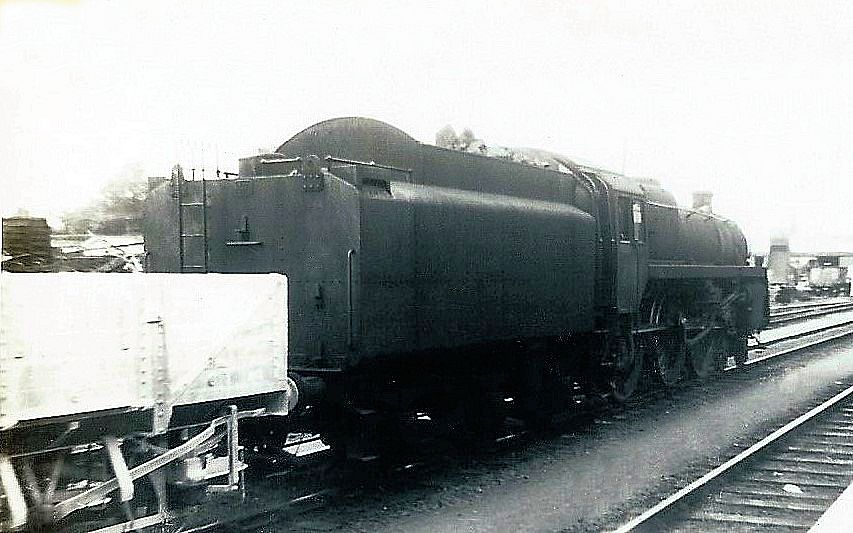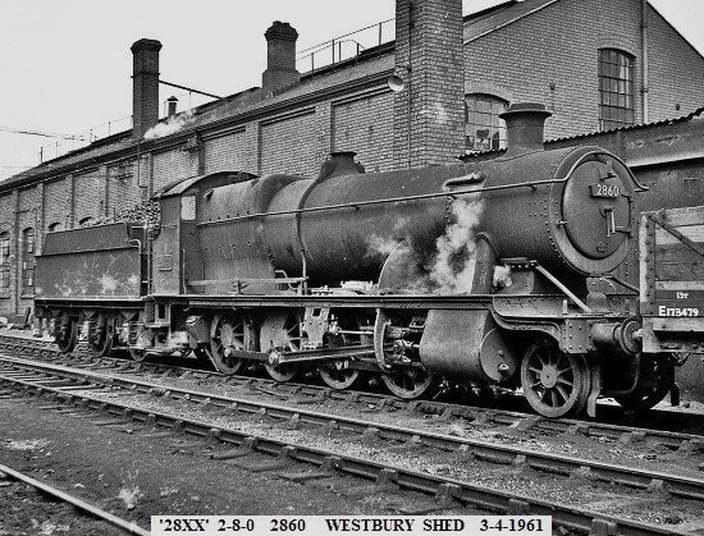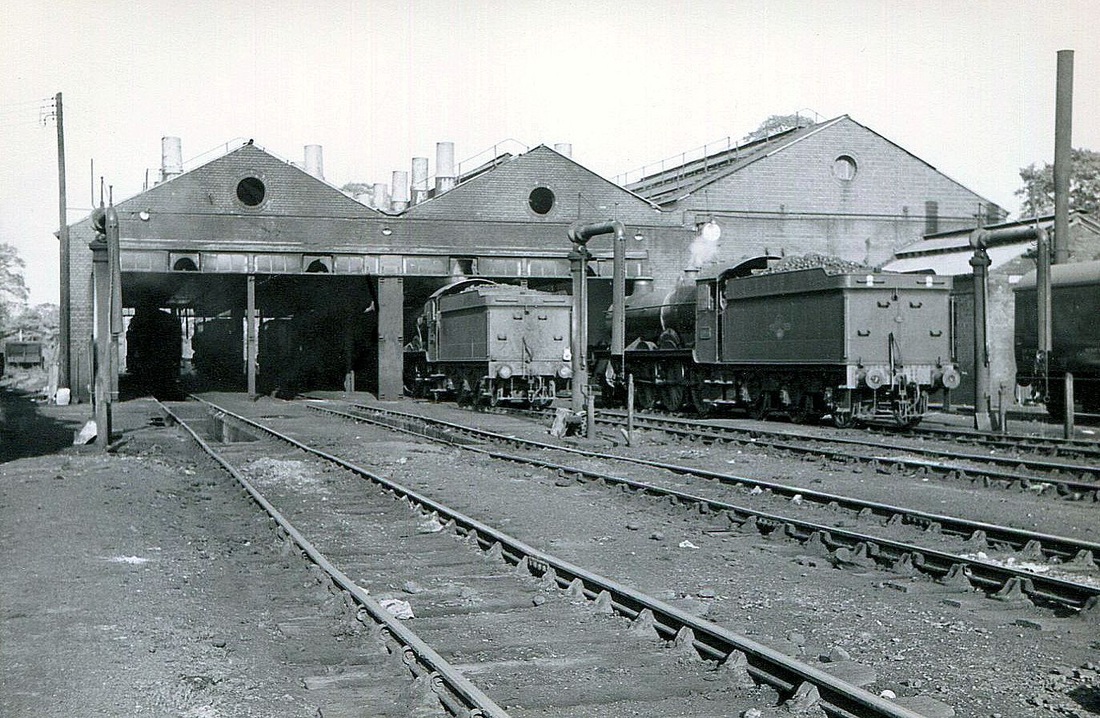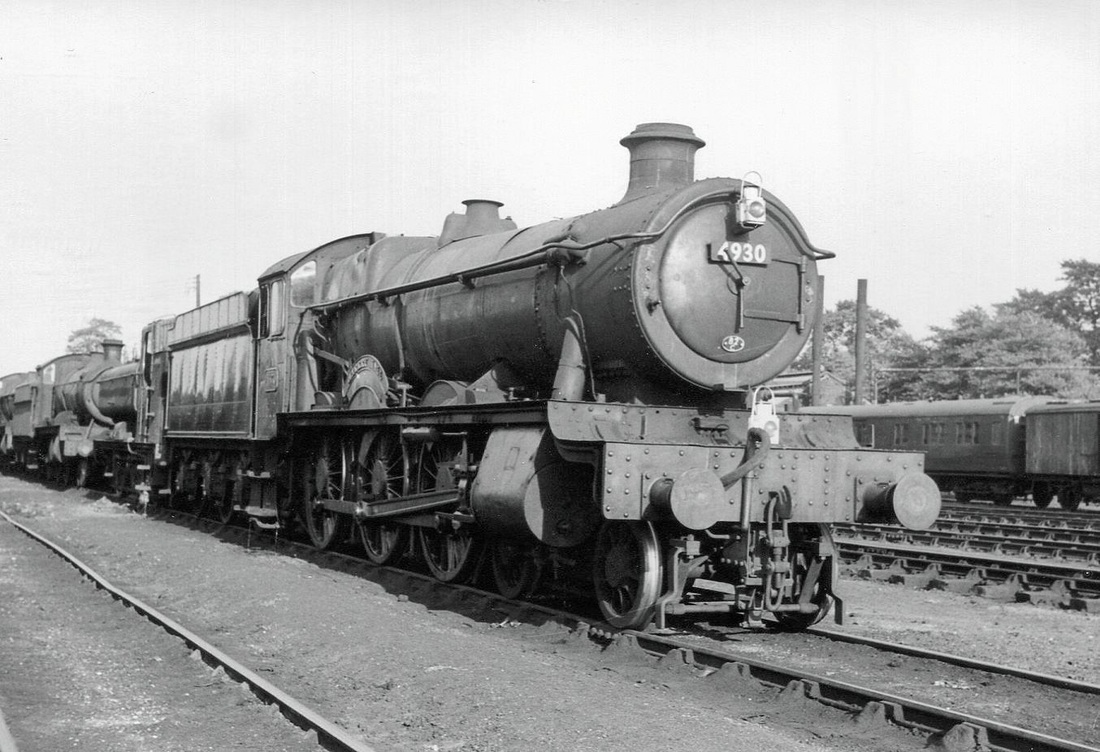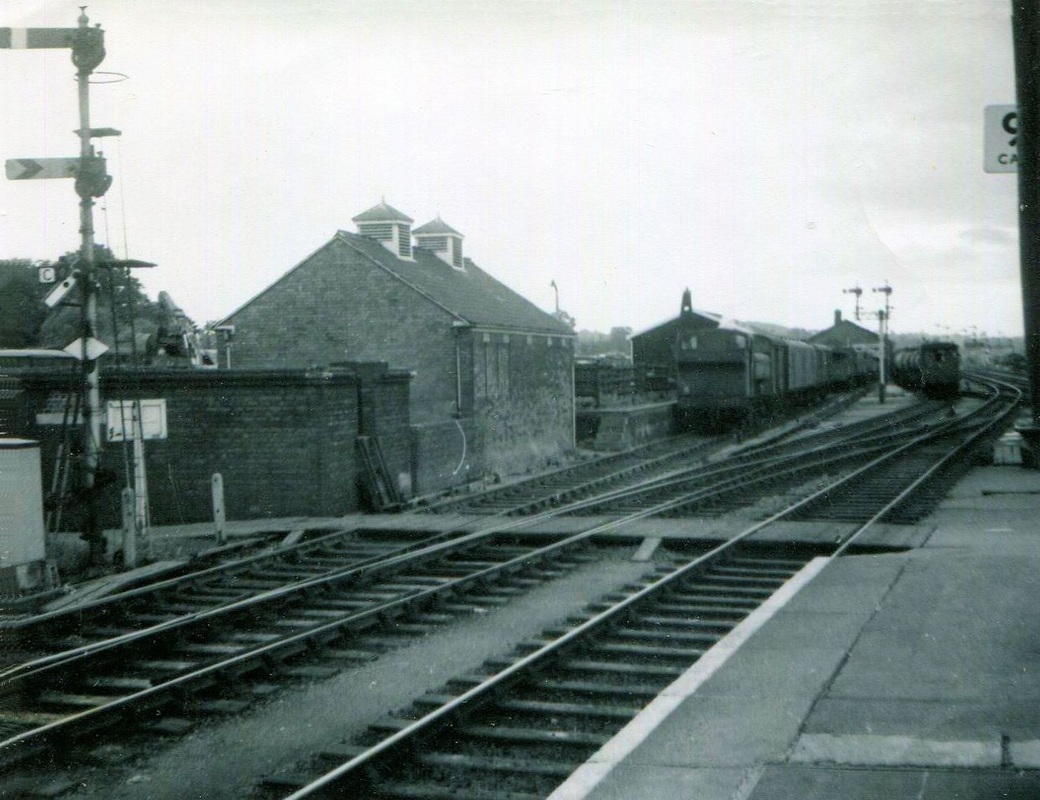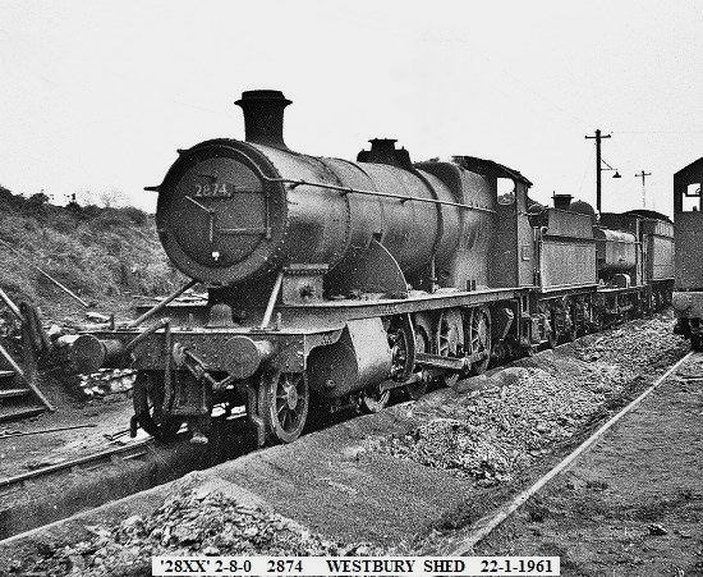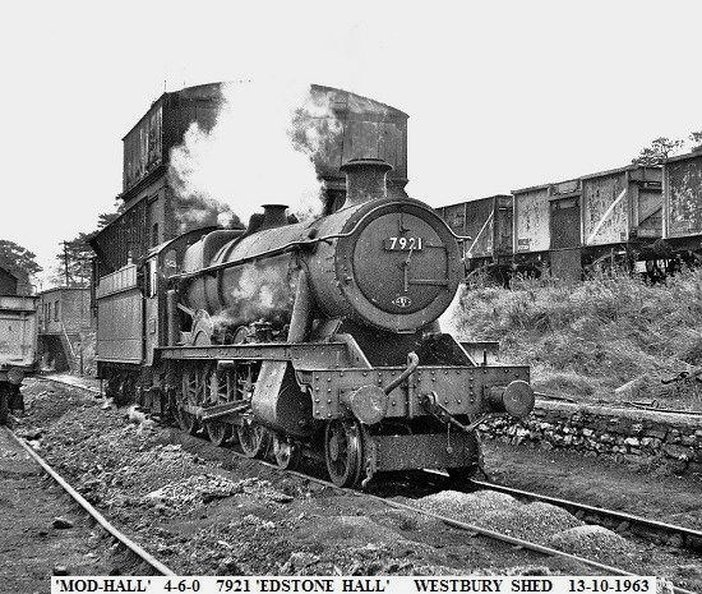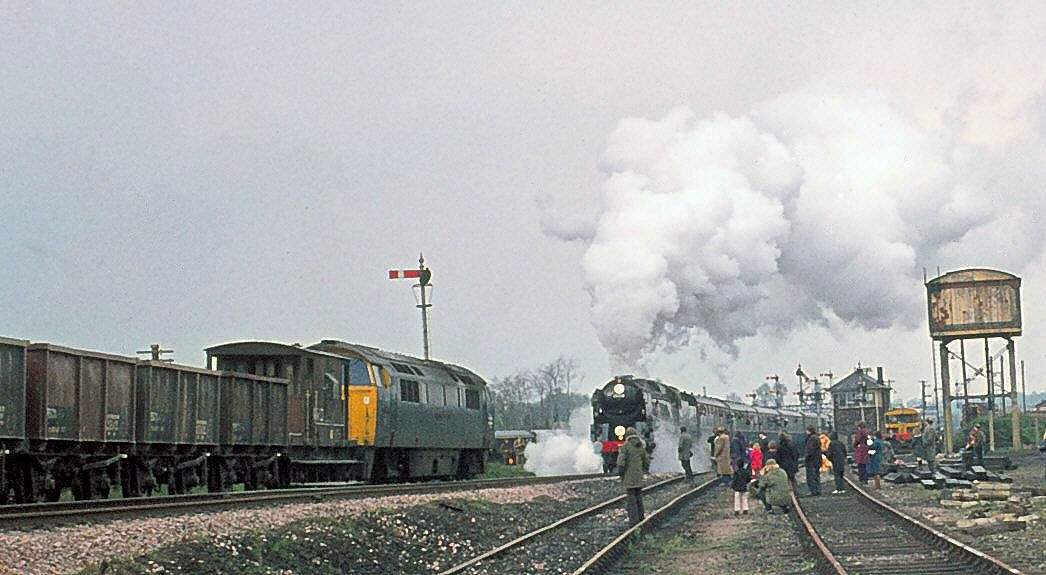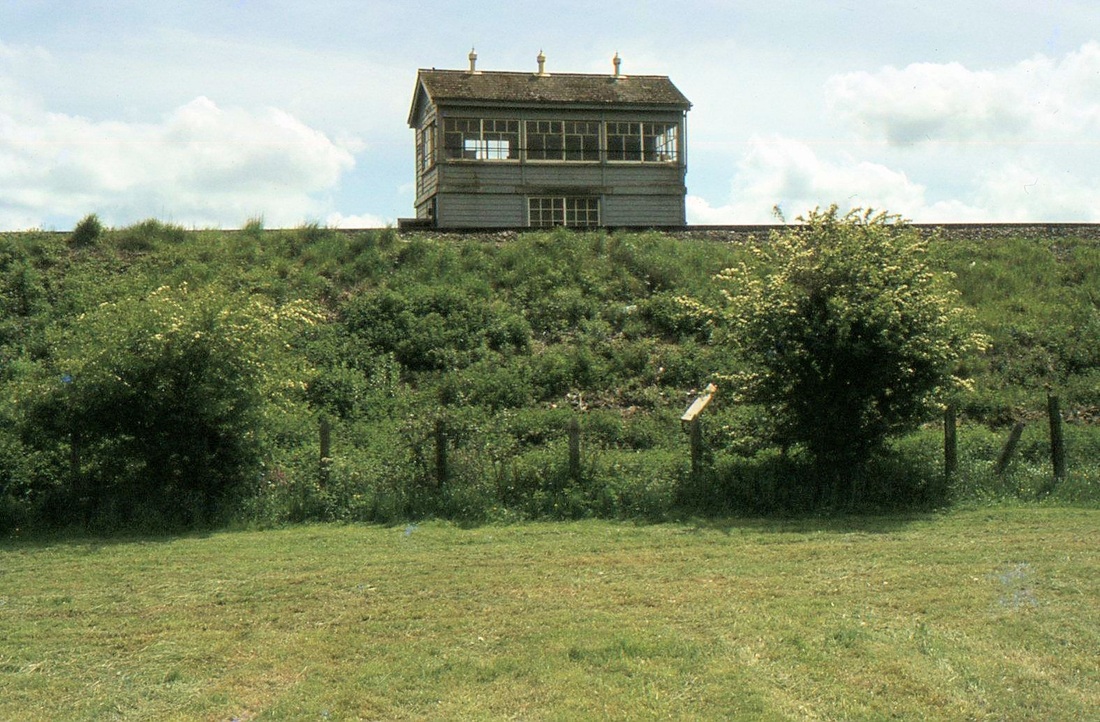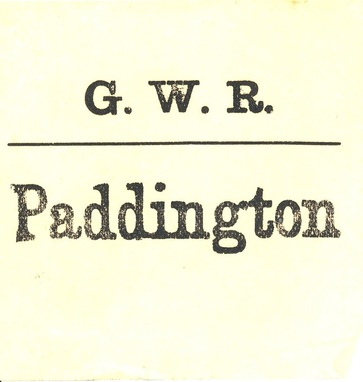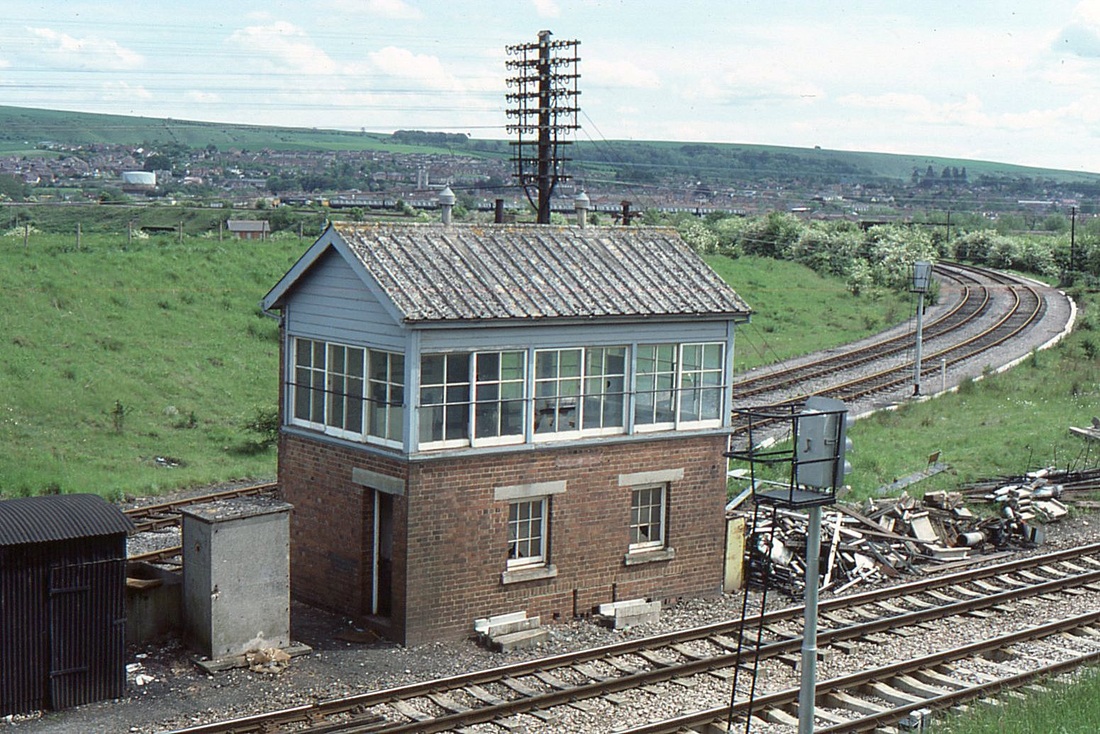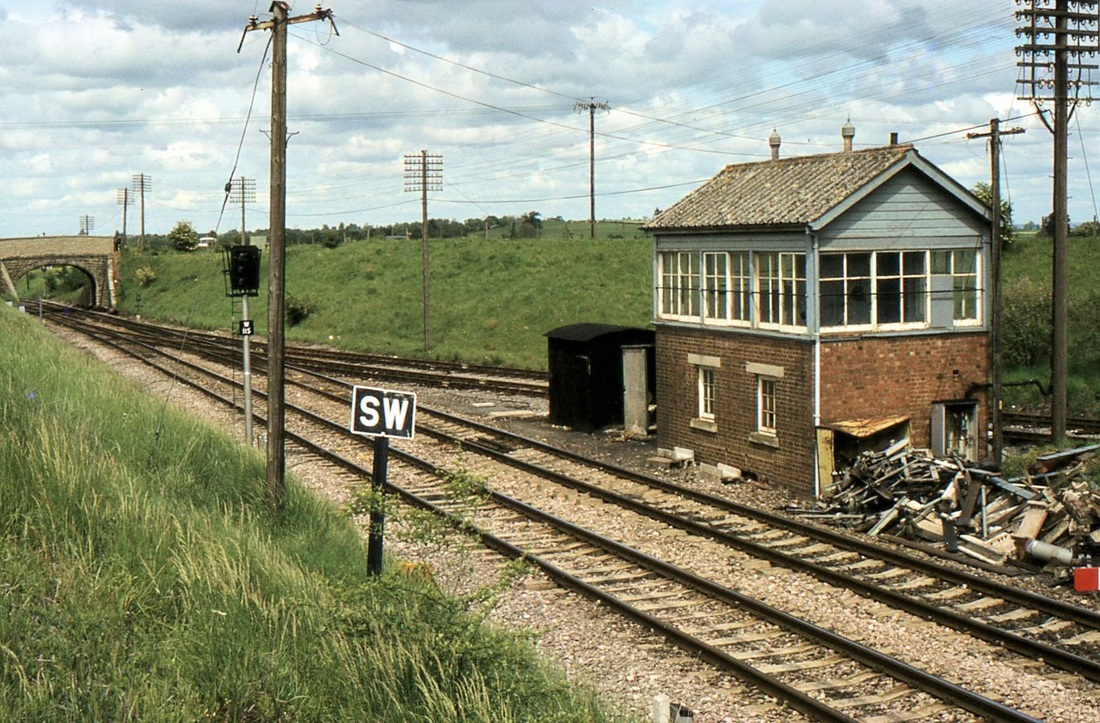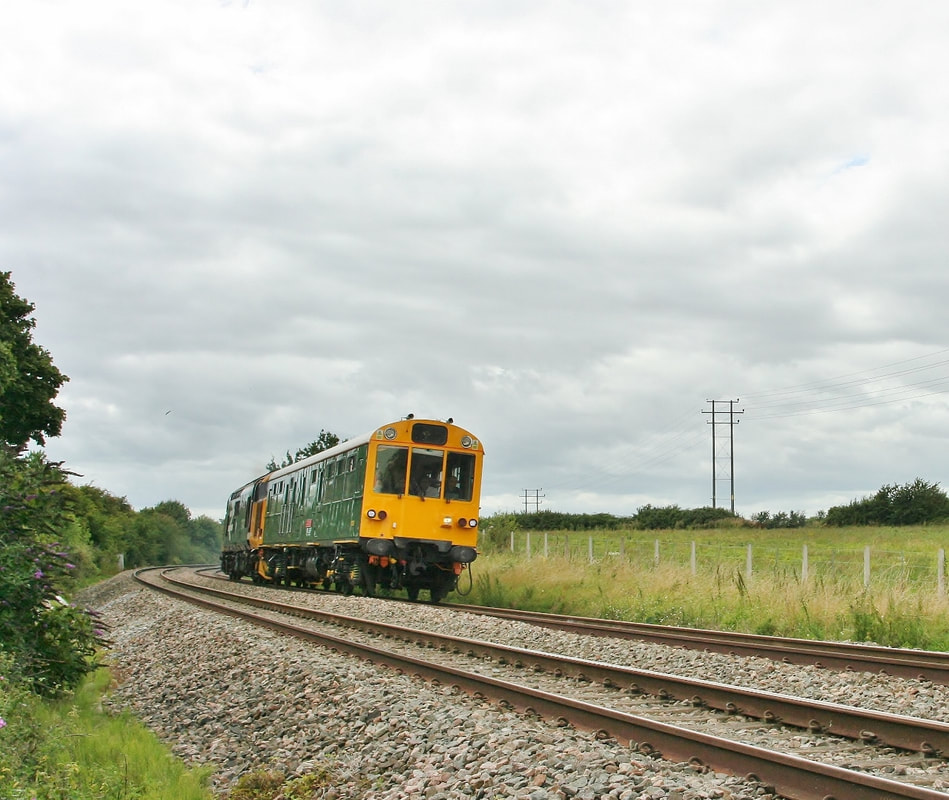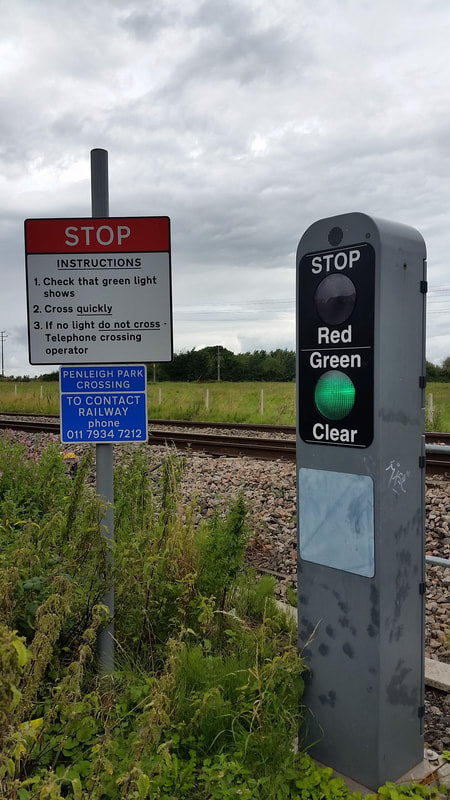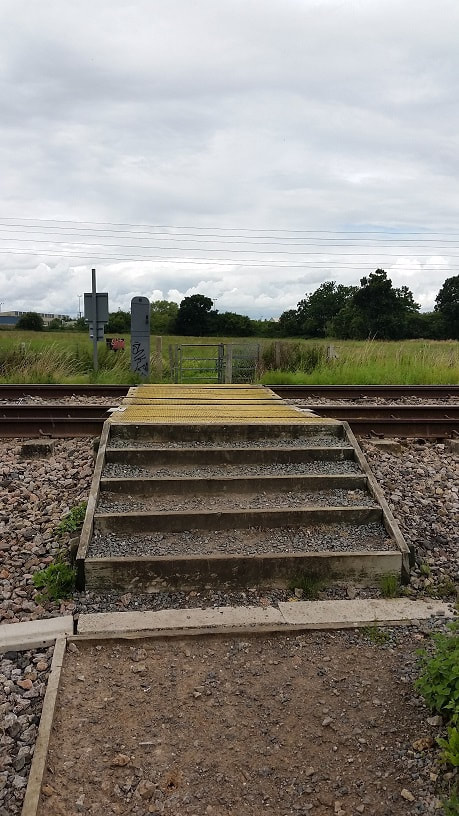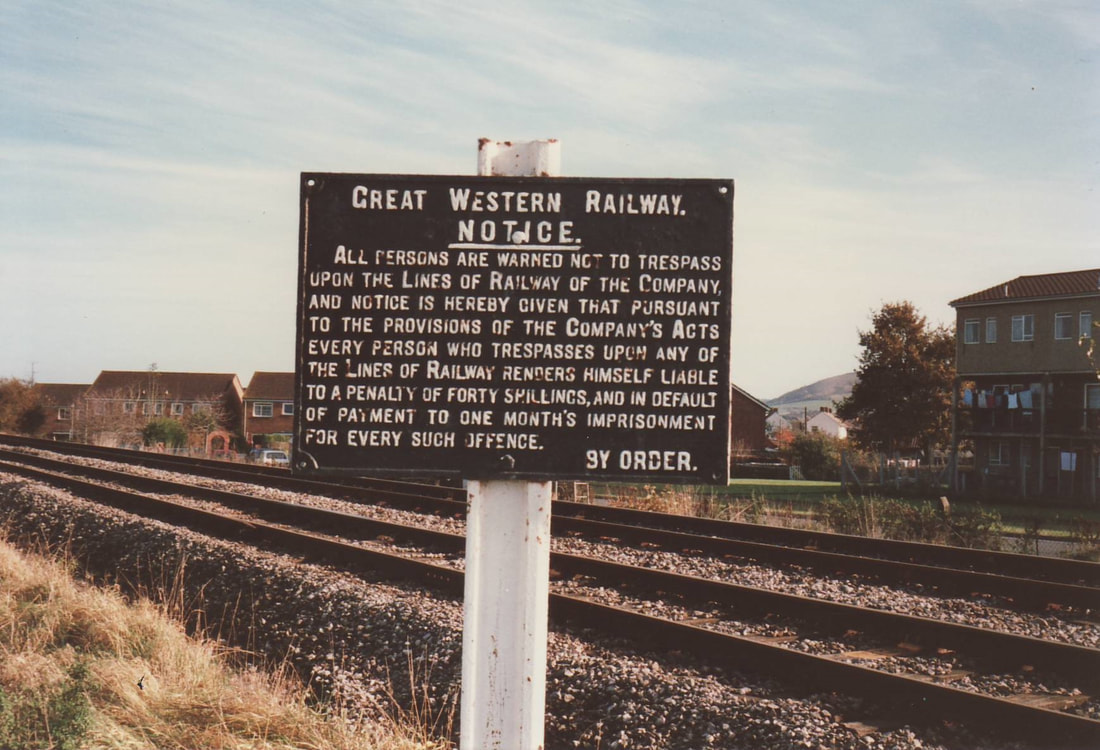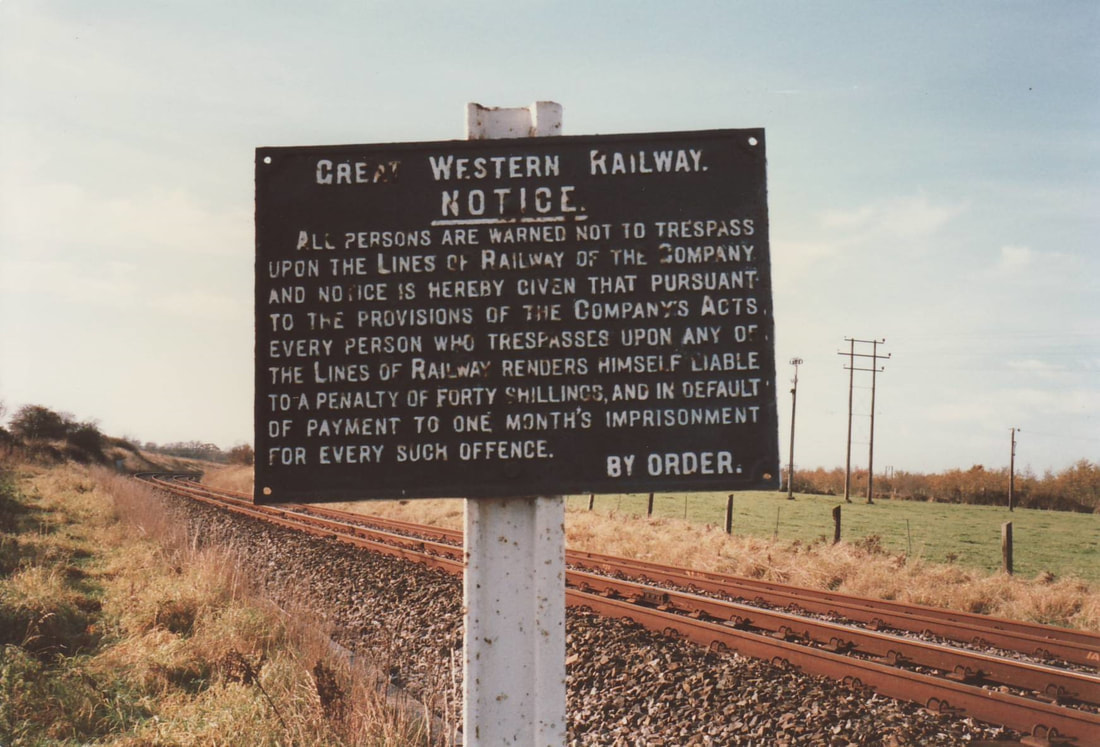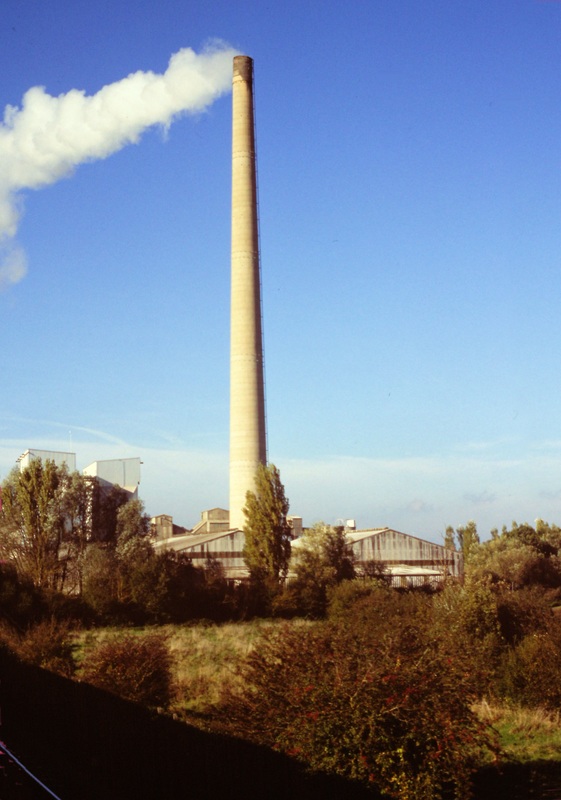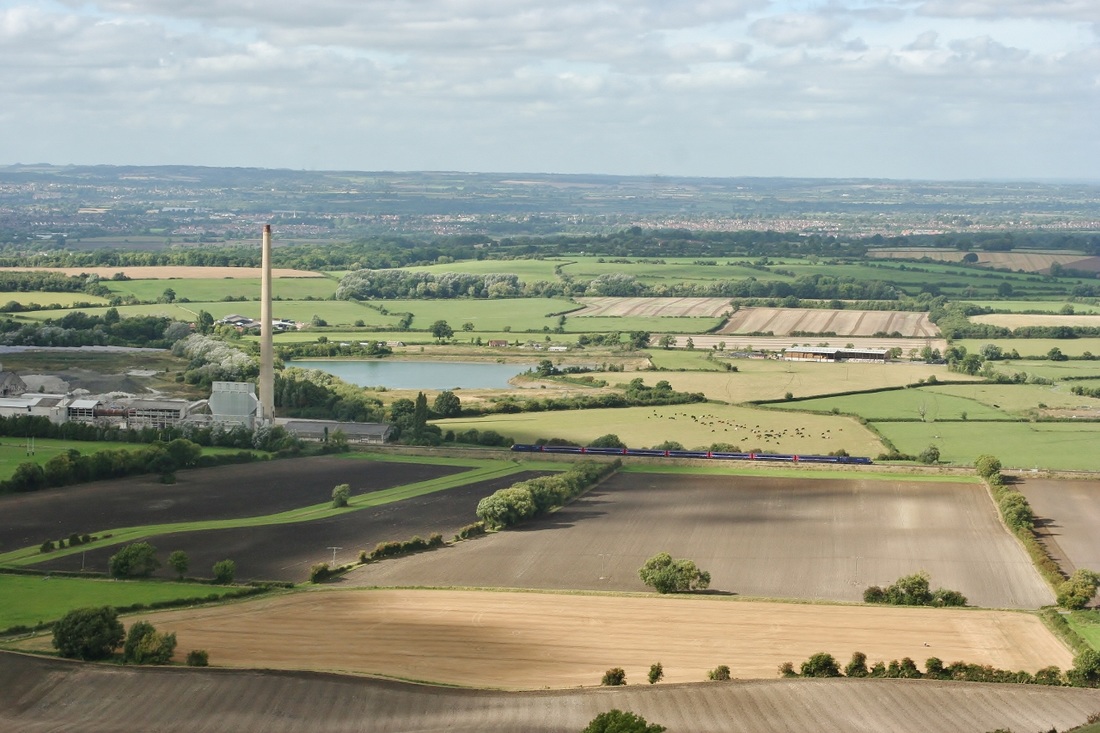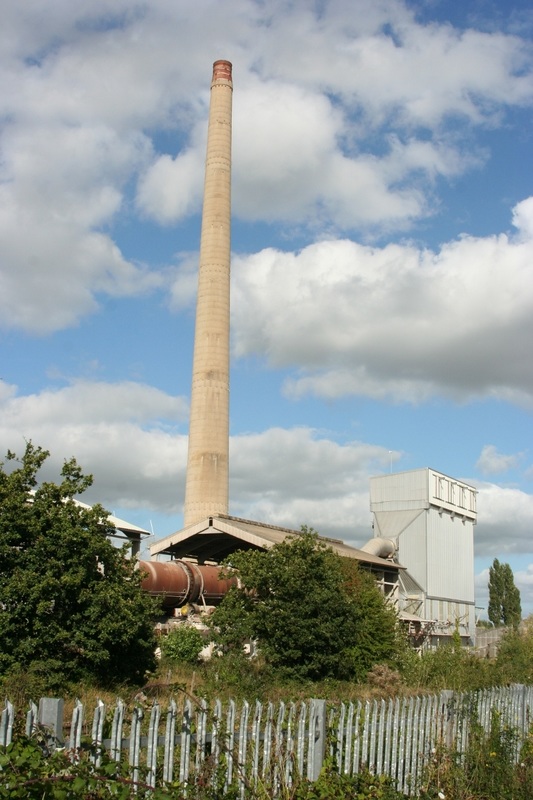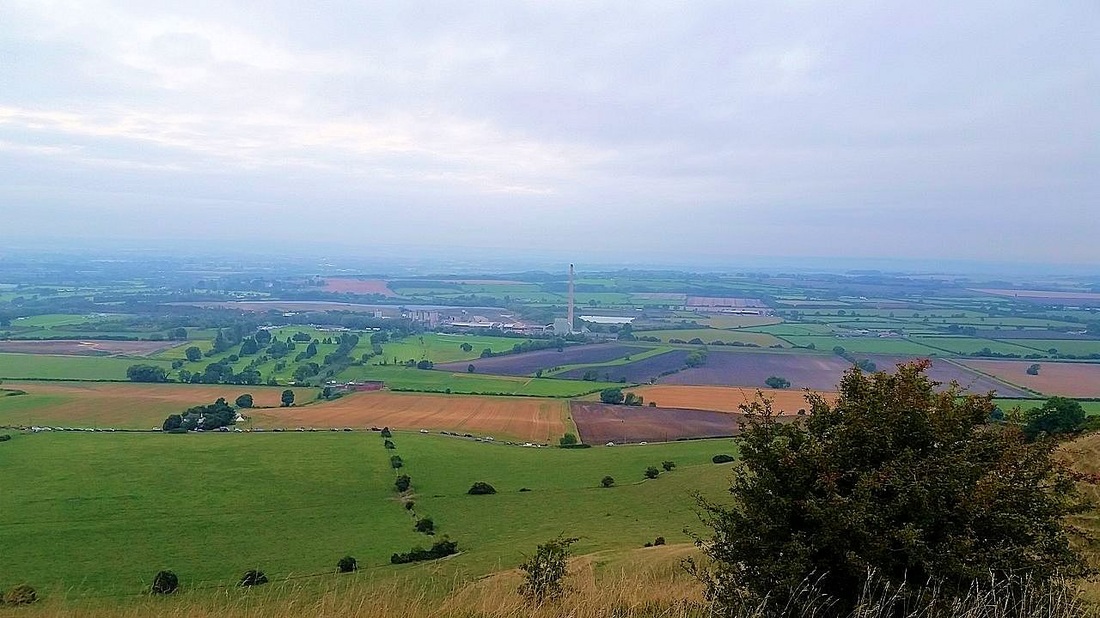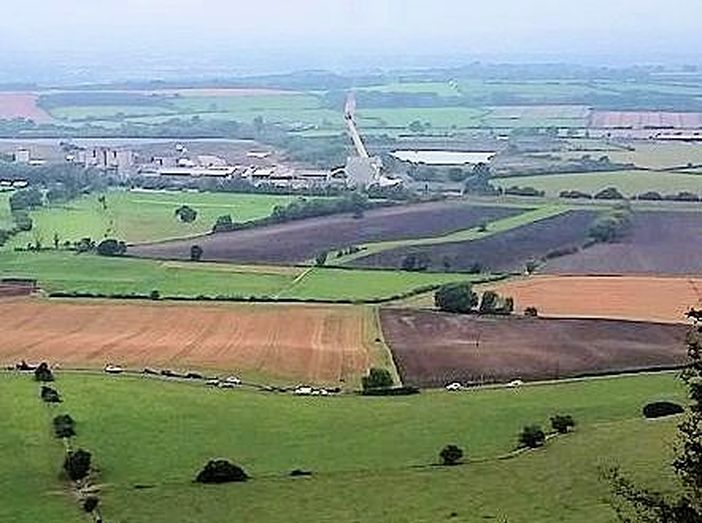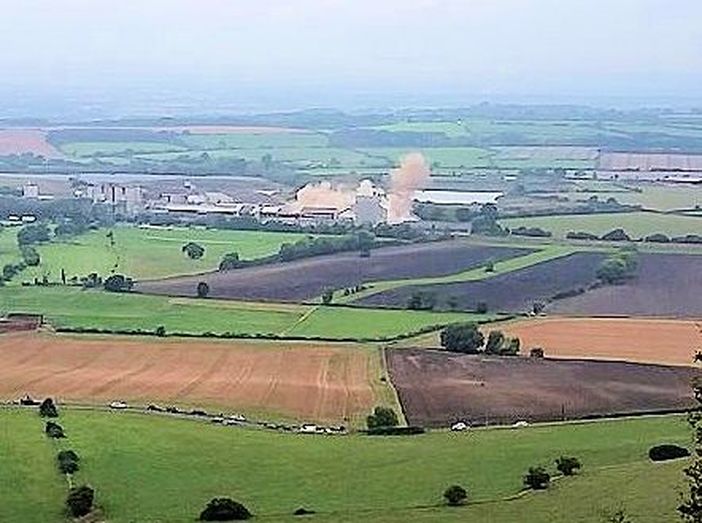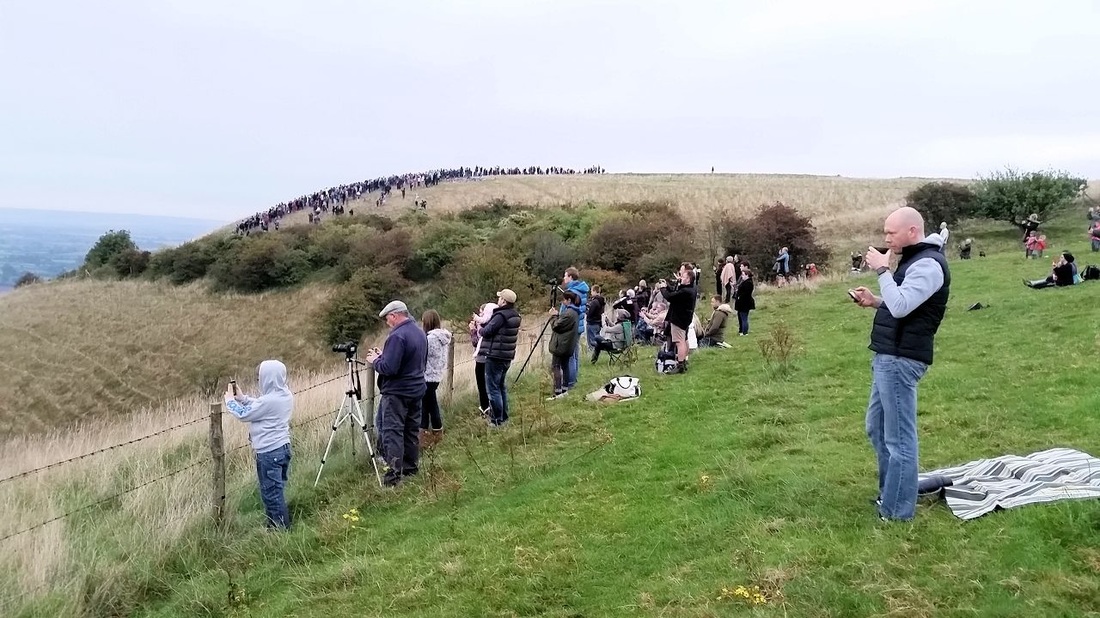Taunton to Westbury
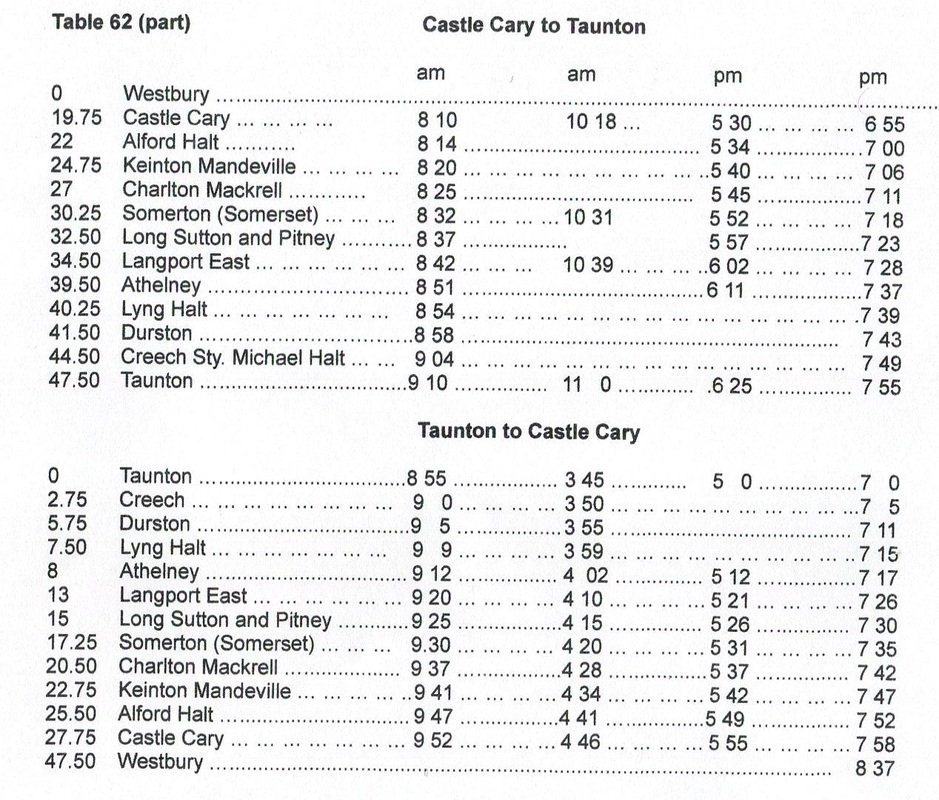
Extract from the Summer Timetable - this last period of operation for stopper trains between Castle Cary & Taunton, Summer 1962 It can be seen that it was a pretty sparse service. Thanks to Mike Roach for providing this extract.
If you wanted to travel from Taunton to Castle Cary in December 2014 there are 8 trains a day, on weekdays, from 06.17 to 20.25 taking 20 to 22 minutes non-stop.
Taunton
Creech St Michael Two and three quarter miles from Taunton
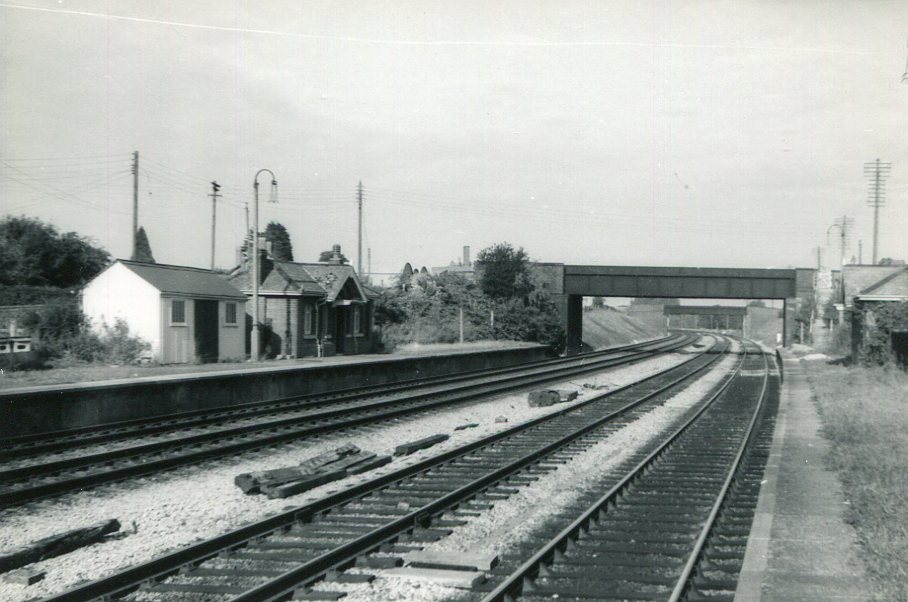
Creech St Michael on the 1st October 1966 just days before the stations closure on the 5th October 1964. The station at this site originally opened in 1928 but had be rebuilt further out to accommodate four tracks in 1931. These were reduced to two again in 1986, one wonders if there will ever be a requirement to put back the additional lines. At least the bridge would not require widening! Copyright Mike Roach
Creech Troughs
Water troughs were installed for the then double track in 1902. Alongside the track was a float house which ensured that the levels in the troughs could be maintained. After passage of an engine taking water the troughs could be refilled in a remarkable three minutes. The tracks here were quadrupled in 1930 - 32 all tracks being fitted with troughs.
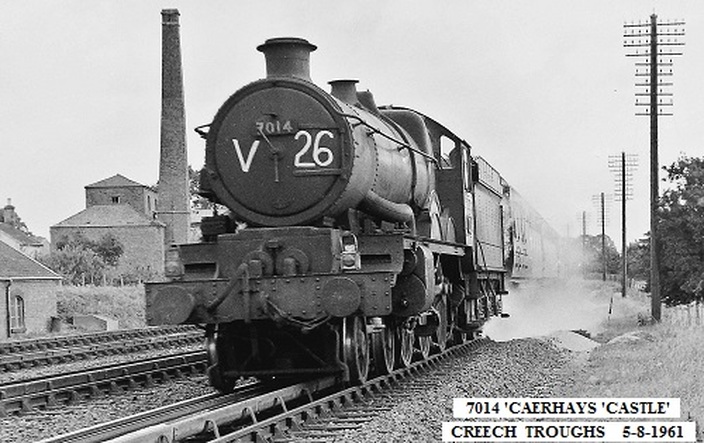
7014 Caerhays Castle on Creech Troughs 5th August 1961. An extremely well timed picture in that it features the pumping station which provided the water for the troughs as well as a locally, to us in Cornwall, named engine. 7014 was built in July 1948 and scrapped in February 1965. It looks as if the camera and photographer are in for an early bath!! Copyright John Cornelius
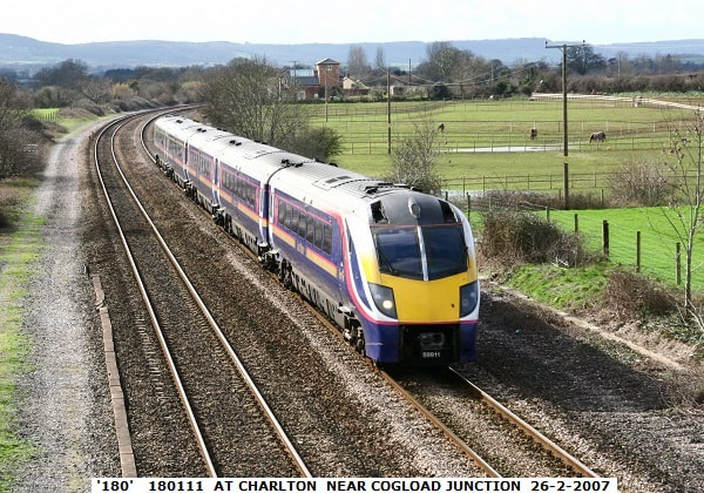
Charlton is just to the west of Cogload Junction. The fact that this was formerly quadruple track is is clearly seen by the sleeper imprints in the ballast on either side of the running lines. Will there ever be a case for making this a four track arrangement again one wonders!! Copyright John Cornelius
Cogload
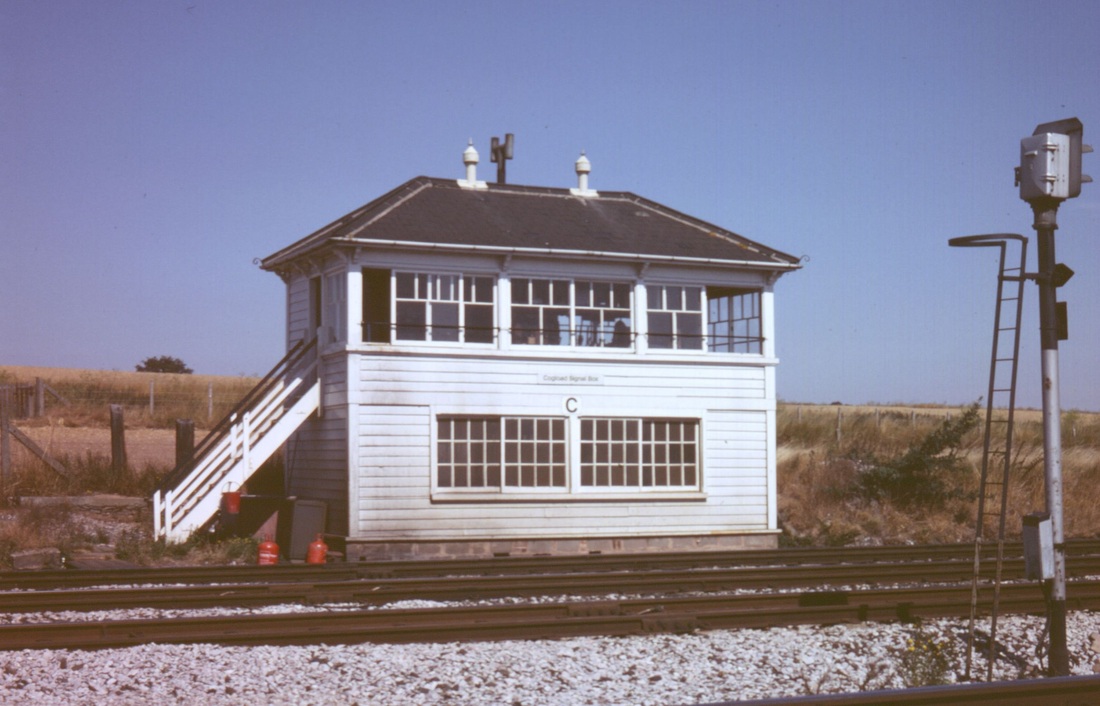
Cogload Signal Box in 1984 A view over the fence by Chris Osment Copyright
Note the high level of the Taunton to Bridgwater Canal in the background. The box had 23 levers as seen below - it closed 7th April 1986. The box previously opened in 1906 was moved just over a quarter of a mile the south west in 1931 on the opening of the flyover. The box made another move and is now located at Coleford in the Forest of Dean
Cogload had a 'stud' locking frame with 23 levers at 5.1/4" centres, plus two separate 2-lever 'small' frames for the detonator placers (probably later additions?) Thanks for info to Chris Osment
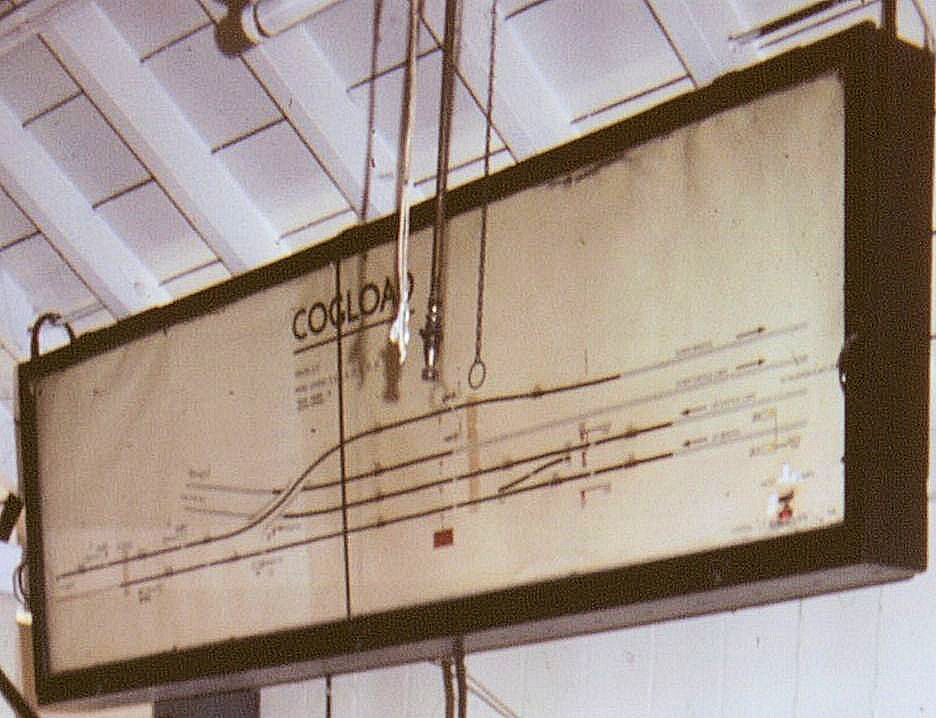
A close up of the track diagram showing coming from the left the double track main lines from Bristol in the lower part and from Westbury and London closing in under the 1931 flyover. Prior to 1986 quadruple track continued right though to Taunton, this was reduced to double track in 1986 when the box was closed. At one time water troughs were positioned on the main lines to the west of here - these were fed by water drawn from the canal via a header tank. The drawing of water from the canal caused a dispute. The base of the header tank has been turned into a very nice property with a lineside view. Copyright Chris Osment.
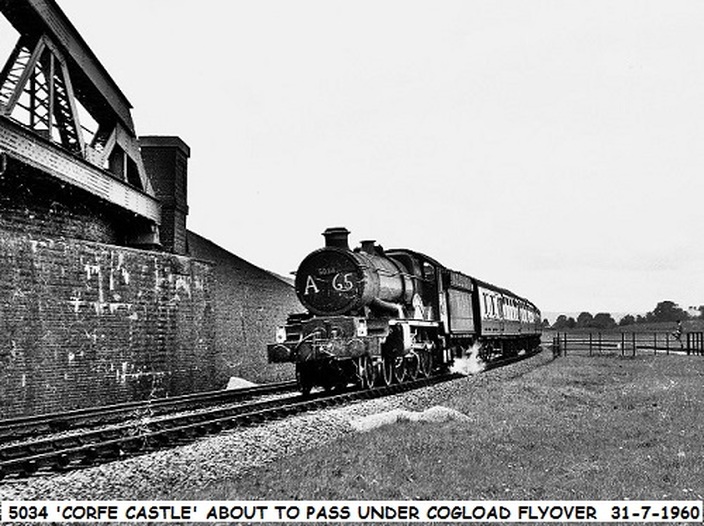
This picture, copyright John Cornelius is taken from a location privileged to railway staff. This up train as well as passing under the Bristol down line is also passing over a bridge over a lane which connects two fields either side of the four tracks at this location. The protective fencing is around an open point in the lanes passage under the railway. Taking a look at the current Google Earth view at this location will reveal a Bristol bound HST.
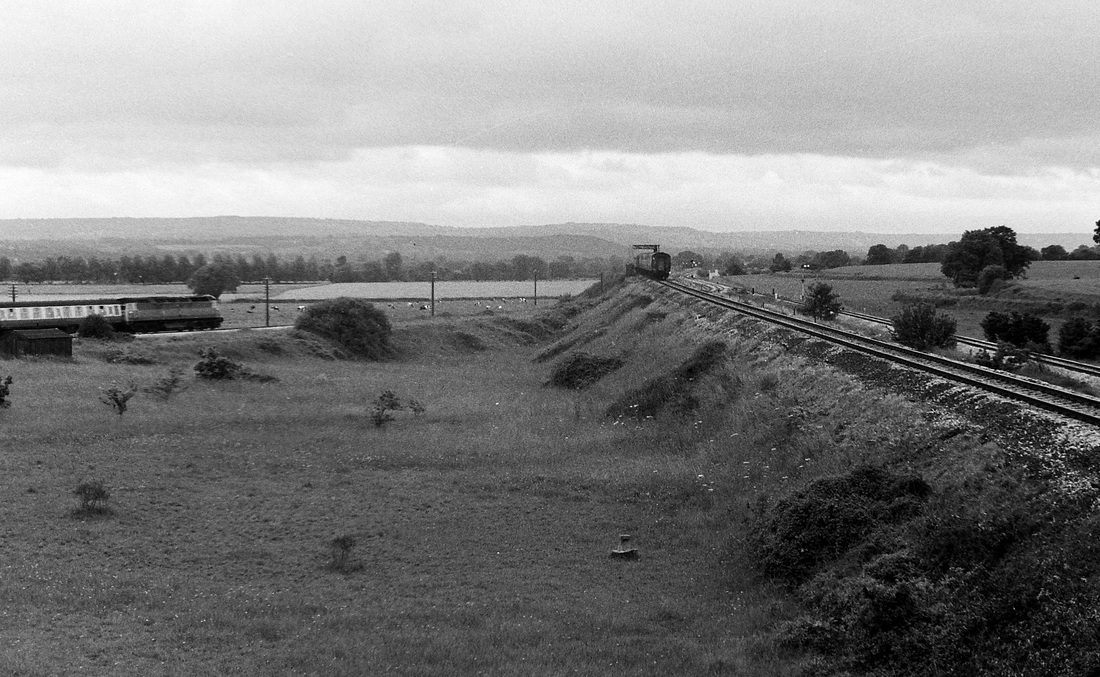
Cogload 1970 Class 47 on a down train from Paddington leans into the curve and had the train from Bristol been seconds later it would have passed under it. Copyright Andrew Jones. Examintaion of the signals at Cogload shows that had the timing been right that Andrew might have had three trains in his picture with the addition of a service for London!
The second is a Warship/Hymek combination, which was fairly rare, the Hymek was being dragged, I presume to Laira for attention.
I really didn’t realise how lucky I was back then, the activity was riveting, so much so that I did not notice a curled up adder by my side for the duration!
I really didn’t realise how lucky I was back then, the activity was riveting, so much so that I did not notice a curled up adder by my side for the duration!
One of the delights of being a railway signalman in 1975 was that having asked permission of the local signalman once could go anywhere. John Cornelius, signalman at the time brings us these exclusive pictures.
Hi Keith, I was interested in the pics of Cogload from 'a different angle'.
So I've looked out a few slides I took there on Easter Saturday 31-3-1975, which gives a another angle of it, when most London trains were hauled by class 52 locos. However, before I went onto the flyover I had a word with the duty signalman, and told him what I intended doing, so he was aware of where I was. After taking several photo's, I returned to the box to let him know when I had finished on the flyover, but continued taking pics by the signalbox for a while.
enjoy, cheers JOHN C. We most certainly will 'enjoy', many thanks John.
Hi Keith, I was interested in the pics of Cogload from 'a different angle'.
So I've looked out a few slides I took there on Easter Saturday 31-3-1975, which gives a another angle of it, when most London trains were hauled by class 52 locos. However, before I went onto the flyover I had a word with the duty signalman, and told him what I intended doing, so he was aware of where I was. After taking several photo's, I returned to the box to let him know when I had finished on the flyover, but continued taking pics by the signalbox for a while.
enjoy, cheers JOHN C. We most certainly will 'enjoy', many thanks John.
Athelney Eight miles from Taunton via direct route

A lovely and very interesting composition by Mike Roach taken on 13th July 1964 . Other photographers are in evidence on the train, the signalman takes the electric train staff which has covered the section from Durston, this passes Lyng Church, seen in the background. The train crosses both the waterway and the road, this crossing was the scene of a serious accident in 2014. The double track junction soon becomes single line to Durston. Copyright

Athelney signal box in September 1984. In its last days, what a shame the cast iron nameplate was removed, note also evidence of patchings of paintwork. A large light fixed to the corner of the box illuminates this busy yet lonely crossing. The top half of this box still lives on as Bishops Bridge signal box on the South Devon Railway. Copyright Mike Roach
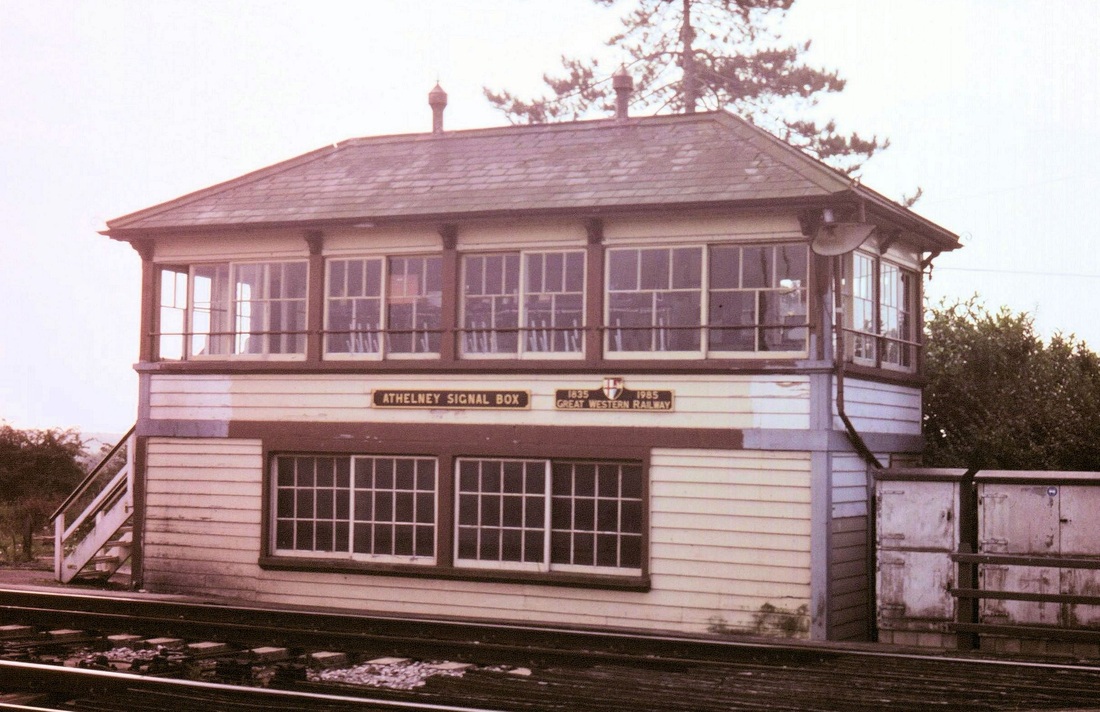
Athelney Signal Box - a welcome improvement. As mentioned in the above picture caption British Rail had sought to standardise the nameplates of signal boxes and as such had removed the cast iron plates on Athelney. How befitting therefore that in its dying days an enterprising group replaced the BR sign with a replica sign. and commemorated the 150 years anniversary of the GWR. Photographed in 1986 by Chris Osment Copyright PLEASE SEE THE STORY BELOW.
Athelney Signalbox - the true story about the nameplates by John Cornelius
Hello Keith, the replica nameplates that were fitted to Athelney box in 1985 were made by me using plywood.
I had taken a rubbing of the original plate not long after I went there as signalman in 1976,
so I was able to make a full size replica. The other one commemorating the 150 anniversary,was
purely my own handiwork. After getting permission from management, I exhibited them on the box from
April to the end of September 1985. I still have both the plates at home over 30 years on.
By the way, tomorrow 5th April 2016, is the 30th anniversary of the closure of Athelney signal box.
I did the last shift,and after the last train, which passed at 2035, had cleared Cogload Junc,
I closed the box for the last time,then watched as the s&t stripped out all the equipment.
a very sad time. I think someone in the Glastonbury area bought the original box nameplate.
On a lighter note, happily the box was saved and now proudly signals trains at Staverton on the
South Devon Railway. I have visited the box once, since it was restored to working order
and when I walked in, it was just like going home, sheer magic! cheers JOHN C.
More Gems and another Athelney story by John Cornelius
John Cornelius writes -
Here are a few pics of Athelney that I took of the snow after the blizzards in February 1978. No trains ran on the Sunday only the snowplough clearing the line,which later got stuck between Castle Cary and Yeovil Pen Mill!. Sunday night after more blizzards it was just as bad again on Monday morning.
However a loco was sent from Westbury to try to get through to Taunton, which it did eventually.
On its return, Chief Signalling Inspector Mr JOHN FORRESTER from Bristol was on the loco and advised me that providing they got through to Westbury and if I could work my signals,they would start running trains.
So in the late afternoon the services resumed. As I couldn't get home I arranged to stay with friends in Taunton for a few days,travelling out and back by train each day, which meant getting a special stop order for the trains to drop me off at the crossing. It was the following Friday when the roads had been cleared that I finally got home. Quite an experience! Cheers John C Many thanks John
Here are a few pics of Athelney that I took of the snow after the blizzards in February 1978. No trains ran on the Sunday only the snowplough clearing the line,which later got stuck between Castle Cary and Yeovil Pen Mill!. Sunday night after more blizzards it was just as bad again on Monday morning.
However a loco was sent from Westbury to try to get through to Taunton, which it did eventually.
On its return, Chief Signalling Inspector Mr JOHN FORRESTER from Bristol was on the loco and advised me that providing they got through to Westbury and if I could work my signals,they would start running trains.
So in the late afternoon the services resumed. As I couldn't get home I arranged to stay with friends in Taunton for a few days,travelling out and back by train each day, which meant getting a special stop order for the trains to drop me off at the crossing. It was the following Friday when the roads had been cleared that I finally got home. Quite an experience! Cheers John C Many thanks John
Re pictures above. GOOD MORNING KEITH, as a follow up to Roger Winnens pic of the first 'hst' hauled 'Golden Hind'at Clink Road on 6-8-1979,being on early turn that day, I photographed it passing Athelney on the way up to London. Following a fairly quick turn around at Paddington, it then worked the first down
'hst' hauled 'Cornish Riviera' to Penzance. Likewise, the 'hst' set that later worked the up 'Cornish Rivera' to London , returned on the down 'Golden Hind'.
These trains ran to the loco hauled timings for sometime and it was not unusual for the down
'Cornish Riviera' to be running 15 min early passing Castle Cary. When it was running early
I would always give Taunton East signalman the tip.
cheers JOHN C. Many thanks John. See also Clink Road, Frome.
'hst' hauled 'Cornish Riviera' to Penzance. Likewise, the 'hst' set that later worked the up 'Cornish Rivera' to London , returned on the down 'Golden Hind'.
These trains ran to the loco hauled timings for sometime and it was not unusual for the down
'Cornish Riviera' to be running 15 min early passing Castle Cary. When it was running early
I would always give Taunton East signalman the tip.
cheers JOHN C. Many thanks John. See also Clink Road, Frome.
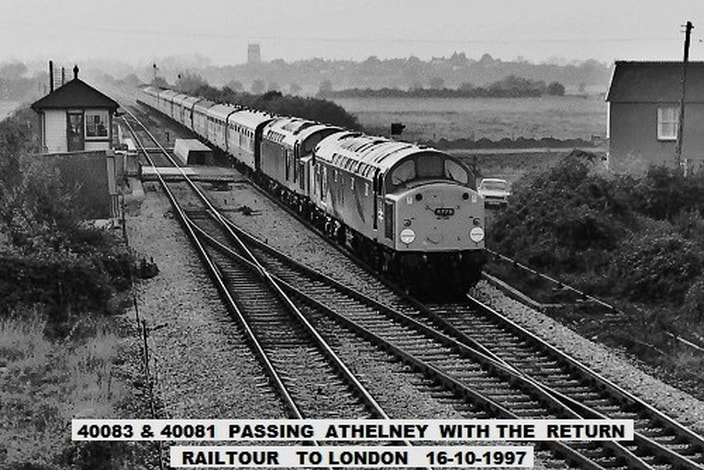
Another incredible picture by John Cornelius as, climbing a nearby signal post. he obtains this panoramic of the scene at Athelney as the class 40 headed railtour rushes over the waterway, the level crossing and past the signalbox. Lyng Church punctuates the horizon. Copyright John Cornelius. John would like it made clear that he wasn't on duty when this picture was taken but took over later in the box.
An interlude at Athelney - more pictures from the collection of John Cornelius - many thanks John.
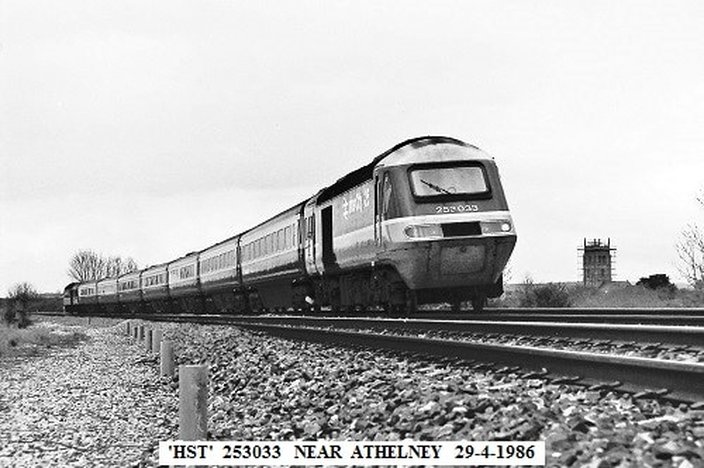
Church of St Bartholomew at East Lyng in the parish of Lyng, Somerset, England dates from the 14th century and has been designated as a Grade I listed building.[1]
The Anglican church at lyng is dedicated to St Bartholomew, and is thought to have been built by the monks who were displaced from Athelney Abbey when it was dissolved by King Henry VIII of England in 1539.[2] It stands on the site of an earlier fortress. Remedial work appears to be ongoing. Copyright John Cornelius
Wick 1/2 mile west of Curry Rivel Jct
Curry Rivel Junction. The signalbox at Curry Rivel was situated some 130 and three quarter miles from Paddington. Athelney was some four miles further west.
An interlude at Curry Rivel Junction with John Cornelius - - -
A short distance from the junction down the branch was an over bridge. It was suggested that this may have been used to provide the signalman with access. However John Cornelius cooments. I doubt if any photographers ever took pictures from the occupation bridge,on the branch,as it was accessed only by a rough farm track off the road from Langport to Wick, a longish walk and a bit out of the way. The signalmen used to ride along the cess from Langport West Station to get to the box.
I used the farm track the first time I went to the junction,leaving my bike at the lower end and walked to it. On my second visit, having shown the pics I took on the first visit too the station master at west station I asked if I could cycle out to the junc to which he readily agreed,but to keep look out in case any trains appeared on the branch. After an enjoyable few hours there,I returned the same way. great days CHEERS JOHN C.
I used the farm track the first time I went to the junction,leaving my bike at the lower end and walked to it. On my second visit, having shown the pics I took on the first visit too the station master at west station I asked if I could cycle out to the junc to which he readily agreed,but to keep look out in case any trains appeared on the branch. After an enjoyable few hours there,I returned the same way. great days CHEERS JOHN C.
A further historical and geographical note from John Cornelius. The area of land on which the box is sited is in Curry Rivel Parish hence the name rather than say 'Langport Junction'. Actually neither 'Langport East' or 'Langport West' were in the Parish of Langport, East station was in the parish of Huish Episcopi and West station was in the Parish of Curry Rivel. So now you know!!
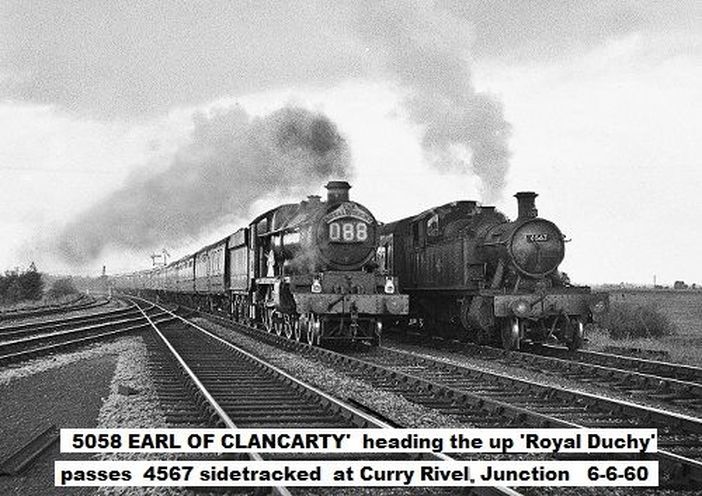
A quite remarkable picture taken by John Cornelius from just to the west of Curry Rivel Signalbox. Here we have, two for the price of one, two locos as a prairie waits in the up loop. The double track bearing off to the left are the metals of the Yeovil branch which was double track as far as Langport West. There was a further loop line which can just be seen beyond the metals of the Yeovil branch. Copyright
Oath is a small village about two and three Quarter miles west of Langport.
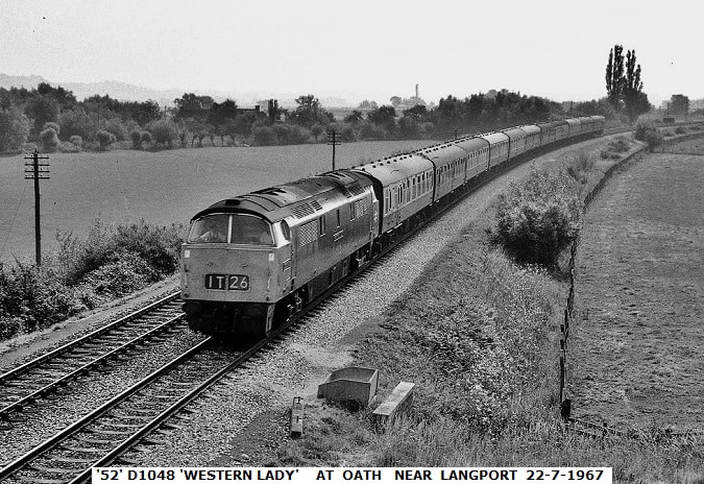
Having arrived at the Midland Railway Centre in March 1997, this locomotive is privately preserved and forms part of the Midland Diesel Group fleet, currently non-operational. Work is in hand to return the loco to working order.
D1048 Western Lady was designed at Swindon and built at Crewe in 1962 and is one of seven preserved, ex BR class 52 diesel hydraulic locomotives withdrawn from BR service on the Western Region over 20 years ago.
Copyright John Cornelius
Langport (East) Thirteen miles from Taunton
Long Sutton and Pitney Fifteen miles from Taunton
Long Sutton and Pitney a minor railway station situated in the hamlet of Upton, Somerset, about one mile equidistant from the two larger villages the station was named after. Absolutely nothing of it remains, a picture of the site exists on Google Earth. Position 51.02deg 23" North 2.46 deg 36" west.
Long Sutton and Pitney a minor railway station situated in the hamlet of Upton, Somerset, about one mile equidistant from the two larger villages the station was named after. Absolutely nothing of it remains, a picture of the site exists on Google Earth. Position 51.02deg 23" North 2.46 deg 36" west.
Somerton tunnel - the first tunnel out of London 126 miles from London.
The tunnel is 1.056 yards long. One workman was killed during the building of the tunnel when some blasting dynamite, which was being used to excavate the area, failed to detonate as planned. (Wilkipedia)
Somerton Seventeen and a quarter miles from Taunton
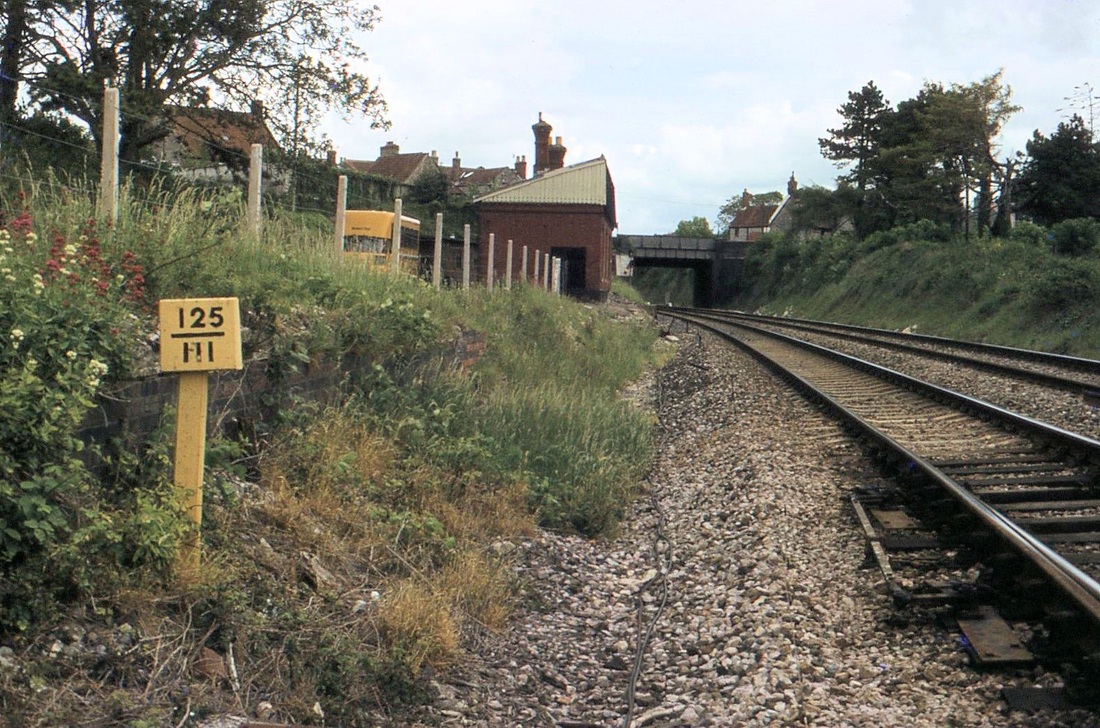
Somerton station has received the same treatment as at Langport East - the Canopy has been lopped off and the station building made fit for further use - see note from John Cornelius below.. At first sight this picture would appear to have been taken from inside the fence. However, at this location the walled enclosure in the next but one above picture provided access for a view east along the station front and towards the main road bridge. Copyright Roger Winnen.
Note from John Cornelius
He writes :- Sadly I don't have any pictures of Somerton station before it was demolished. When I worked there , the main up platform building was still there, the Langport end was used by p/way as a store room. The toilet at Castle Cary end was for the use of signalmen only. To stop unauthorised use, it was locked and the key kept in the signalbox.
He writes :- Sadly I don't have any pictures of Somerton station before it was demolished. When I worked there , the main up platform building was still there, the Langport end was used by p/way as a store room. The toilet at Castle Cary end was for the use of signalmen only. To stop unauthorised use, it was locked and the key kept in the signalbox.

A beautifully framed view, from Somerton signalbox taken by one time signalman here John Cornelius. He is looking west over the area once occupied by the Goods shed. Copyright John Cornelius. This station, opened on 2 July 1906, was officially known as "Somerton (Somerset)" to avoid confusion with "Somerton (Oxon)". It lay partly in a cutting. The main building was on the eastbound platform with the goods shed at the west end of this platform. Somerton box opened with the 'Berks and Hants' in 1906. This required a new lever frame in the box, which was installed on 20th December 1942. The box was a standard GW type 7 (the signalling record society classification- Truro and St Blazey are of this type.
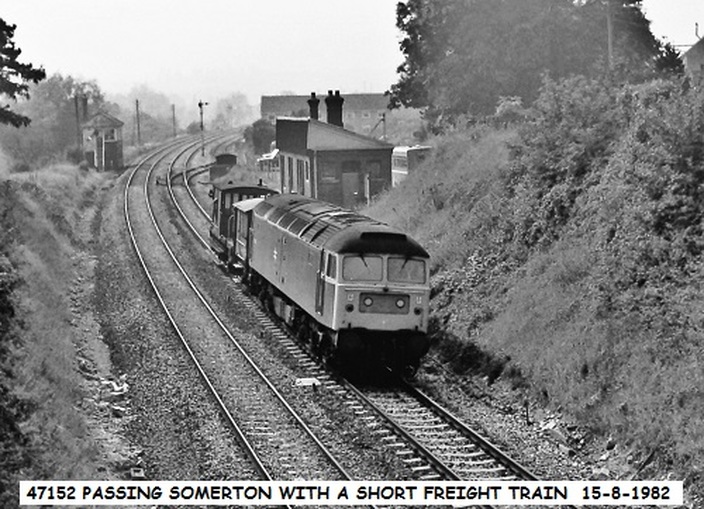
Somerton station closed to passengers on the 10th September 1962 and to goods on the 8th July 1964. Here it is some twenty years after closure to passengers. The siding still remains as does the signalbox. The station building remained in use for some time - the toilet being available for use by the signalman, the rest of the building being in use by other concerns. Copyright John Cornelius
Between Somerton and Charlton Mackrell
Charlton Mackrell Twenty and a half miles from Taunton
The station was a temporary terminus station for the railway serving trains to and from Castle Cary before the line through to Taunton was completed in 1906. The station had the main station building and approach on the up side where there was also a substantial goods yard. The station master's house is still exists, the station location can be found on Google Earth 51.03 deg 27" North and 2.40 deg W
Keinton Mandeville Twenty two and three quarter miles from Taunton
Was a substantial station with the main building and approach on the up side and a waiting shelter on the down side. The station closed 10th September 1962 but the signal box, to the east of the station remained open until 22nd September 1964. The goods shed, put to other uses remains in situ - the former goods yard is now a scrap yard and is easily recognisable on the up side of the line. Just before the station when heading east the train crosses over the A37 - the Foss Way.
Was a substantial station with the main building and approach on the up side and a waiting shelter on the down side. The station closed 10th September 1962 but the signal box, to the east of the station remained open until 22nd September 1964. The goods shed, put to other uses remains in situ - the former goods yard is now a scrap yard and is easily recognisable on the up side of the line. Just before the station when heading east the train crosses over the A37 - the Foss Way.
Alford Twenty five and a half miles from Taunton
Alford Halt on the Great Western Railway's Langport and Castle Cary Railway was opened on 21 July 1905, three weeks after the line was opened as far as Charlton Mackrell, to serve the village of Alford. It was a simple structure with two concrete platforms. A siding was opened for military goods traffic on 15 September 1940. The halt closed on 10 September 1962.
Castle Cary Twenty seven and three quarter miles from Taunton
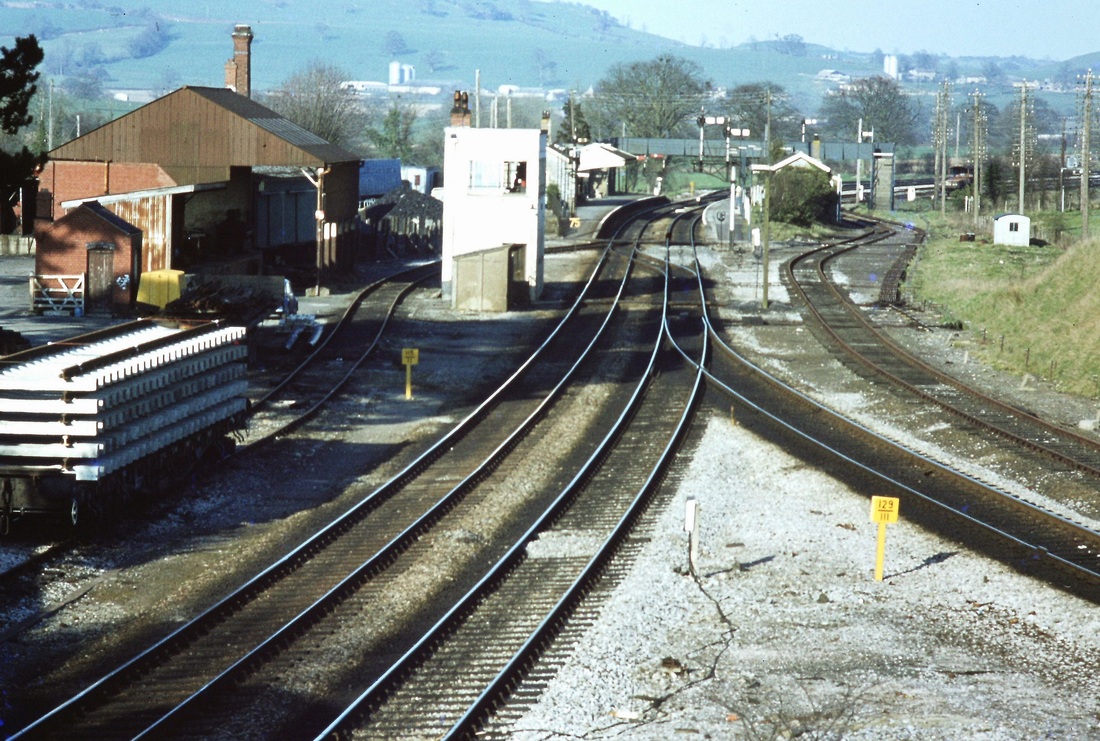
Castle Cary - a view looking east from the road over bridge at the west end of the station layout. Note this taken in the days before the line was re-signalled and the provision of an extra platform face for trains to and from Weymouth was made. Also note the two differing mileposts visible at the same time. Copyright Roger Winnen
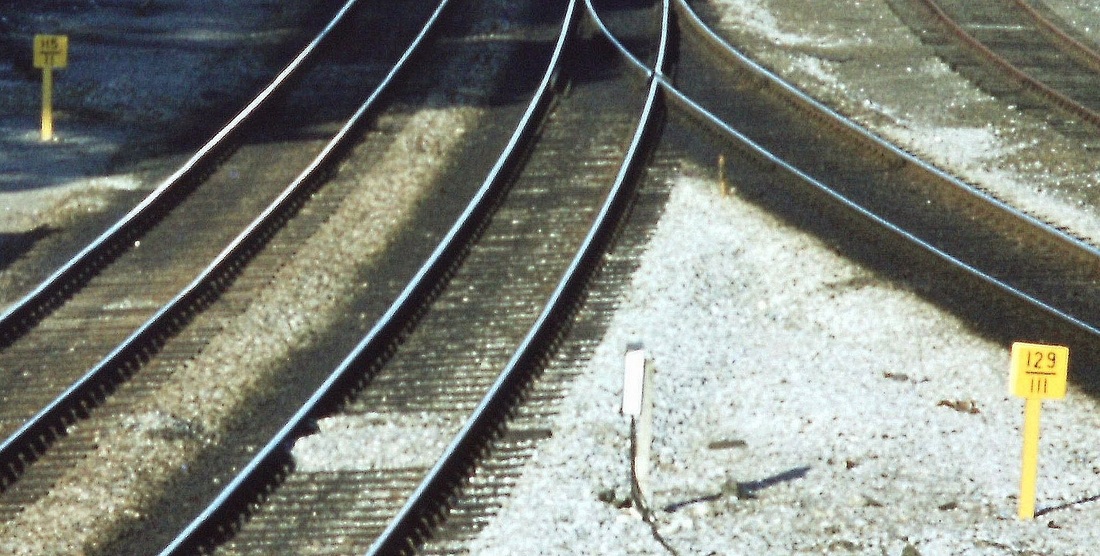
Here are the two mileposts in a closer view. The left hand one reads 115 1/2 and is the ‘new’ mileage from Paddington on the direct route via the Berks and Hants. However the larger figure on the right hand post is the mileage for the ‘old’ route - the original route from Paddington via Swindon, Thingley Junction and the Wilts, Somerset and Weymouth (WS&WR) line (Melksham, Westbury, Frome, Castle Cary, Yeovil etc. Info from Chris Osment. Copyright Roger Winnen

800405at A class 50 brings the 16.30 Paddington-Plymouth into Castle Cary station. 5th April 1980 Copyright Roger Winnen. Note in the distance the hedgerow which is about three quarters of the way up the tree to the right of the signal which is pulled off - this is the course of the Somerset and Dorset Railway which crossed the GW main line to the west of Bruton.
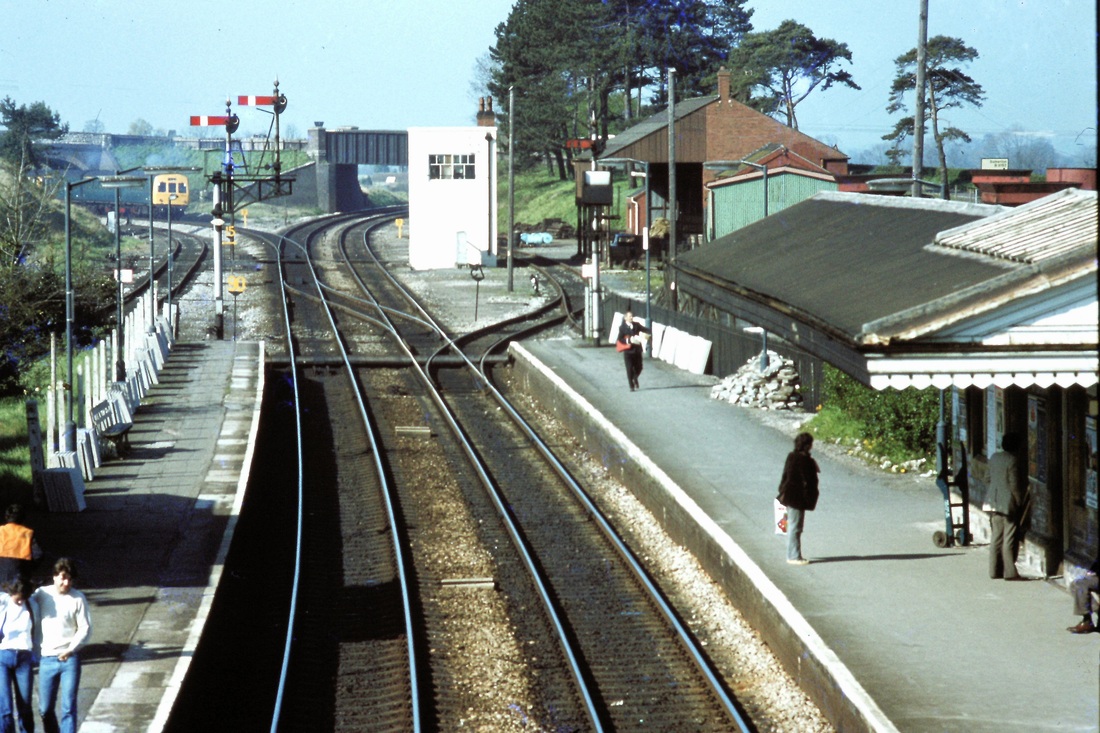
810421bj Castle Cary with a DME to Weymouth heading down branch. 21st April 1981 Copyright Roger Winnen Extra info from Chris Osment - The crossover in the foreground is set normal, so if this was an Up train then it would be running wrong-road on the Down Main. AFAIK up direction movements on the down line were not feasible prior to the 1985 layout alteration (when the back platform road was constructed) as there was not yet then a crossover at the east end to return the train to the Up line
Bruton Thirty one miles from Taunton
Passing through Bruton, heading east, there are two points of interest both in quick succession before the station. On the right, the Dovecote and on the left Bruton Church.

A familiar view through the carriage window just before the train passes through Bruton Station in Somerset, is the church of 'Saint Mary the Virgin' which sits on an historic site at centre of the small saxon town of Bruton in Somerset. The present church was started in the twelfth century on the site of one of the earliest churches in England, founded by King Ina in the 7th century. The Church boasts two towers, Copyright Roger Winnen 28th August 1996.
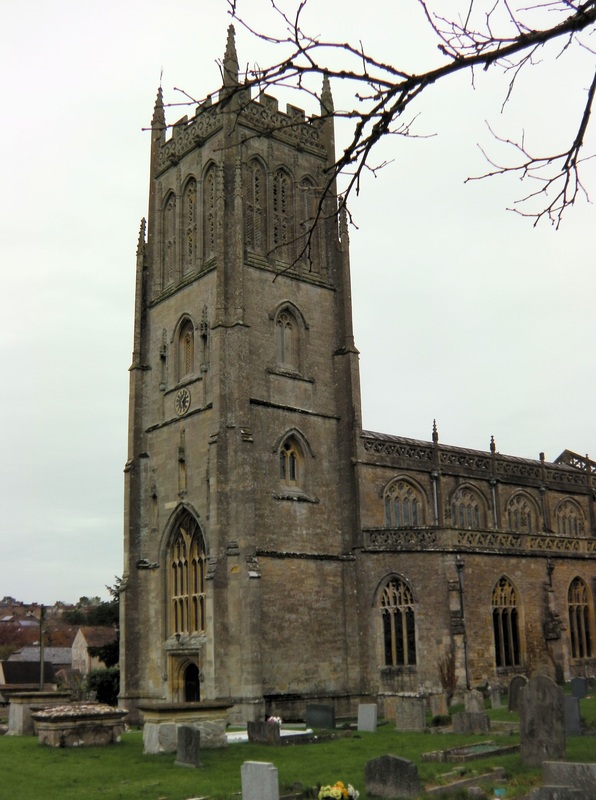
One of the two towers of the Church of St Mary the Virgin at Bruton. The north tower dates back to the 14th century whereas this one at the west end dates from Queen Elizabeth's accession to the throne. This tower is 102' high and houses the oldest bell in Somerset. This picture 23rd November 2014. Copyright Keith Jenkin
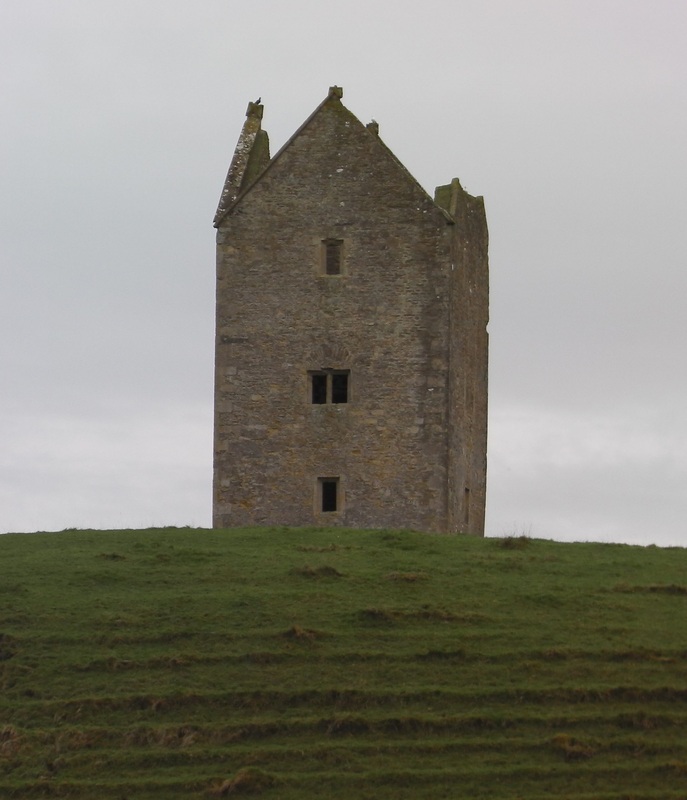
From Wikipedia, the free encyclopedia
Bruton Dovecote
Built 16th century, Owner National Trust
Official name: Dovecote about 370 metres South of Bruton Church (also known as Pigeon Tower)
The Bruton Dovecote was built in the 16th century in Bruton in the English county of Somerset. It was at one time used as a house, possibly as a watchtower and as a dovecote. Picture 23rd November 2014 Copyright Keith Jenkin
Sheephouse Crossing
About a mile east of Bruton station is sheephouse farm, with an occupation crossing over the main west of England line . For many years a crossing hut was situated there. It must have had some importance, as it had a cast iron nameplate 'sheephouse crossing' fitted on the end just below the window,although when I took this pic it had been removed and later the hut was removed.**
Does anybody know its history,and its main use?, I'd be interested to know.
cheers JOHN C. A reply from Roy Hart - Sheephouse, east of Bruton, was an occupation crossing for the (no doubt heavy and slow moving) timber traffic from Cogley Wood. The hut had no levers, just a block indicator (repeating the bells and block instruments of the boxes either side) and a telephone. There was also a stove! The installation would appear to date from the end period of the first world war (say early 1918) when there was an acute timber shortage. As far as I know it was closed in about 1973. The provision of a stove suggests manning for prolonged periods. Many thanks for that Roy.
A note from Chris Osment re nameplate
Sheephouse Crossing was ‘renowned’ for being one of those places where the nameplate was longer than the front of the hut on which it was placed, so it must have been on some form of board or frame to enable it to be secured by the holes at each corner. The nameplate was ordered from Reading Signal Works in 1918 or 1919, which seems to confirm the suggestions about the date of the original installation, and it was the last plate of that particular type to be ordered. [Information from MVE Dunn’s “GWR Signal Box Nameplates”.]
Chris Osment Many thanks Chris
Does anybody know its history,and its main use?, I'd be interested to know.
cheers JOHN C. A reply from Roy Hart - Sheephouse, east of Bruton, was an occupation crossing for the (no doubt heavy and slow moving) timber traffic from Cogley Wood. The hut had no levers, just a block indicator (repeating the bells and block instruments of the boxes either side) and a telephone. There was also a stove! The installation would appear to date from the end period of the first world war (say early 1918) when there was an acute timber shortage. As far as I know it was closed in about 1973. The provision of a stove suggests manning for prolonged periods. Many thanks for that Roy.
A note from Chris Osment re nameplate
Sheephouse Crossing was ‘renowned’ for being one of those places where the nameplate was longer than the front of the hut on which it was placed, so it must have been on some form of board or frame to enable it to be secured by the holes at each corner. The nameplate was ordered from Reading Signal Works in 1918 or 1919, which seems to confirm the suggestions about the date of the original installation, and it was the last plate of that particular type to be ordered. [Information from MVE Dunn’s “GWR Signal Box Nameplates”.]
Chris Osment Many thanks Chris
More on Sheephouse Crossing Guy Vincent
Sheephouse Farm - a very interesting tale by Guy Vincent
I found Colin Burges' article on his Castle Cary-Westbury bike ride very interesting and learned a few things in the process, (See Features Mid May to Dec). for example the purpose of the large underground 'bunker' close to the former Sheephouse Farm near Bruton. I have often wondered what it was for, and had no idea that Bruton used to suffer bad flooding. Bath, Bradford-on-Avon, Melksham, Chippenham and Trowbridge also had the same annual problem until the River Avon was improved and widened/straightened in the late 1960s.
Sheephouse Farm (now known as 'Gladen') has featured here before but I return to it with a winter shot taken some time ago from the rear of a passing train. Just imagine it is 1850 or thereabouts and you live in the 18th century farmhouse, situated alone next to a quiet country byway with panoramic views southwards across the upper Brue valley. Two men on horseback appear one morning and knock on the door. They say that the Great Western Railway Company is to build a new line from Frome to Yeovil and Weymouth and they have been employed by the company's engineer, Isambard Kingdom Brunel, to survey the best route that this is to take. After taking measurements etc. they depart and life returns to normal. By 1855 though things have changed forever. The surveyors discovered that the only way to take the line from Brewham down towards Bruton was by a twisting, winding, steeply descending route along the northern side of the steep valley. Navvies cut the pathway for the broad gauge track right behind the farmhouse, taking away its garden and having to shore up the foundations with a sturdy stone retaining wall that remains to this day. From day one of railway operations locomotives puffed clouds of smoke and steam just a few feet from the ground floor windows and back door as they fought against the steep ruling gradients of between 1 in 98 and 1 in 81 towards the summit. An ideal place to live though if you are a rail enthusiast! If those 19th century occupants could return now they would no doubt be looking forward to the arrival of the new Hitachi class 801 'Flying Cucumbers' as they are almost silent at speed with fantastic acceleration to boot.
Like Colin, I feel that this could be the last summer of 'traditional' railway operations in the west of England as the new order comes in. Good news for passengers I'm sure but I'll be taking less of an interest in day to day operations and likely turning to other activities once the wires go up and the Bi-Modes take over most long distance services.
Guy Vincent Many thanks indeed Guy for your article and the photograph.
Sheephouse Farm (now known as 'Gladen') has featured here before but I return to it with a winter shot taken some time ago from the rear of a passing train. Just imagine it is 1850 or thereabouts and you live in the 18th century farmhouse, situated alone next to a quiet country byway with panoramic views southwards across the upper Brue valley. Two men on horseback appear one morning and knock on the door. They say that the Great Western Railway Company is to build a new line from Frome to Yeovil and Weymouth and they have been employed by the company's engineer, Isambard Kingdom Brunel, to survey the best route that this is to take. After taking measurements etc. they depart and life returns to normal. By 1855 though things have changed forever. The surveyors discovered that the only way to take the line from Brewham down towards Bruton was by a twisting, winding, steeply descending route along the northern side of the steep valley. Navvies cut the pathway for the broad gauge track right behind the farmhouse, taking away its garden and having to shore up the foundations with a sturdy stone retaining wall that remains to this day. From day one of railway operations locomotives puffed clouds of smoke and steam just a few feet from the ground floor windows and back door as they fought against the steep ruling gradients of between 1 in 98 and 1 in 81 towards the summit. An ideal place to live though if you are a rail enthusiast! If those 19th century occupants could return now they would no doubt be looking forward to the arrival of the new Hitachi class 801 'Flying Cucumbers' as they are almost silent at speed with fantastic acceleration to boot.
Like Colin, I feel that this could be the last summer of 'traditional' railway operations in the west of England as the new order comes in. Good news for passengers I'm sure but I'll be taking less of an interest in day to day operations and likely turning to other activities once the wires go up and the Bi-Modes take over most long distance services.
Guy Vincent Many thanks indeed Guy for your article and the photograph.
Sheephouse Crossing continued Tony Hill
There was a very nasty incident here in the early 1970's, when a Down Express hit and killed several Friesian cows which were crossing the line.
Subsequently a new concrete track was soon made (presumably mostly or entirely funded by BR) westwards for several hundred yards along the field side of the upside rly fence to a farm underbridge and Sheephouse Occupation LC was then closed. This farm, like many, now has no dairy cows.
Tony Hill Many thanks for that Tony
Subsequently a new concrete track was soon made (presumably mostly or entirely funded by BR) westwards for several hundred yards along the field side of the upside rly fence to a farm underbridge and Sheephouse Occupation LC was then closed. This farm, like many, now has no dairy cows.
Tony Hill Many thanks for that Tony
Strap Lane Halt
Strap Lane Halt was mid-way between Witham Friary and Bruton on the Westbury to Taunton line. The halt once served the nearby village of Upton Noble and is near the summit of Brewham Bank, with gradients of 1 in 81 from the west, and 1 in 107 from the east. The small village of Upton Noble is over three quarters of a mile away on a twisting, narrow country lane, this lane passes over the railway by means of a narrow bridge the halt comprising of simple wooden platforms with sheds as shelters lay to the west of the bridge, access was by means of paths off the approaches to the bridge. The halt was an early, pre Beeching closure, the last services called 5th June 1950.
Just west of Witham.
Witham Thirty six and a half miles from Taunton
More recent views at Witham (Not that recent!!)
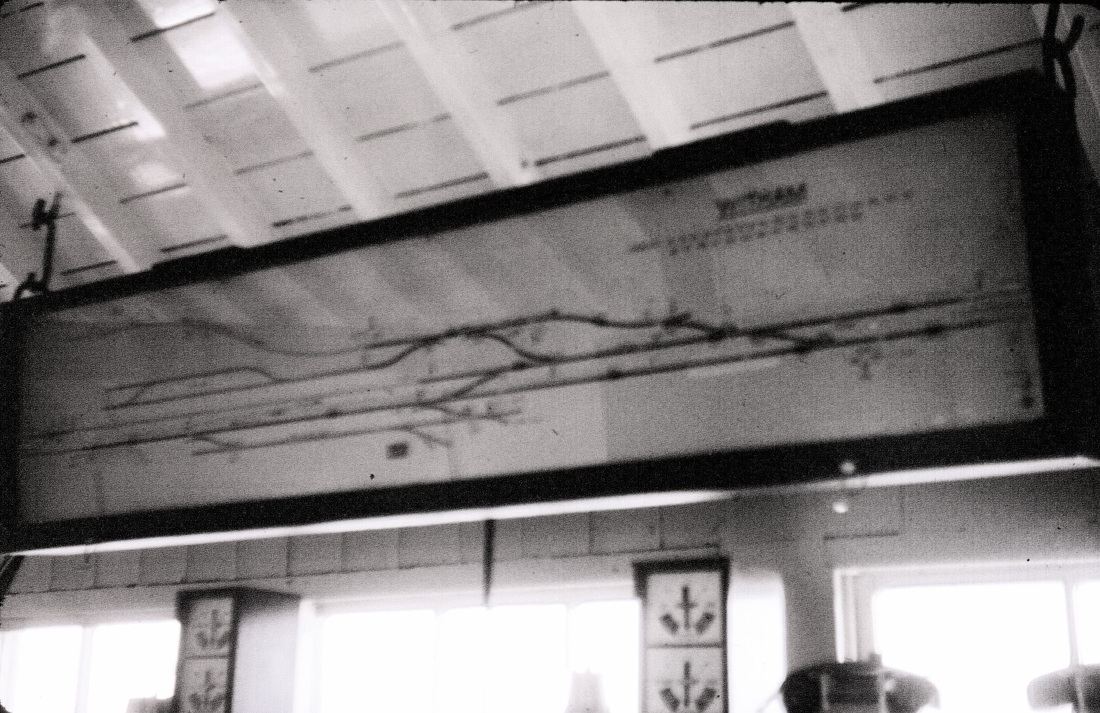
An enlargement from the view above of the track diagram for Witham junction as in 1975. Although not very clear it does serve to indicate the track layout at the time . The branch line to Cranmore, Wells and Yatton can be seen leaving the diagram to the top left. Track Circuited areas are shown by means of bold lines on the diagram. Copyright Chris Osment
Blatchbridge Junction

Western Marquis passes the 28 lever signalbox at Blatchbridge Junction. D1046 Western Marquis was built at Crewe and released for traffic in December 1962. Its first shed allocation Bristol Bath Road. Finally shedded at Laira. It was an early candidate for withdrawal this taking place in December 1975. It ran 1,248,000 miles service, but was withdrawn early due to collision with D1064 Western Regent. Copyright John Cornelius
Frome Forty one and three quarter miles from Taunton
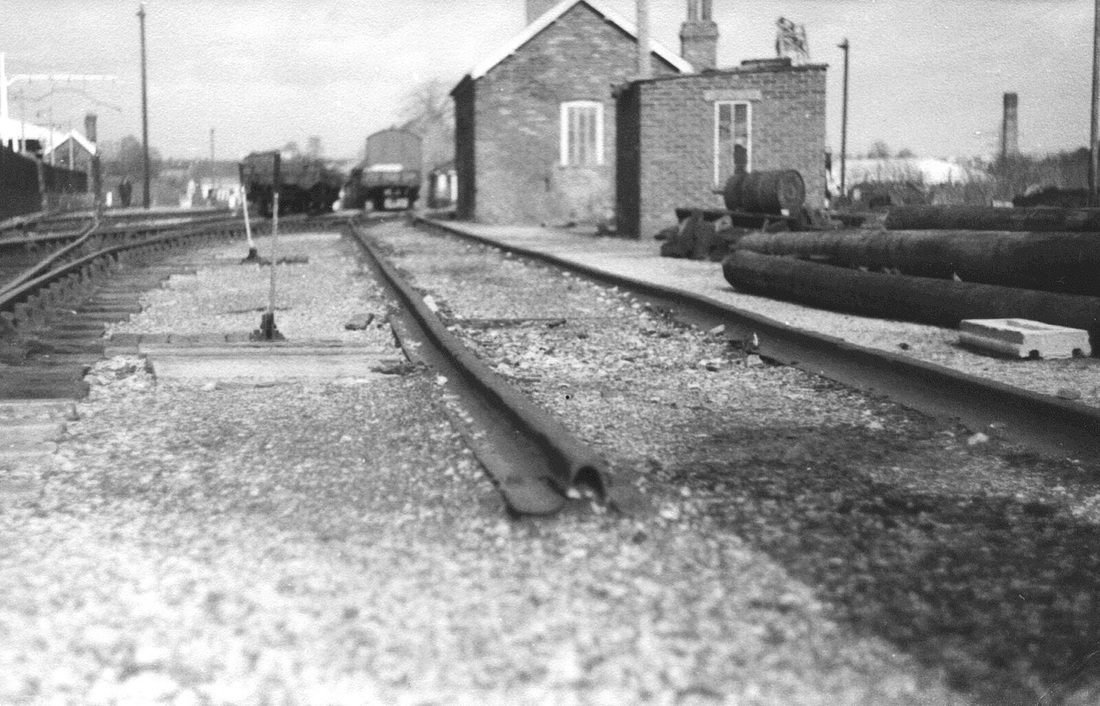
= quick look at the goods yard, the loading gauge serves as a reference point as it also appears in the first B/W picture of the down platform. Derek writes 'I was amazed to find, still forming part of an operational siding a short length of track still laid with Barlow rail in 1972. Copyright Derek Buttivant
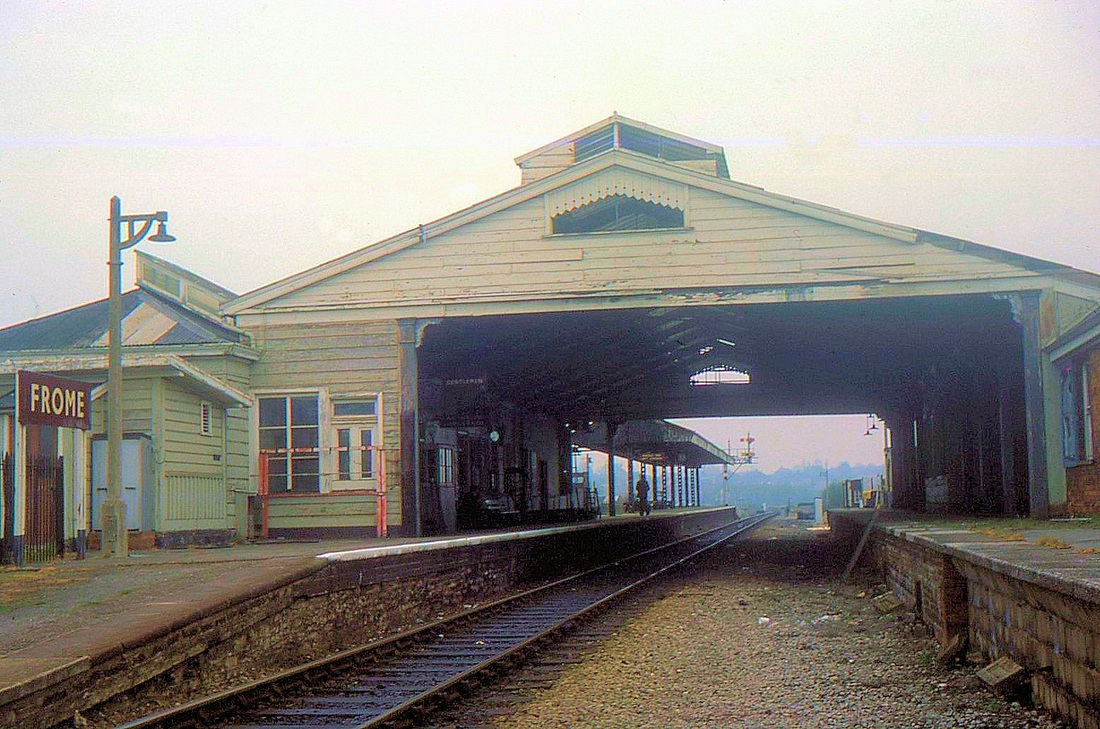
A study by Mike Roach in April 1975 Semaphore signals still in use. Copyright A note from Chris Osment - I found this view interesting in that, although the bracket signal seen in the distance remained in use for many years, this is the only ‘modern’ picture that I can recall with the platform canopy still in place by the old bay for Radstock line trains
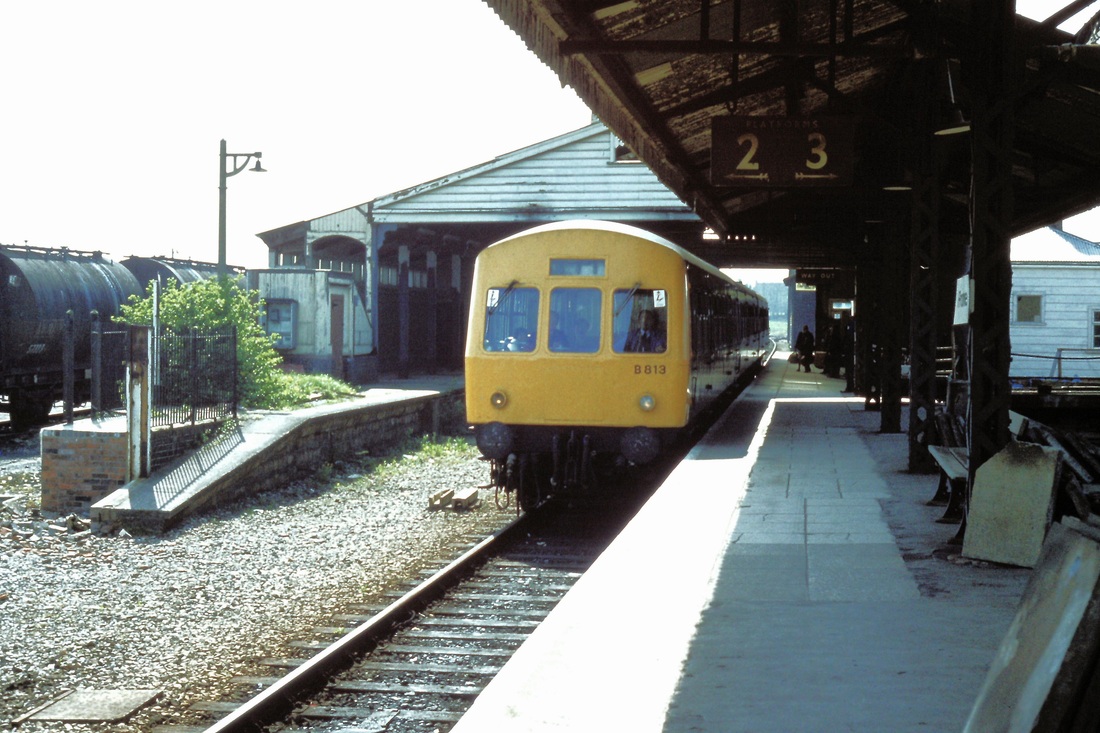
Frome 820410bw B813 a Metro Cammell unit provides the service from Weymouth to Bristol at Frome on 10th April 1982 Copyright Roger Winnen Note that the platform for Radstock & Bristol is still clearly marked 3, yet the service from this platform ceased on the 2nd November 1959 some twenty three years earlier!
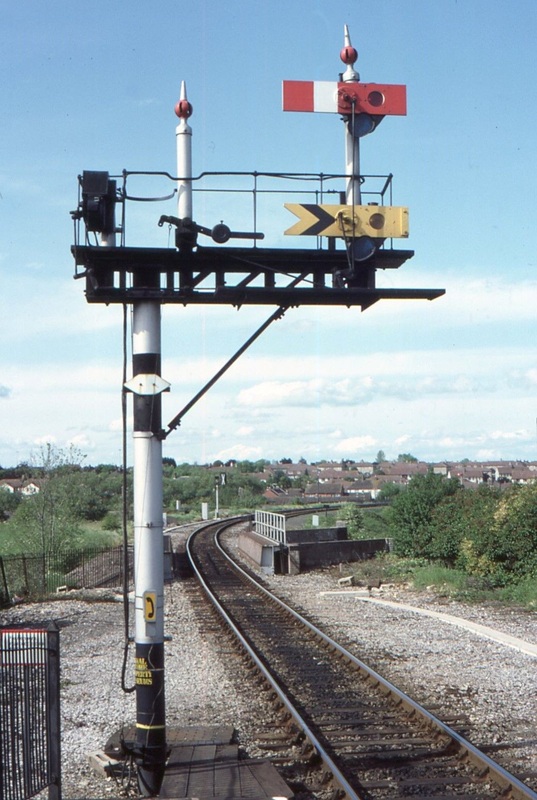
A most interesting and extremely rare double centre pivot wooden signals at Frome, there are now , as far as we know, no longer any examples of stop & distant arms of that type on the same post. Centre pivot signals themselves are rare, there is one at Liskeard and another at Bishops Lydeard on the WSR. This photo taken on 2nd June 1984 Copyright Mike Roach
At the foot of the signal there is a notice - see below.
History of Frome Signal Boxes - this is indeed complicated - you are recommended to read this profusely illustrated and detailed site prepared by the Great Western Society, Bristol Group. http://www.gwsbristol.org/hfrome.html
Incidentally, the wooden framework of Frome North box now forms the basis of ‘Frome Mineral Junction’ at the GWS at Didcot (see http://www.didcotrailwaycentre.org.uk/guide/branchline.html#frome)
Frome Miscellany
Guy Vincent looks at his photo collection
Guy Vincent looks at his photo collection
Hello Keith,
Sorting out some odd photos today I found one that was taken during a visit to the NRM, York, on 30th June 2002. It shows the former Frome station up starting signal and Frome North distant, both of which were centre-pivoted due to poor sighting, being hidden beyond the platform awning. You have a nice shot of the signal in it's original location so this should make for an interesting addition. The signal was removed over the weekend of 26-27 October 1984 when control of the Frome area was transferred to Westbury PSB. The notice that was painted onto the bottom of the signal post read: 'This signal will become the property of BRB Museums'.
Sorting out some odd photos today I found one that was taken during a visit to the NRM, York, on 30th June 2002. It shows the former Frome station up starting signal and Frome North distant, both of which were centre-pivoted due to poor sighting, being hidden beyond the platform awning. You have a nice shot of the signal in it's original location so this should make for an interesting addition. The signal was removed over the weekend of 26-27 October 1984 when control of the Frome area was transferred to Westbury PSB. The notice that was painted onto the bottom of the signal post read: 'This signal will become the property of BRB Museums'.
- A picture of 'Tornado' (working a return Exeter-London Victoria 'Devon Belle' charter) departing Frome and passing over Rodden Road bridge was taken by my daughter, Charlotte, on April 2nd 2016. She was a passenger in her partner's car and the loco appeared as they waited at the traffic lights! Frome North signal box was located on the other side of the bridge. This was quickly dismantled and the top section was taken to Didcot Railway Centre where it can be found today as 'Frome Mineral Junction' in full working order. The base of the 'box can still be seen from the road although it is now partially hidden by vegetation. The lever frame was sold to the West Somerset Railway and subsequently installed in Crowcombe Heathfield Signal Box.
Also attached are three further images of Frome station, two showing a return Weymouth-Bristol 'Seaside Express' with 34046 'Braunton' taking water on 10th August 2014, and one of the south end of the train shed following restoration in March 2014 with 150232 waiting time on a local service to Westbury. One day I hope to make a through trip by train, Frome to Ashburton, changing only at Castle Cary and Totnes - barn to barn! It's going to happen!
Guy Vincent - Many thanks Guy
Guy Vincent - Many thanks Guy
Serious accident at Frome
THE PHOTOS
Two photos showing 33032 in Frome West Yard following the collision that took place at Frome North Junction on Tuesday 24th March 1987. The loco had been heading 2B77 0655 Yeovil Pen Mill-Cardiff Central (5 mark 1 coaches) and, having departed Frome under clear signals and the route correctly set for the train to run up towards Clink Road Junction, it collided head-on with loco 47202 working 6B03 0708 Westbury Yard-Whatley Quarry (30 empty PGA's) which had passed Frome North's protecting signal at danger. The crew of 33032 were able to leave the loco unassisted but the driver of 47202 had to be cut out of his cab. A full report of the incident can be found online www.railwaysarchive.co.uk.
33032 was initially moved into the sidings at Frome West Yard where it was examined and eventually made fit to travel by rail back to Westbury and then Eastleigh works where it was stripped and scrapped. From the June 1987 newsletter of the long defunct BRC&W Type 3 Preservation Group I quote the following report by group member Ron Wheeldon.
33032 THE END OF THE LINE
"On Tuesday 24 March 1987 the news arrived that the 0655 Yeovil Pen Mill to Cardiff had collided with a stone train making its way from Westbury to Whatley Quarry. The collision happened at Frome North Junction and involved 33032 on five mark 1 carriages and 47202 pulling thirty hopper wagons.
Eye-witness accounts say that 33032 jumped into the air as the trains collided head-on and derailed. The quick-thinking driver of 33032 fortunately escaped serious injury by running back into the engine room and behind the bulkhead. The driver of 47202 was not so lucky and was trapped in his cab for three hours before being taken to hospital with multiple injuries. Six passengers were also taken to hospital but were released later after treatment.
Before the driver could be released, eighteen wagons were detached and the two trains were eased apart by loco 47125, which later removed four carriages from the rear of the passenger train. A class 31 then arrived with two breakdown carriages.
The following morning there were only five wagons remaining and four PW gangs were hard at work repairing the damage done to the track. By then, 47202 had already been moved to Westbury and 33032 had been dragged into the nearby sidings.
It was only when a closer look was taken that the full extent of the damage was revealed. As well as number one end being flattened back to the bulkhead, 33032 had a bent frame, no buffers, no fuel tank and a missing traction motor."
From the BRC&W Type 3 Preservation Group Newsletter No.8, September 1987, written by the late John Frood of Exeter.
PREPARATION AND MOVEMENT OF 33032
"On Sunday 31st May the Eastleigh breakdown crane attended the site at Frome where 33032 was.
Staff from Eastleigh came to prepare 33032 for the journey back to Eastleigh works because the engine was required urgently for use in another 33. During the course of the day the following work was carried out:
First of all the removal of the bogie at number 2 end. This bogie had been very badly damaged by the batteries that had been pushed back. The bogie was taken out and replaced by one from withdrawn 33007. Next they had to cut away the very damaged number two end. Things did not go exactly to plan as the cab caught fire twice during removal.
After the roof at number one end had been removed, buffers were attached to number two (radiator) end and air cylinders were affixed to make the loco air-braked once again. As luck would have it, the staff had a sunny day and completed everything they had set out to do.
On Thursday 4th June 33050 was sent light from Salisbury to Frome pick up 33032. 33050 had to propel 33032 as far as Westbury due to the lack of equipment at the other end. 33032 was then pulled to Eastleigh via Southampton to enable it to be propelled straight into the works.
The whole movement took place during the early afternoon in bright sunshine. My only regret was not being en-route somewhere to capture 33032 on it's last journey."
NOTE. Would such a movement be authorised today? Definitely NO! It was certainly a different world back then.
With the other images, the one showing the site of Frome North Signal Box just above Rodden Road bridge clearly depicts the signalman's concrete 'Privy' and the concrete post that was placed at the end of the wooden screen in front of the cubicle. See Chris Osment's photo on the Taunton-Westbury pictures page. Not bad to survive in-situ 33 years after redundancy!
North Row Viaduct is on the branch 0m51ch distance from Frome North Junction.
Guy V 08.10.2017
Two photos showing 33032 in Frome West Yard following the collision that took place at Frome North Junction on Tuesday 24th March 1987. The loco had been heading 2B77 0655 Yeovil Pen Mill-Cardiff Central (5 mark 1 coaches) and, having departed Frome under clear signals and the route correctly set for the train to run up towards Clink Road Junction, it collided head-on with loco 47202 working 6B03 0708 Westbury Yard-Whatley Quarry (30 empty PGA's) which had passed Frome North's protecting signal at danger. The crew of 33032 were able to leave the loco unassisted but the driver of 47202 had to be cut out of his cab. A full report of the incident can be found online www.railwaysarchive.co.uk.
33032 was initially moved into the sidings at Frome West Yard where it was examined and eventually made fit to travel by rail back to Westbury and then Eastleigh works where it was stripped and scrapped. From the June 1987 newsletter of the long defunct BRC&W Type 3 Preservation Group I quote the following report by group member Ron Wheeldon.
33032 THE END OF THE LINE
"On Tuesday 24 March 1987 the news arrived that the 0655 Yeovil Pen Mill to Cardiff had collided with a stone train making its way from Westbury to Whatley Quarry. The collision happened at Frome North Junction and involved 33032 on five mark 1 carriages and 47202 pulling thirty hopper wagons.
Eye-witness accounts say that 33032 jumped into the air as the trains collided head-on and derailed. The quick-thinking driver of 33032 fortunately escaped serious injury by running back into the engine room and behind the bulkhead. The driver of 47202 was not so lucky and was trapped in his cab for three hours before being taken to hospital with multiple injuries. Six passengers were also taken to hospital but were released later after treatment.
Before the driver could be released, eighteen wagons were detached and the two trains were eased apart by loco 47125, which later removed four carriages from the rear of the passenger train. A class 31 then arrived with two breakdown carriages.
The following morning there were only five wagons remaining and four PW gangs were hard at work repairing the damage done to the track. By then, 47202 had already been moved to Westbury and 33032 had been dragged into the nearby sidings.
It was only when a closer look was taken that the full extent of the damage was revealed. As well as number one end being flattened back to the bulkhead, 33032 had a bent frame, no buffers, no fuel tank and a missing traction motor."
From the BRC&W Type 3 Preservation Group Newsletter No.8, September 1987, written by the late John Frood of Exeter.
PREPARATION AND MOVEMENT OF 33032
"On Sunday 31st May the Eastleigh breakdown crane attended the site at Frome where 33032 was.
Staff from Eastleigh came to prepare 33032 for the journey back to Eastleigh works because the engine was required urgently for use in another 33. During the course of the day the following work was carried out:
First of all the removal of the bogie at number 2 end. This bogie had been very badly damaged by the batteries that had been pushed back. The bogie was taken out and replaced by one from withdrawn 33007. Next they had to cut away the very damaged number two end. Things did not go exactly to plan as the cab caught fire twice during removal.
After the roof at number one end had been removed, buffers were attached to number two (radiator) end and air cylinders were affixed to make the loco air-braked once again. As luck would have it, the staff had a sunny day and completed everything they had set out to do.
On Thursday 4th June 33050 was sent light from Salisbury to Frome pick up 33032. 33050 had to propel 33032 as far as Westbury due to the lack of equipment at the other end. 33032 was then pulled to Eastleigh via Southampton to enable it to be propelled straight into the works.
The whole movement took place during the early afternoon in bright sunshine. My only regret was not being en-route somewhere to capture 33032 on it's last journey."
NOTE. Would such a movement be authorised today? Definitely NO! It was certainly a different world back then.
With the other images, the one showing the site of Frome North Signal Box just above Rodden Road bridge clearly depicts the signalman's concrete 'Privy' and the concrete post that was placed at the end of the wooden screen in front of the cubicle. See Chris Osment's photo on the Taunton-Westbury pictures page. Not bad to survive in-situ 33 years after redundancy!
North Row Viaduct is on the branch 0m51ch distance from Frome North Junction.
Guy V 08.10.2017
Frome West sidings were actually located in the triangle of land between Frome South, West and North Junctions. A passenger train today running from Frome towards Westbury skirts the area, visible to the left and now covered in new housing, after the train has passed signal W195. Frome West Ground Frame 'box was at the Radstock end 'tip' of this triangle. The sidings where 33032 stabled after the collision ran approximately parallel, on a lower level, to the freight-only line (which still exists as the first stretch of the Whatley branch) from Frome North Junction to the former Frome West Junction. The second picture of 33032 shows the line (looking towards West Jctn site) on the right at a higher level. Some other sidings existed further back and I remember in the mid-late 80's Bardon Aggregate bogie hoppers being loaded here by mechanical excavators prior to dispatch by rail, usually hauled by class 56 locos.
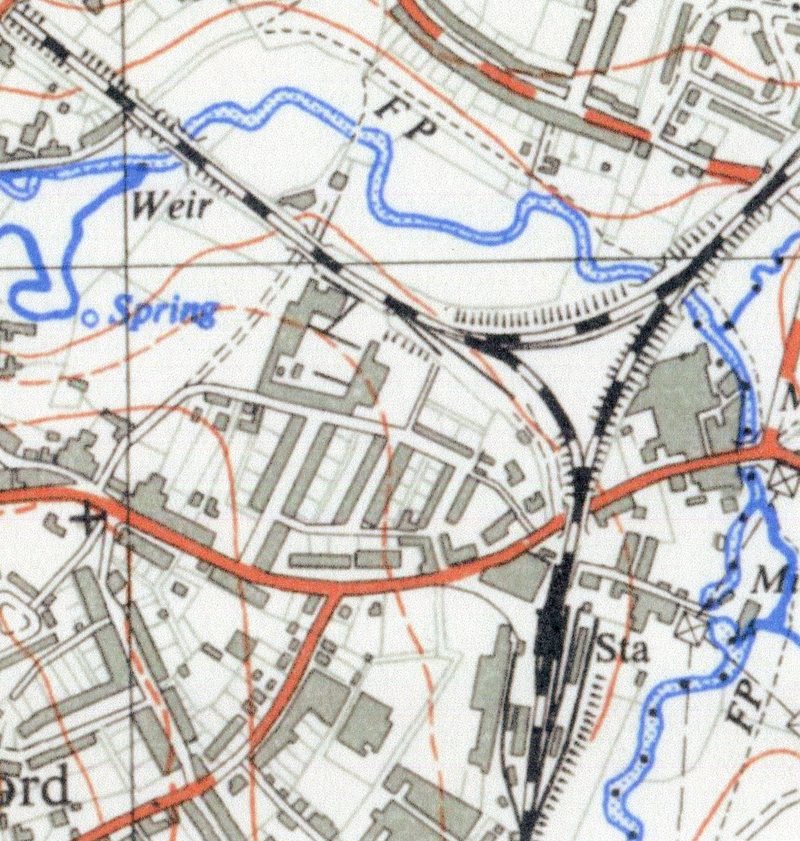
The Frome Triangle from OS Map Great Britain 1937/61 Reproduced with permission of the National Library of Scotland. South Junction was nearest to Frome station, West Junction was off to the left and North Junction was, and is, towards the top of the map. North Junction Signalbox was on the far side of Rodden Road.
Clink Road Junction
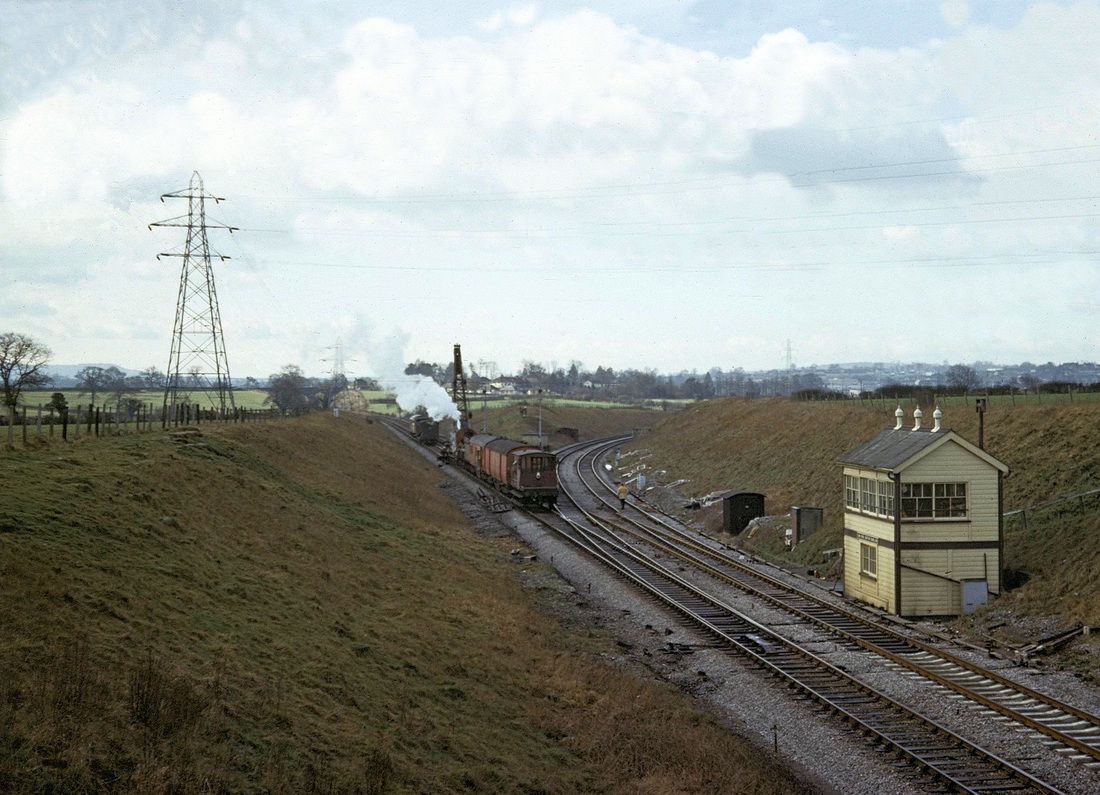
An extremely interesting picture by Derek Buttivant showing an engineers train in operation at Clink Road Junction in 1970. The up line was badly damaged and all up trains were routed via Frome station (The original main line route) until the points could be replaced. You will note that the through main line has been cut and the diamond crossover temporarily removed. The use of a steam crane will no doubt please many viewers. It is further reported that signalbox narrowly avoided being destroyed by the derailed wagons. No doubt the duty signalman had exciting things to write in his log. Copyright
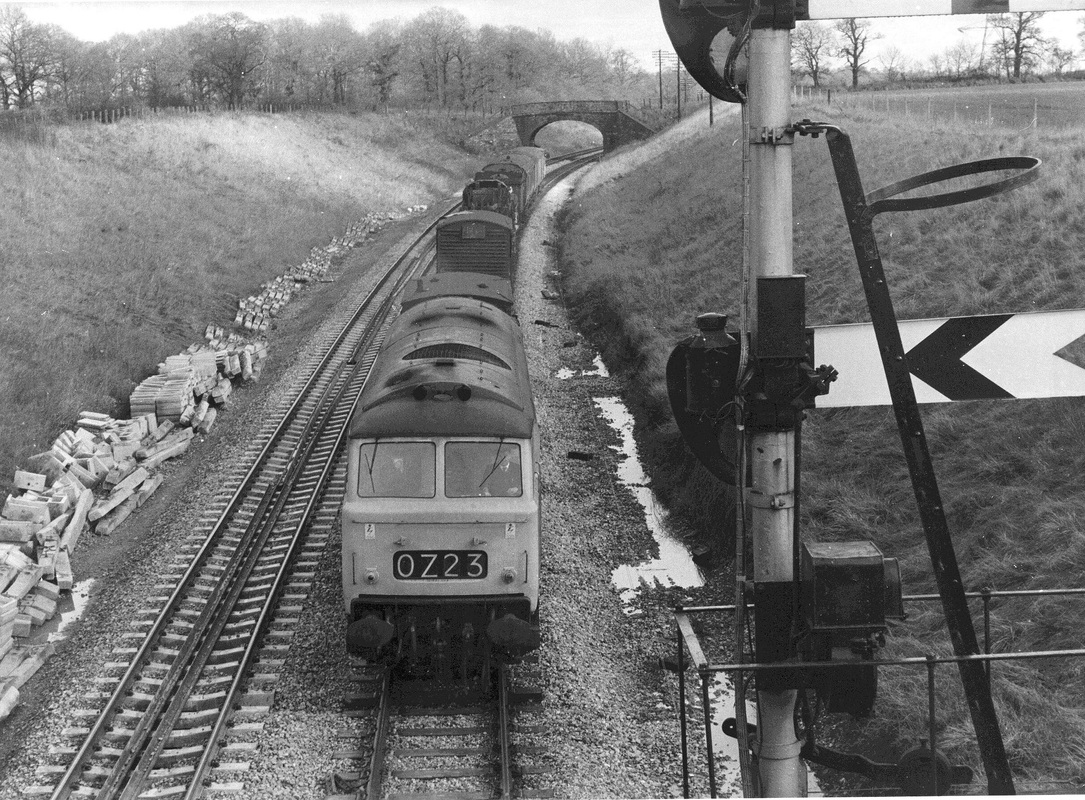
A down goods hauled by a Hymeck waits the road at Clink Road junction. The signal in the foreground is the junction signal for the Frome loop - the visible arms being for the branch while the main-line arms are out-of-shot to the right. The new track on the up line and sleepers, trunking, etc stacked against the cutting side were all there as a result of the accident and subsequent rack repairs. 1970 Copyright Derek Buttivant
Roger writes -
I took this photograph through the front window of a DMU to Weymouth, we were held at Clink Road Junction for the Golden Hind to pass on route to Paddington. At that time I was on an all line railrover and set off from Paddington to Westbury and Weymouth via Castle Cary and returning via stations on the Weymouth - Waterloo line where I took some of the recent photos sent in. I was advised before leaving home on holiday that the Golden Hind was commencing HST operation on 6th August 1979.
So I was watching out for it!
I took this photograph through the front window of a DMU to Weymouth, we were held at Clink Road Junction for the Golden Hind to pass on route to Paddington. At that time I was on an all line railrover and set off from Paddington to Westbury and Weymouth via Castle Cary and returning via stations on the Weymouth - Waterloo line where I took some of the recent photos sent in. I was advised before leaving home on holiday that the Golden Hind was commencing HST operation on 6th August 1979.
So I was watching out for it!

A view taken on 16th April 1981 by Roger Winnen The cold winter which as passed is in evidence - the grass looks beaten down yet the trees have started to get their foliage back. The junction, here according to the Middleton Press book on the area was modified in May 1977 to the simple crossover and turn out point seen here. The box enjoyed a life of fifty one and a half years having come into use with the opening of the Frome by-pass line in January 1933 Copyright Roger Winnen
Between Frome and Westbury
Near Westbury
Fairwood Junction
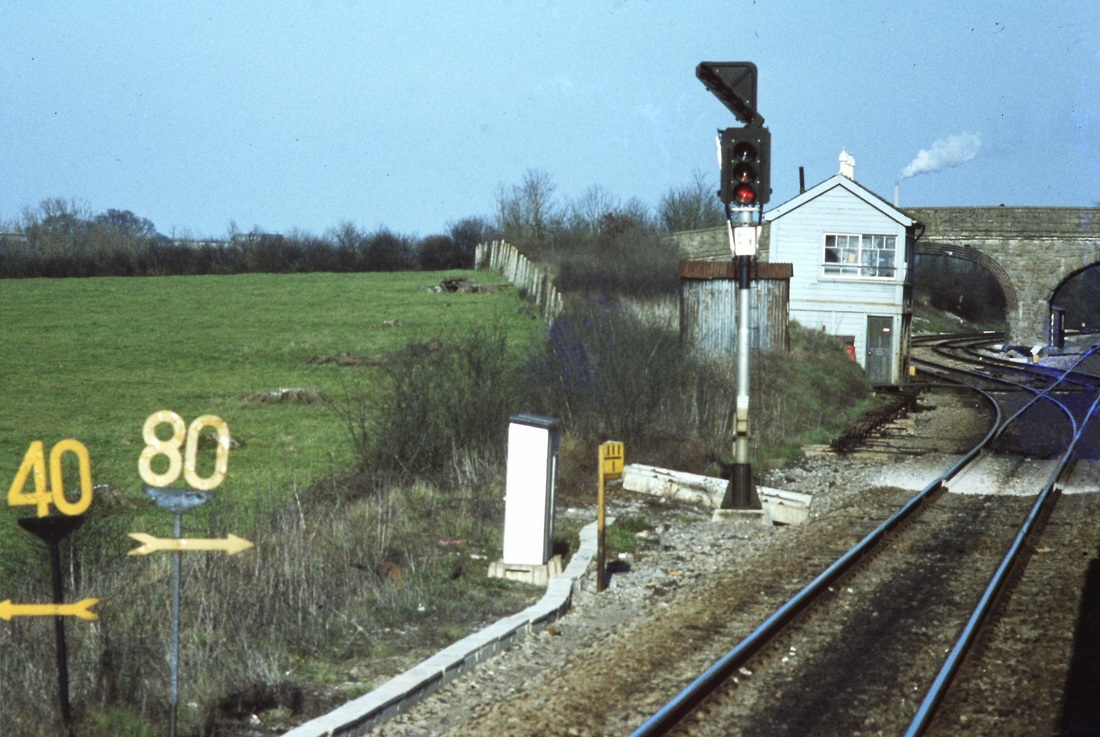
800405ao A view of Fairwood Junction at Westbury taken from a down train. 5th April 1980 Copyright Roger Winnen Note the 'smoke' coming from the chimney at the cement plant east of Westbury. Note also the speed restrictions for the main avoiding line, straight ahead and the very much reduced limit for the sinuous lines to and from the station. The Westbury Power Signal Box took over with effect from 11th May 1984, however it would seem that this junction was already controlled by colour light signals operated from the box in the foreground. Note in the distance a plume of 'steam' from the chimney of the Westbury cement factory. The chimney was demolished in September 2016.

A Class 52 Western heads out of Westbury with a down service at Fairwood Junction in about 1970, the avoiding line curves in from the right - Copyright Derek Buttivant. The White Horse which is visible from afar surveys the railway scene over a wide arc. It is believed to have been cut into the hillside in the 16th century to celebrate the supposed Battle of Ethandun in AD 878.
Westbury Forty seven and a half miles from Taunton
For a very interesting article on 'Dainton Tunnel Signal Box and Westbury Iron Works' look at our Features section for January to June 2017, and scroll down.
Before the re-signalling
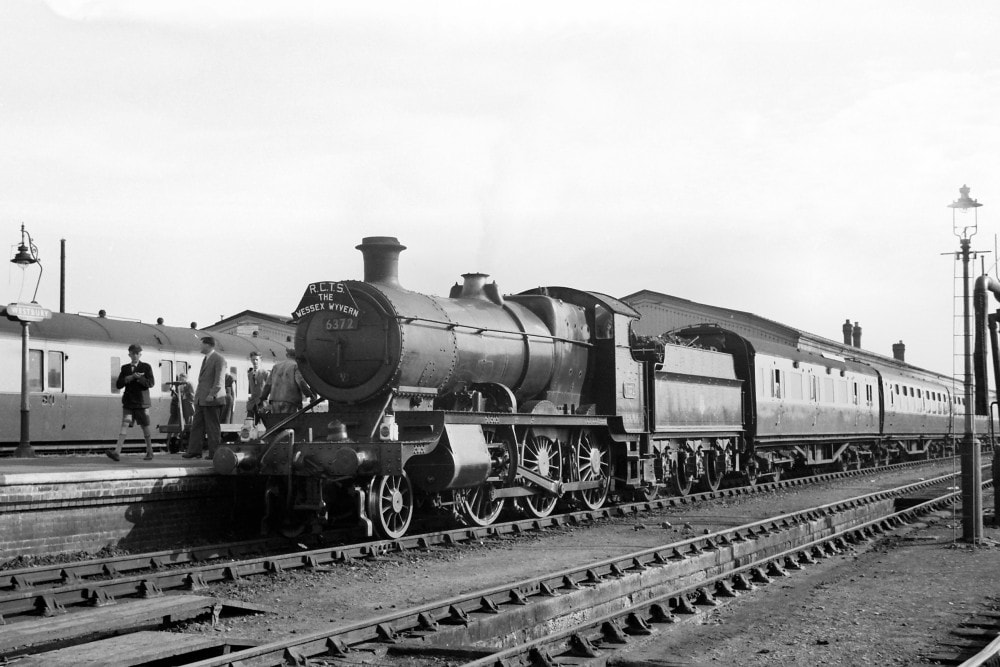
RCTS: Wessex Wyvern 8/7/56.
Churchward 4300 class mogul no. 6372 hauled just the one leg of this tour from Weymouth to Andover Junction via Westbury where this shot was taken. 6372 was a Taunton allocated engine throughout the BR years and was withdrawn from there in December 1963.
[Mike Morant collection]
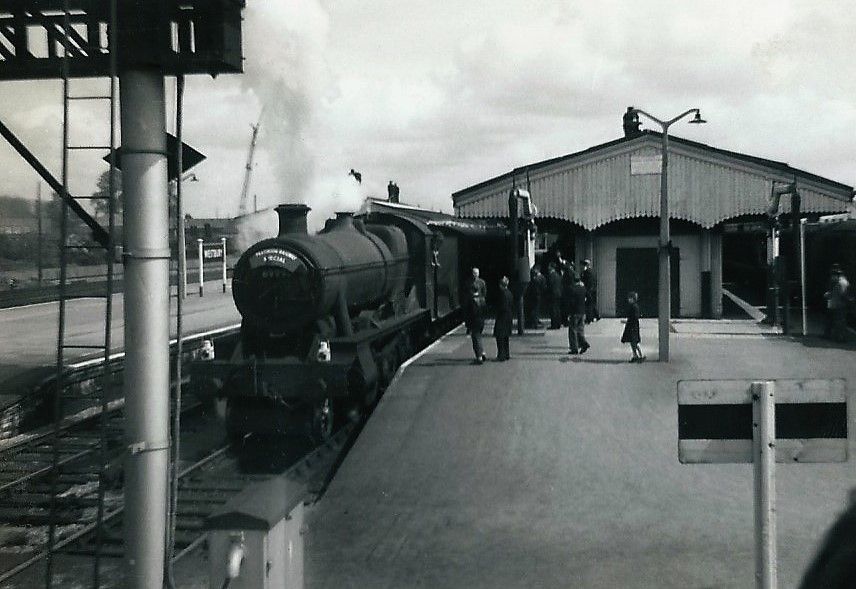
A moment of fame for 6999. Deputising for 4079 at Westbury on Saturday 9th May on a special from Paddington to Plymouth. 4079 failed on the approach to Westbury in attempt at 100mph running (apparently the firebars melted !). With no substitute castles being available, 6999 worked the train on to Taunton from where 7025 Sudeley Castle, worked the train forward to Plymouth. Copyright Martin Scane
Two privileged views at Westbury from Derek Buttivant
After re-signalling and track rationalisation
A very rare event at Westbury - Guy Vincent
HST TRIPLE HELPING
For the past 3 years it has in theory at least and with luck on one's side, just been possible on summer Saturday mornings to witness the three operational platform faces at Westbury each occupied by a GWR HST set. Right-time running of 1C75 and occasional cancellation/late running of one or another of the services has often scuppered attempts but today I was rewarded with the spectacle. The trains concerned are, left to right: P1 1C75 0835 Paddington-Paignton (due 0955-0956); P2 1O72 0906 Bristol Temple Meads-Weymouth,"The Weymouth Wizard" (due 0955-1003) and P3 1A77 0747 Plymouth-Paddington (due 0957-1001). As luck would have it 1O72 arrived just 2 minutes late at 0955 into P2, followed by 1A77 into P3 one minute early at 0957. Finally, just 4 minutes late and making the shot 'work' for me 1C75 slipped into P1 at 0959.
With the impending arrival of new class 800 and 802 bi-mode DEMU's it is unlikely that this scene will be repeated next year although I hope I am wrong! This past week night-time testing of the new traction has been taking place with 800005 and 802002 both observed passing through Westbury. One day you will receive notification from 'our' end that a HST set is unexpectedly en-route to Penzance vice an unavailable 'Flying Cucumber!'
Guy Vincent. Many thanks Guy - not a fan of 'Flying Cucumbers' 12th August 2017
For the past 3 years it has in theory at least and with luck on one's side, just been possible on summer Saturday mornings to witness the three operational platform faces at Westbury each occupied by a GWR HST set. Right-time running of 1C75 and occasional cancellation/late running of one or another of the services has often scuppered attempts but today I was rewarded with the spectacle. The trains concerned are, left to right: P1 1C75 0835 Paddington-Paignton (due 0955-0956); P2 1O72 0906 Bristol Temple Meads-Weymouth,"The Weymouth Wizard" (due 0955-1003) and P3 1A77 0747 Plymouth-Paddington (due 0957-1001). As luck would have it 1O72 arrived just 2 minutes late at 0955 into P2, followed by 1A77 into P3 one minute early at 0957. Finally, just 4 minutes late and making the shot 'work' for me 1C75 slipped into P1 at 0959.
With the impending arrival of new class 800 and 802 bi-mode DEMU's it is unlikely that this scene will be repeated next year although I hope I am wrong! This past week night-time testing of the new traction has been taking place with 800005 and 802002 both observed passing through Westbury. One day you will receive notification from 'our' end that a HST set is unexpectedly en-route to Penzance vice an unavailable 'Flying Cucumber!'
Guy Vincent. Many thanks Guy - not a fan of 'Flying Cucumbers' 12th August 2017
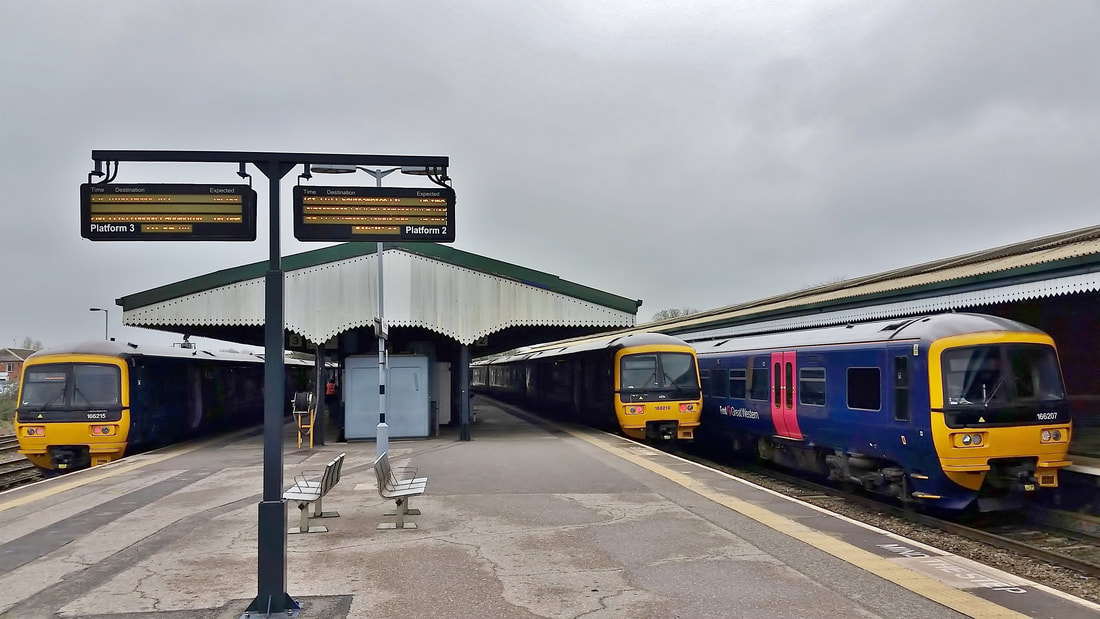
In contrast to the picture above - the modern image in 2018. Lucky? Friday 13th April 2018. Under a leaden sky three class 165 Turbos at Westbury at 1035am. 166215 on 2V88 0853 Weymouth-Gloucester, 166210 on 2C12 1025 Warminster-Westbury and 166207 on 2O86 0842 Gloucester-Weymouth. Just a few weeks ago these three trains would most likely have all been formed of class 150 units but, with 16 sets having now gone to Northern Rail this will no longer be the case and the Turbos are here to stay. Picture and caption copyright Guy Vincent - many thanks to Guy.
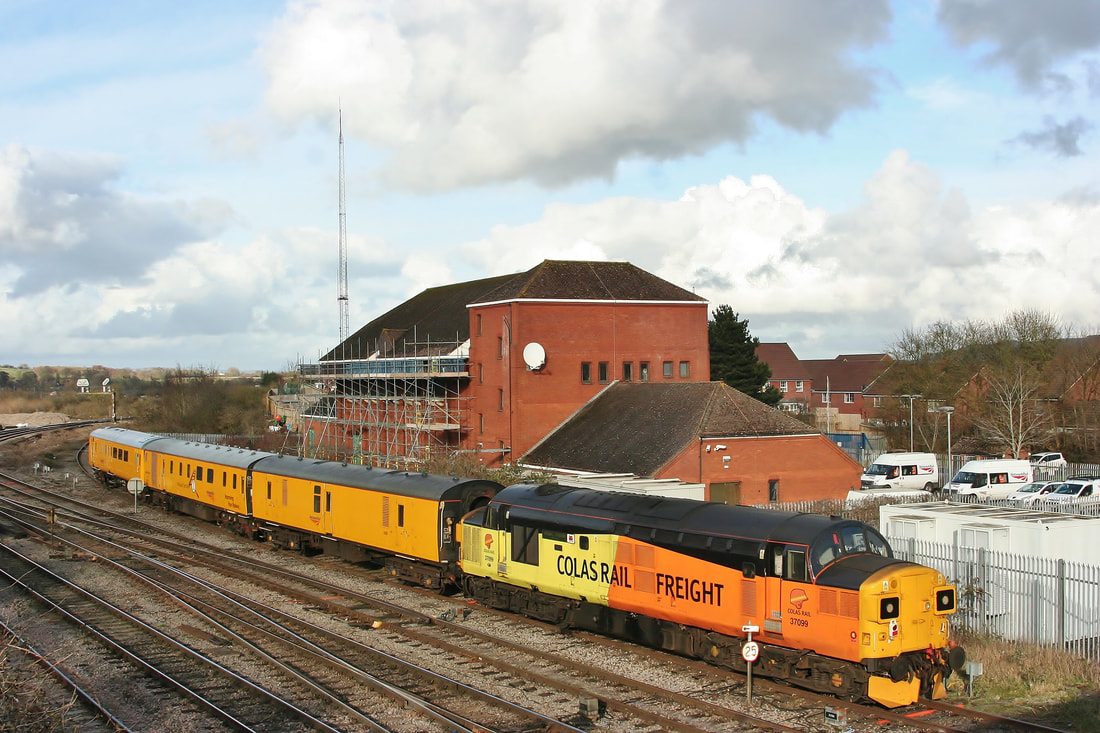
Westbury 37099 on return from its days work. ex 3Q14 Westbury 29th March 2018 Copyright Guy Vincent N.B. 37099 with it's three coach ultrasonic test train stabled in the 'Patney Siding' adjacent to Westbury North Junction and the 1981-built panel signal box where roofing repairs seem to be underway. A daytime trip from Westbury to Weymouth and return followed by a shorter spin-out to Thingley Junction and back via Melksham had just been concluded. The loco was delivered into service from English Electric's Vulcan Foundry, Newton-Le-Willows, as long ago as December 1962. Withdrawal by BR took place in March 1996 and then, following almost twenty years in private/preserved ownership status, it returned to the main line with current owners Colas Railfreight at the end of 2016. The loco worked over several of the country's heritage lines during it's time in preservation although it has yet to feature on any of the West Country branches.
A bit of steam

Castle class 7008 "Swansea Castle" with a mixed freight train in tow creeps past Westbury station on the 11th September 1964. Before about 1963 it was very unusual to see a Castle on a freight train (the driving wheels were too big for this kind of work). Towards the end of steam on the Western Region sheds were forced to turn out anything that could turn a wheel without leaking too much steam. 7008 was based at Old Oak Common at the time and was withdrawn from service the very same month, so this was one of its last trips. Copyright Mike Roach
Here are two interesting (at least I think so) pictures from Westbury which you may find interesting.
They show Standard 5 73018 with a freight standing in the up goods loop at Westbury station.
I have no exact idea of the date but my notes simply say "one of the very last freights to enter Westbury station". That would put it at 1967 - possibly March ? The last freights were 9th July I believe.
73018 was , at the time, a Guilford loco (withdrawn July 67) which makes sense.
The train clearly shows some 9-10 china clay wagons ahead of some ventilated vans (I think). My Uncle worked on the railway (based at Westbury). He feels that normally, full china clay trains worked up to Stoke via Bristol but occasionally via Castle Cary and Westbury(especially if the train was short). Empties generally came back to Cornwall via Bath, Trowbridge, Westbury etc. He feels that being a short train, it could have been terminated at Castle Cary and headed onwards (eventually) at the head of a perishables from Weymouth to the Midlands, hence the Standard which would have worked the perishables from Weymouth. That would likely explain the vans at the rear.
The train would have been worked onwards from Westbury by diesel but at that time the steam engine would likely have worked light engine on through Trowbridge to turn at Bradford Junction - Westbury turntable being out of use by that time.
Anyway, at age 11(ish) I knew little of this but was fortunate to get the photos. My friend Tony has just crept into one of the pictures.
Hopefully this will be of interest (especially as its a china clay train).
I'd be interested in other people's comments.
Regards
Martin Scane
They show Standard 5 73018 with a freight standing in the up goods loop at Westbury station.
I have no exact idea of the date but my notes simply say "one of the very last freights to enter Westbury station". That would put it at 1967 - possibly March ? The last freights were 9th July I believe.
73018 was , at the time, a Guilford loco (withdrawn July 67) which makes sense.
The train clearly shows some 9-10 china clay wagons ahead of some ventilated vans (I think). My Uncle worked on the railway (based at Westbury). He feels that normally, full china clay trains worked up to Stoke via Bristol but occasionally via Castle Cary and Westbury(especially if the train was short). Empties generally came back to Cornwall via Bath, Trowbridge, Westbury etc. He feels that being a short train, it could have been terminated at Castle Cary and headed onwards (eventually) at the head of a perishables from Weymouth to the Midlands, hence the Standard which would have worked the perishables from Weymouth. That would likely explain the vans at the rear.
The train would have been worked onwards from Westbury by diesel but at that time the steam engine would likely have worked light engine on through Trowbridge to turn at Bradford Junction - Westbury turntable being out of use by that time.
Anyway, at age 11(ish) I knew little of this but was fortunate to get the photos. My friend Tony has just crept into one of the pictures.
Hopefully this will be of interest (especially as its a china clay train).
I'd be interested in other people's comments.
Regards
Martin Scane
Tony Hill adds :- Almost certainly the sheeted open wagons are of BALL clay from Furzebrook sidings on the Swanage branch, on probably an Eastleigh to Westbury/ S.T. Jn freight en route to the Staffordshire potteries.
By this date other than seasonal Channel Island Tomato/ perishable trains from Weymouth (like the two that ran on last day of Southern steam on 9/7/67 ) I am sure there were no regular freight trains between Dorchester and Yeovil PM. Many thanks Tony.
Westbury Shed
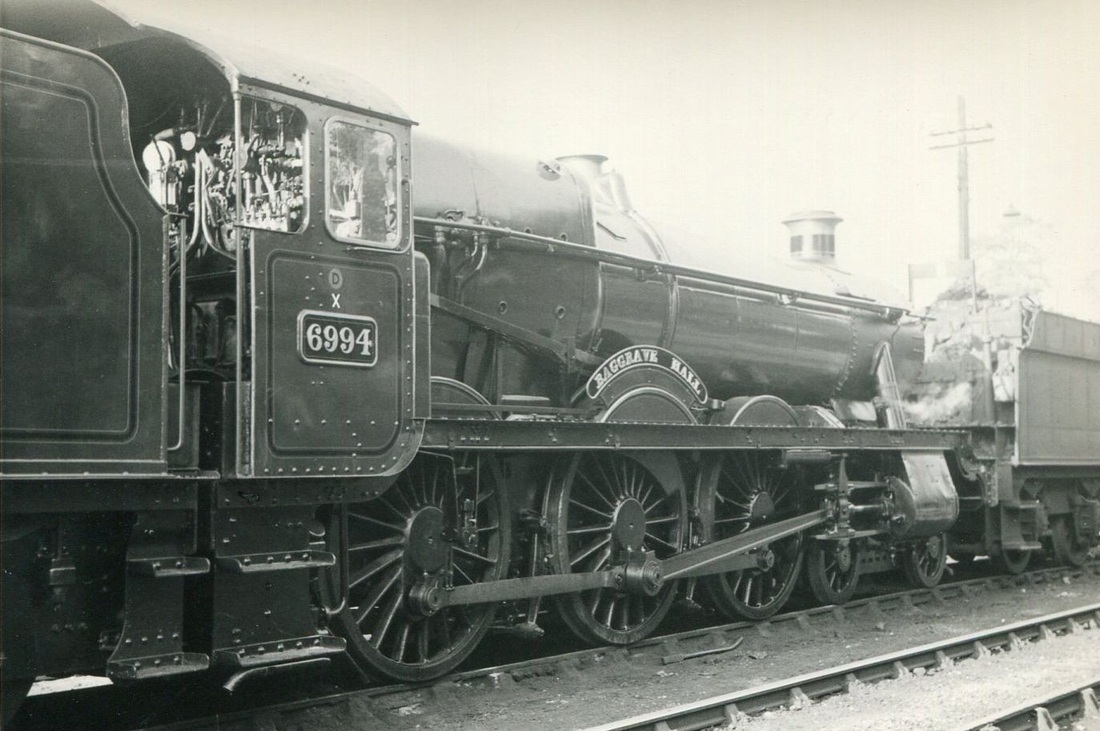
Modified Hall Class loco 6994 Baggrave Hall at Westbury shed. The loco was shedded at Shrewsbury at the time and was withdrawn just 14 months later in November 1964. It was extremely rare to see a clean steam loco at the time, except on railtours, as normal cleaning had ceased. It is thought that the loco had just been out-shopped by Swindon Works; but can anyone confirm that please. This picture dated 13th September 1963 - Copyright Mike Roach

Martin adds a note :- This photo is dated 9/5/64 and shows 2-8-2 T 7249 at the head of a long row of engines on Westbury shed. 7249 was a Cardiff engine the (East Dock) which makes sense. Westbury shed was pretty busy then (those were the days) but never presented any problems when we fancied a wander around (which was fairly often).
Regards Martin Many thanks Martin
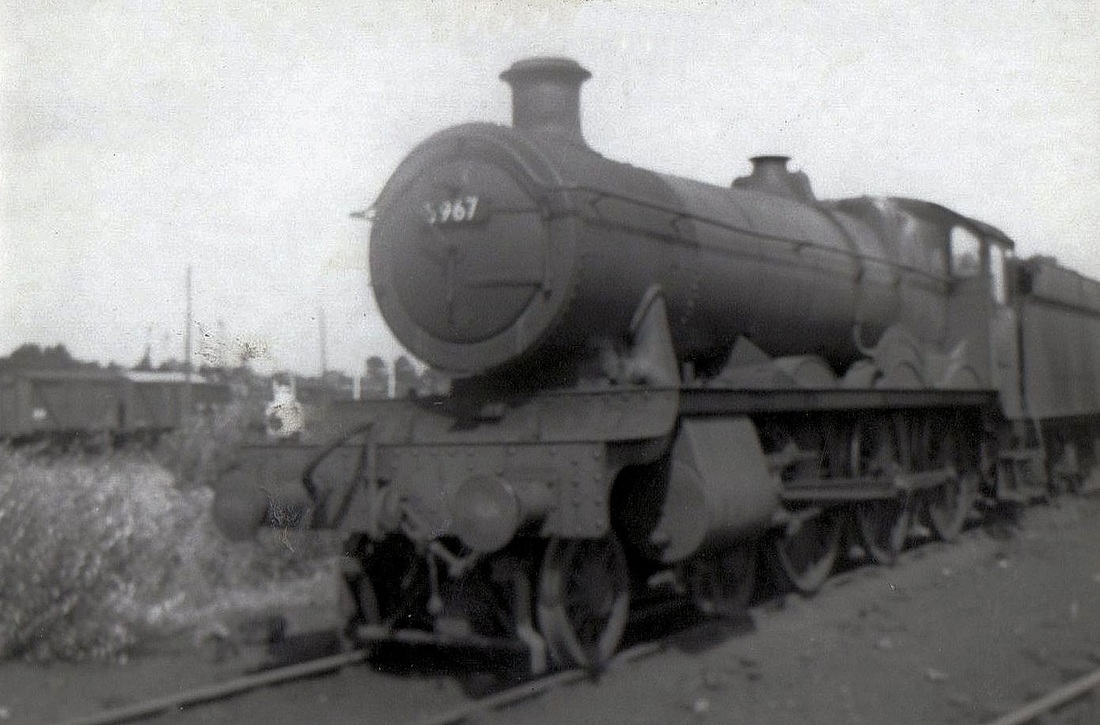
5967 Bickmarsh Hall standing silently no doubt having the day off, somewhere in the main yard. N.B. Noting the wisp of steam near the safety valve one wonders if this loco was on standby in case of failure of a main line diesel? The position of the oil lamp on the buffer beam indicates that it was last used or going to be used on a Mineral or empty wagon train!! A 1960's photograph from Adrian King Copyright
Heywood Road and Hawkridge Junctions
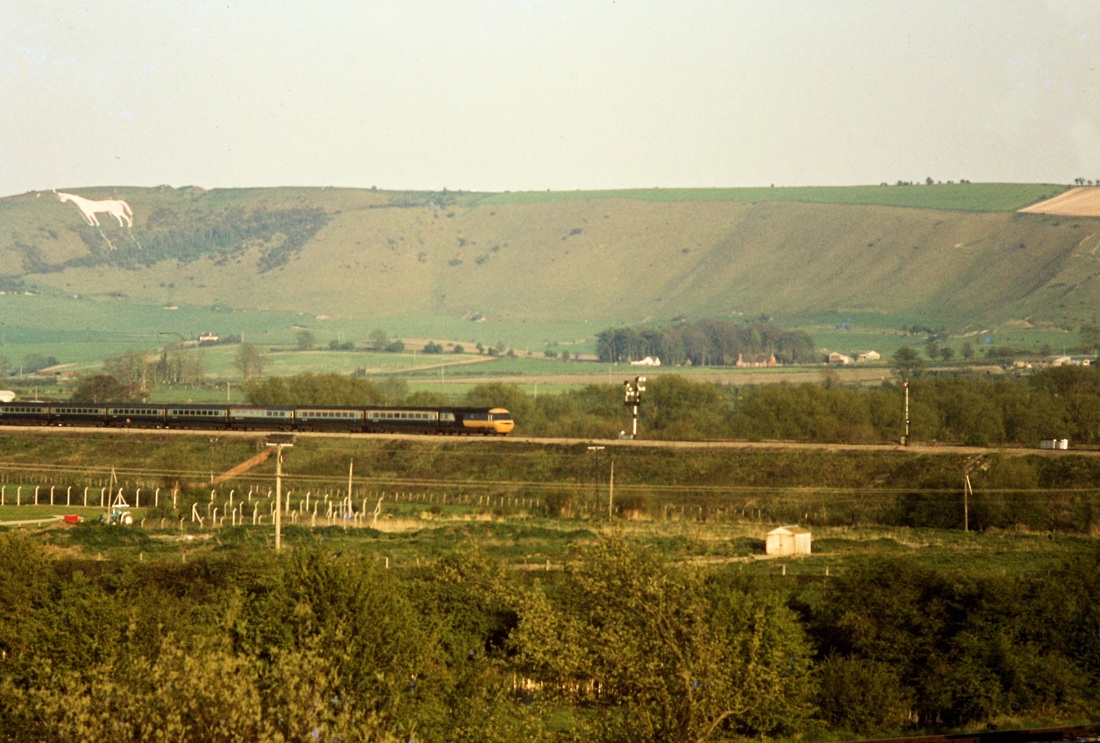
17th April 1981 and an HST approaches Heywood Road Junction. The signals are set for it to run into the station at Westbury. Copyright Roger Winnen
The white horse located on the edge of Bratton Downs and lying just below an Iron Age hill fort, it is the oldest of several white horses carved in Wiltshire. It was restored in 1778, an action which may have obliterated a previous horse which had occupied the same slope. A contemporary engraving of the 1760s appears to show a horse facing in the opposite direction, and also rather smaller than the present figure. However, there is at present no documentary or other evidence for the existence of a chalk horse at Westbury before the year 1742. From Wikipedia, the free encyclopedia
Westbury Avoiding line
Penleigh Park Footpath Crossing Guy Vincent
The Westbury Avoiding line passes to the south of the station and yards and runs from Heywood Road Junction (east of Westbury) to Fairwood Junction (to the west). There is a public foot crossing on the line close to the Penleigh Park housing estate and over the years countless enthusiasts have doubtless made the short journey from the station to this location to see trains not booked to call at Westbury pass by at high speed. I first discovered 'the fly-line' as it was described to me back in 1976 and took a few Instamatic colour prints of trains there.
Here are some images: 1) from the hot summer of August 1976 with D1048 'Western Lady' on an up express and 2) from today, 3rd August 2017, showing 975025 'Caroline' propelled by privately owned but DRS-operated 37403 'Isle of Mull' on a Willesden-Exeter-Willesden Network Rail Inspection run. The fields beyond the railway are due to disappear under 300 houses in the next year or two. Easy access has already been denied to the station from this area by the blocking-up of one of the footpaths. As part of the development a bridge will be built. This will take a new road from Penleigh over the railway and across to Westbury station. The crossing itself has recently been equipped with red & green lights and audible 'yodel' alarms activated by approaching trains (Images 3 & 4).
Images 5 and 6 show the original cast iron GWR Trespass notices that were in place from 1933 when the line was opened until the late 1980s when they were removed.
Guy V
The Westbury Avoiding line passes to the south of the station and yards and runs from Heywood Road Junction (east of Westbury) to Fairwood Junction (to the west). There is a public foot crossing on the line close to the Penleigh Park housing estate and over the years countless enthusiasts have doubtless made the short journey from the station to this location to see trains not booked to call at Westbury pass by at high speed. I first discovered 'the fly-line' as it was described to me back in 1976 and took a few Instamatic colour prints of trains there.
Here are some images: 1) from the hot summer of August 1976 with D1048 'Western Lady' on an up express and 2) from today, 3rd August 2017, showing 975025 'Caroline' propelled by privately owned but DRS-operated 37403 'Isle of Mull' on a Willesden-Exeter-Willesden Network Rail Inspection run. The fields beyond the railway are due to disappear under 300 houses in the next year or two. Easy access has already been denied to the station from this area by the blocking-up of one of the footpaths. As part of the development a bridge will be built. This will take a new road from Penleigh over the railway and across to Westbury station. The crossing itself has recently been equipped with red & green lights and audible 'yodel' alarms activated by approaching trains (Images 3 & 4).
Images 5 and 6 show the original cast iron GWR Trespass notices that were in place from 1933 when the line was opened until the late 1980s when they were removed.
Guy V
Beyond, and east of, Heywood Road Junction lay a large cement works, a very noticeable feature of this is/was a very tall chimney which emitted a while plume visible for many miles around. This was scheduled for demolition on the 18th September 2016 at 06.45.
When its gone, its gone!
The end of Westbury Chimney.
The end of Westbury Chimney.
Morning Keith,
Today, Sunday 18th September was anything but a day of rest for the thousands of spectators who invaded Westbury and the surrounding hillside to witness the demolition of the 51 year-old chimney at the former Blue Circle (later Lafarge) cement works situated to the east of the town below the famous White Horse. The demolition was scheduled for 07.00hrs but with local and national media/social media having been widely publicising the event large crowds were naturally to be expected. My wife and I arrived at 05.10 to find hundreds already gathered and for the next 80 minutes a constant stream of cars, vans, campers, 4x4s motorcycles and, as it got light, pedal cycles continued to slowly make their way along the narrow single track road to fill every available space on the top of the hill, the occupants then making their way across to the edge of the site overlooking both the cement works and a large area of west Wiltshire. At 0655am as daylight broke silence gradually descended as the warning siren indicated only 5 minutes to go. Then at 07.00hrs and ten seconds a large muffled boom was immediately followed by the 400 foot stack toppling in a north westerly direction to come crashing down exactly as planned in a large plume of dust, the show being all but over only twenty seconds after it started. As soon as the dust cloud started to rise we were in the car and away as quickly as we could, leaving thousands of others with the same idea to follow on...
The Westbury chimney demolition had mixed opinions, some were happy to see it go as it was a source of controversy for many years due to the smoke and dust pollution it was claimed it produced, a final row over the increased burning of refuse and, more so old tyres, may possibly have helped seal the fate of the plant as it is located in an area of outstanding natural beauty. However, while it was open the works provided much needed employment and benefited the local economy. At the time the works opened in 1962 the railway, another major employer, was in decline with the loss of dozens of firemen's jobs and the impending Beeching report seeing many stations and several local branch lines closed. Indeed some men transferred to Blue Circle from British Railways at Westbury and later redundancies saw more railwaymen join the expanding Somerset Quarries such as Yeomans at Merehead and ARC at Whatley. Both these firms now have a major rail presence at Westbury as many will know. The chimney was a notable landmark for just over half a century, visible from west country-bound trains as far away as Crookwood east of Devizes and from all other lines approaching Westbury. Many will miss its towering presence as their HST or, soon, Bi-Mode IEP whisks them along the main Paddington-Penzance railway line through the Westbury area.
Guy Vincent 18.09.2016
Thank you very much indeed for your article detailing not only the destruction of a 'local monument' but how employment has changed as the years roll by.
Today, Sunday 18th September was anything but a day of rest for the thousands of spectators who invaded Westbury and the surrounding hillside to witness the demolition of the 51 year-old chimney at the former Blue Circle (later Lafarge) cement works situated to the east of the town below the famous White Horse. The demolition was scheduled for 07.00hrs but with local and national media/social media having been widely publicising the event large crowds were naturally to be expected. My wife and I arrived at 05.10 to find hundreds already gathered and for the next 80 minutes a constant stream of cars, vans, campers, 4x4s motorcycles and, as it got light, pedal cycles continued to slowly make their way along the narrow single track road to fill every available space on the top of the hill, the occupants then making their way across to the edge of the site overlooking both the cement works and a large area of west Wiltshire. At 0655am as daylight broke silence gradually descended as the warning siren indicated only 5 minutes to go. Then at 07.00hrs and ten seconds a large muffled boom was immediately followed by the 400 foot stack toppling in a north westerly direction to come crashing down exactly as planned in a large plume of dust, the show being all but over only twenty seconds after it started. As soon as the dust cloud started to rise we were in the car and away as quickly as we could, leaving thousands of others with the same idea to follow on...
The Westbury chimney demolition had mixed opinions, some were happy to see it go as it was a source of controversy for many years due to the smoke and dust pollution it was claimed it produced, a final row over the increased burning of refuse and, more so old tyres, may possibly have helped seal the fate of the plant as it is located in an area of outstanding natural beauty. However, while it was open the works provided much needed employment and benefited the local economy. At the time the works opened in 1962 the railway, another major employer, was in decline with the loss of dozens of firemen's jobs and the impending Beeching report seeing many stations and several local branch lines closed. Indeed some men transferred to Blue Circle from British Railways at Westbury and later redundancies saw more railwaymen join the expanding Somerset Quarries such as Yeomans at Merehead and ARC at Whatley. Both these firms now have a major rail presence at Westbury as many will know. The chimney was a notable landmark for just over half a century, visible from west country-bound trains as far away as Crookwood east of Devizes and from all other lines approaching Westbury. Many will miss its towering presence as their HST or, soon, Bi-Mode IEP whisks them along the main Paddington-Penzance railway line through the Westbury area.
Guy Vincent 18.09.2016
Thank you very much indeed for your article detailing not only the destruction of a 'local monument' but how employment has changed as the years roll by.
On the 31st March 2016 (note the date) an entry on Google suggested that the chimney had been purchased as a monument and it's height would be increased slightly to beat that of Salisbury Cathedral. A circular viewing platform would be constructed around the structure which could be moved up and down under power (as in similar attractions elsewhere) and would provide superb views around Wiltshire. A glimmer of hope maybe but what was the next day - I was fooled for a moment!! KJ
